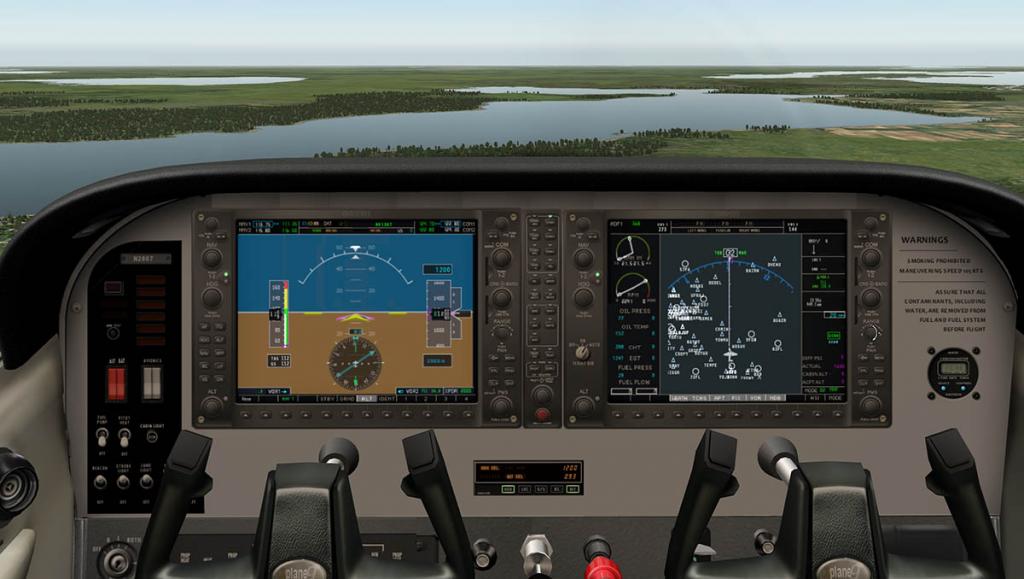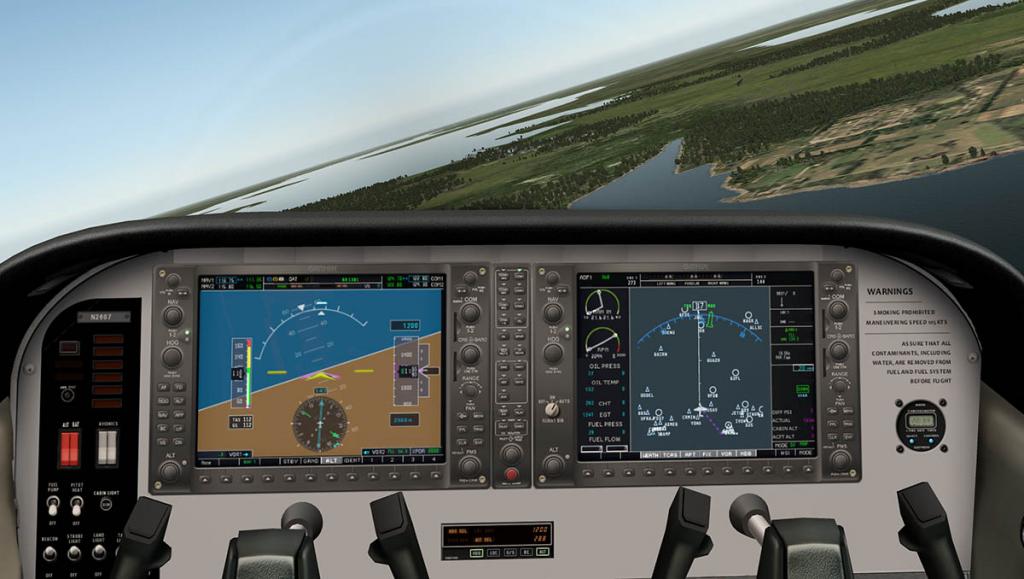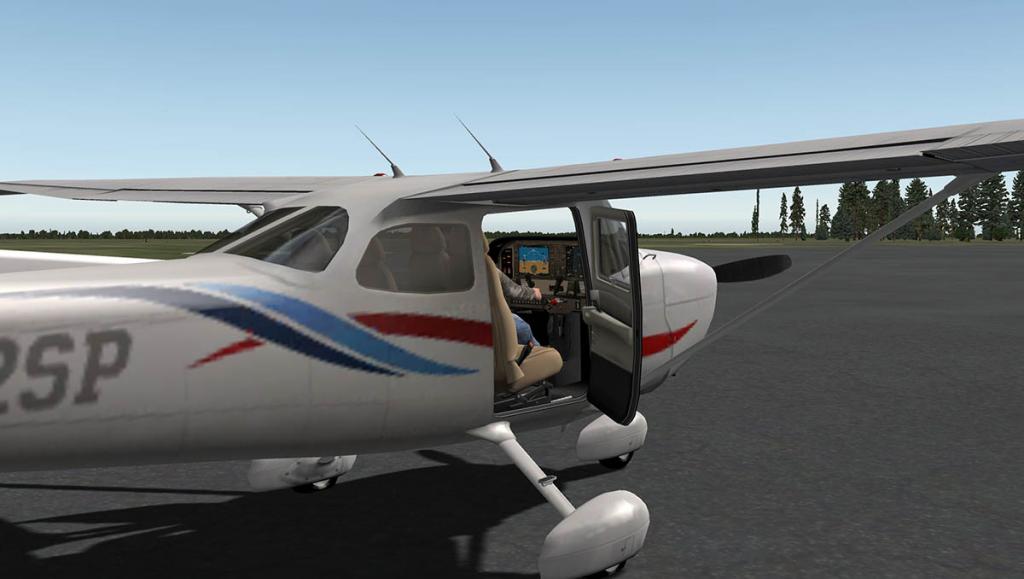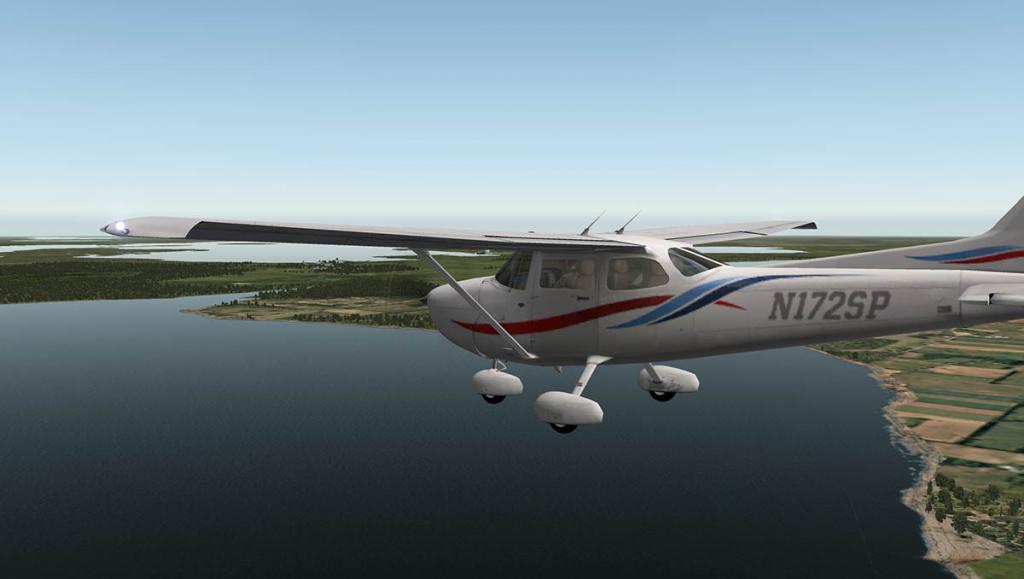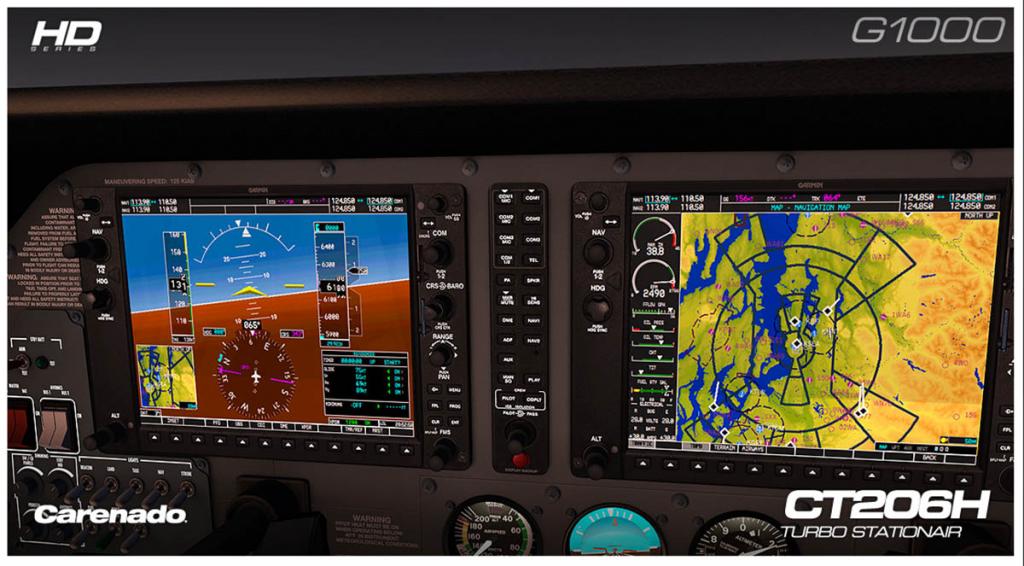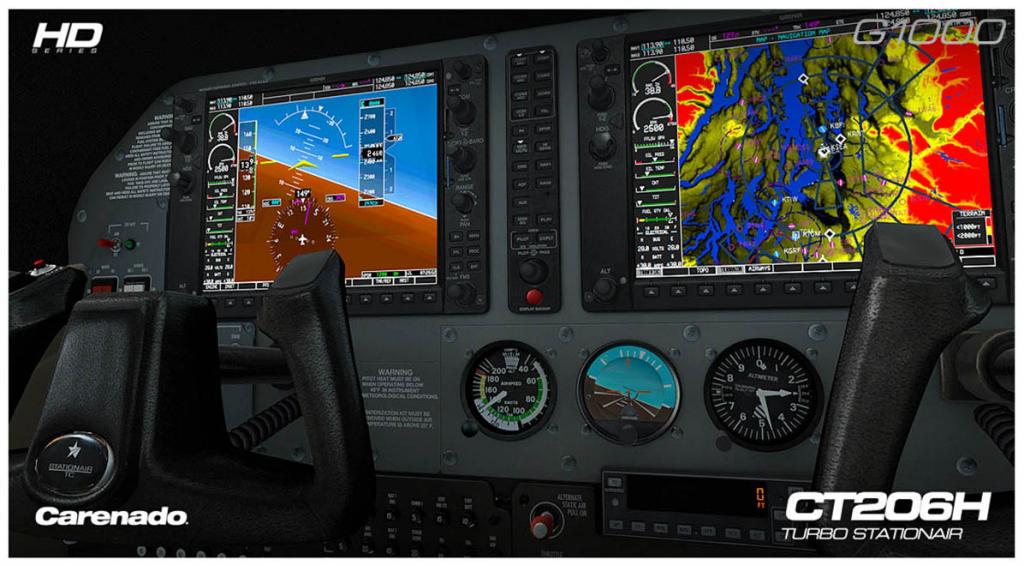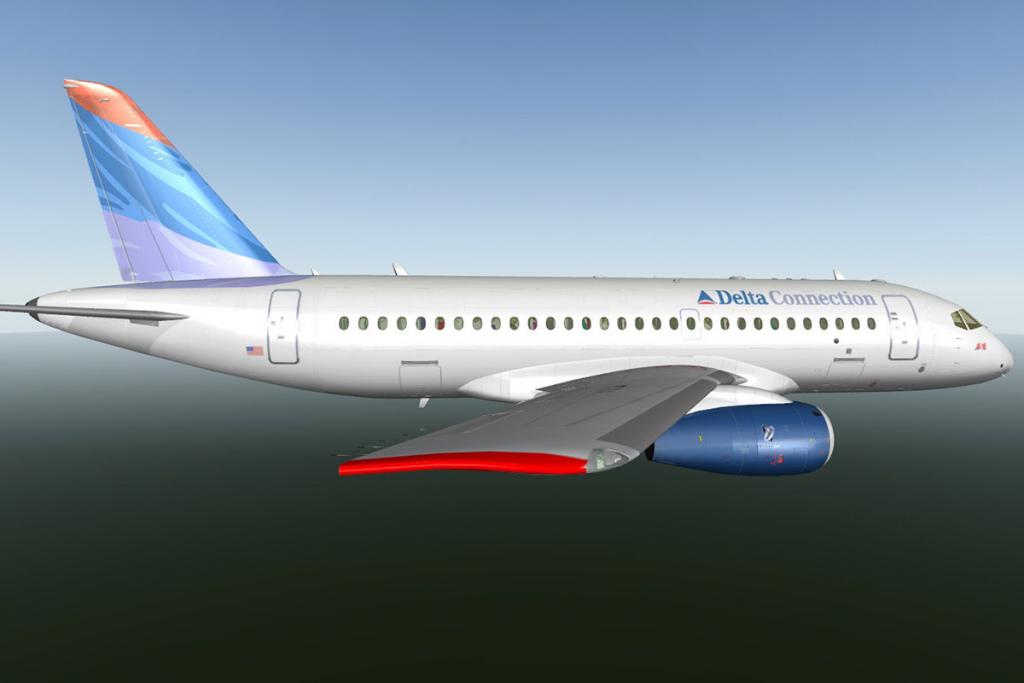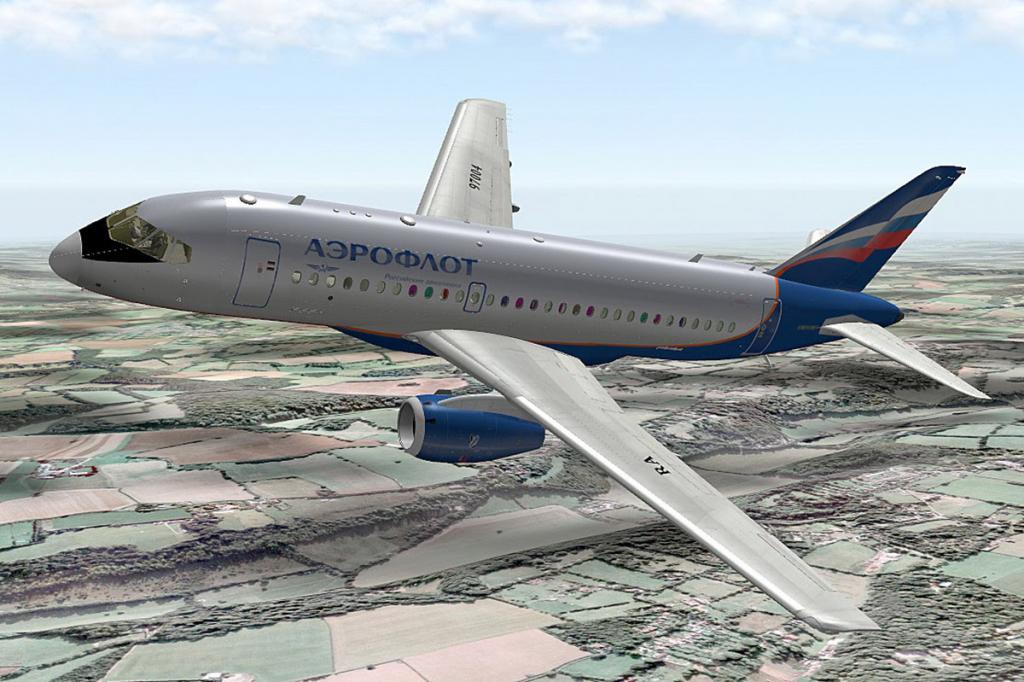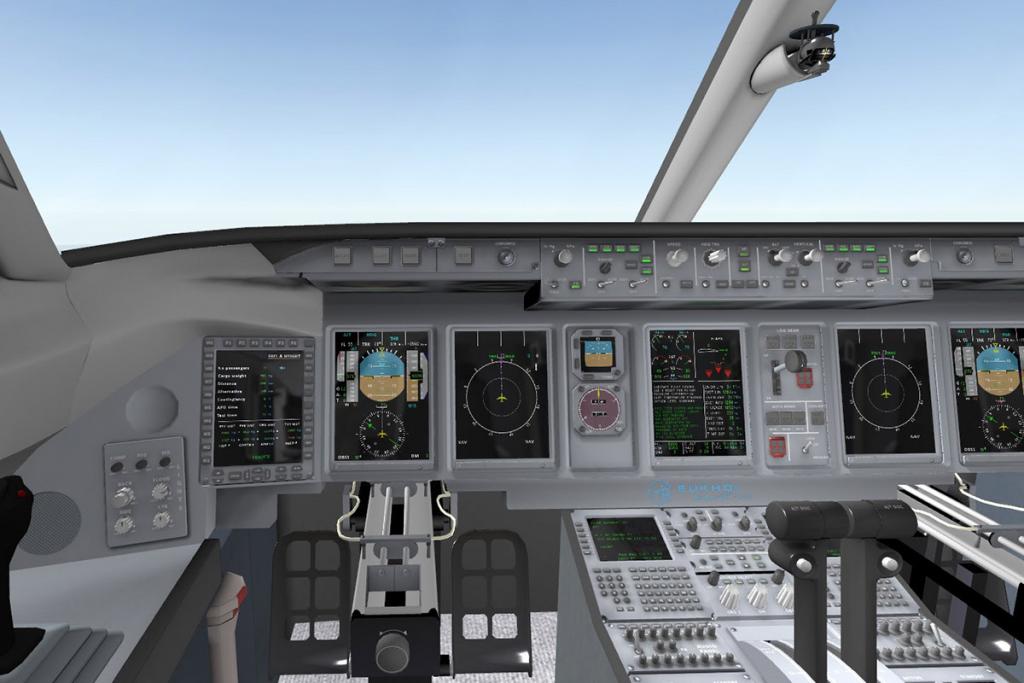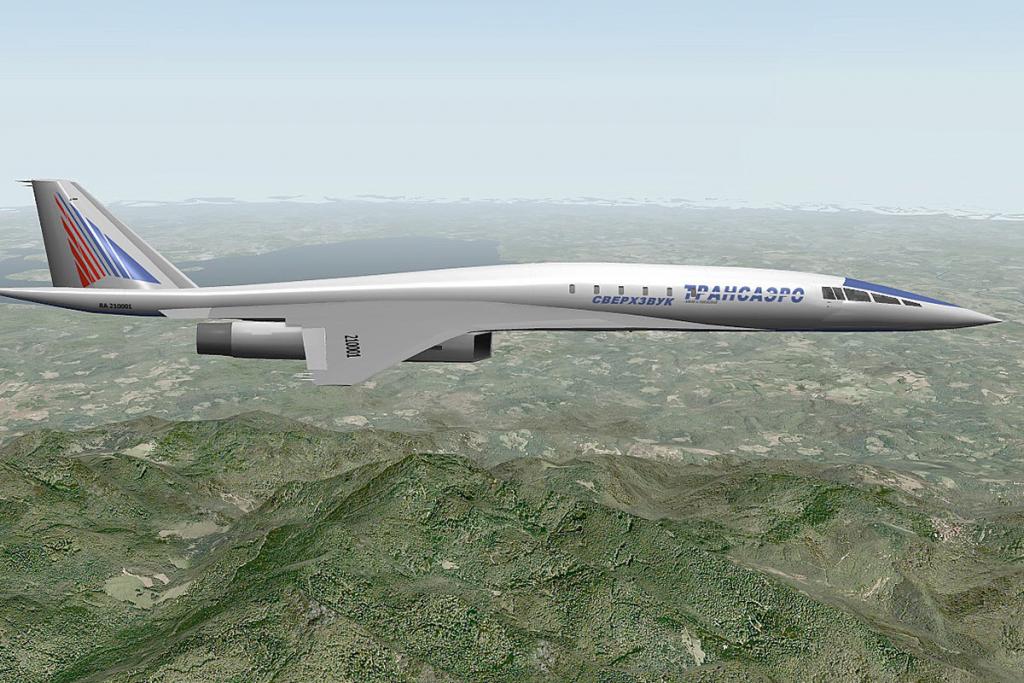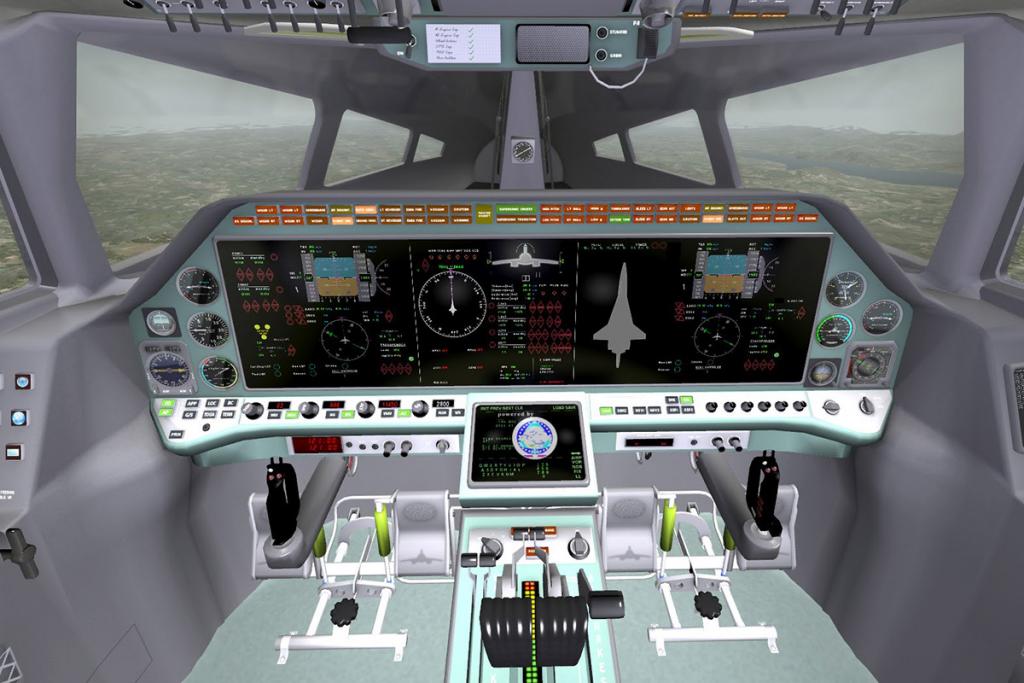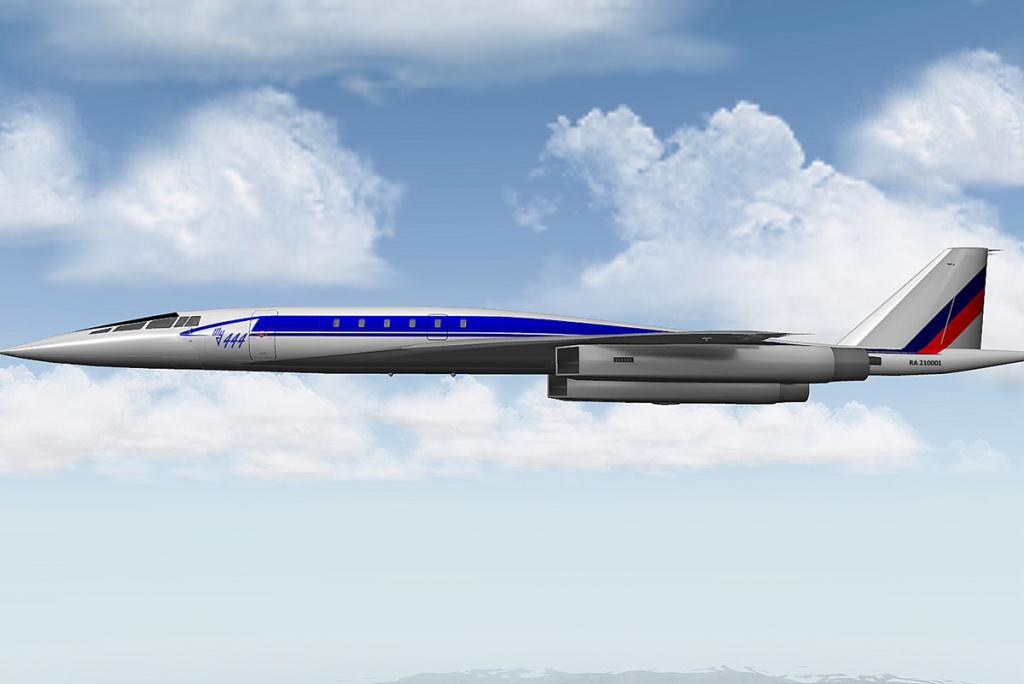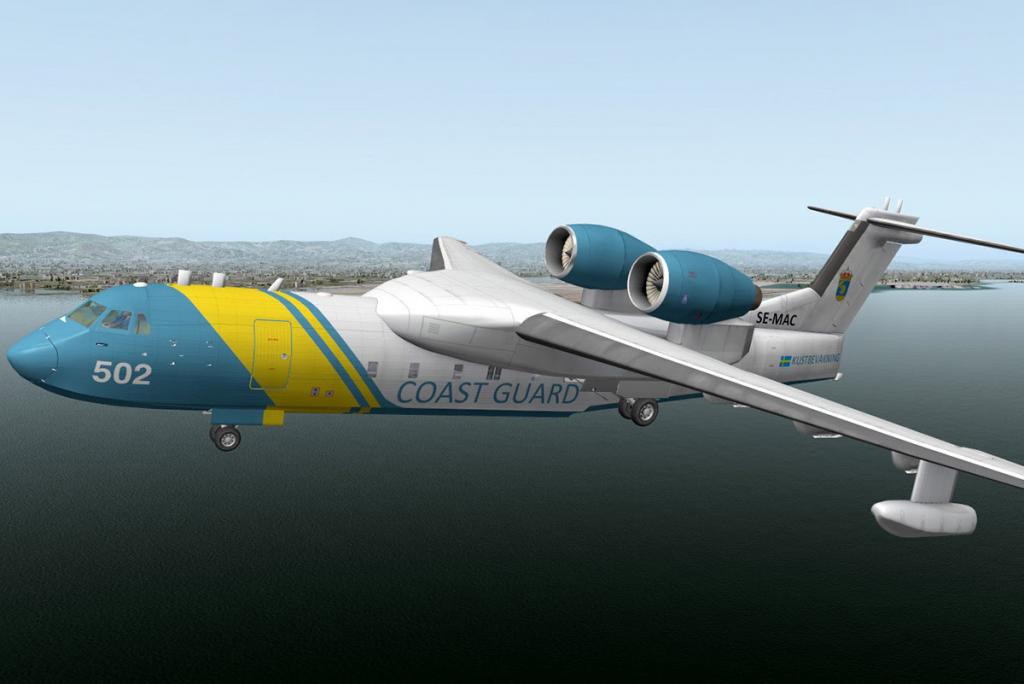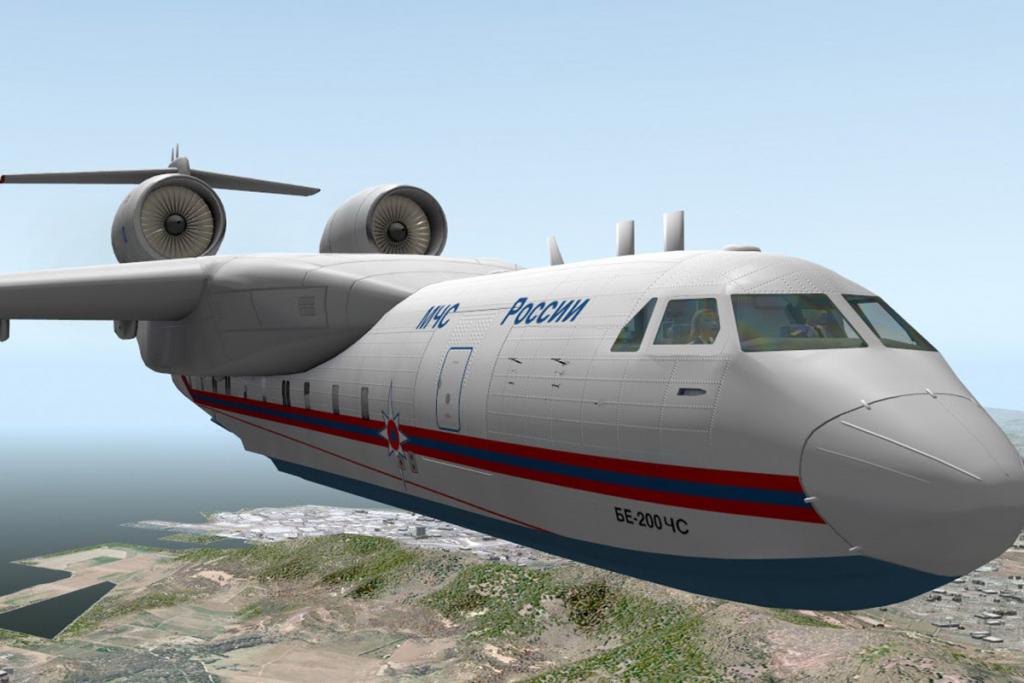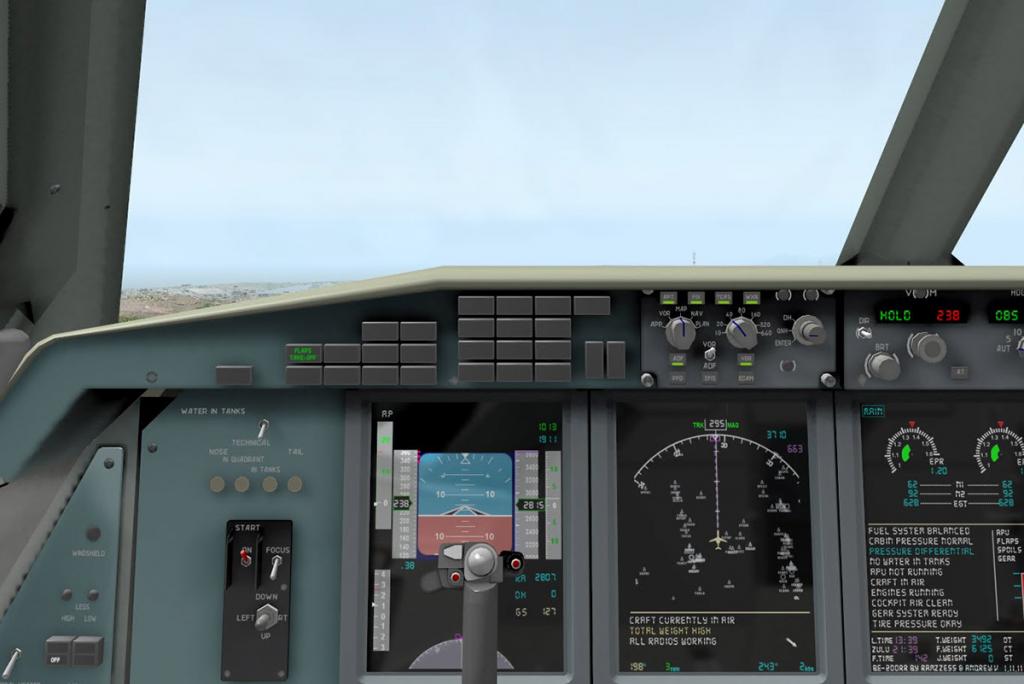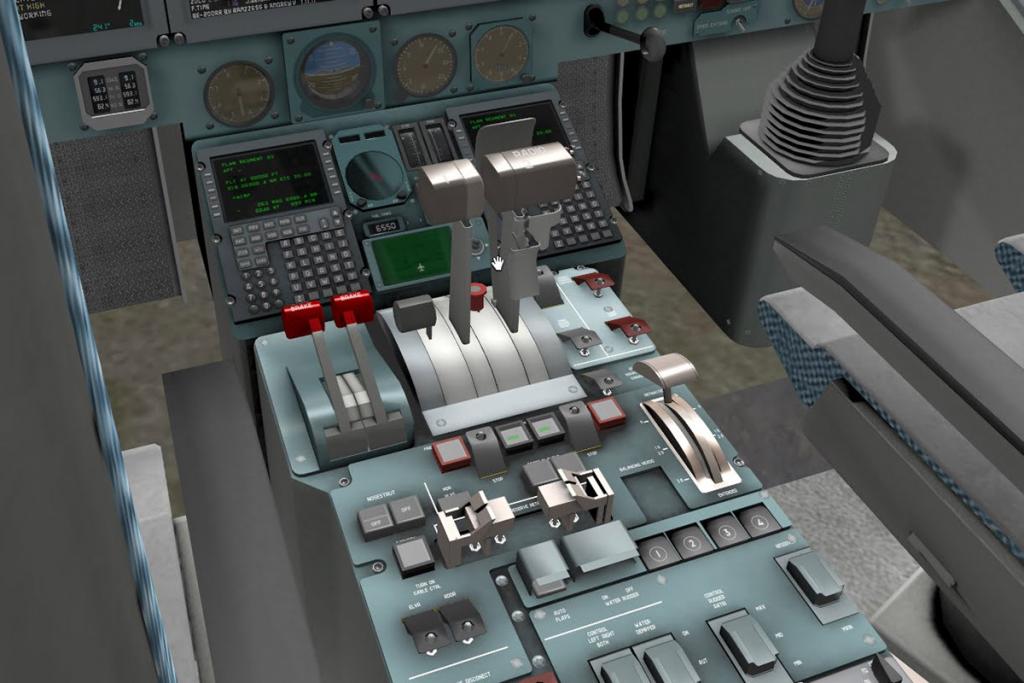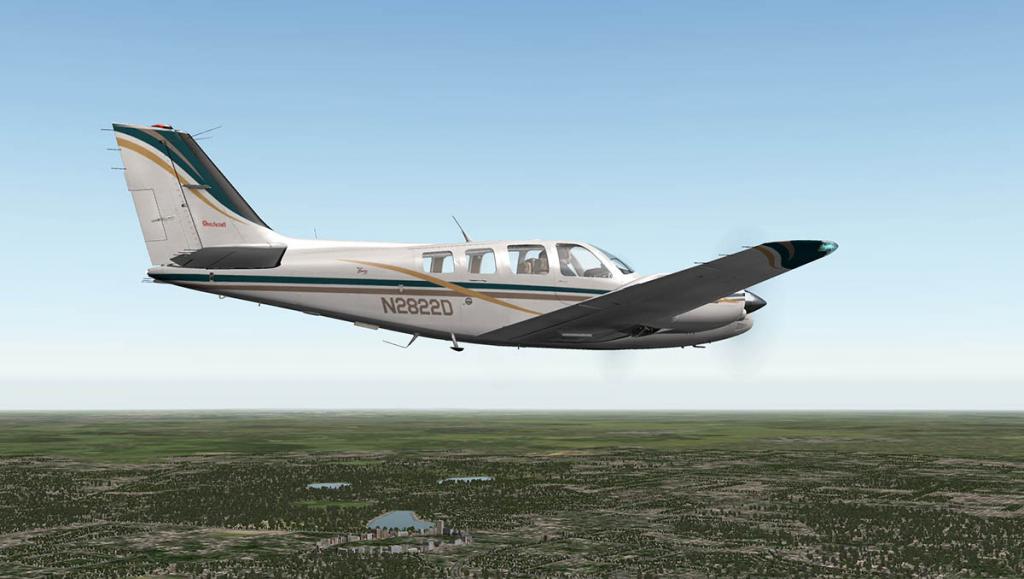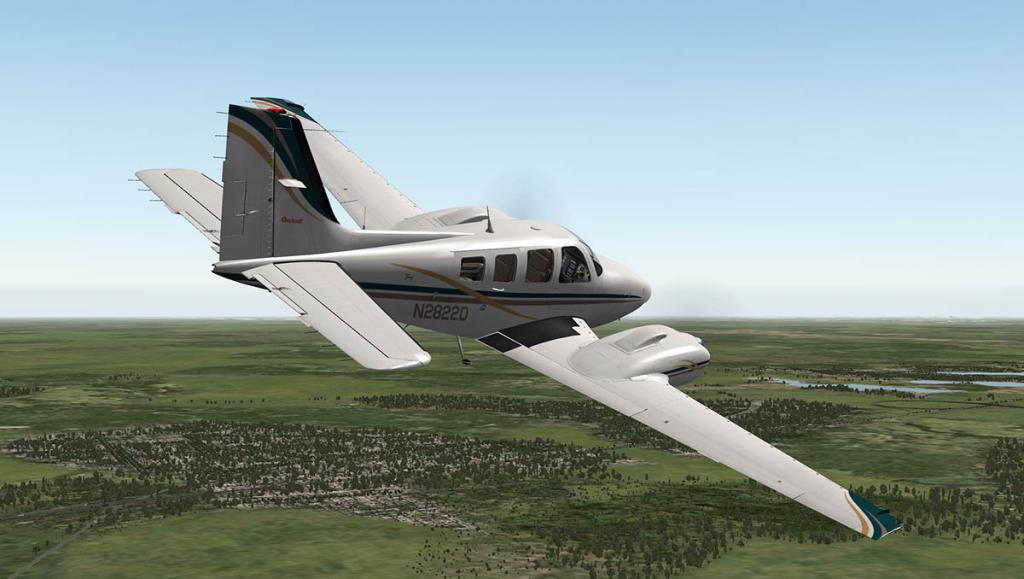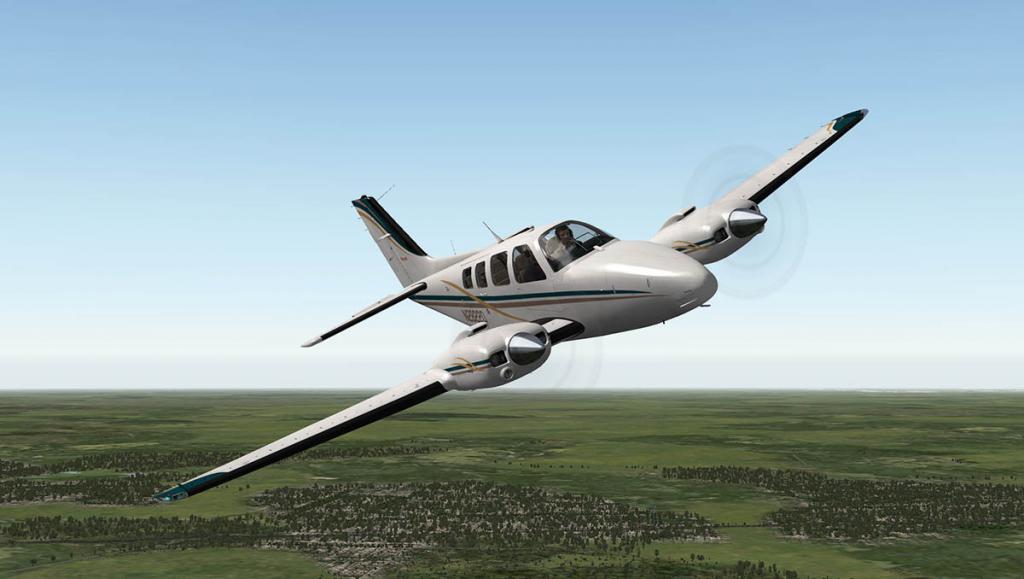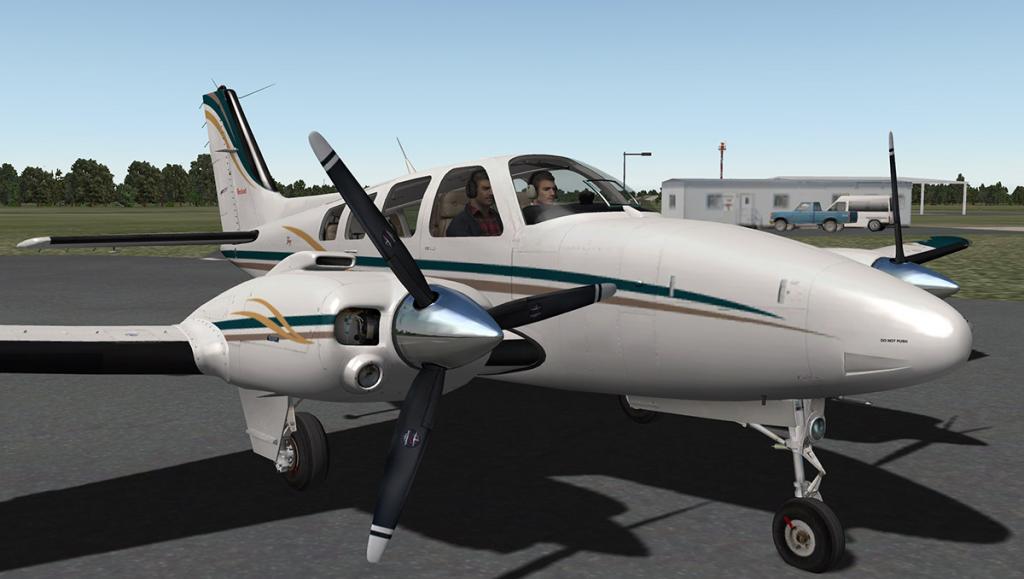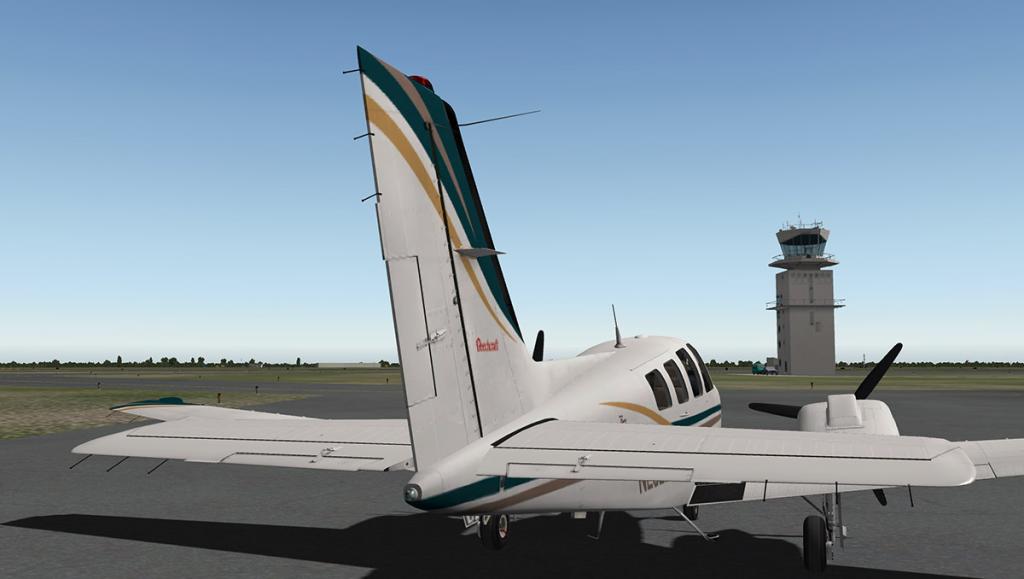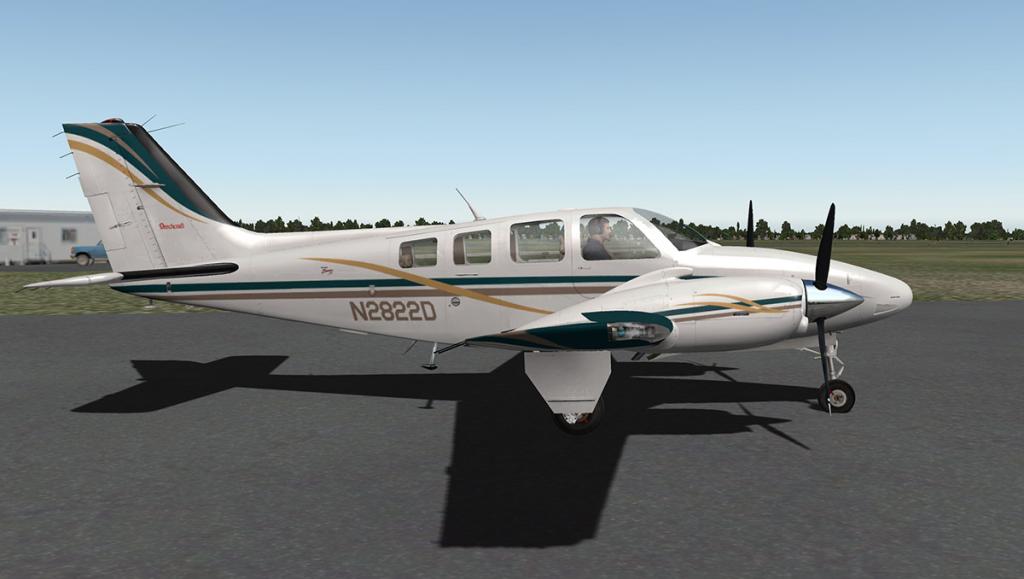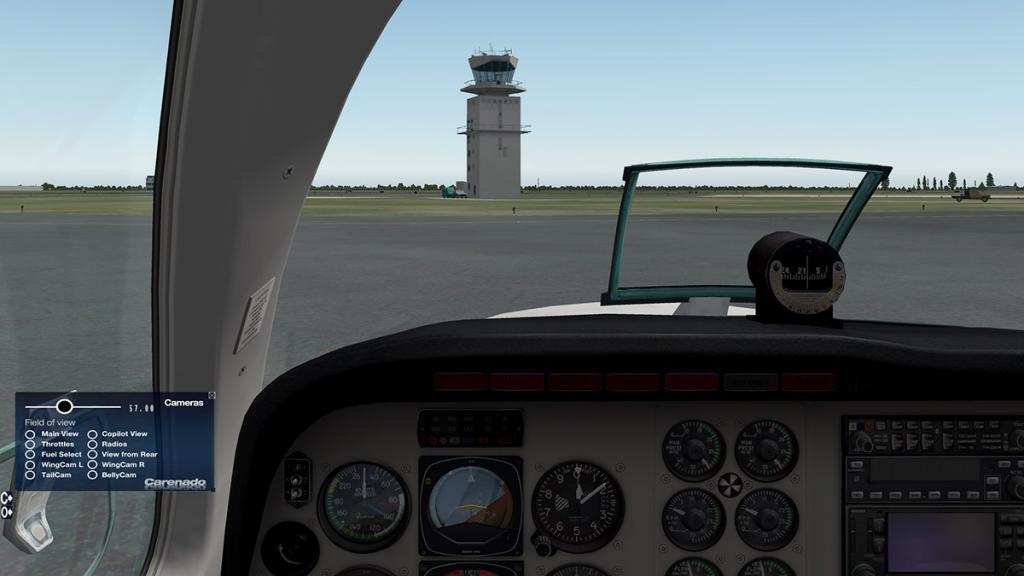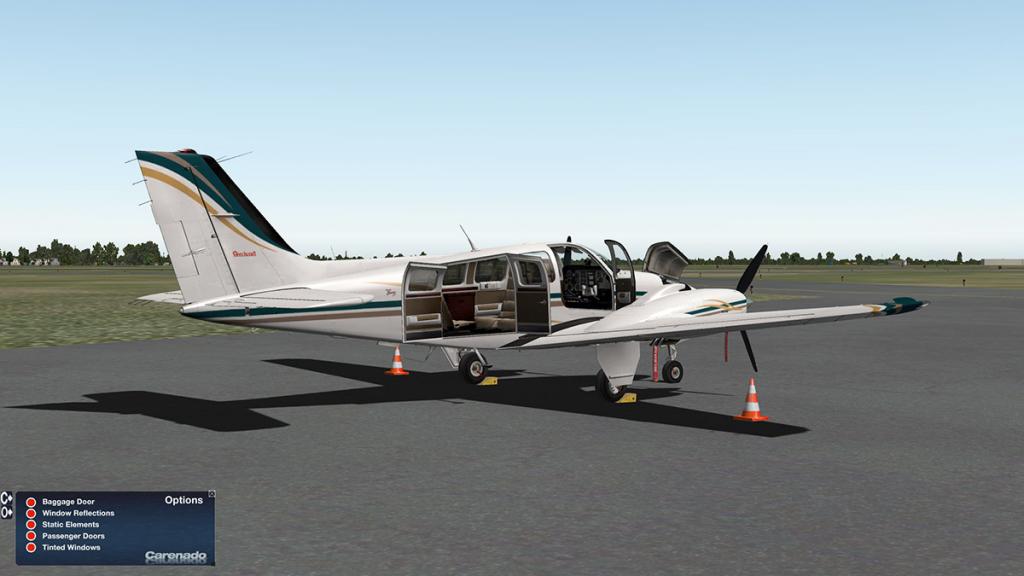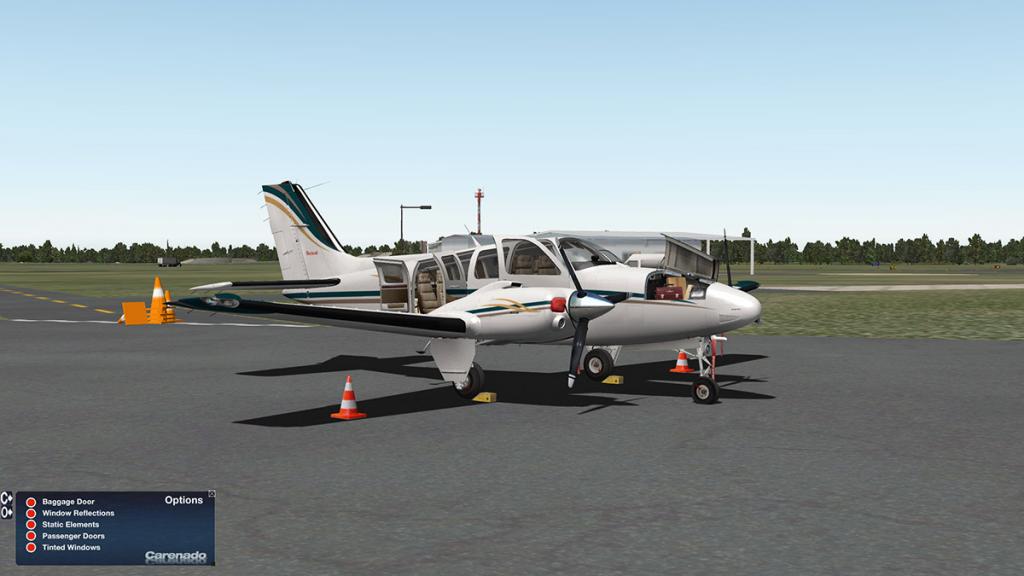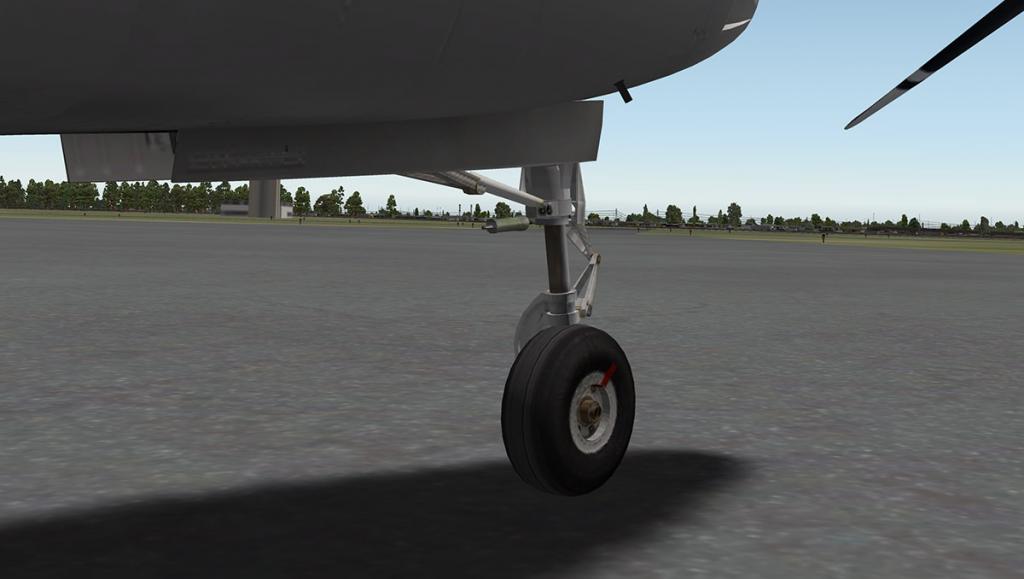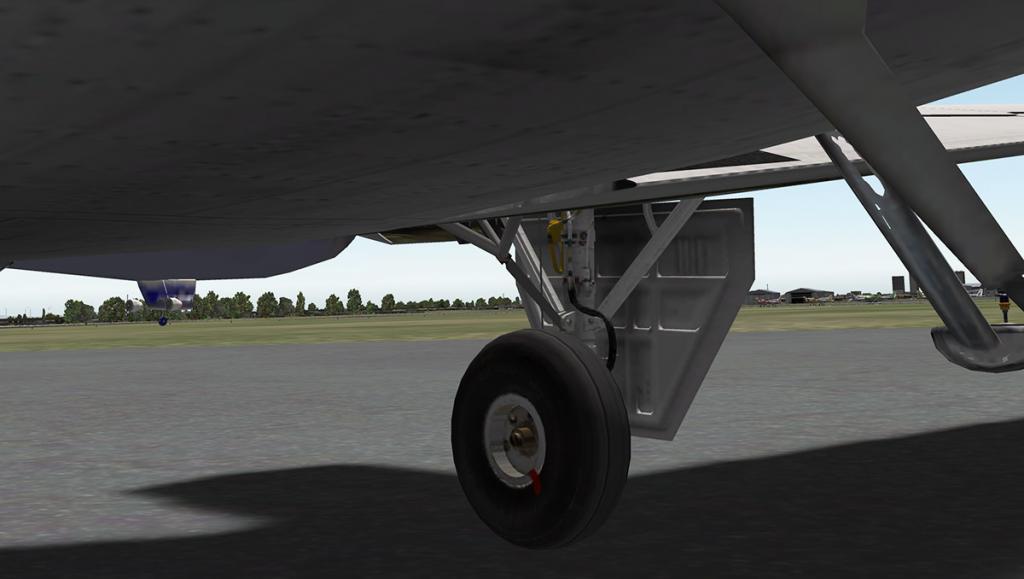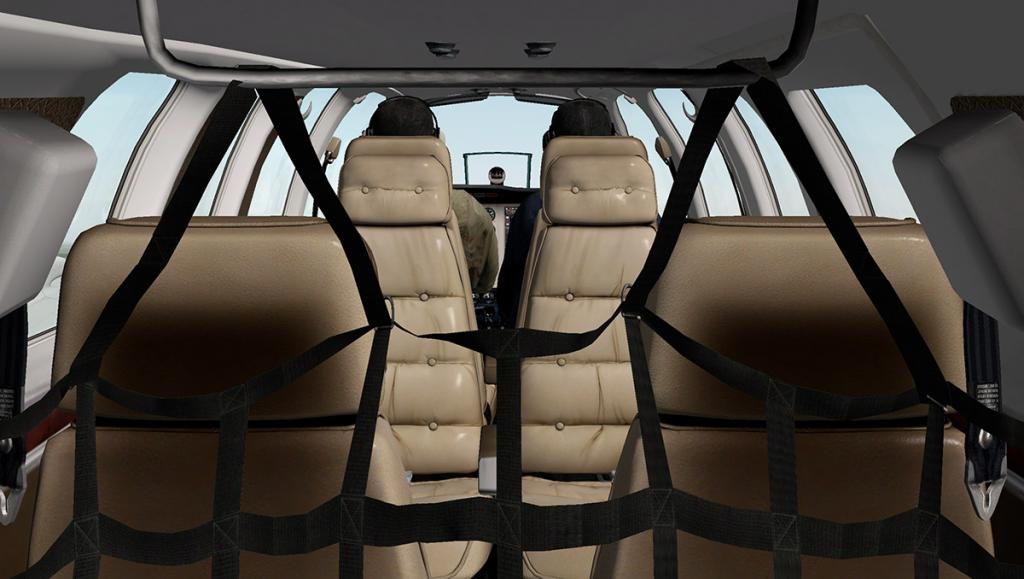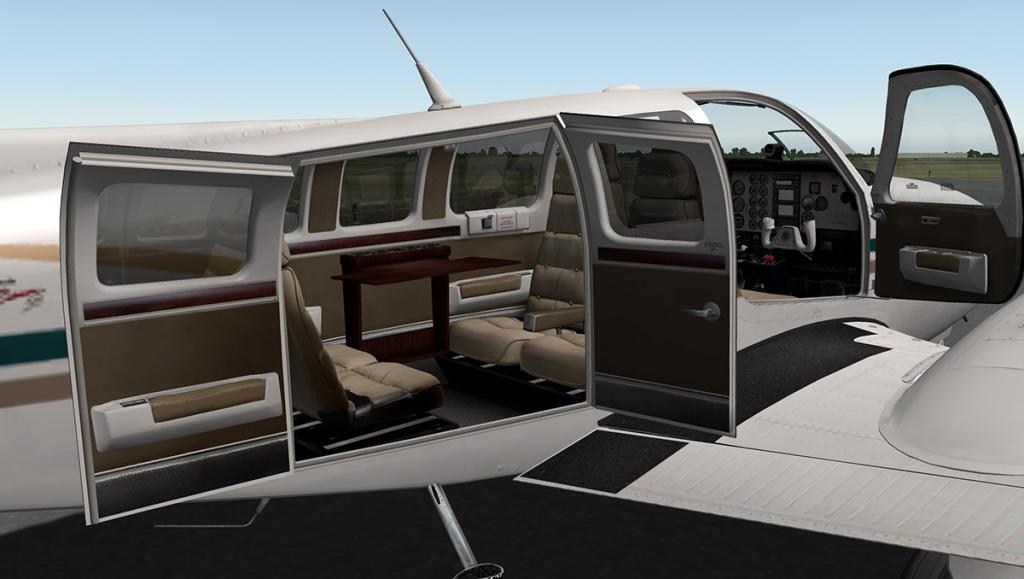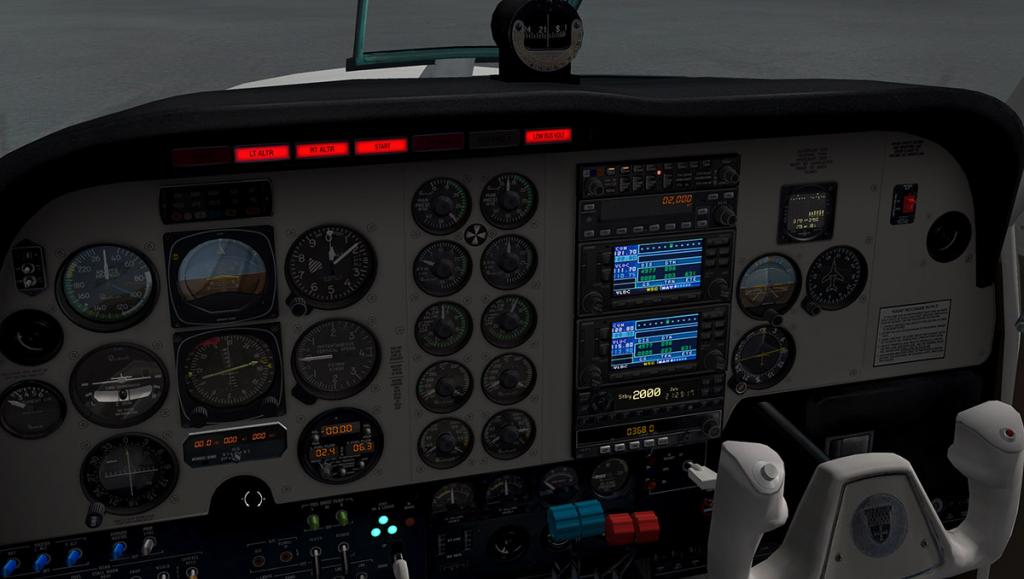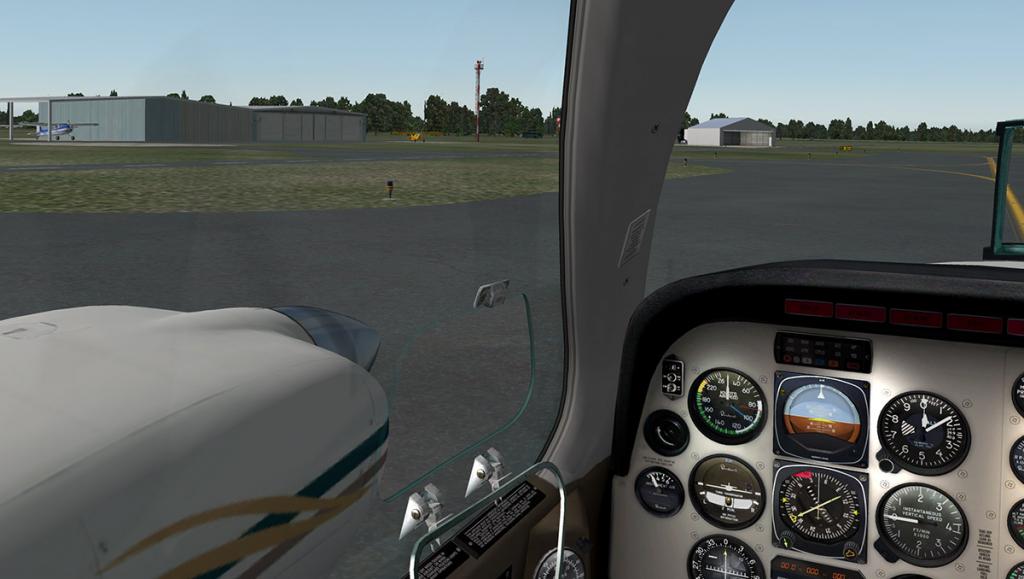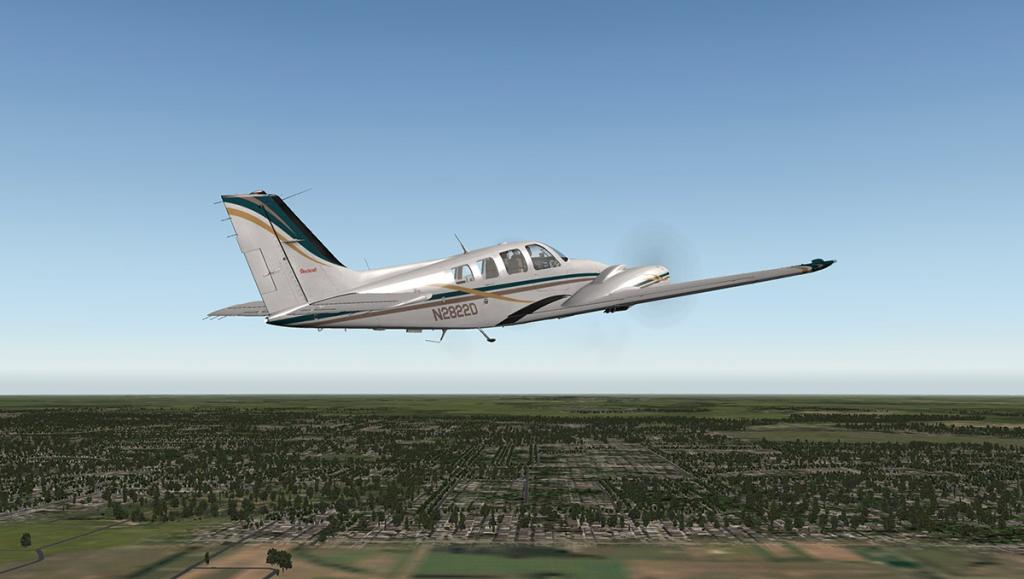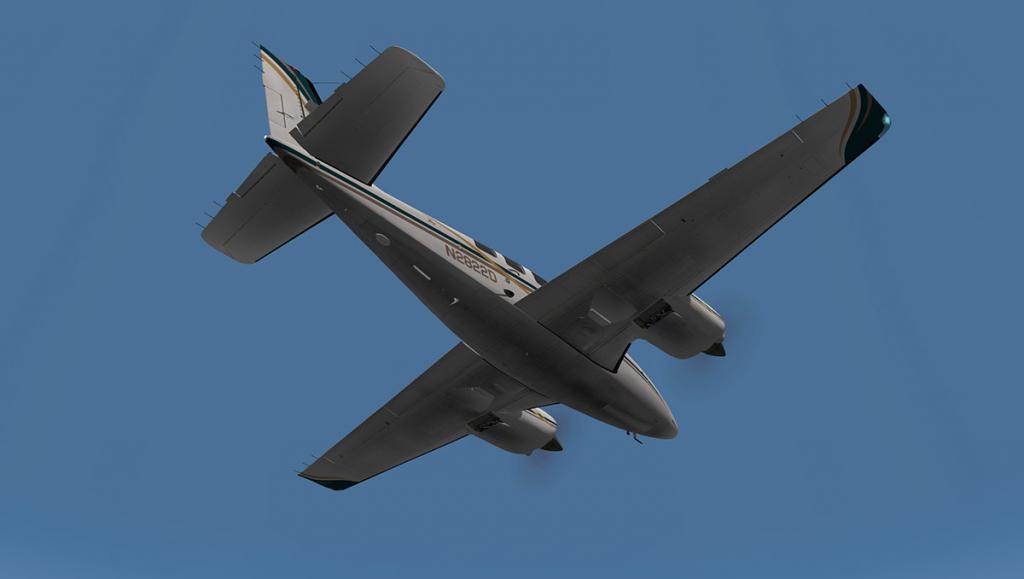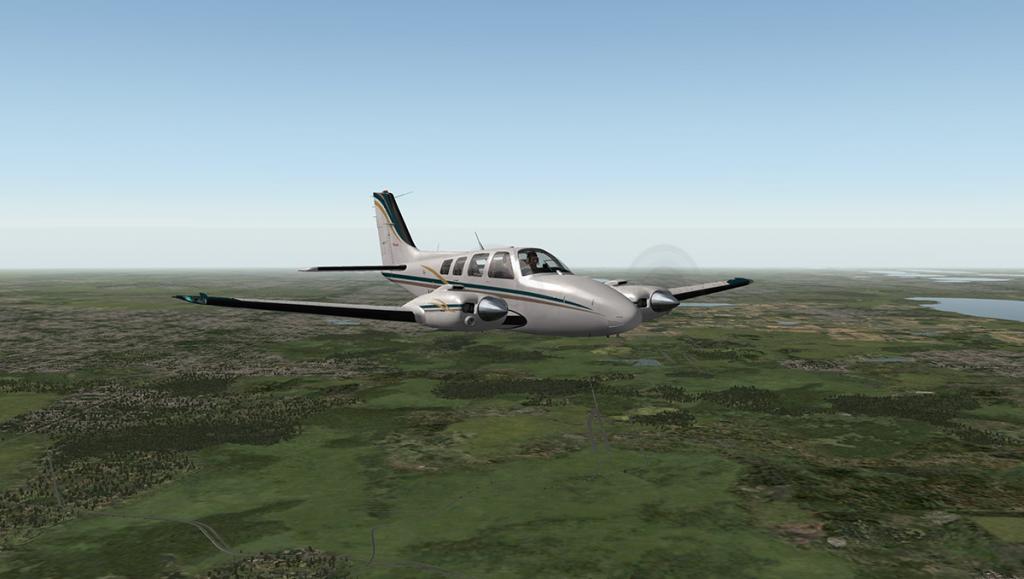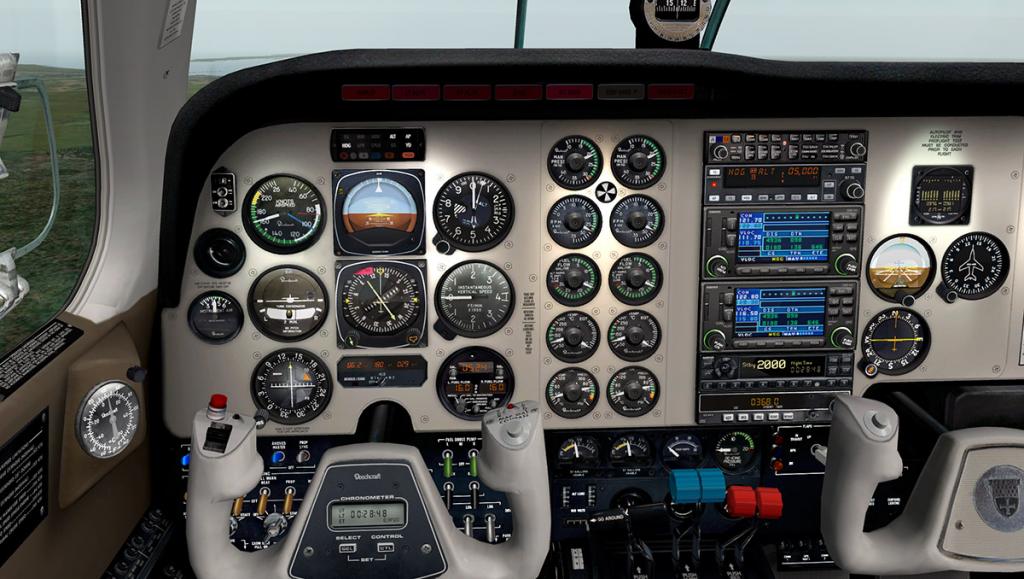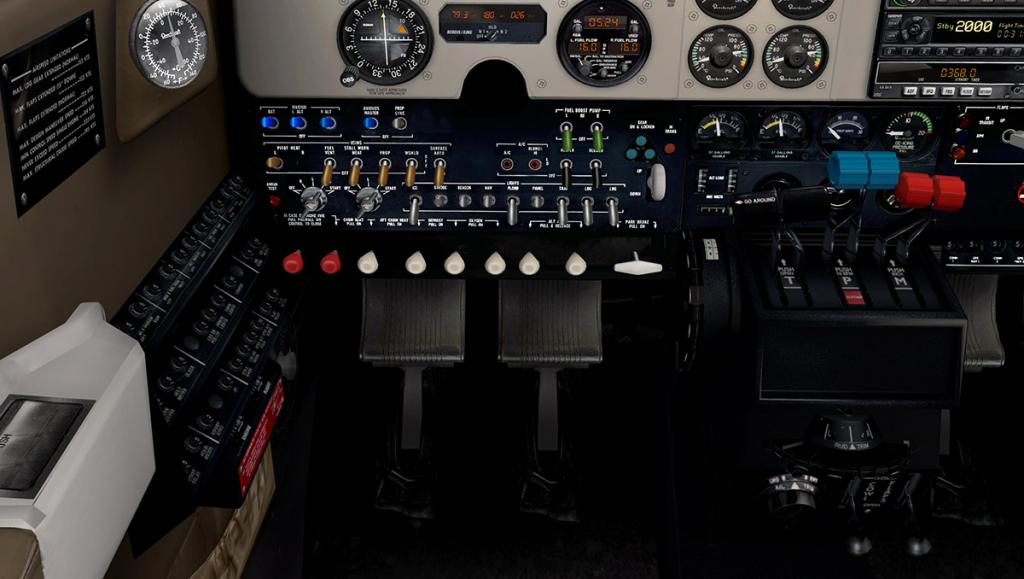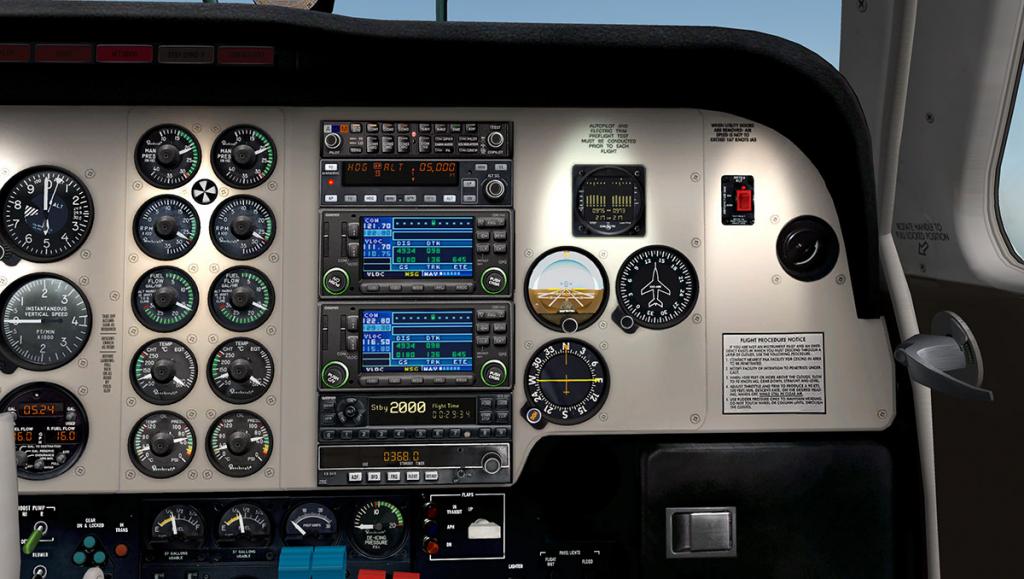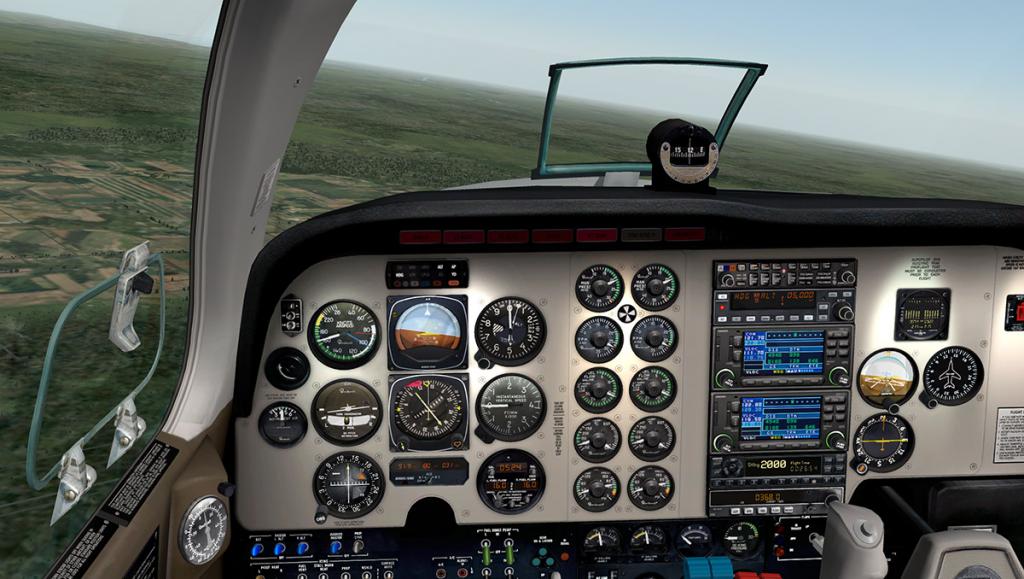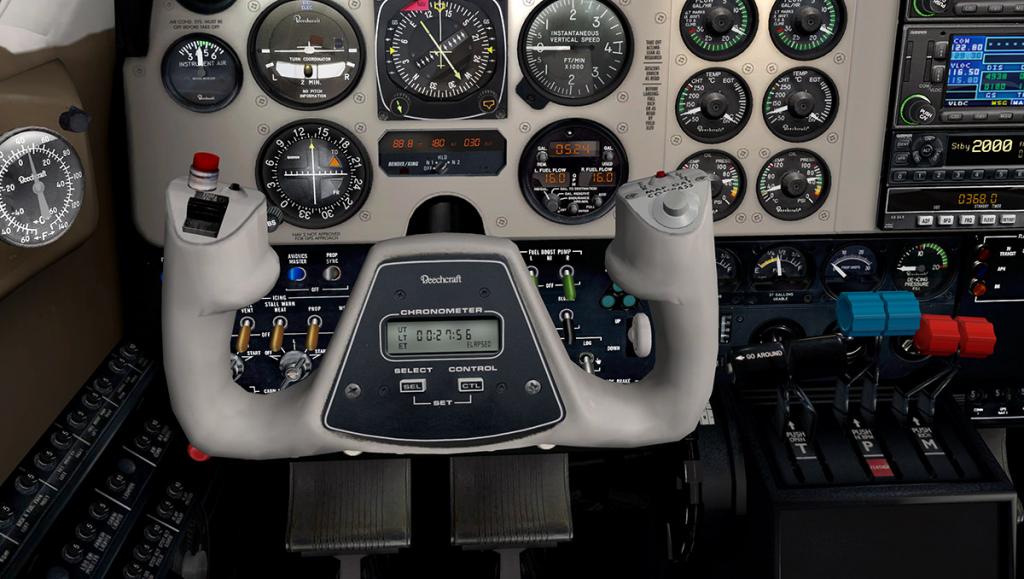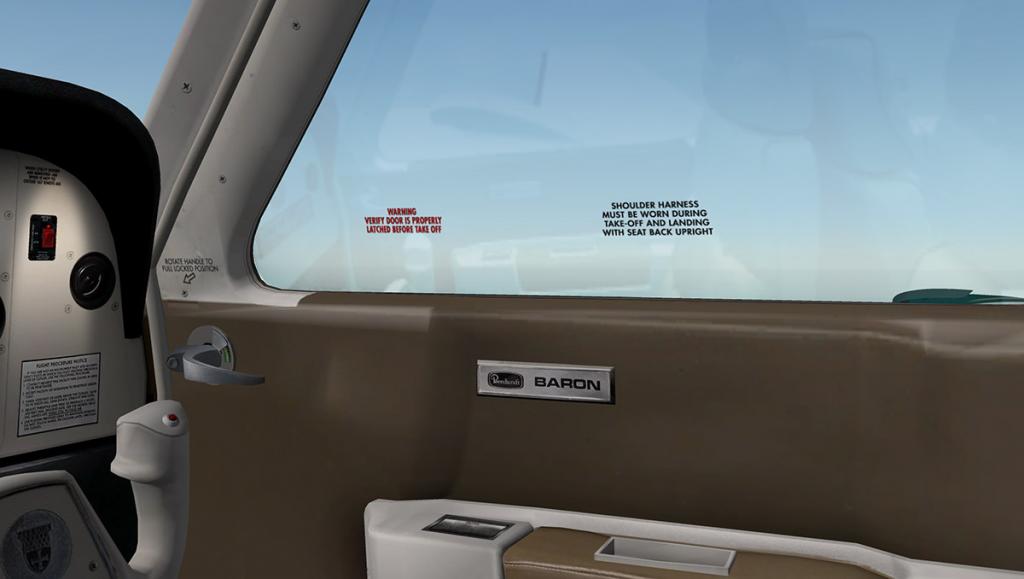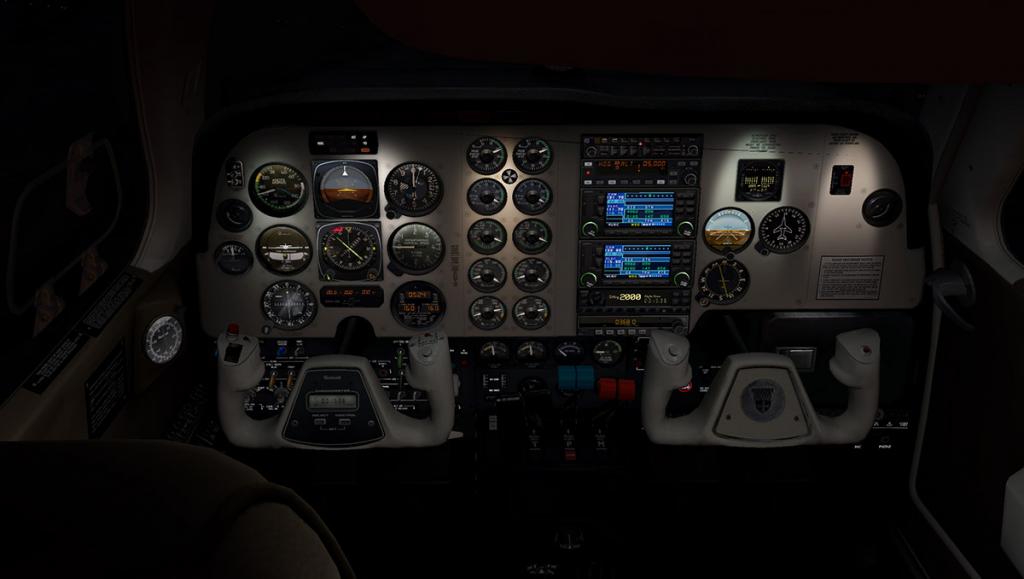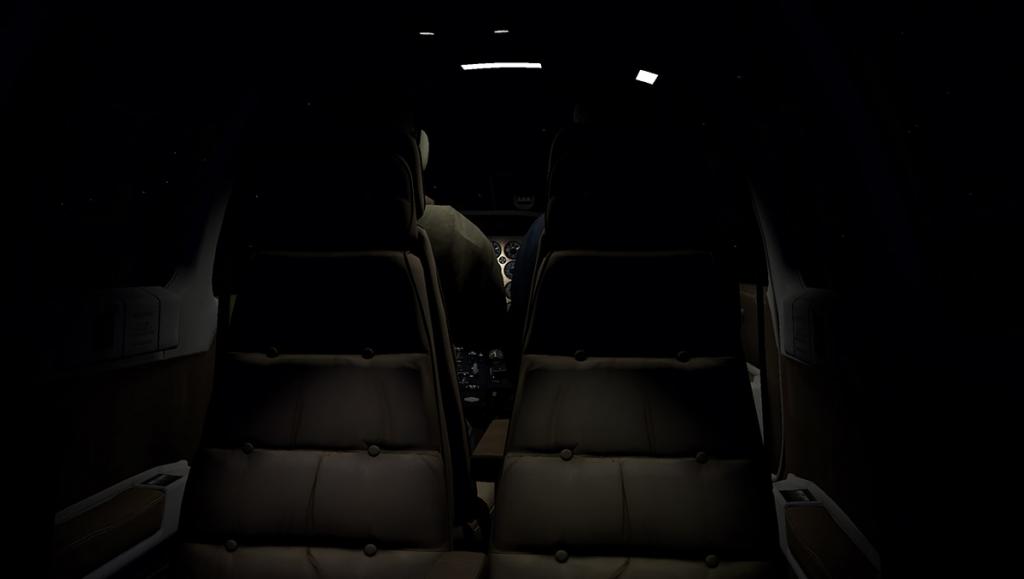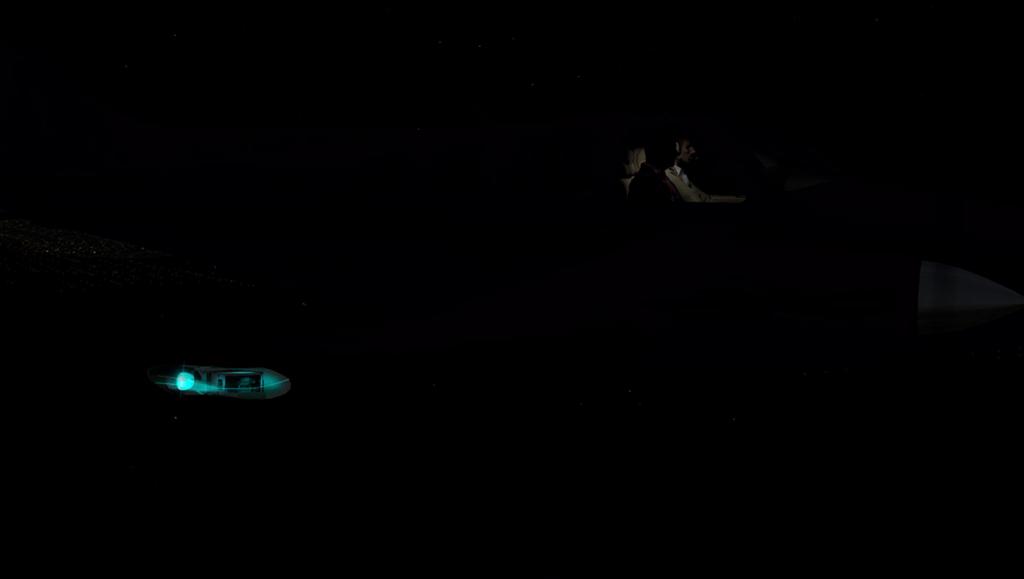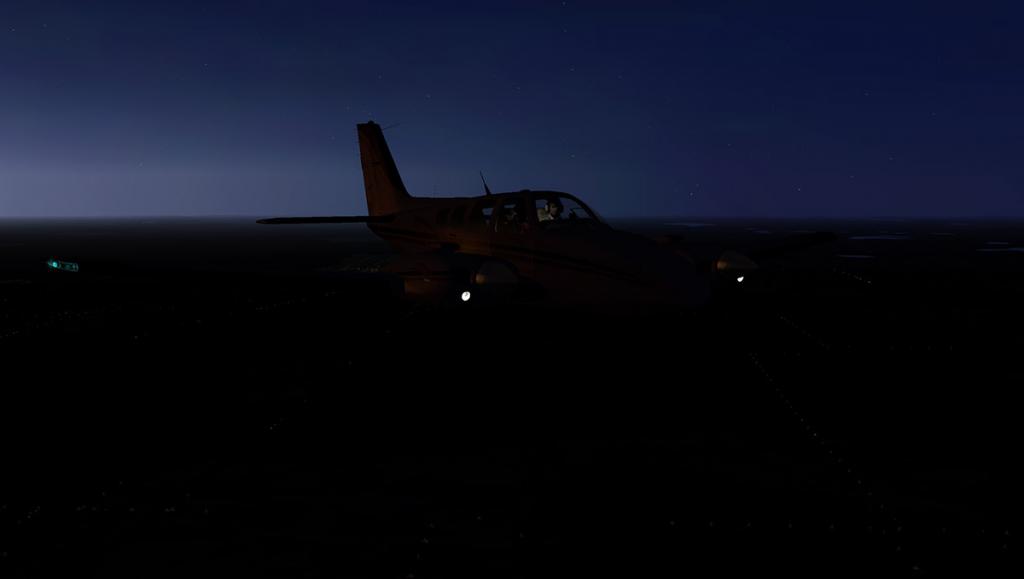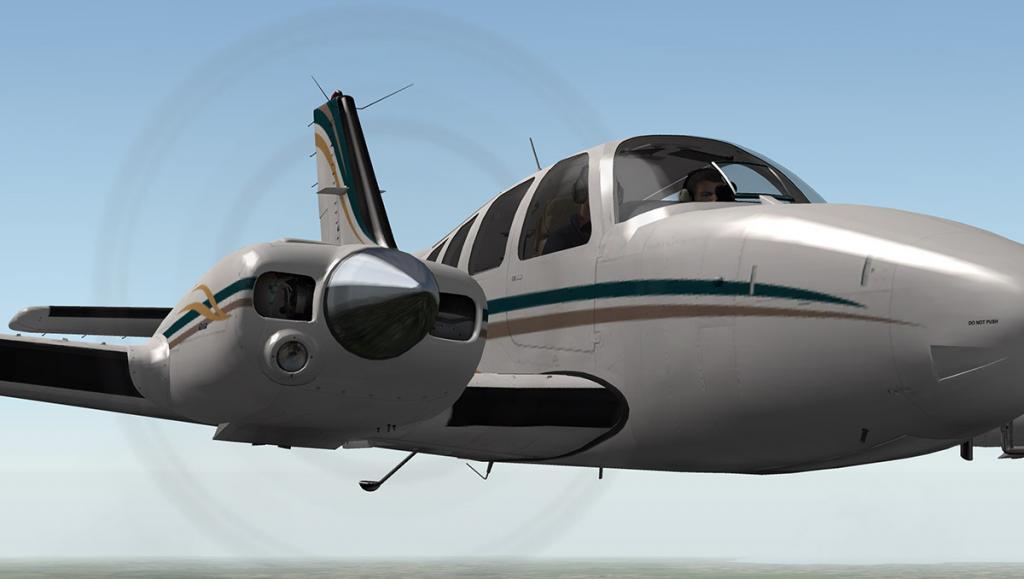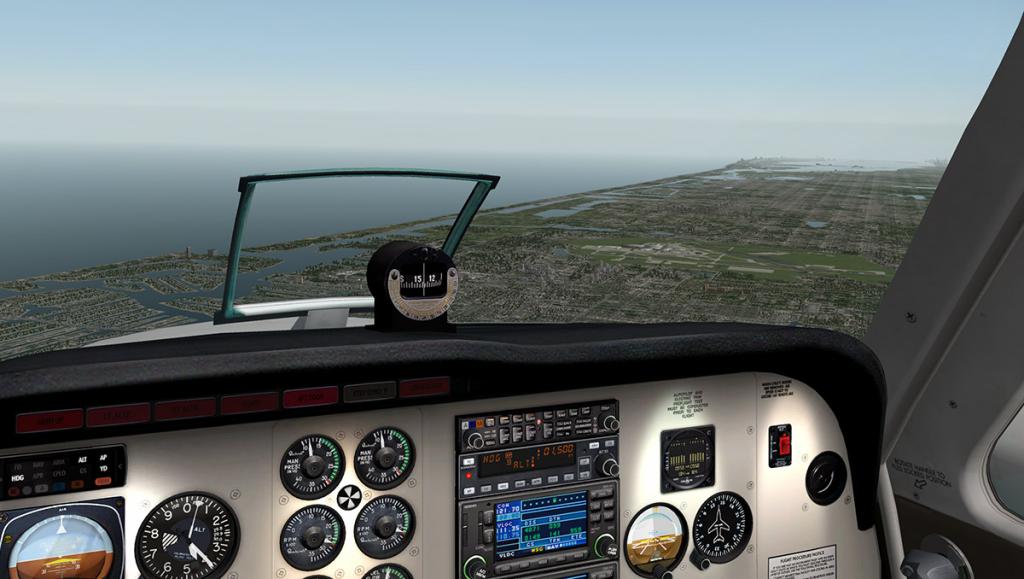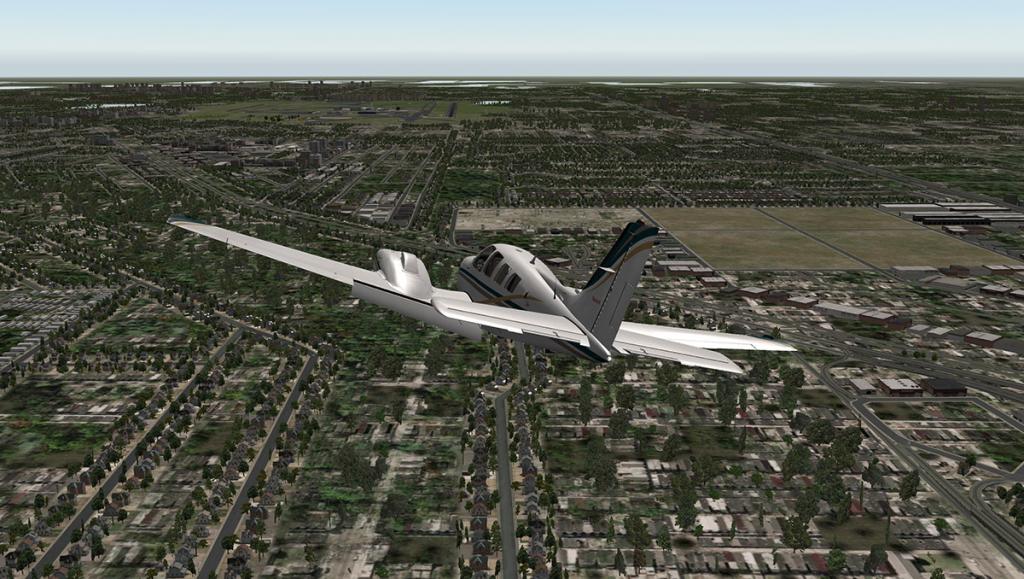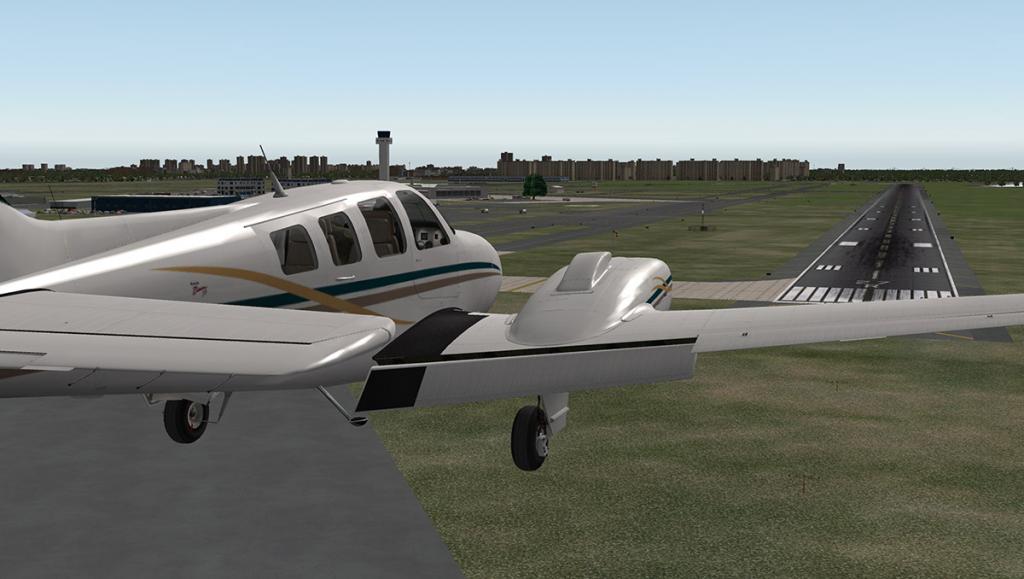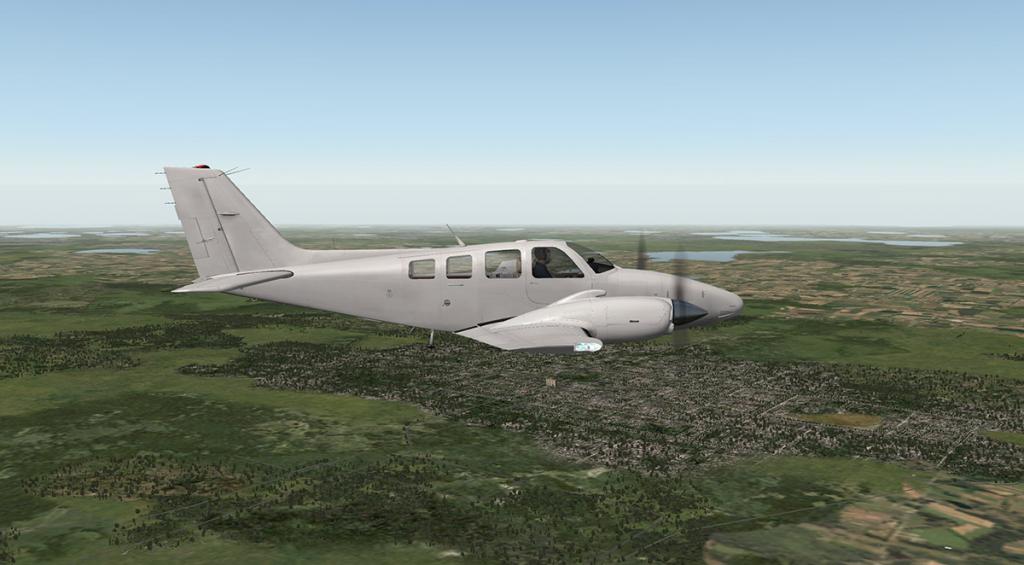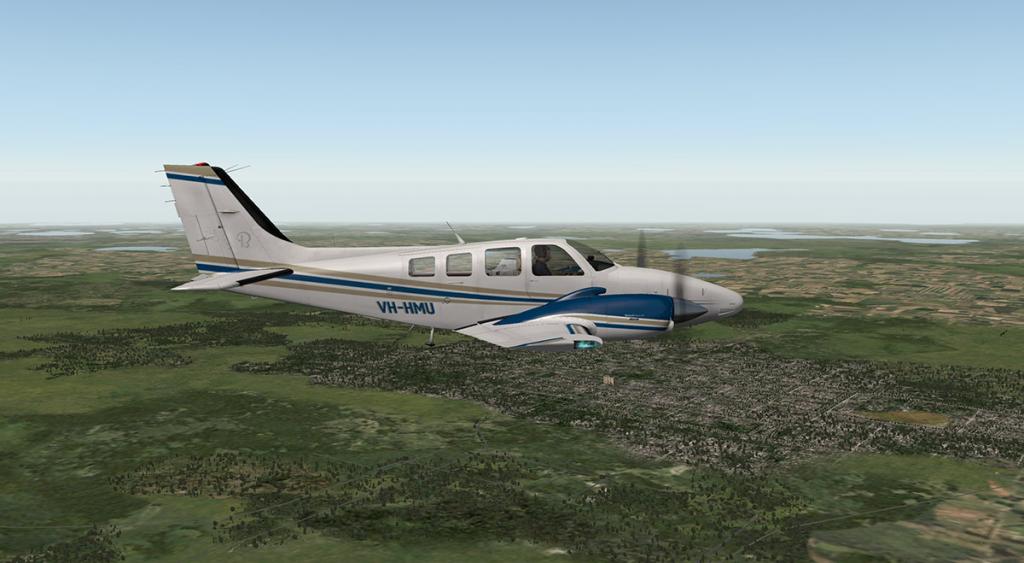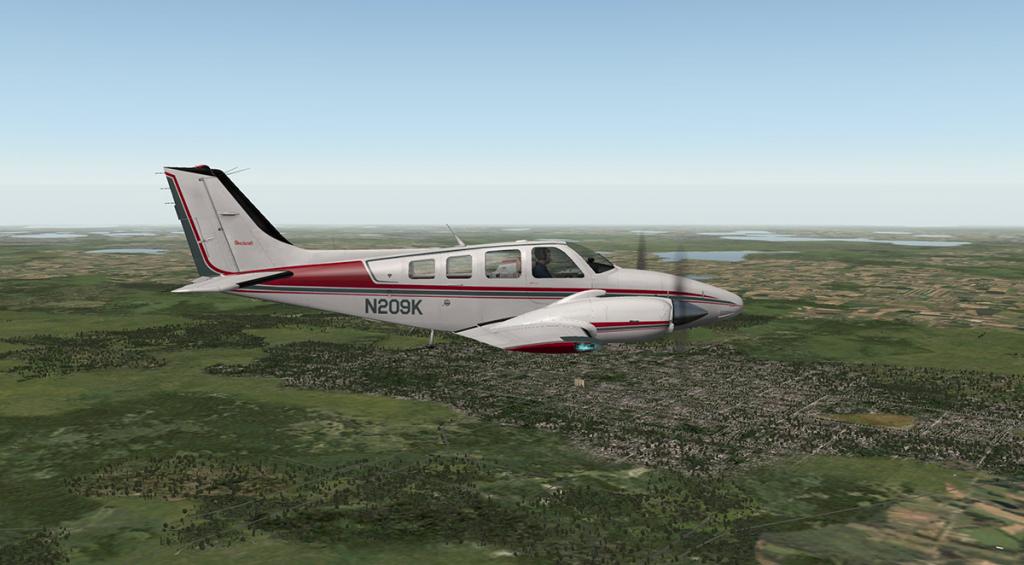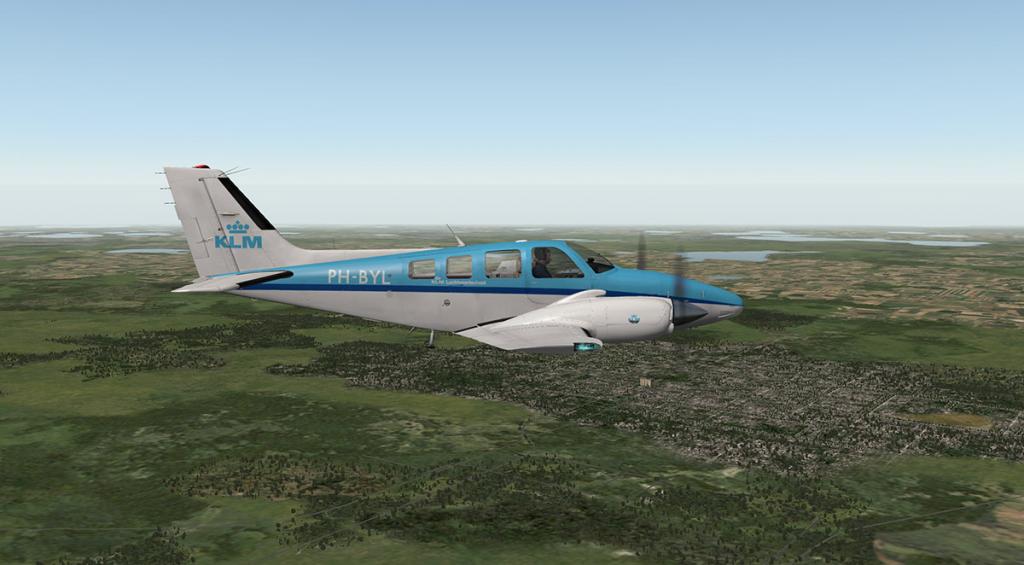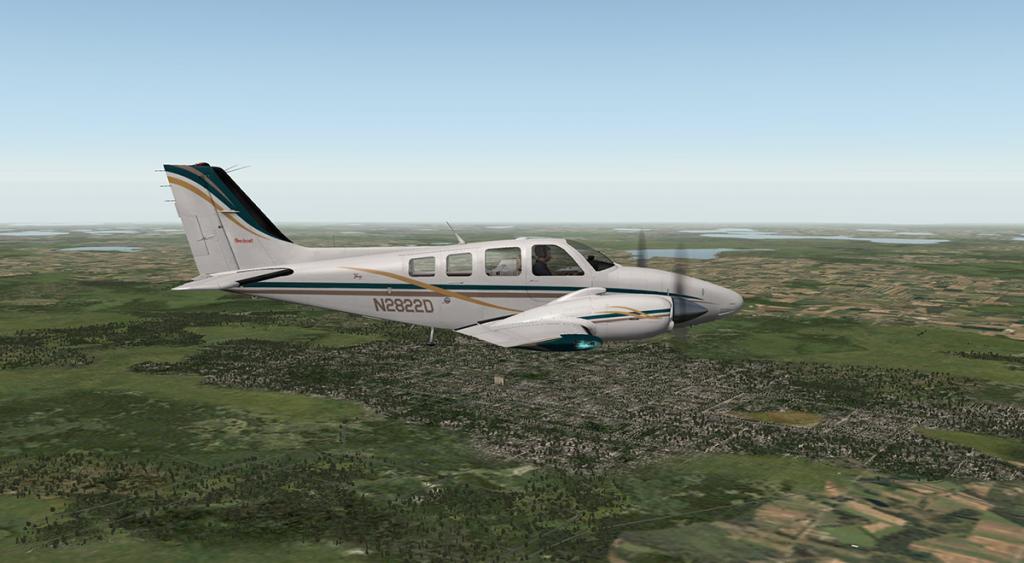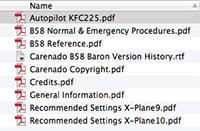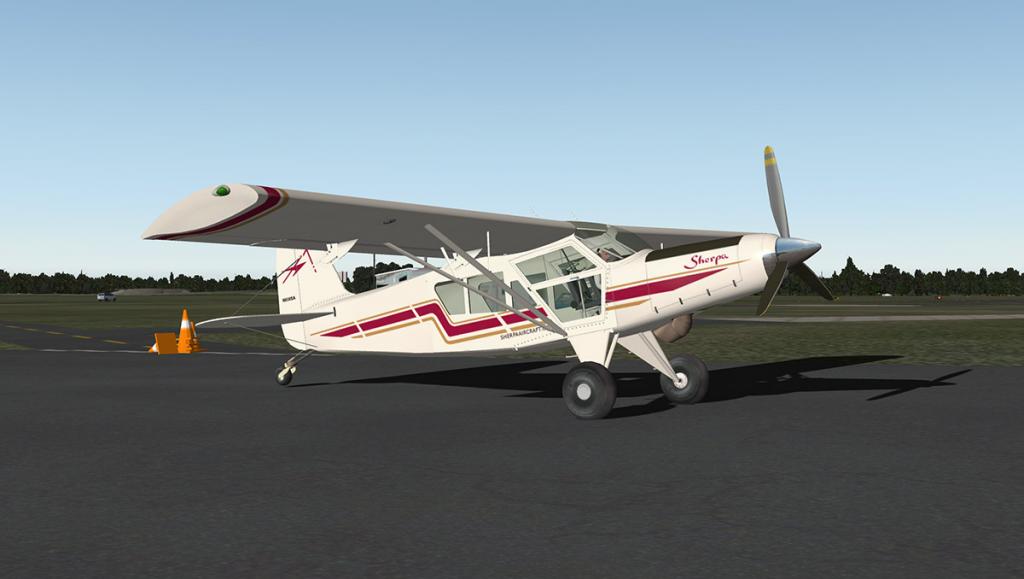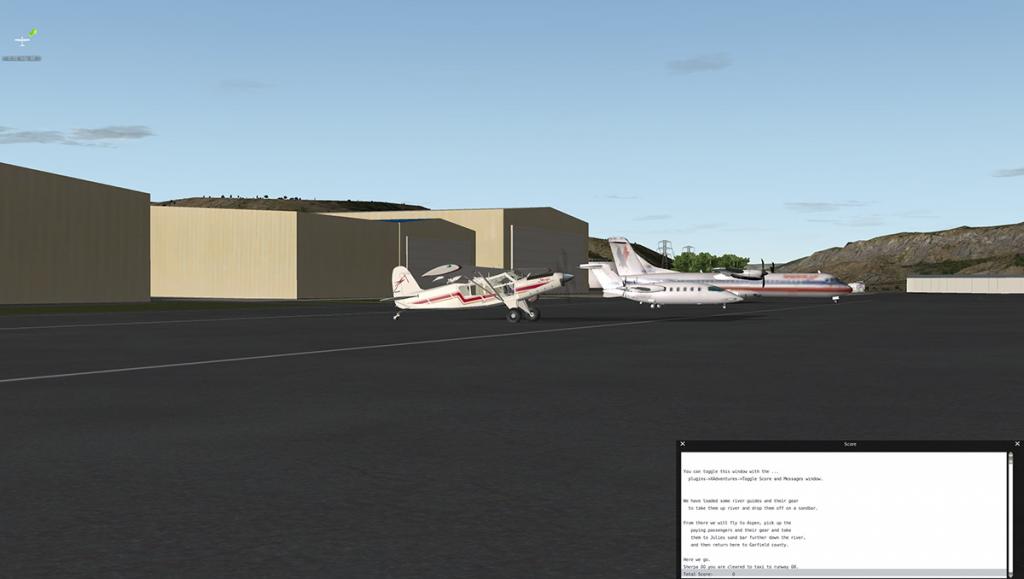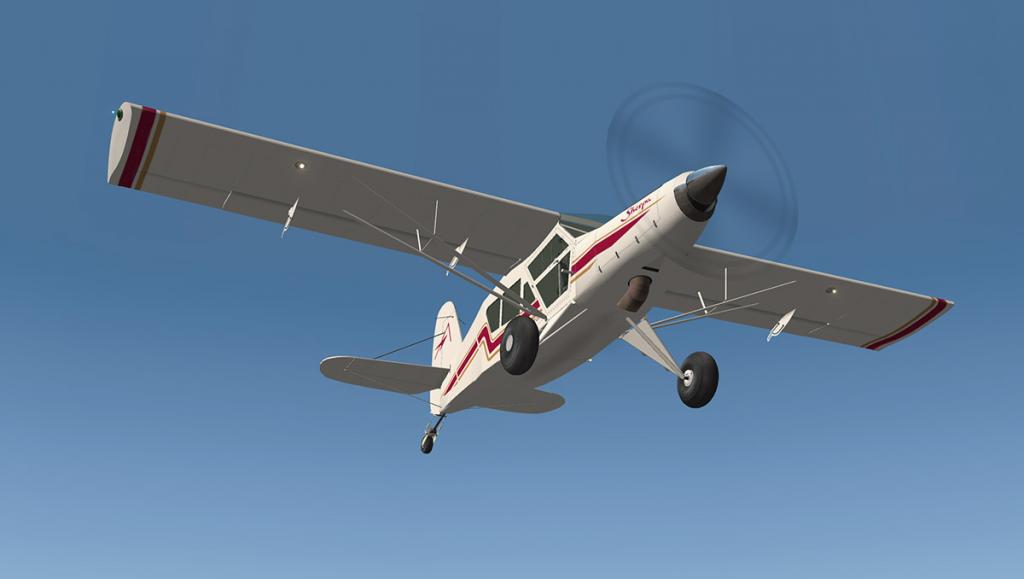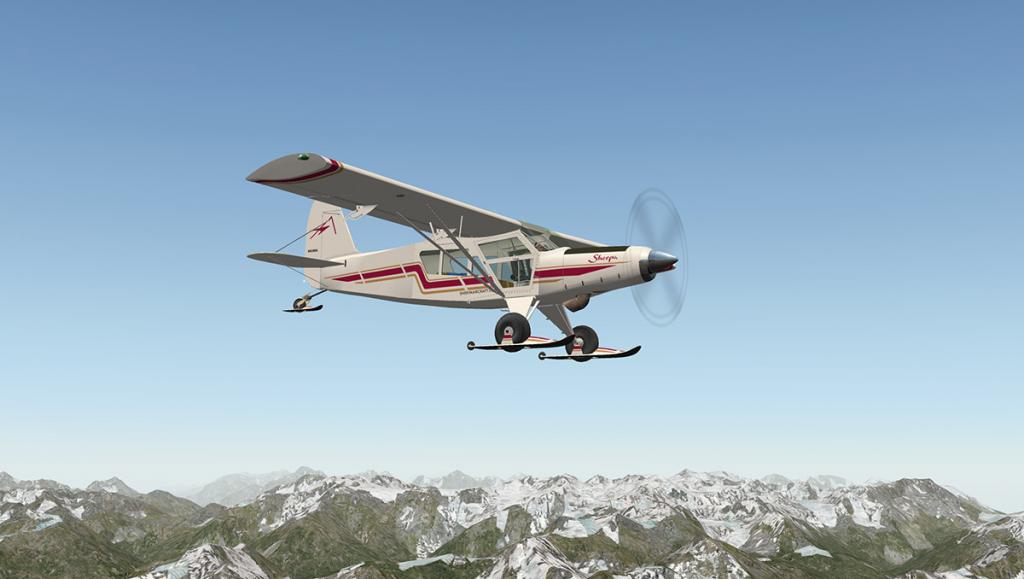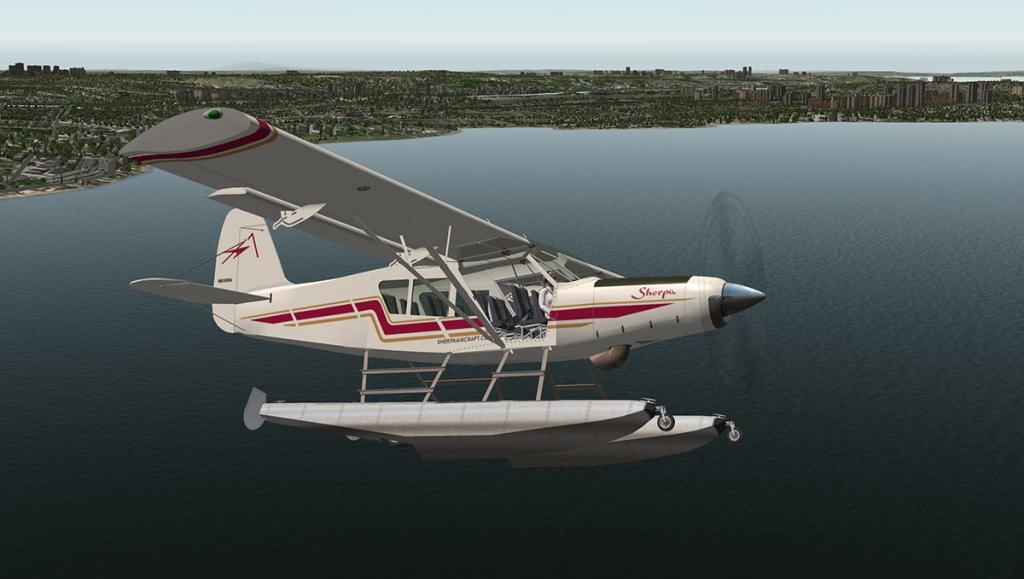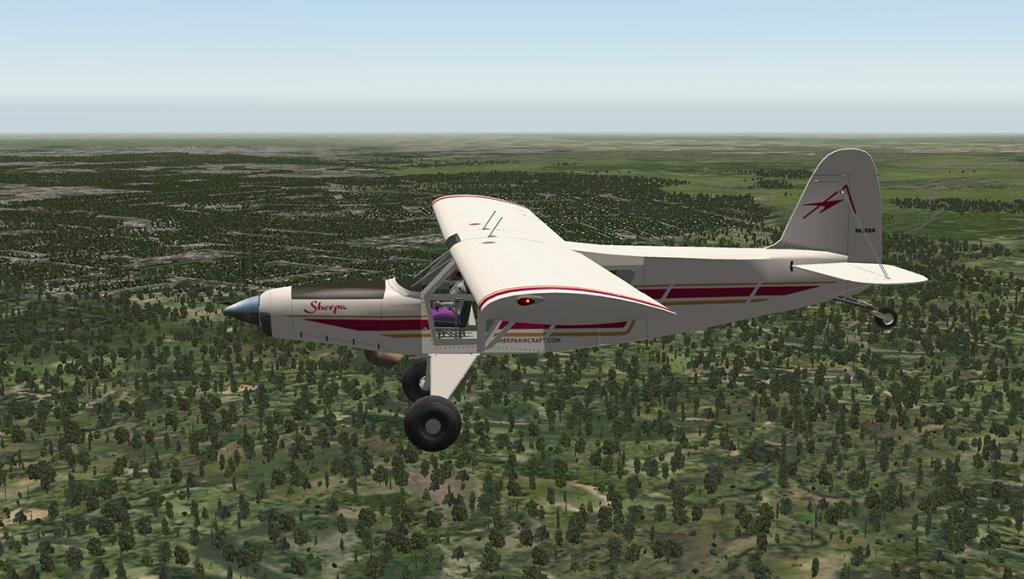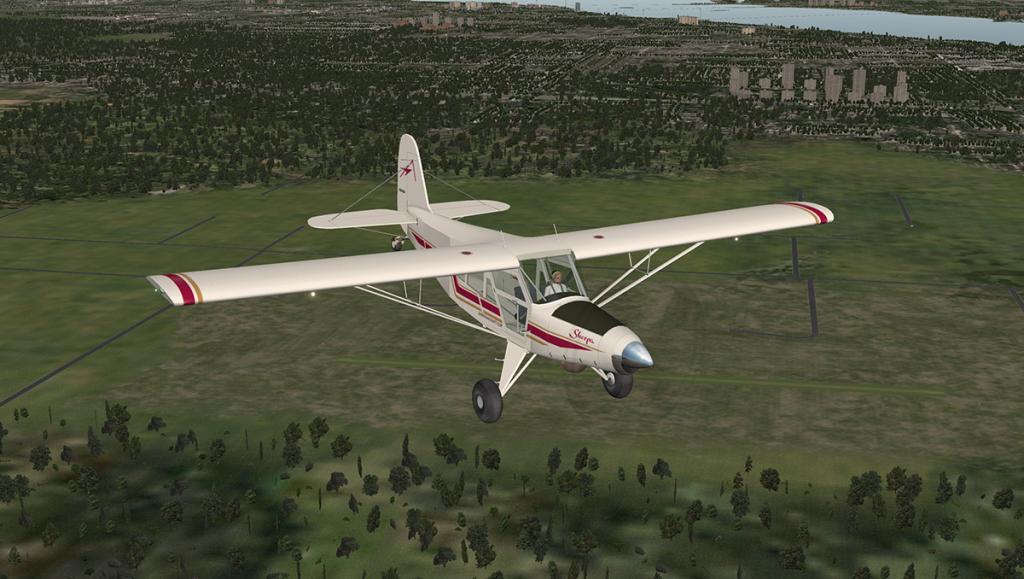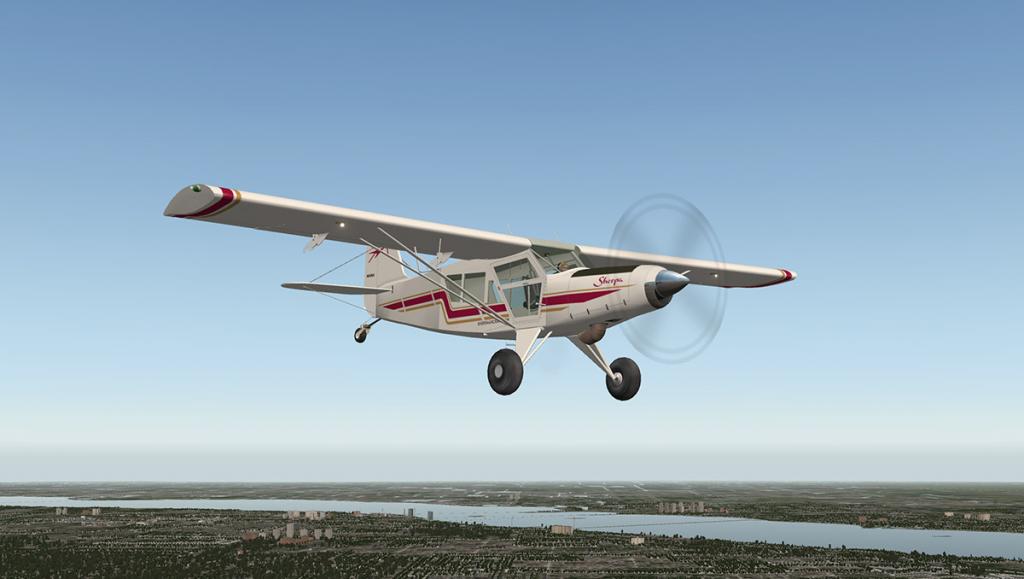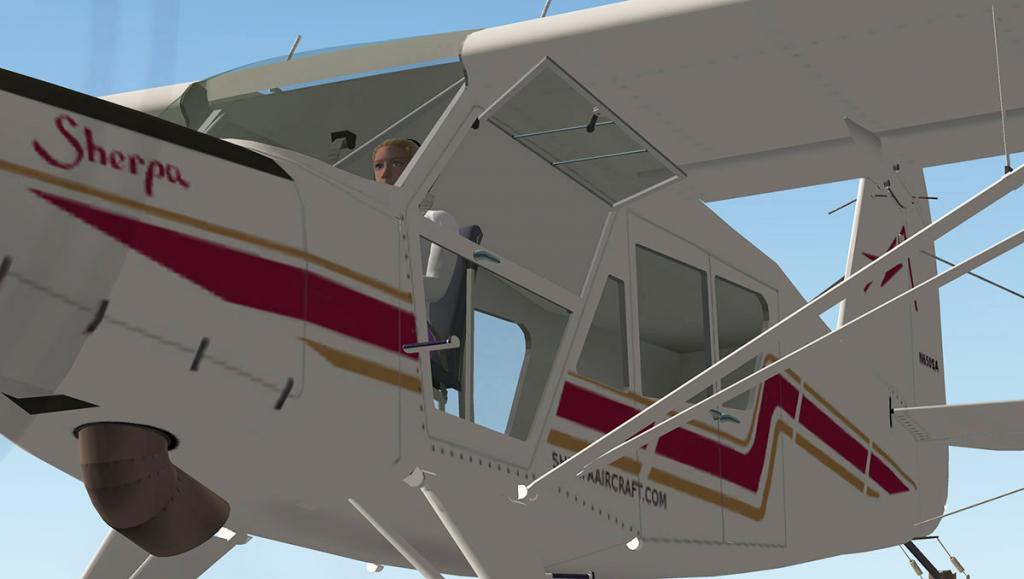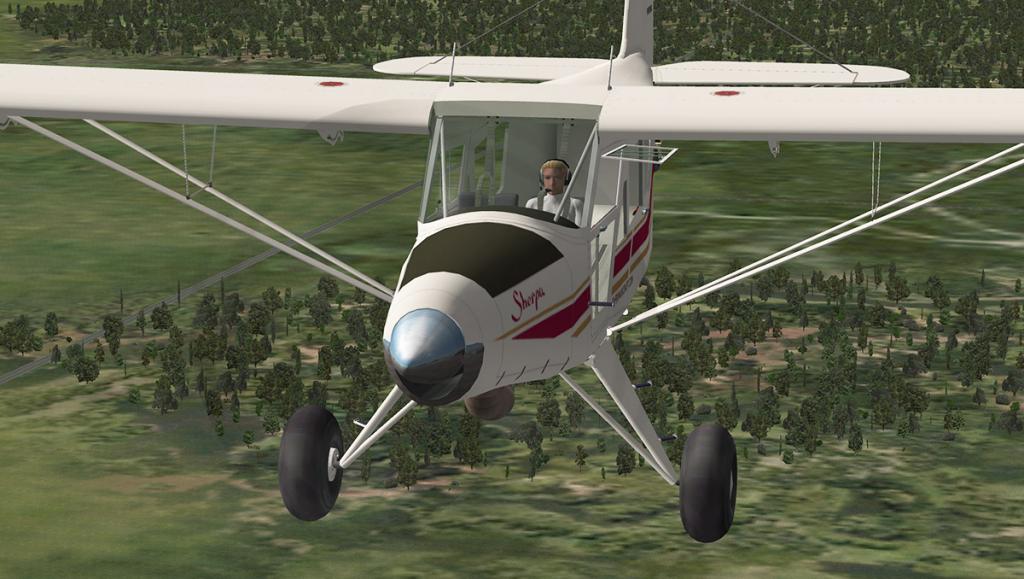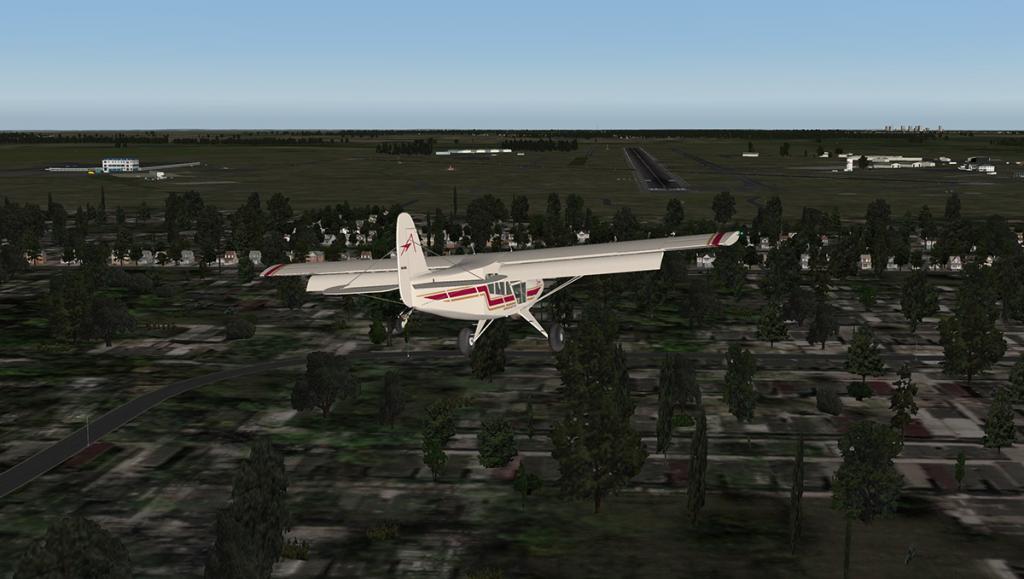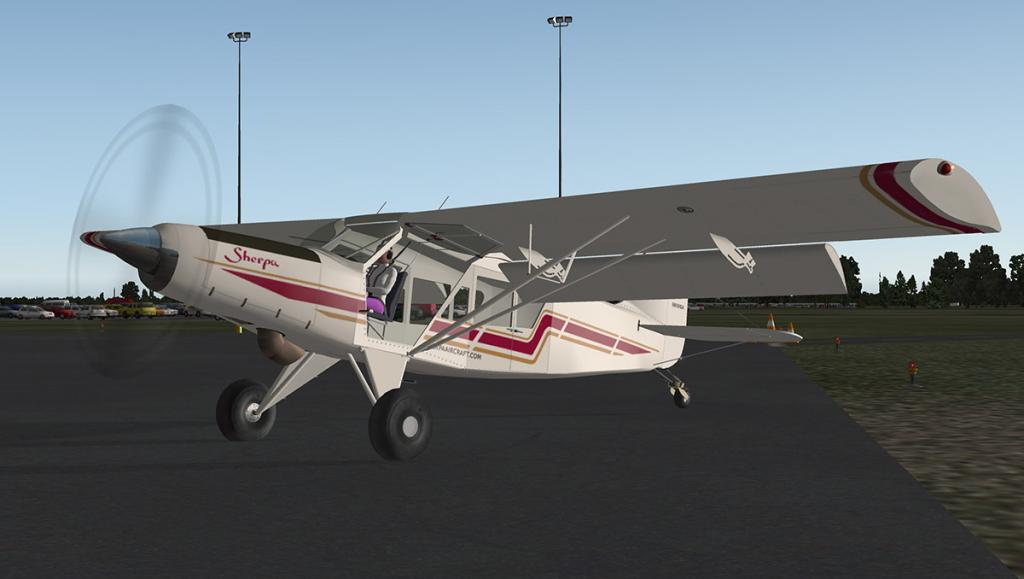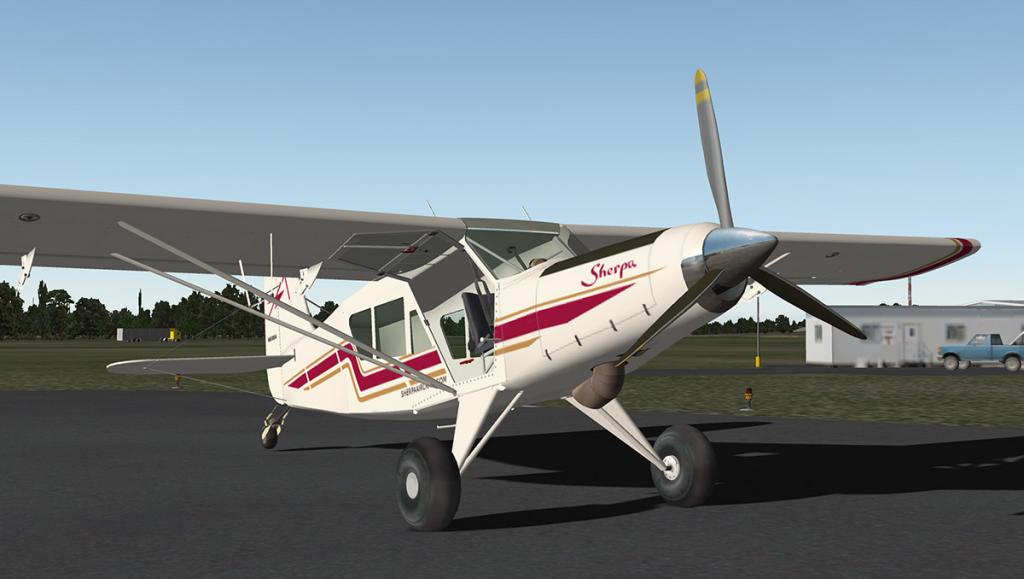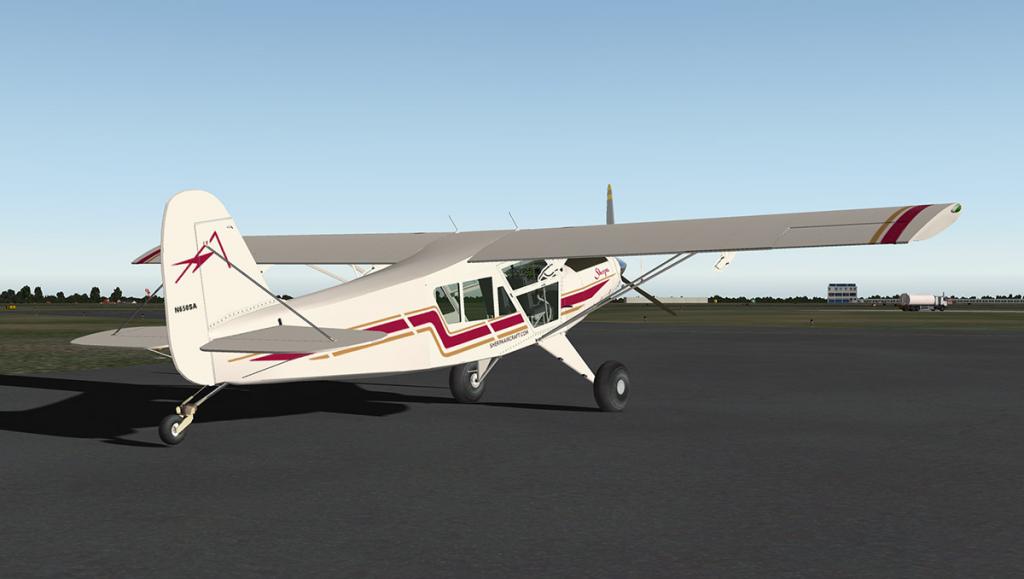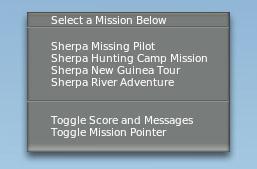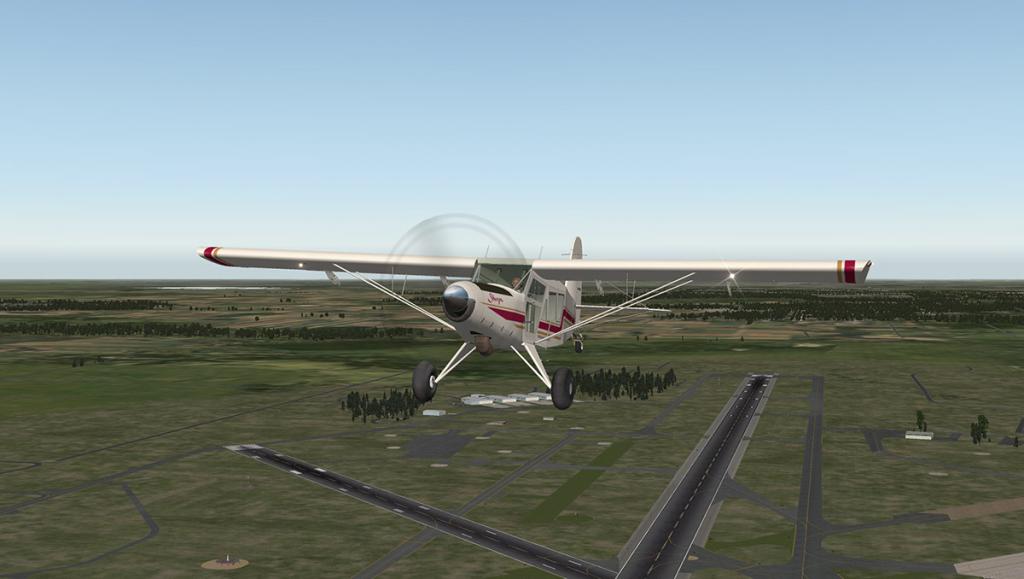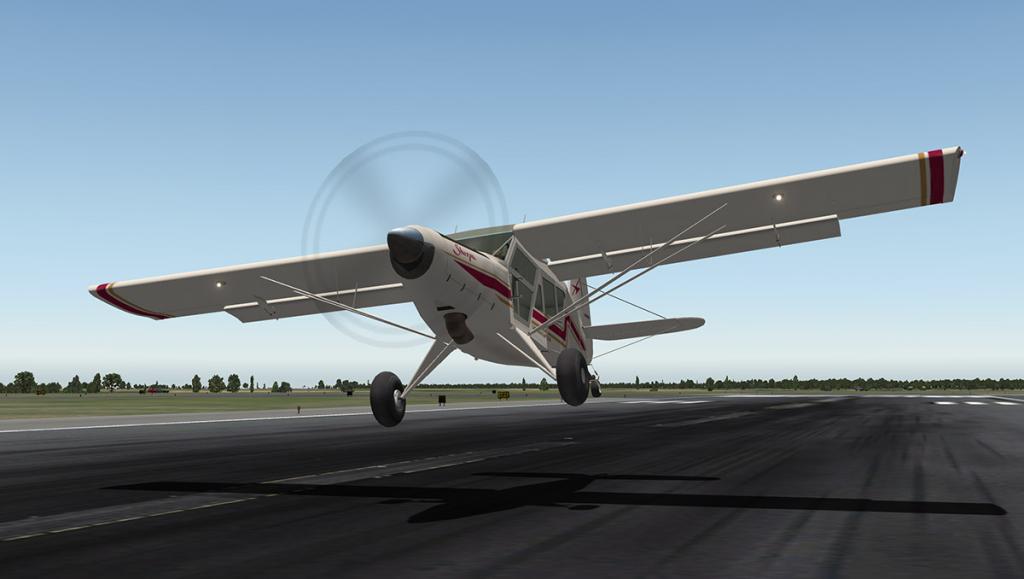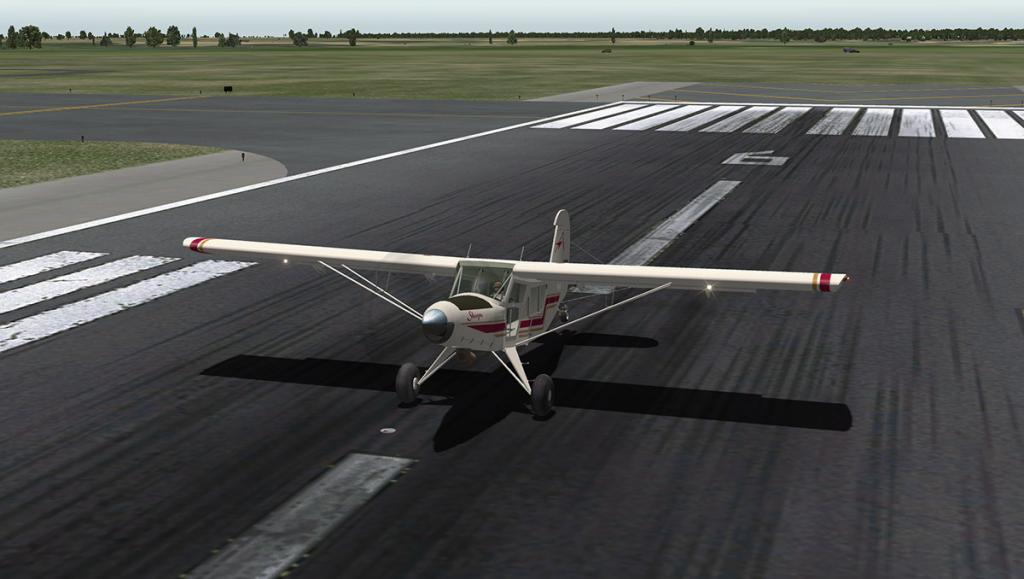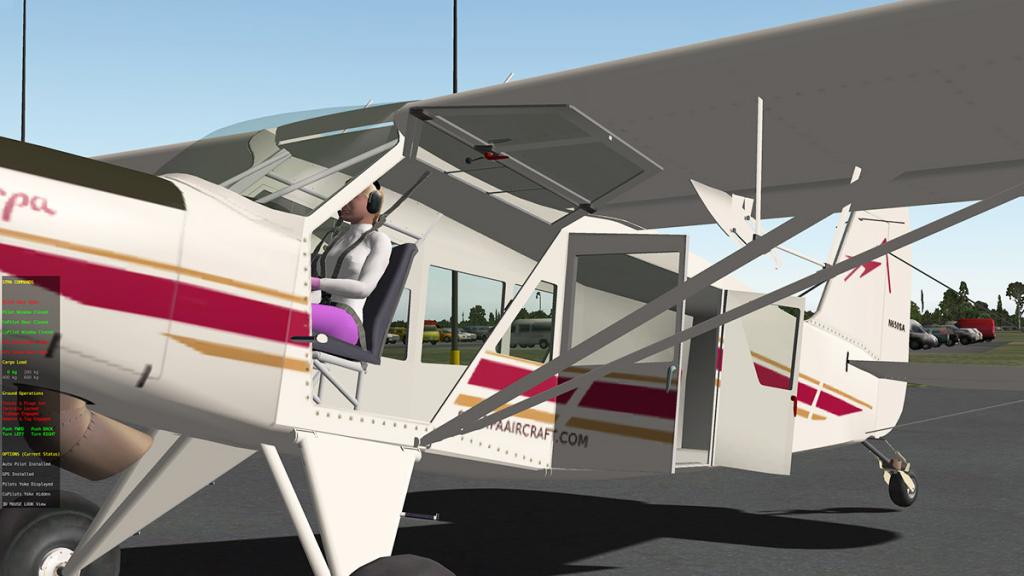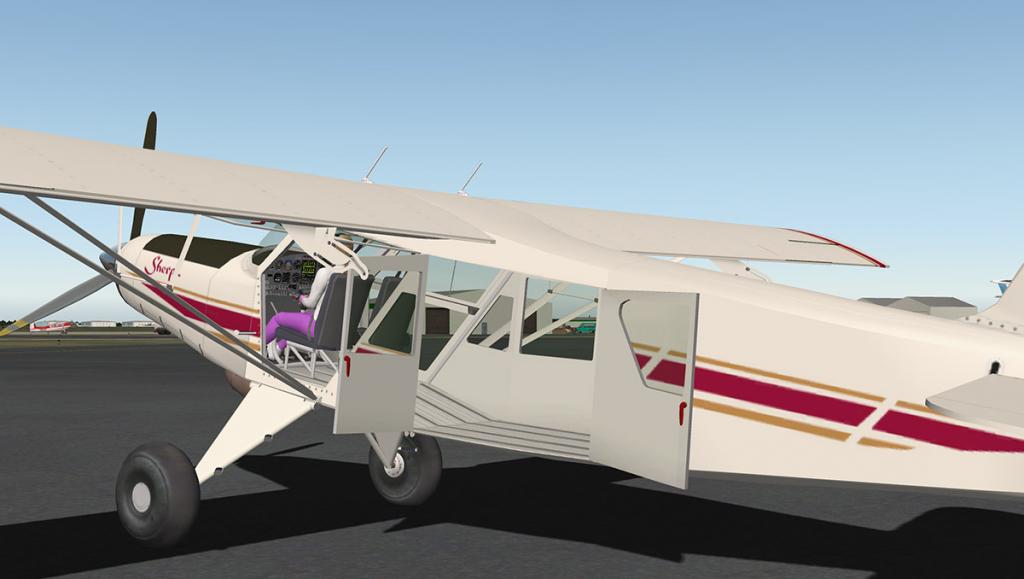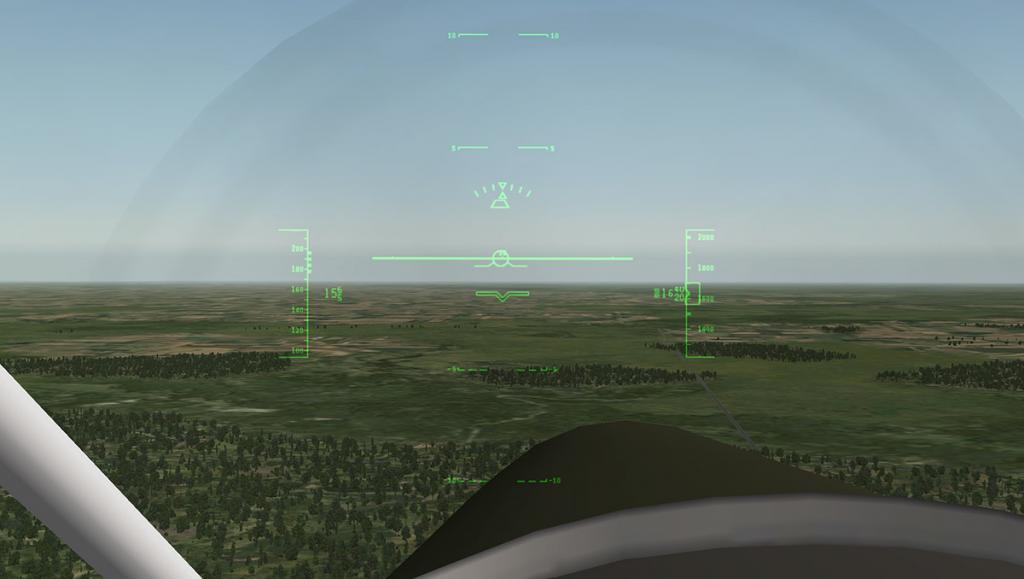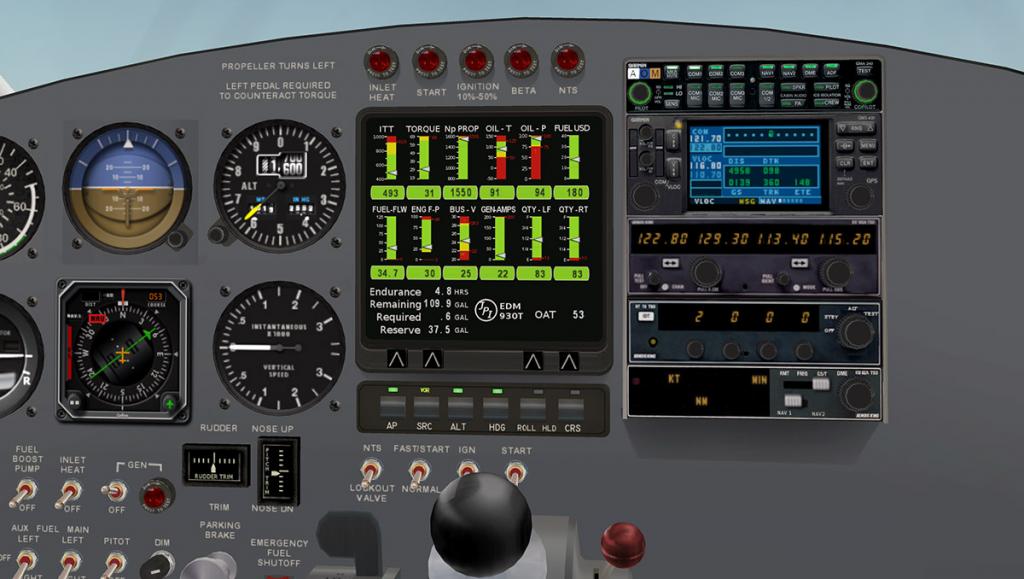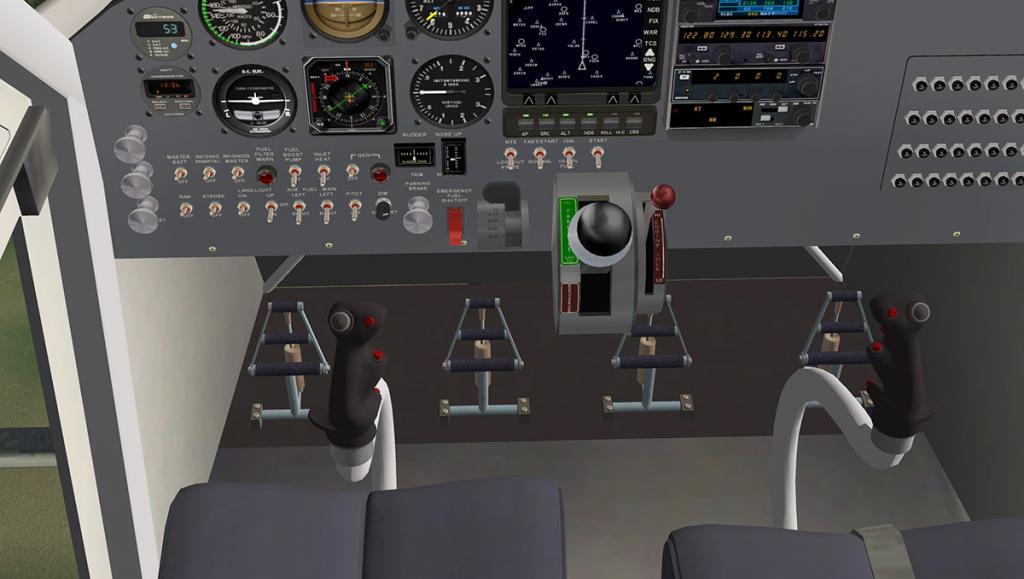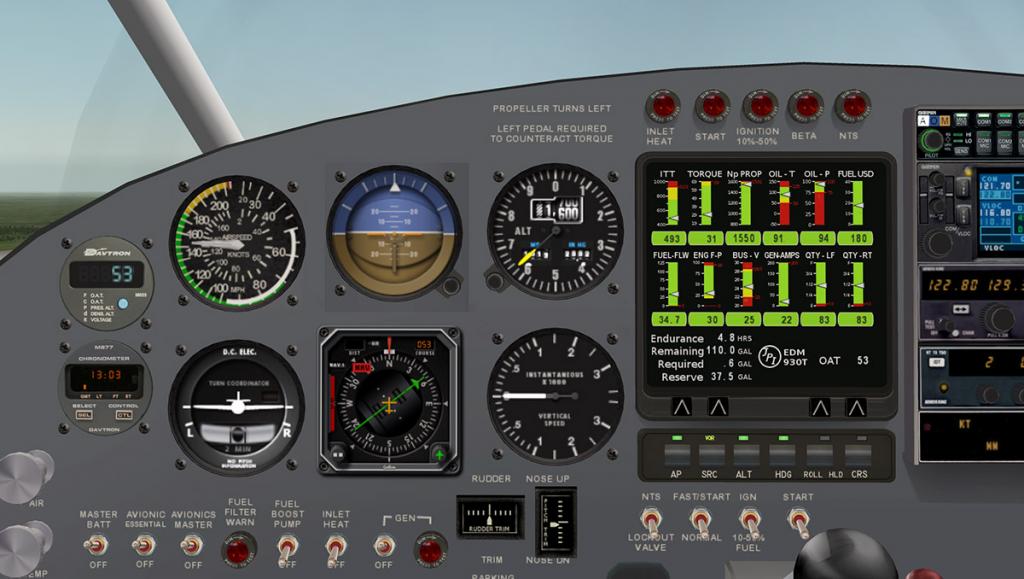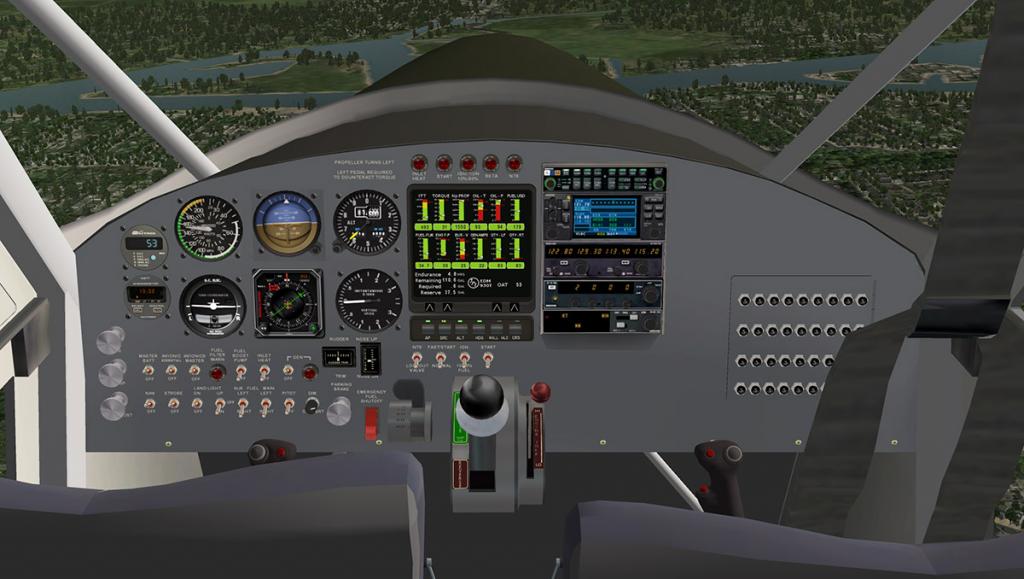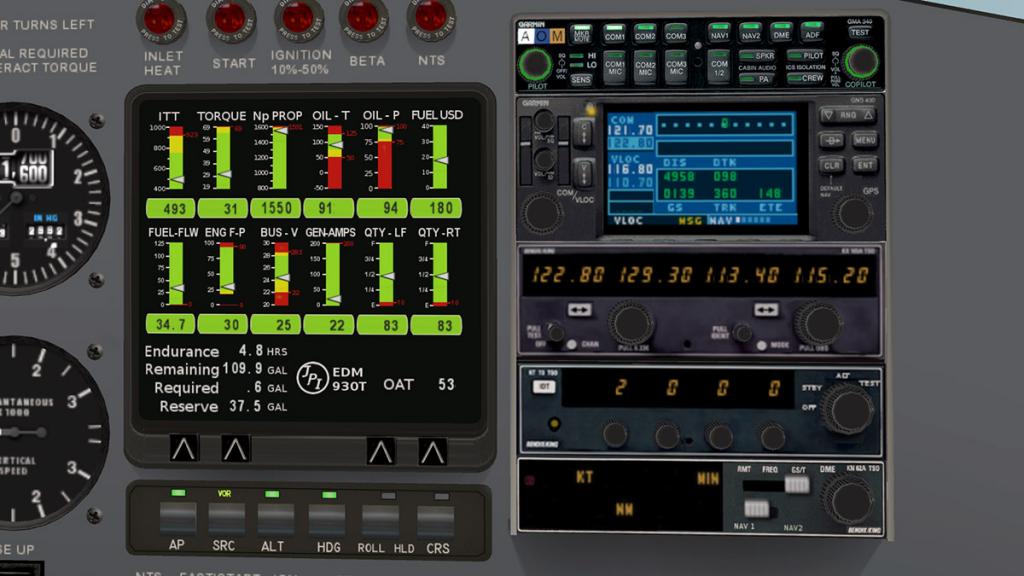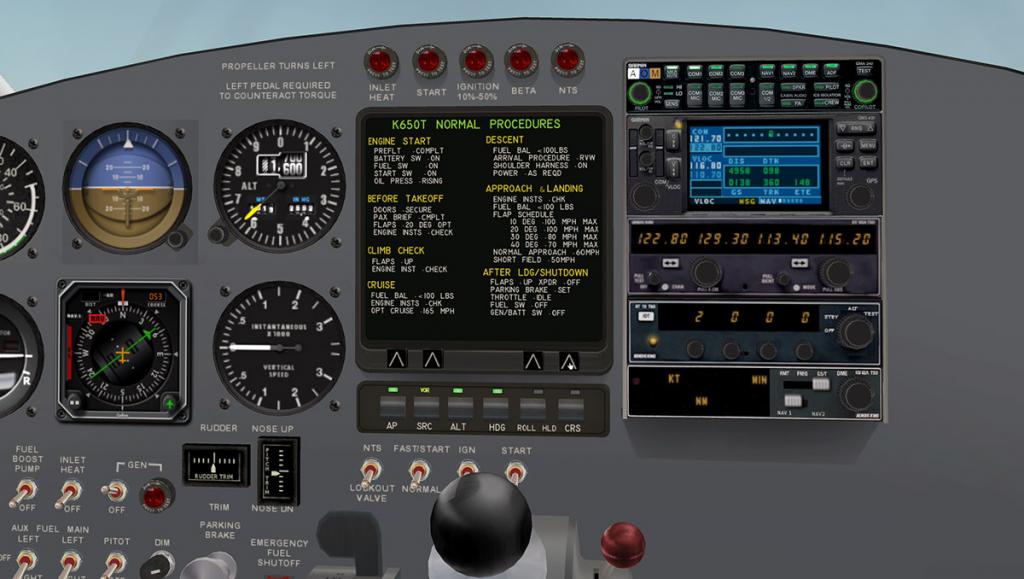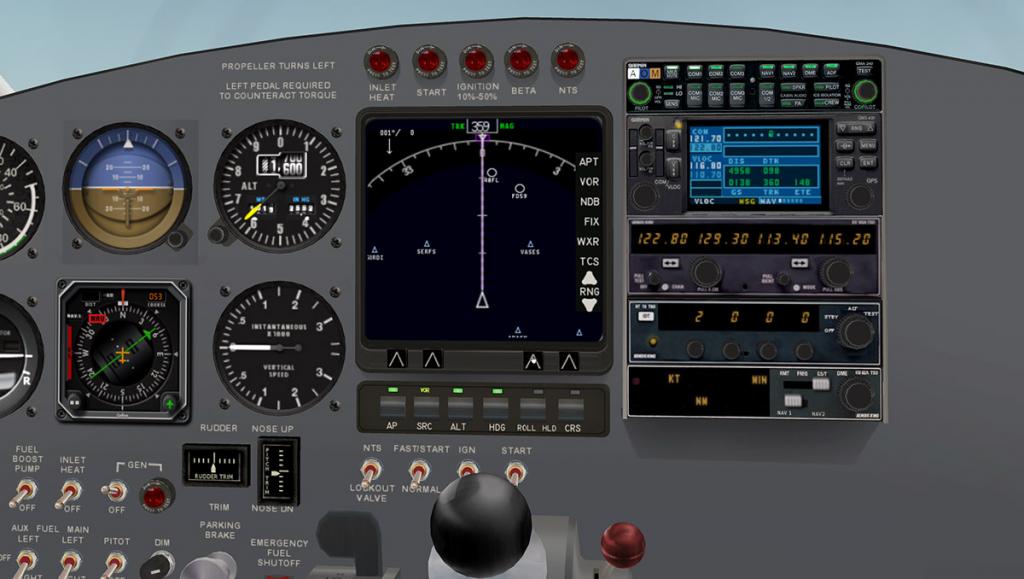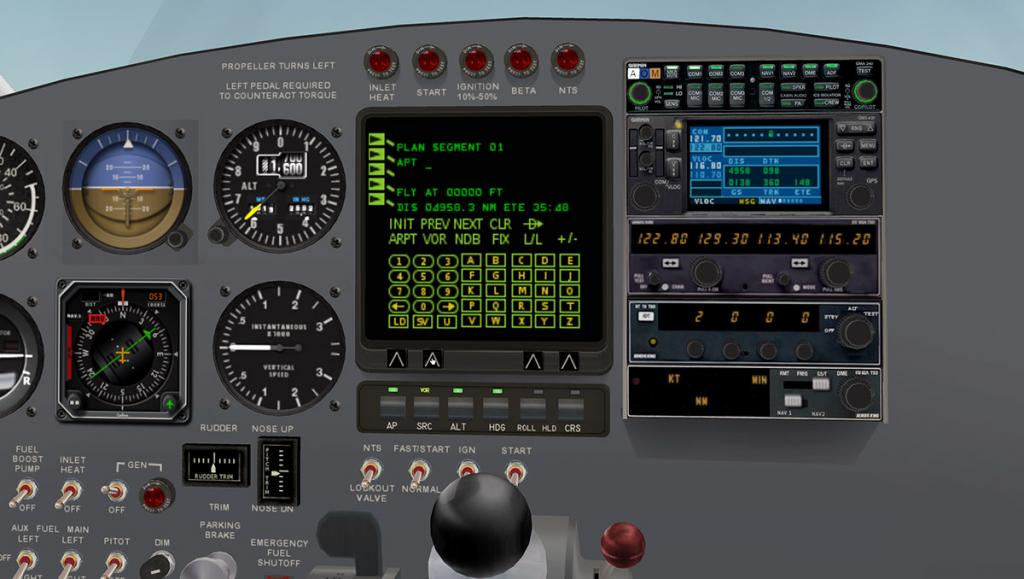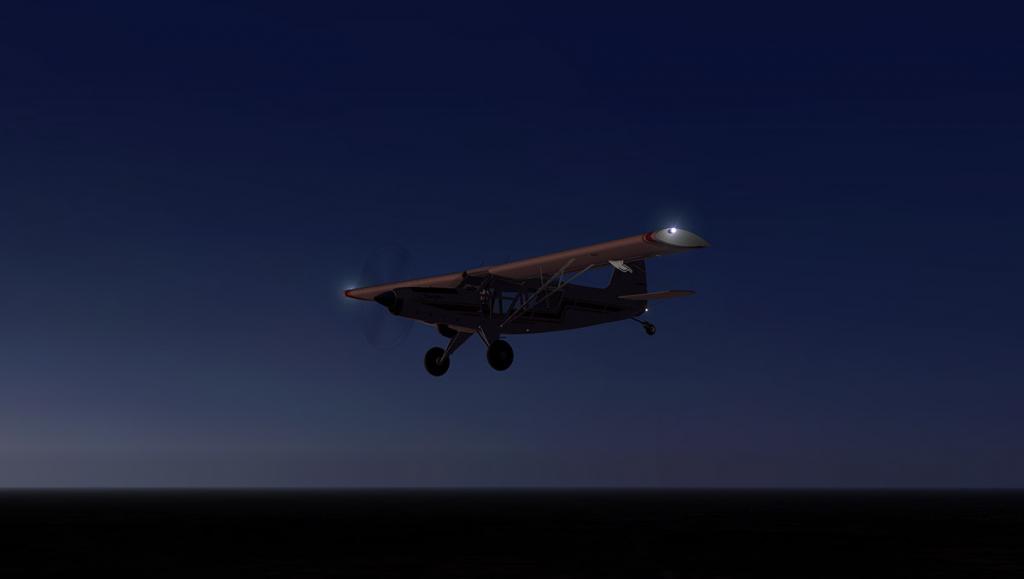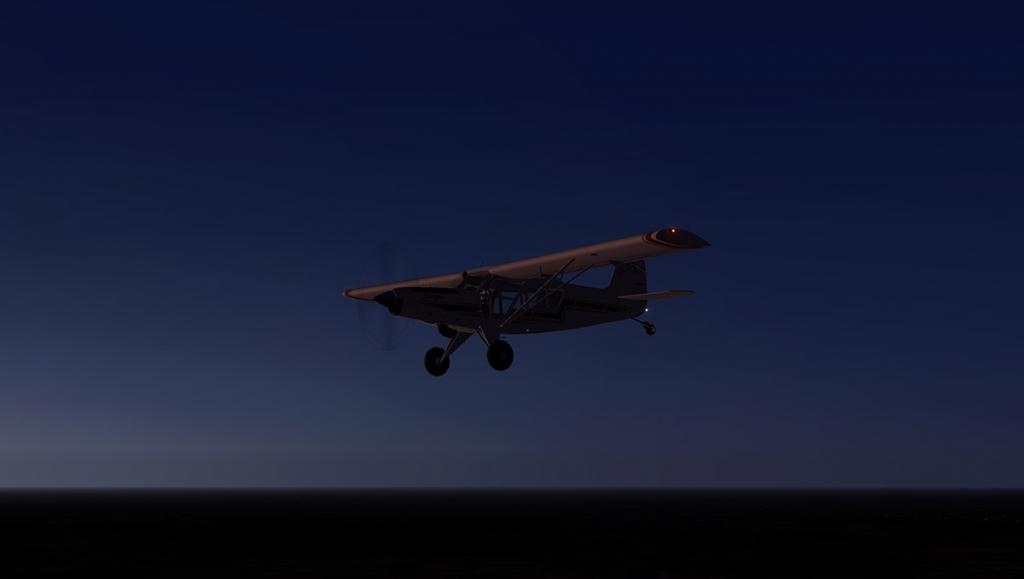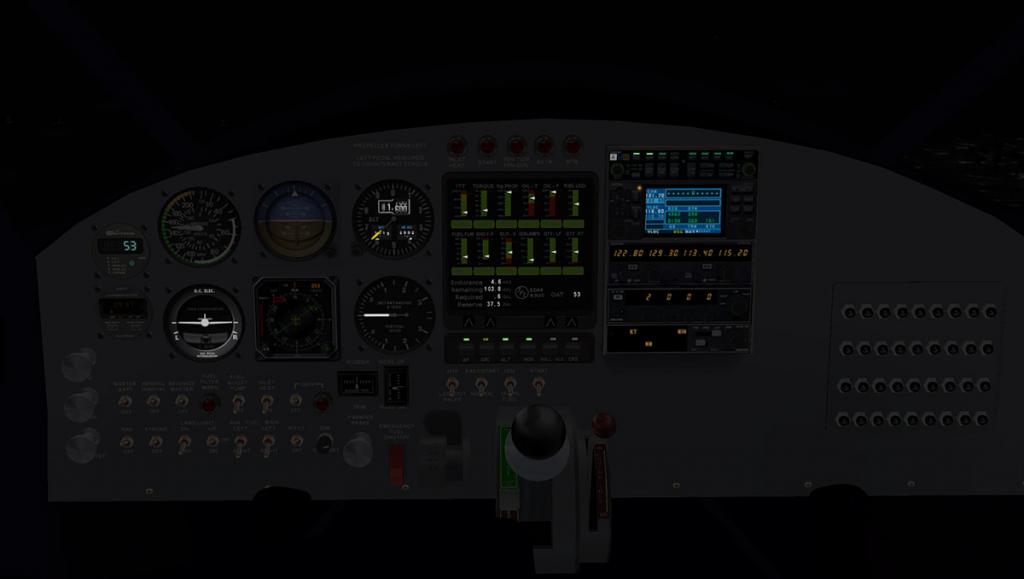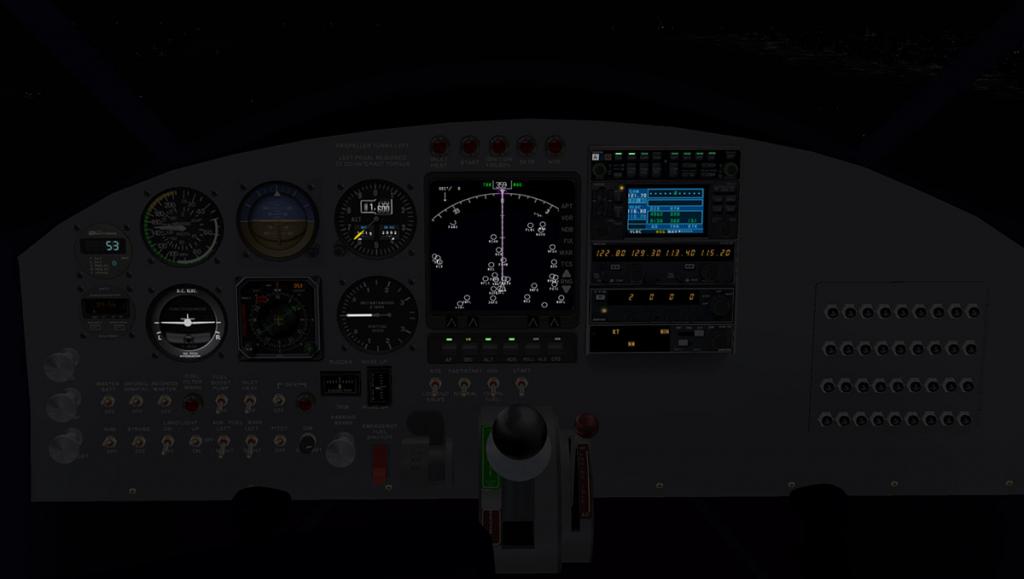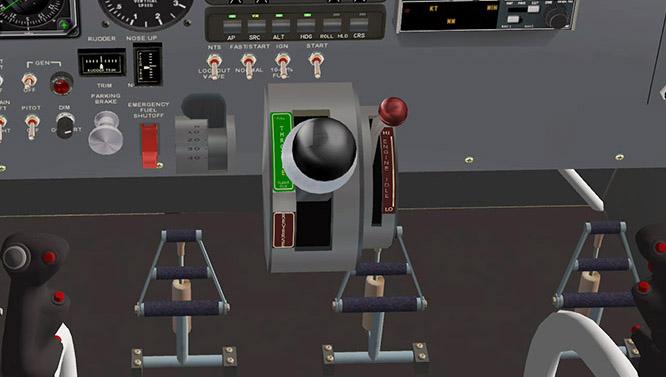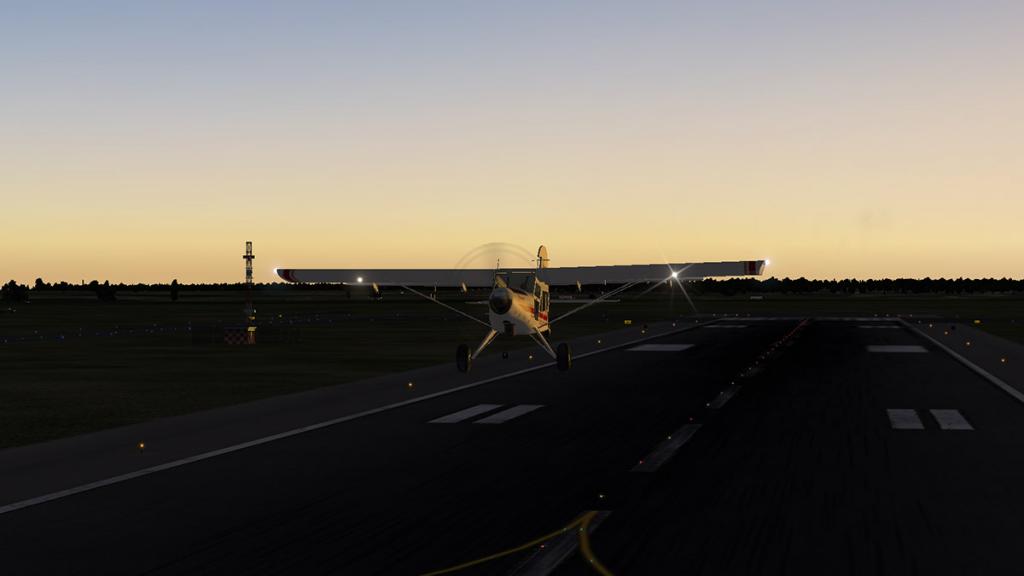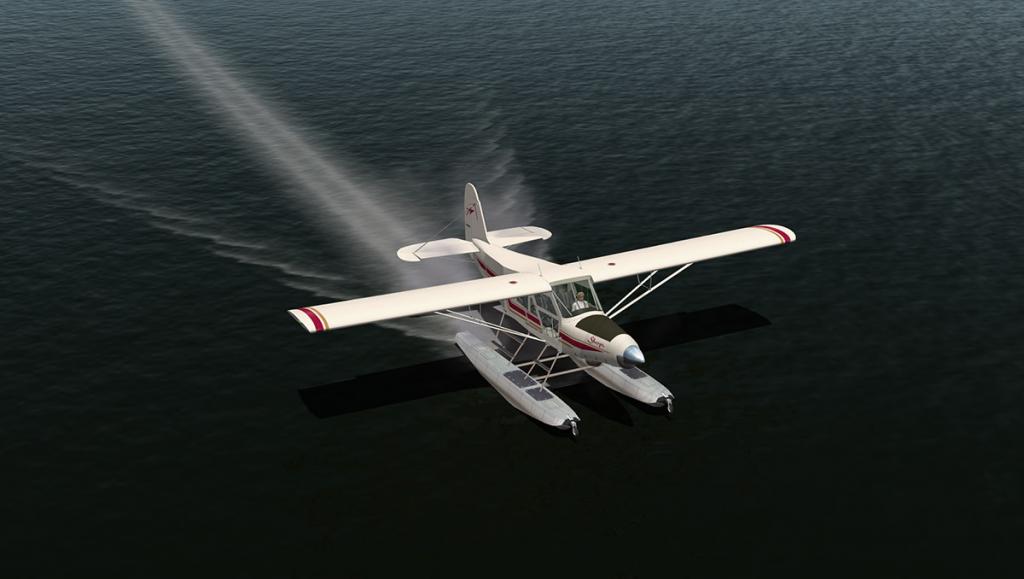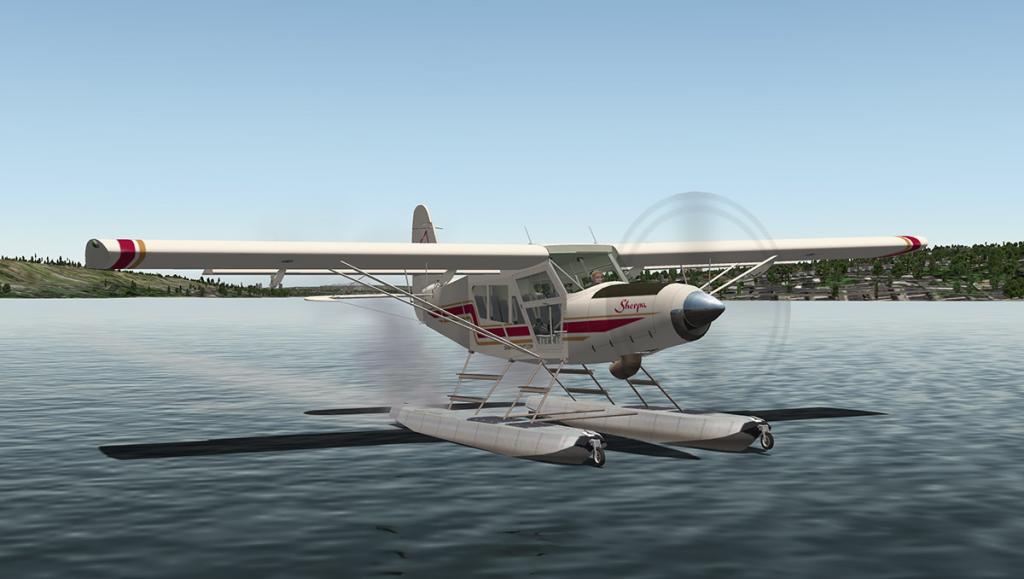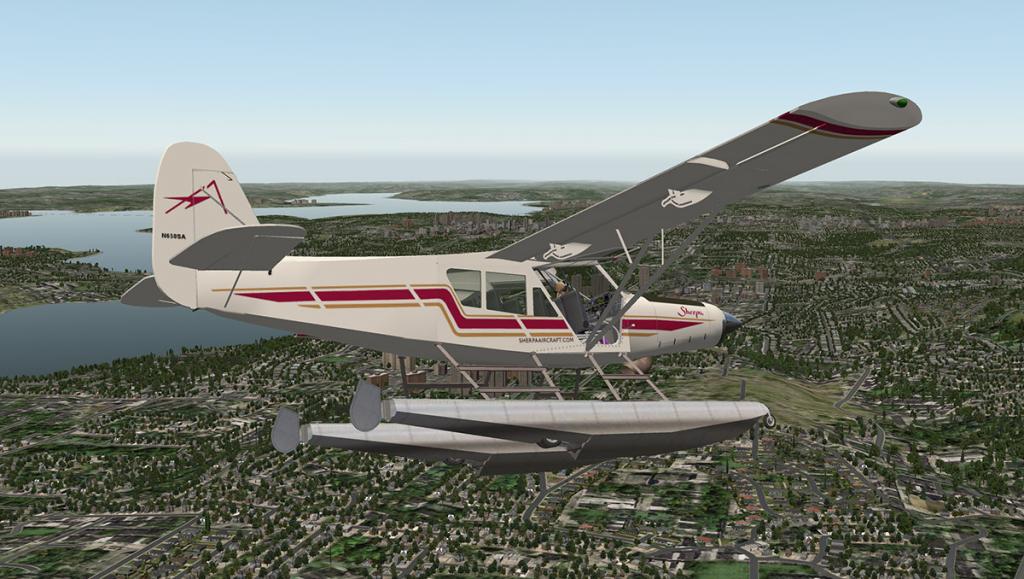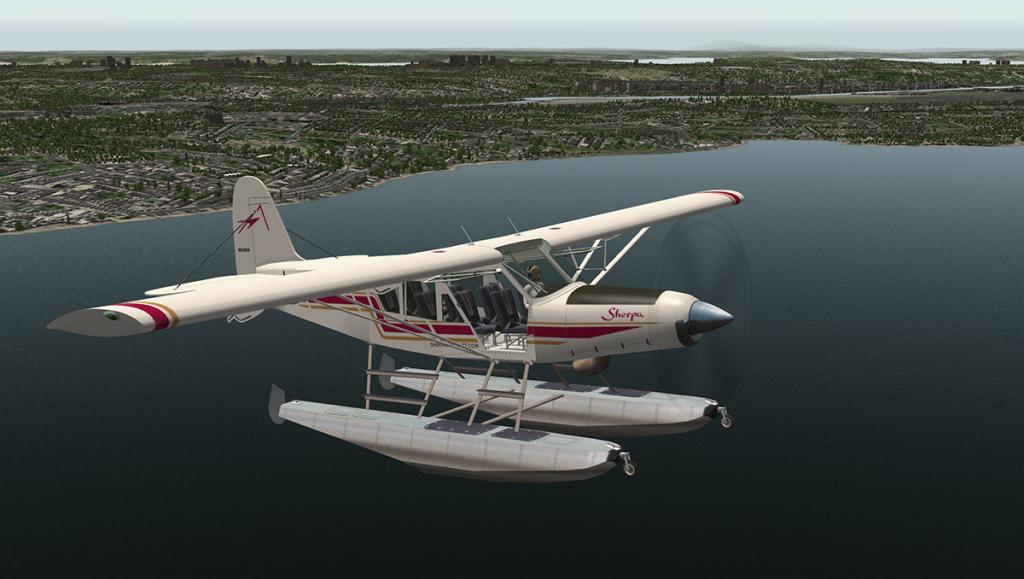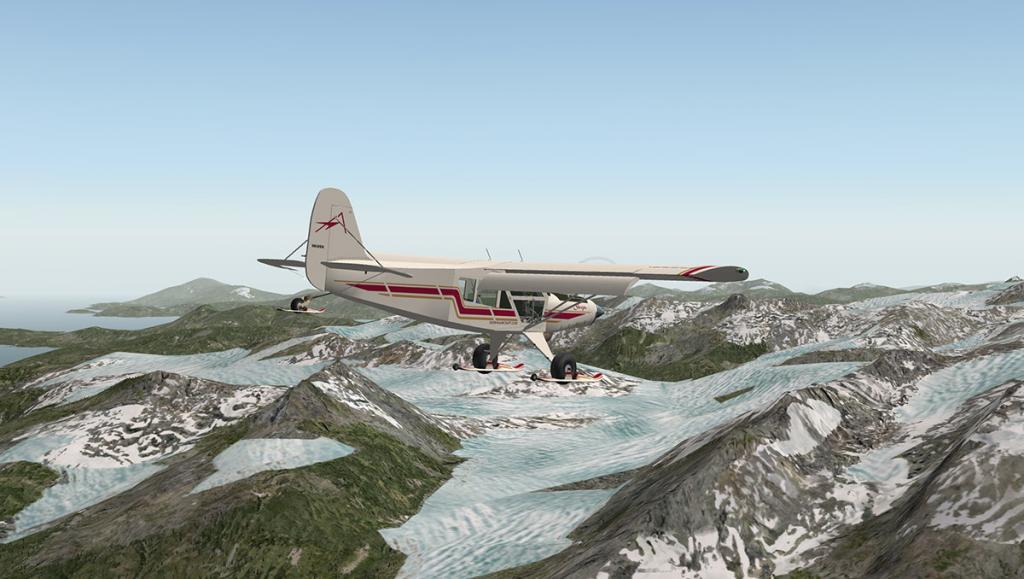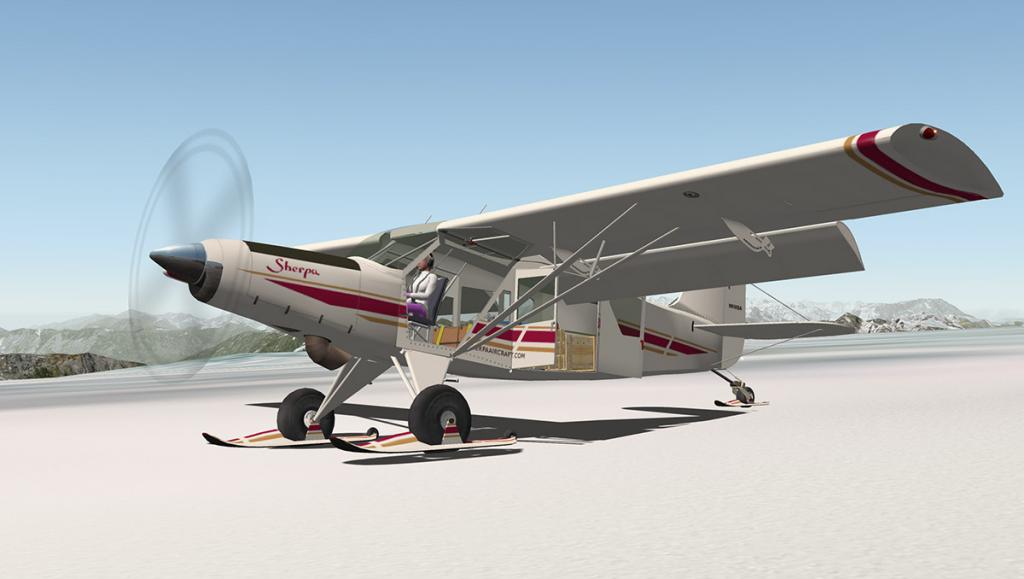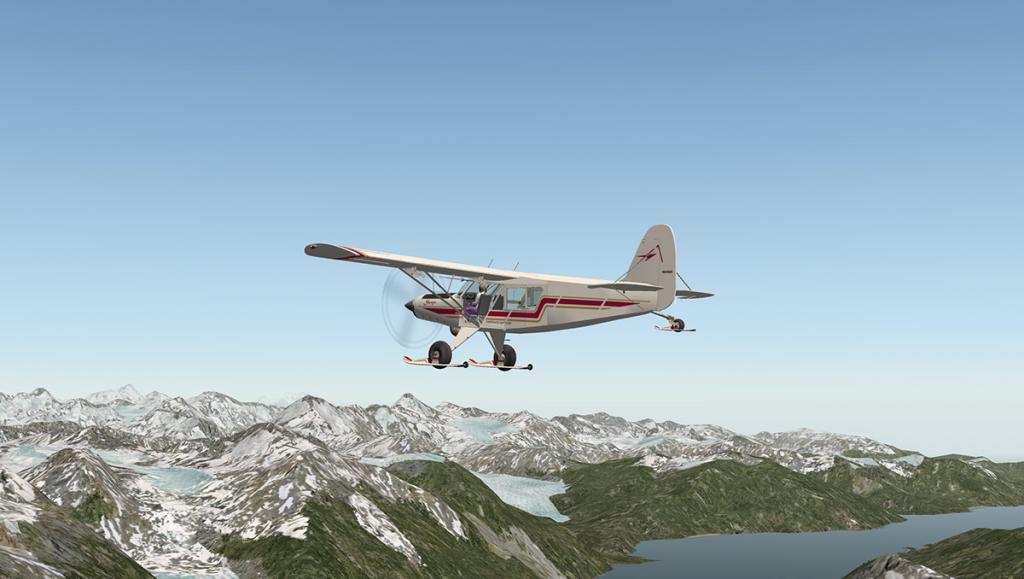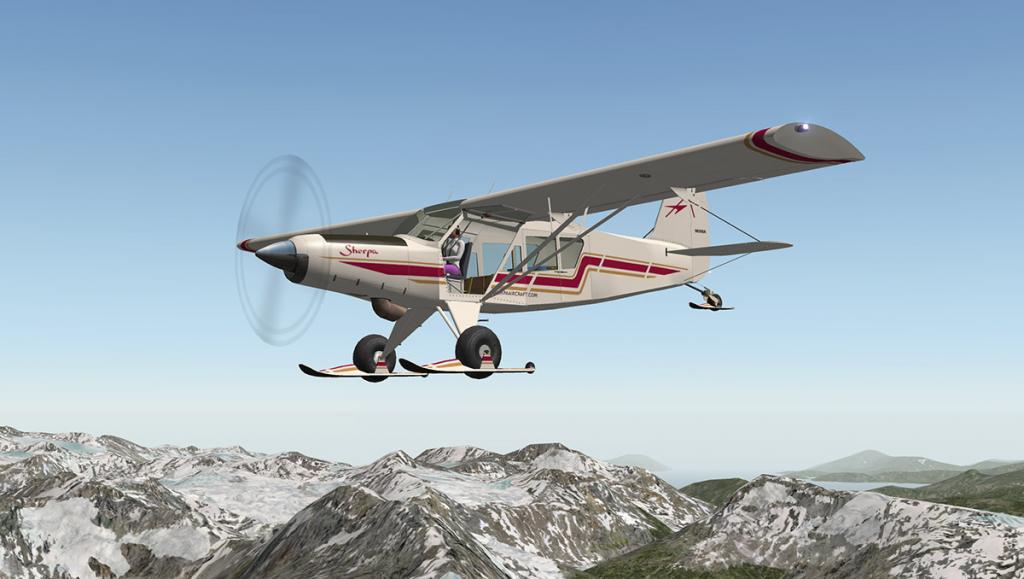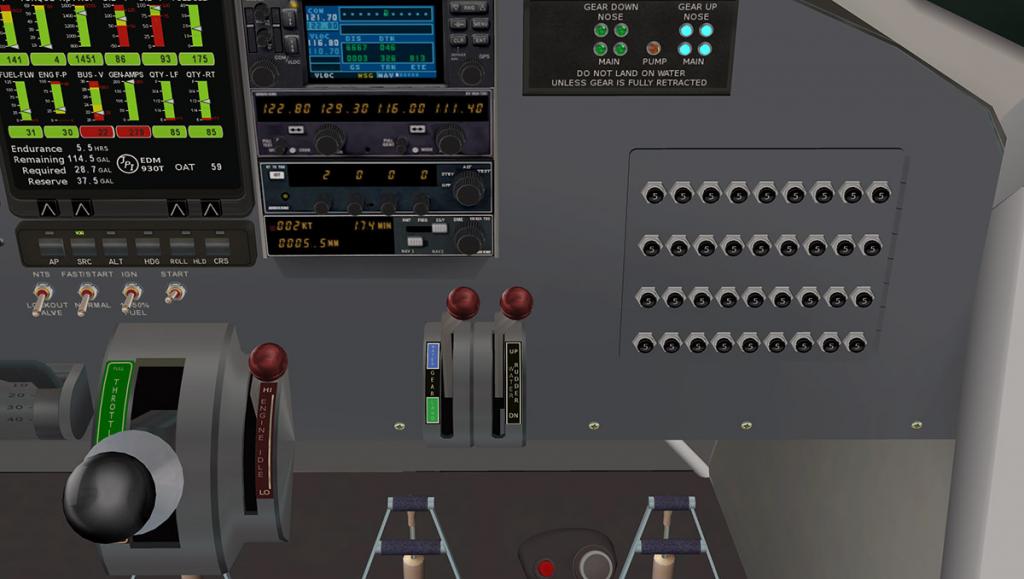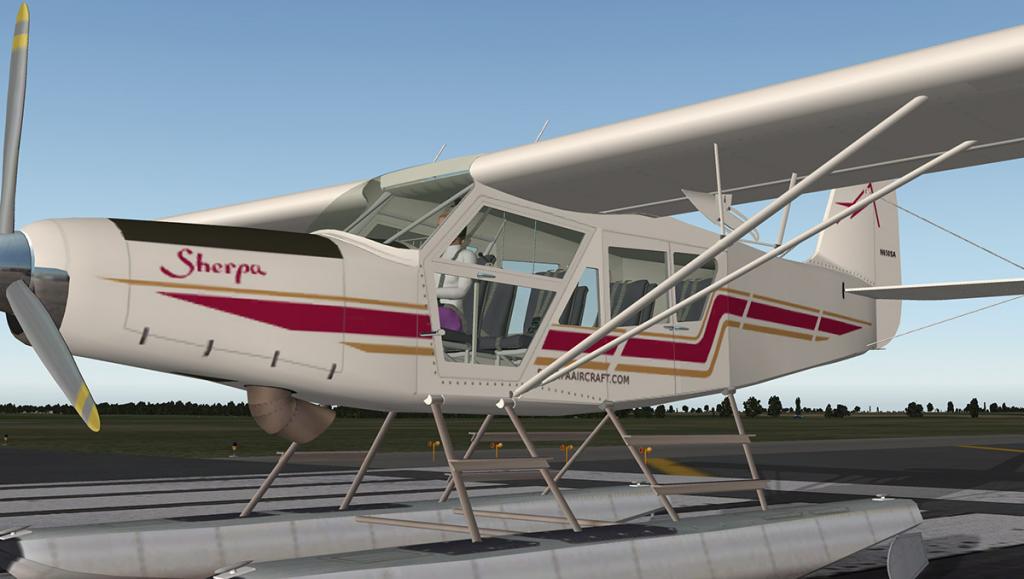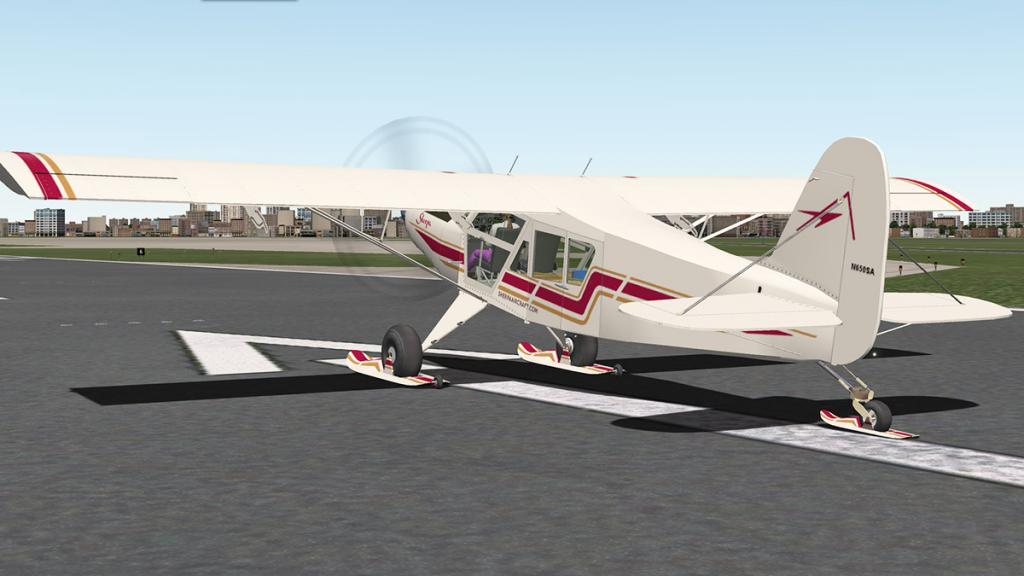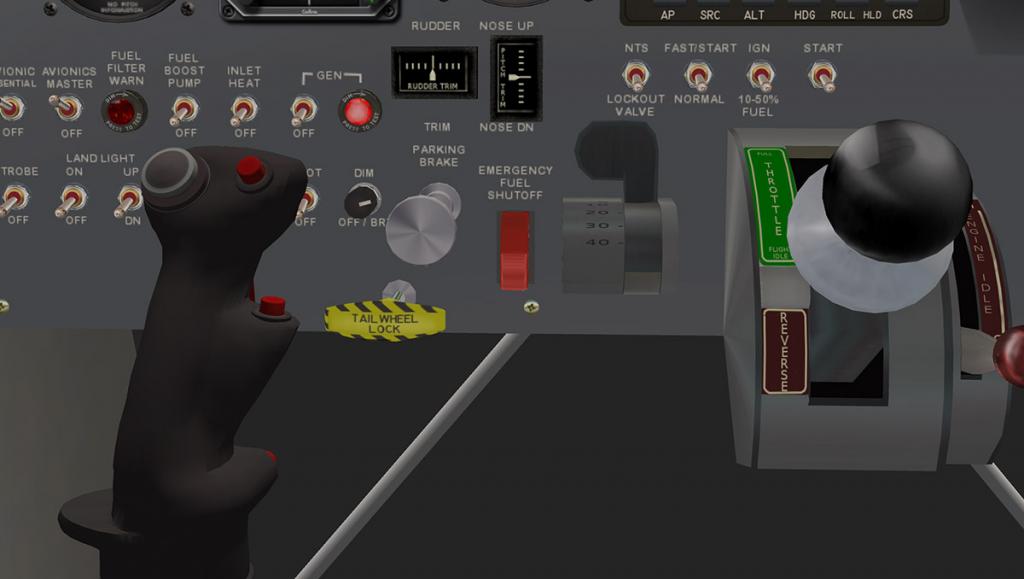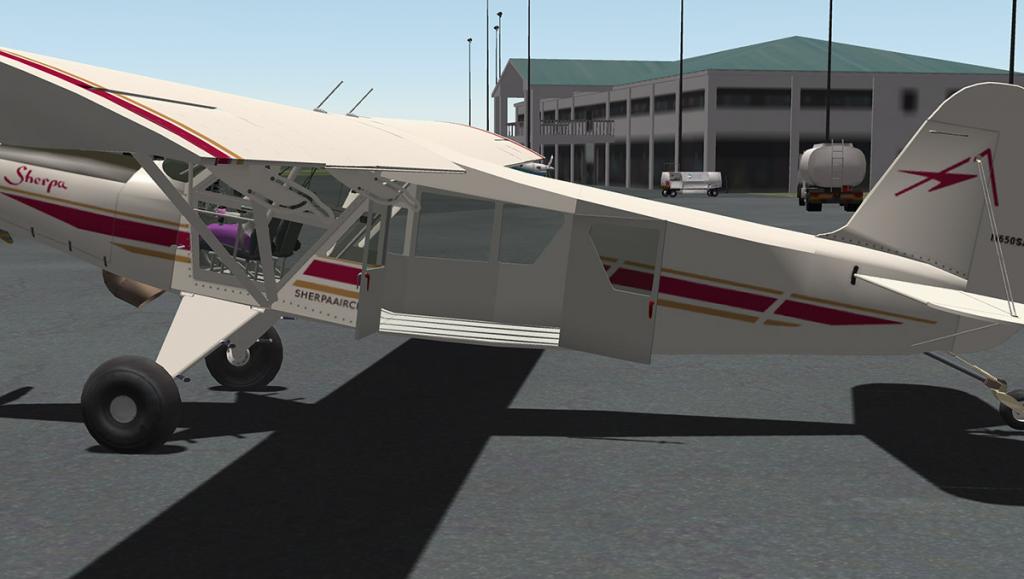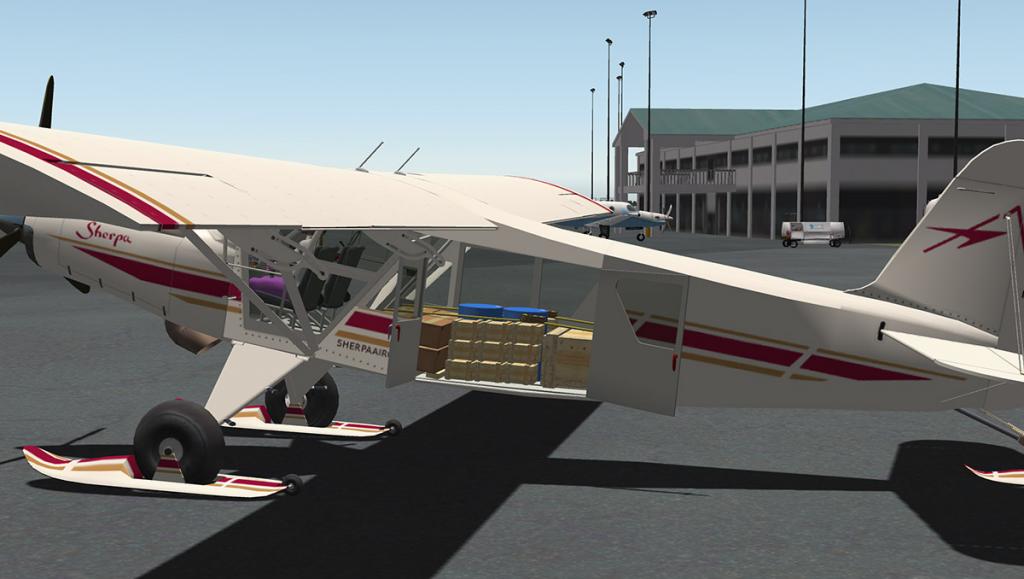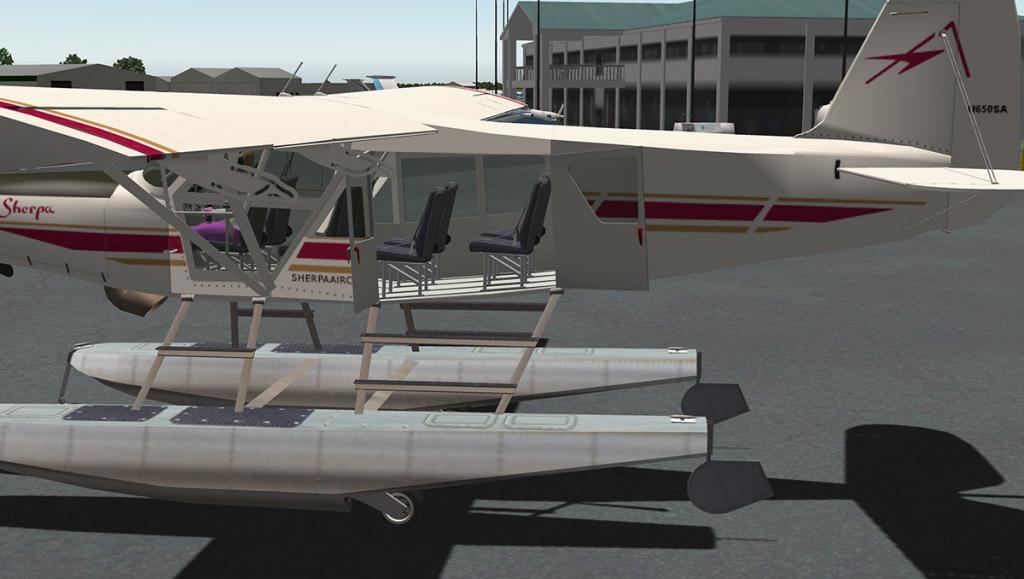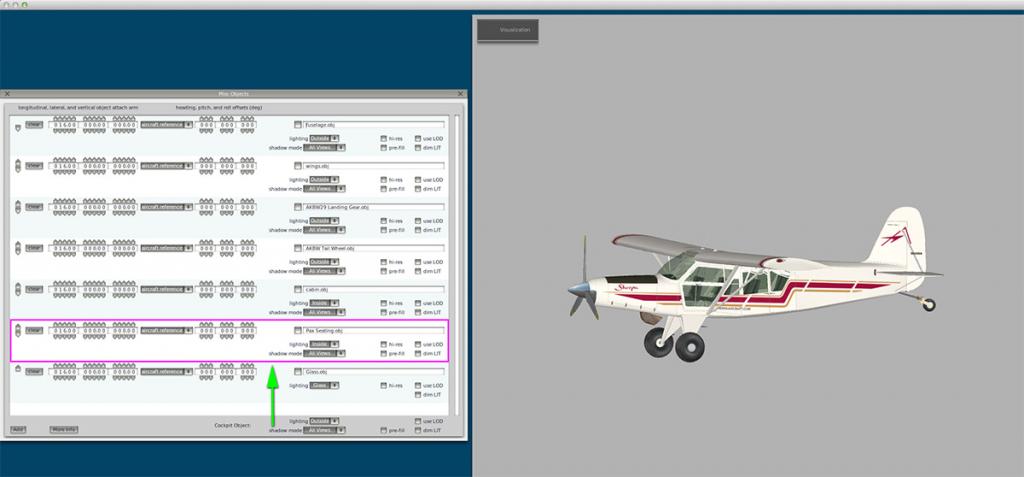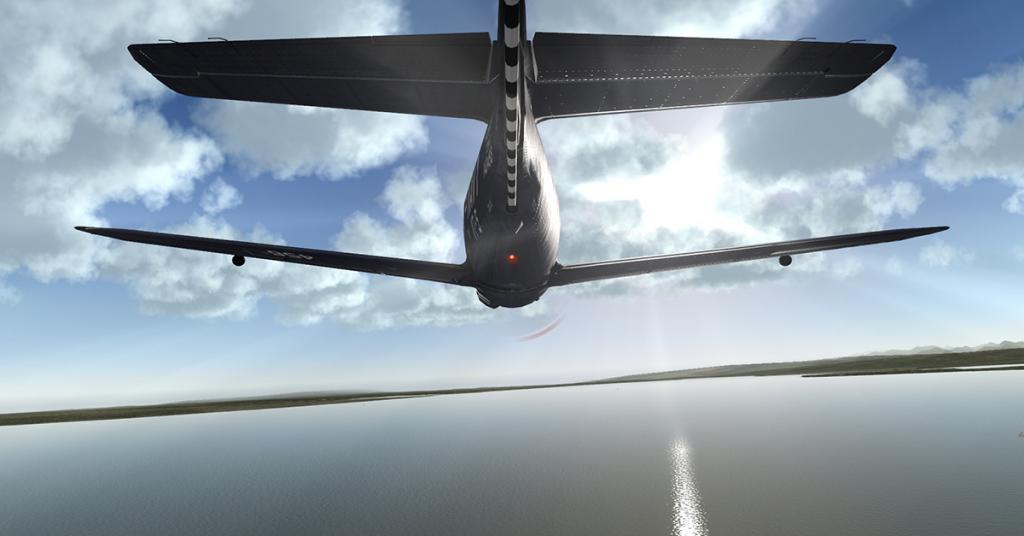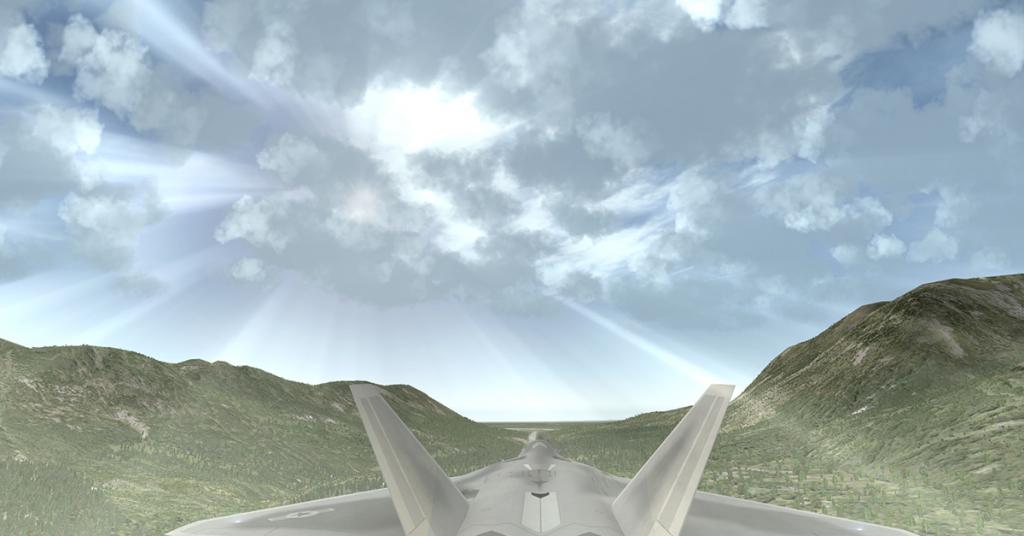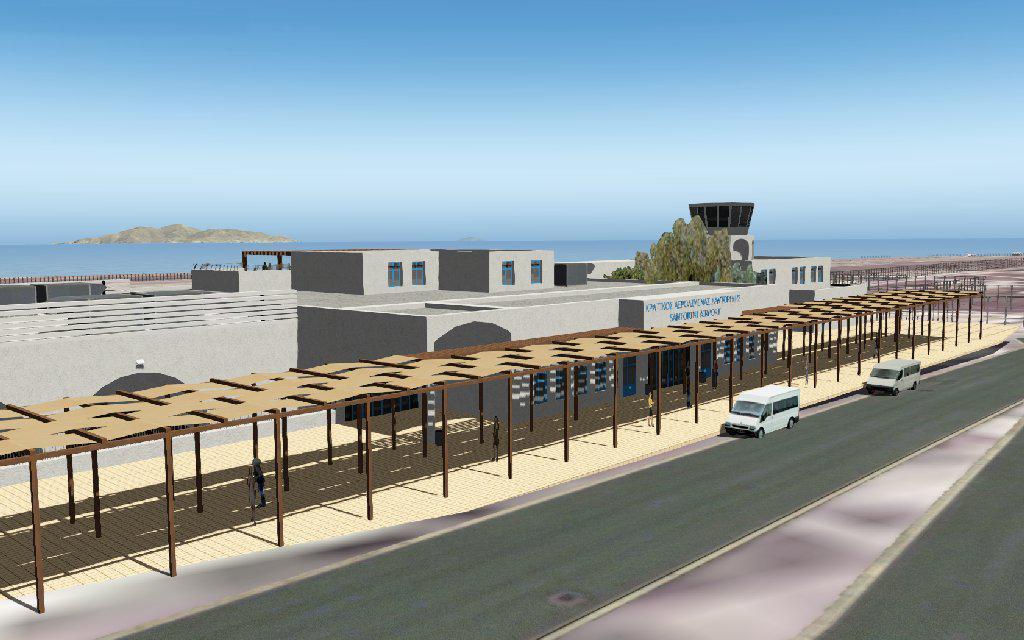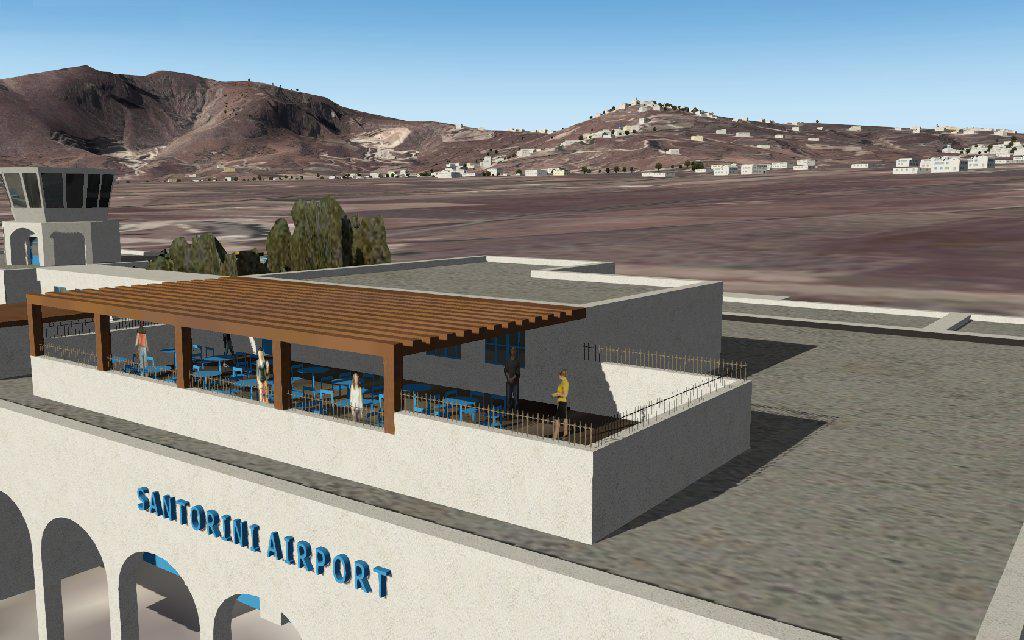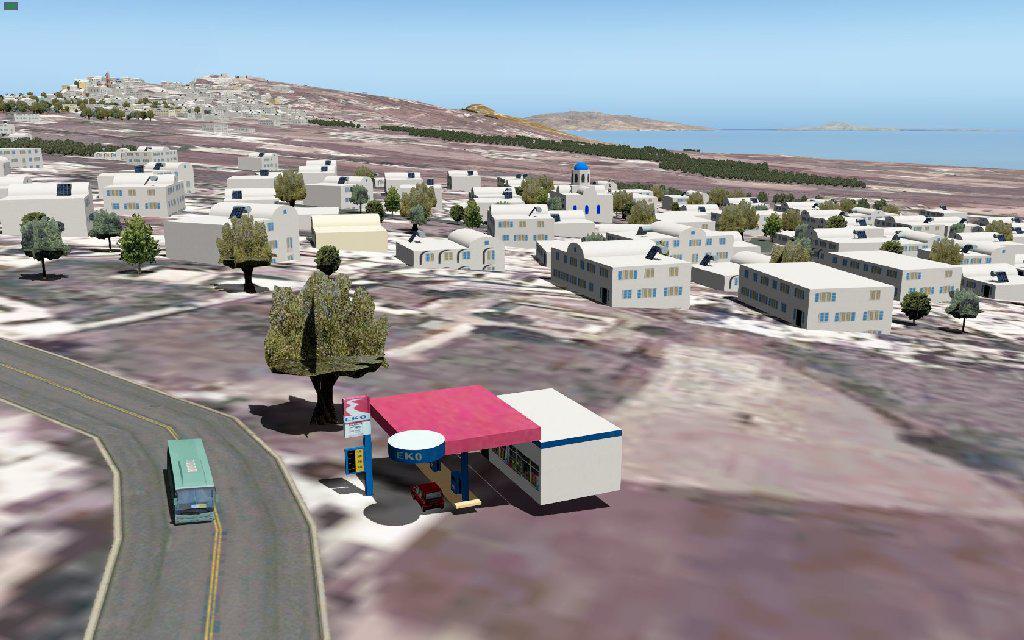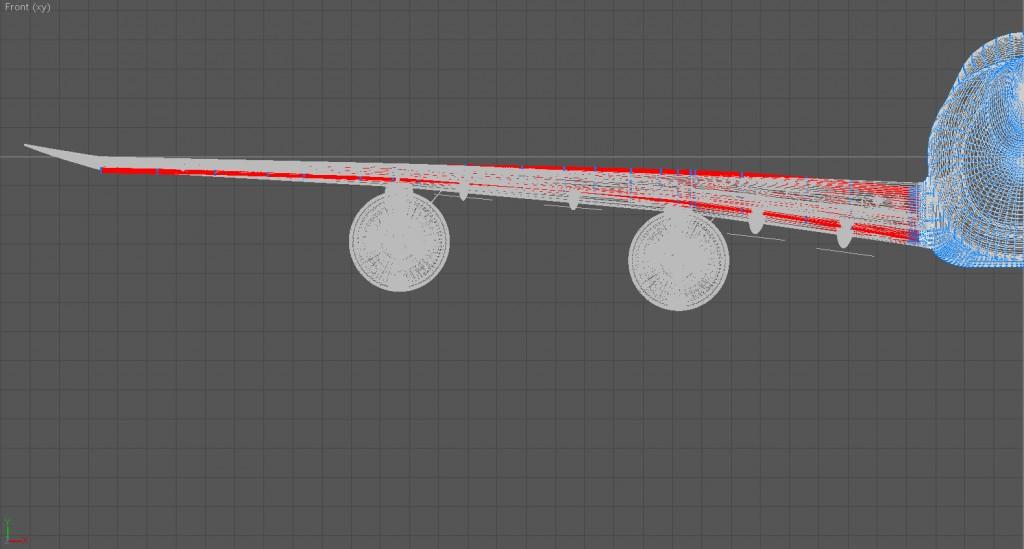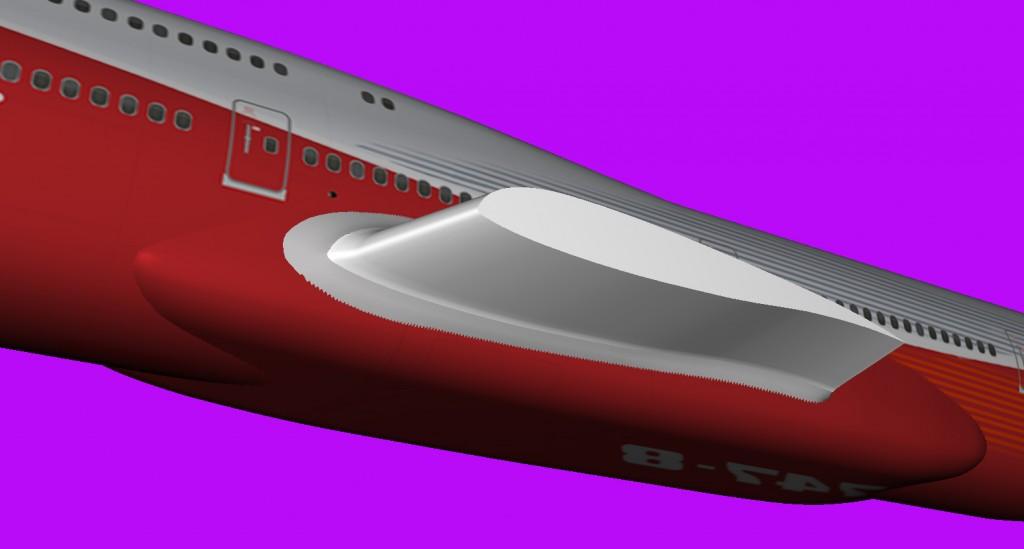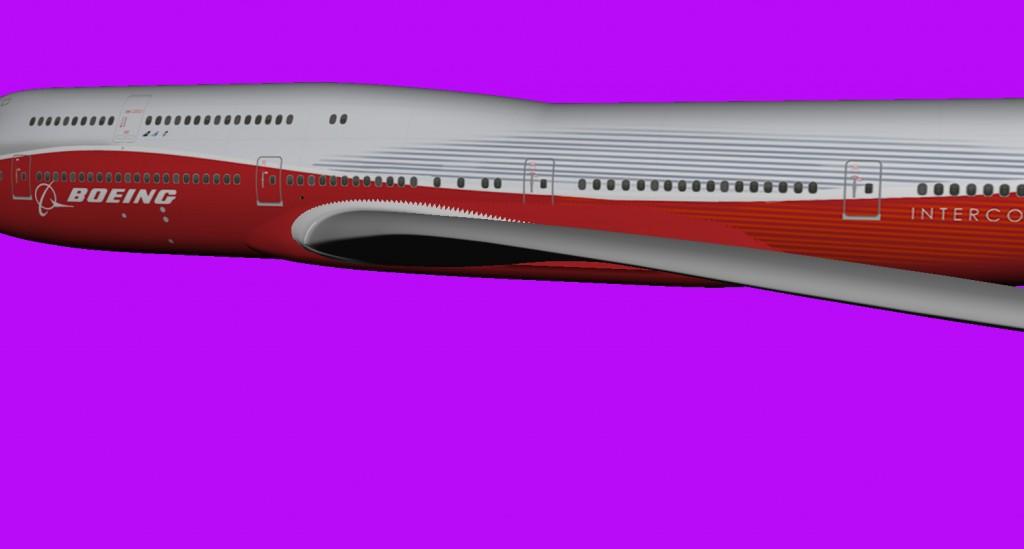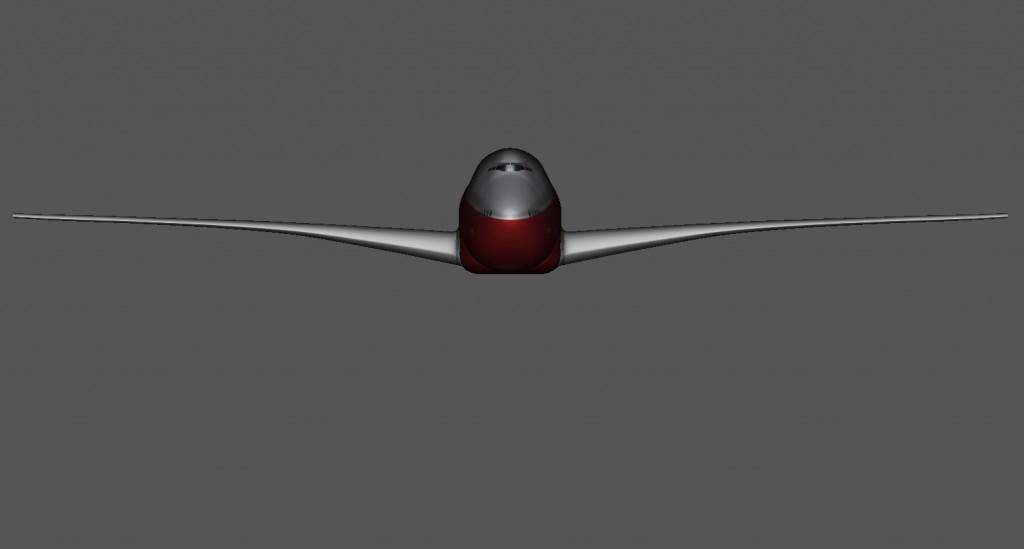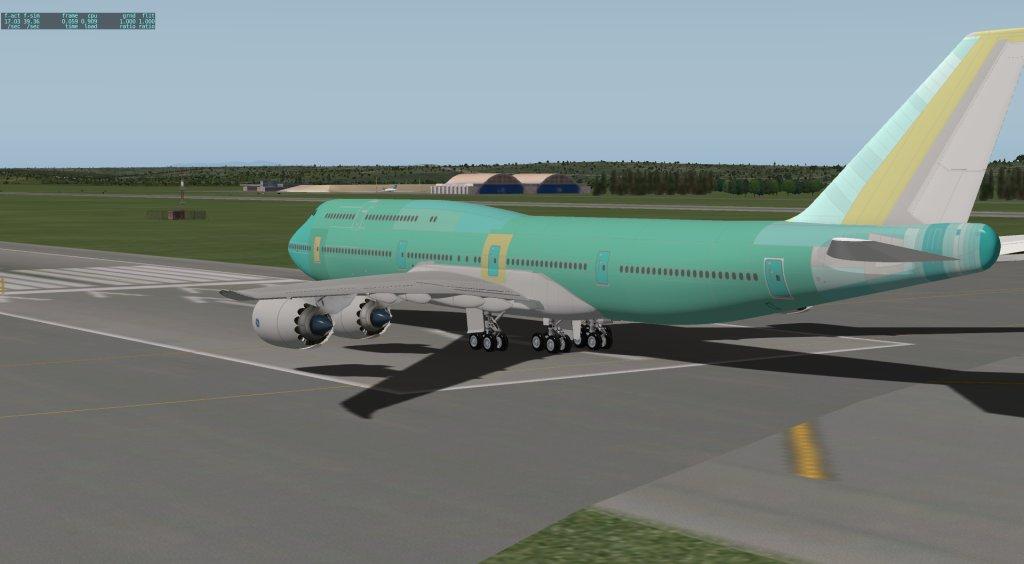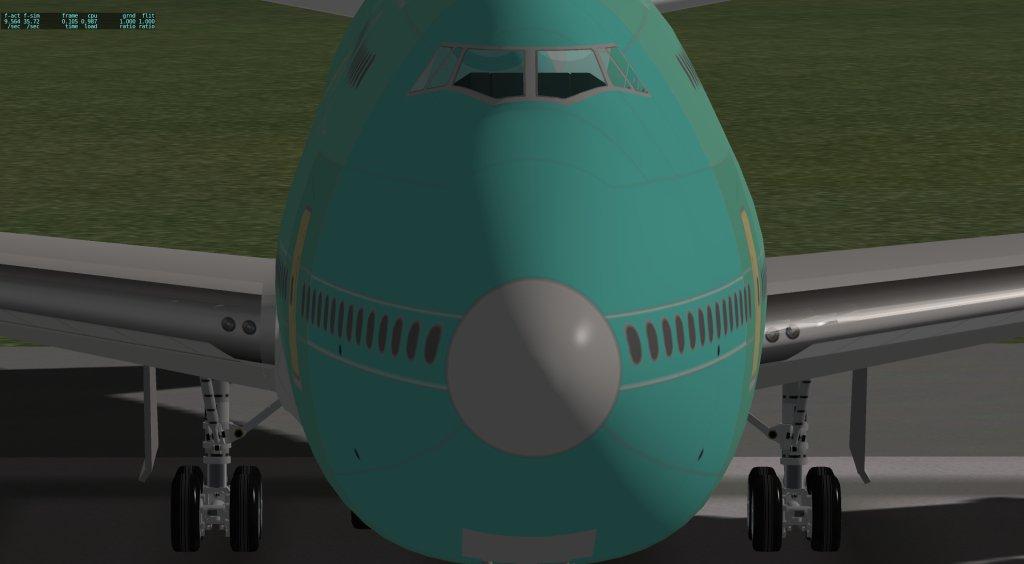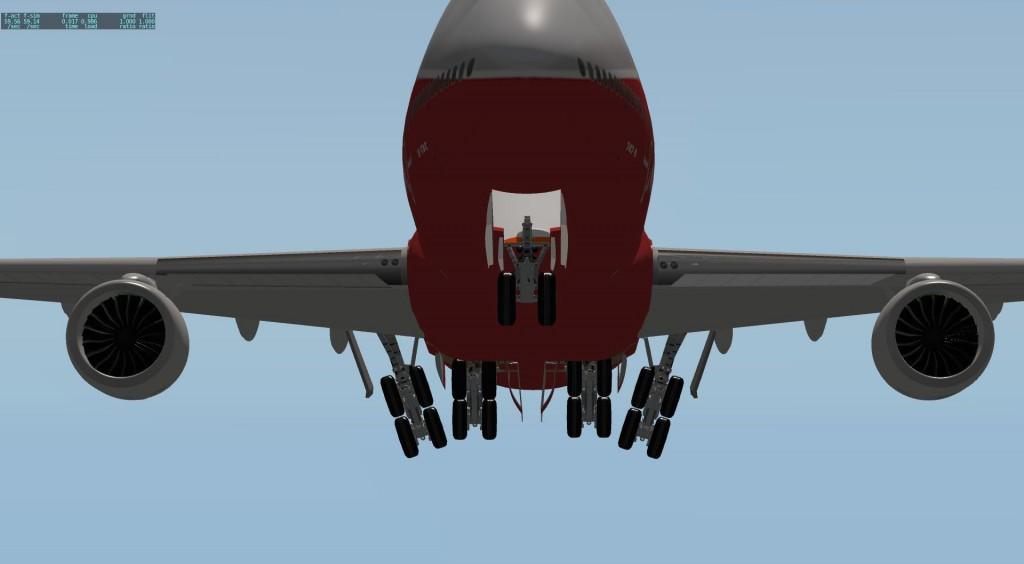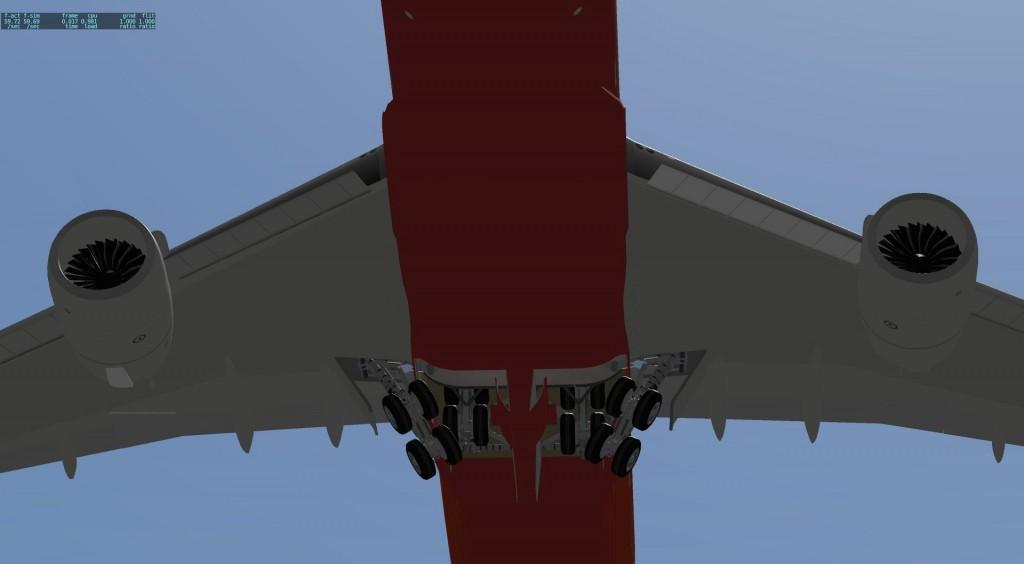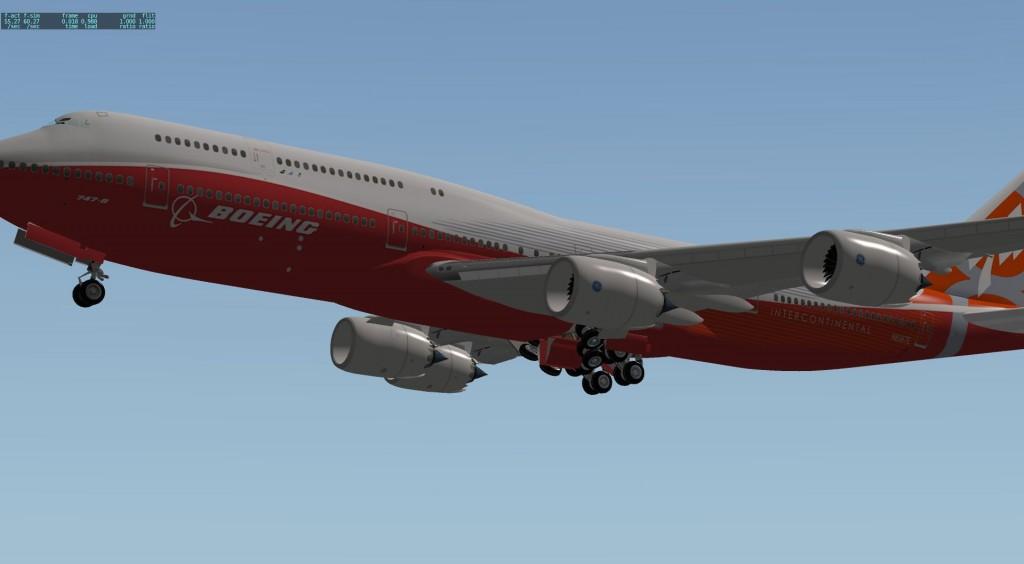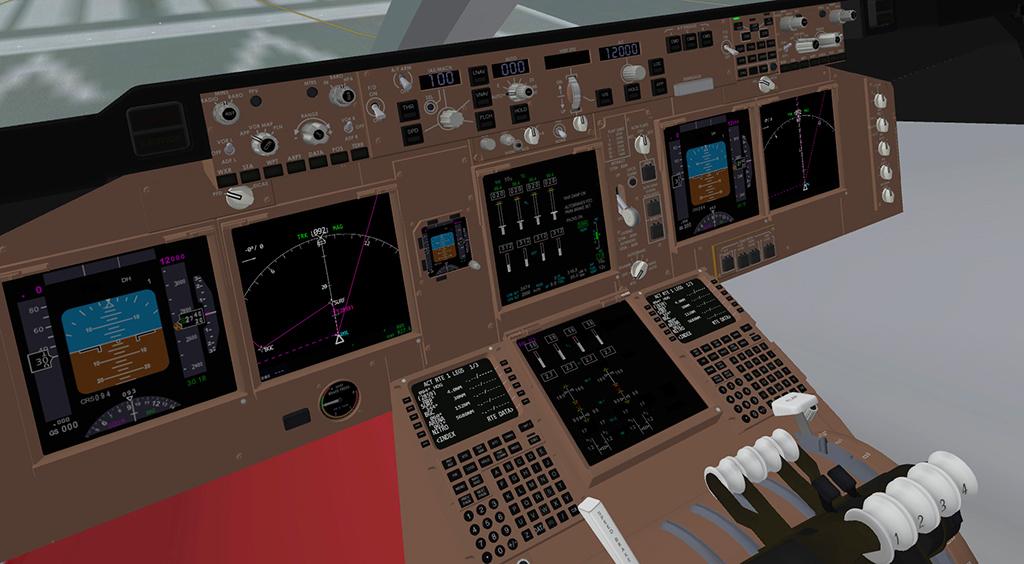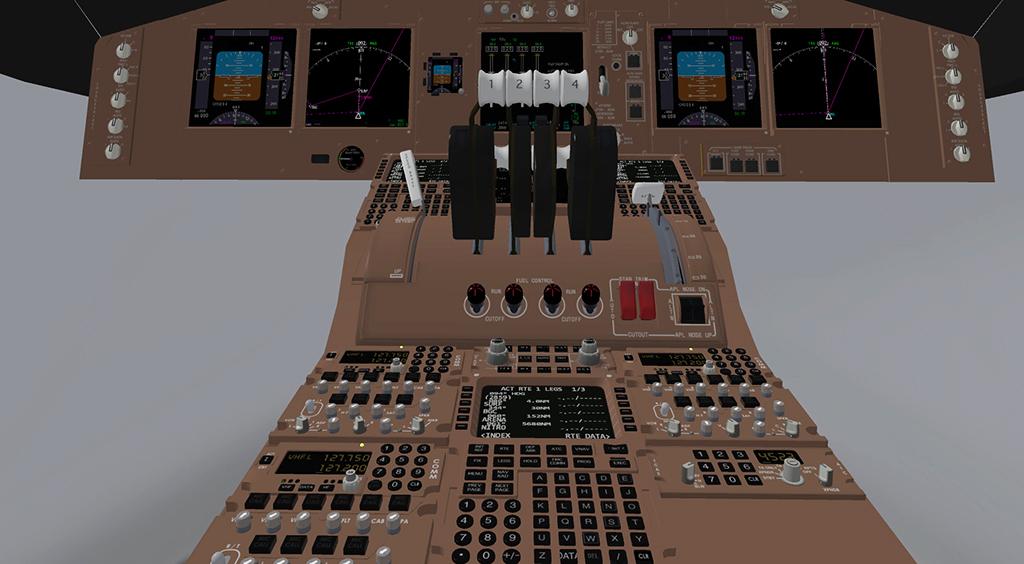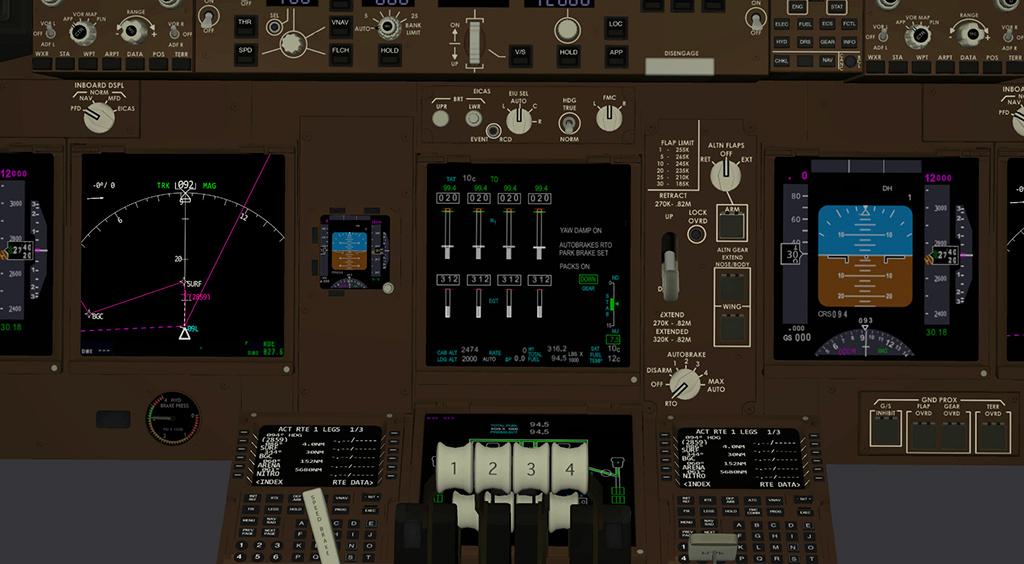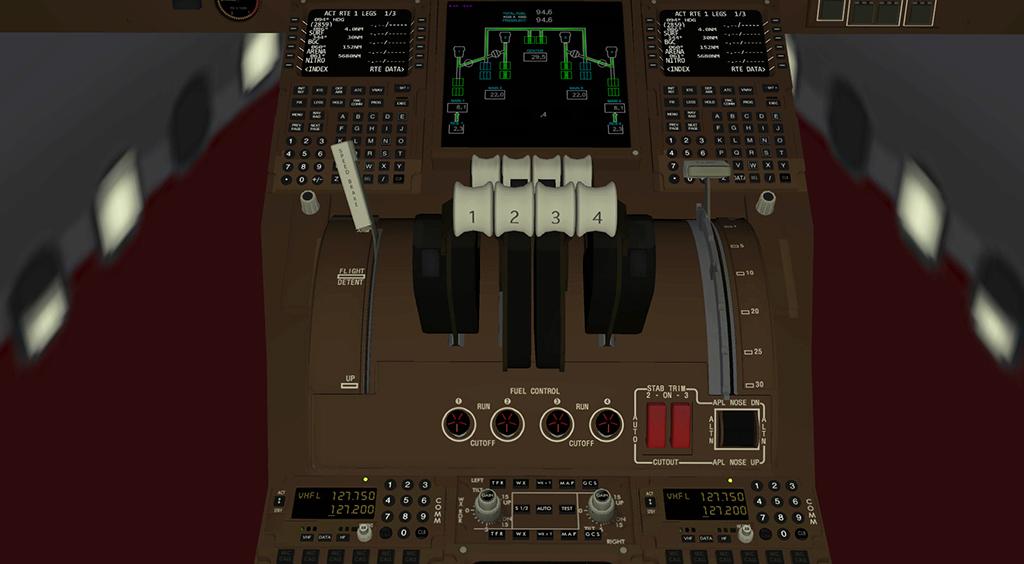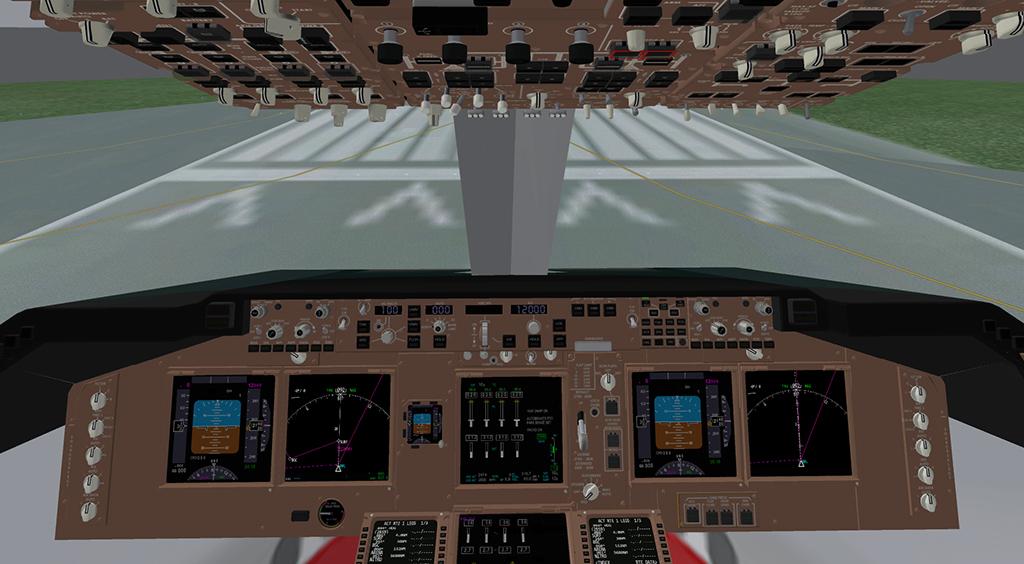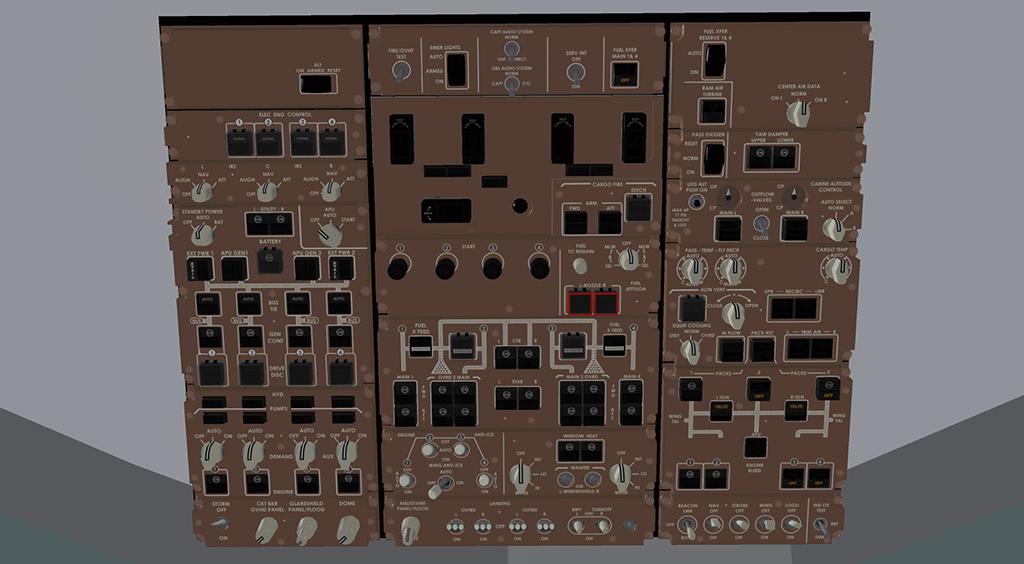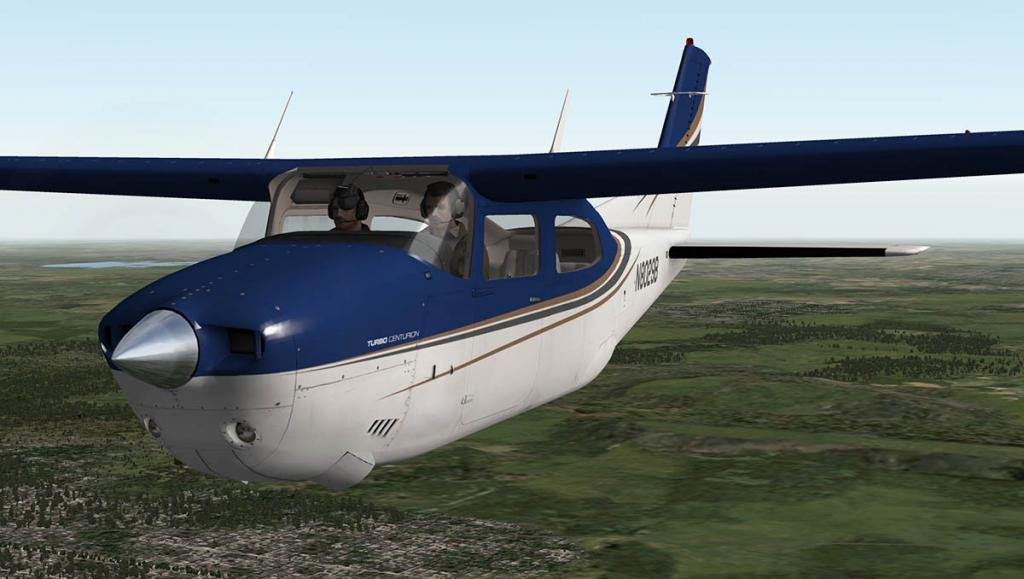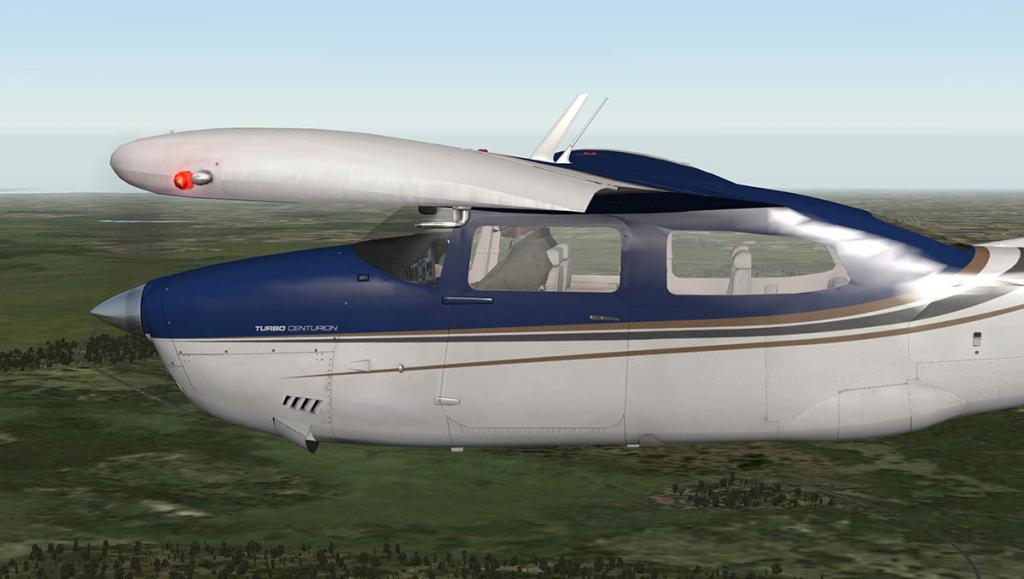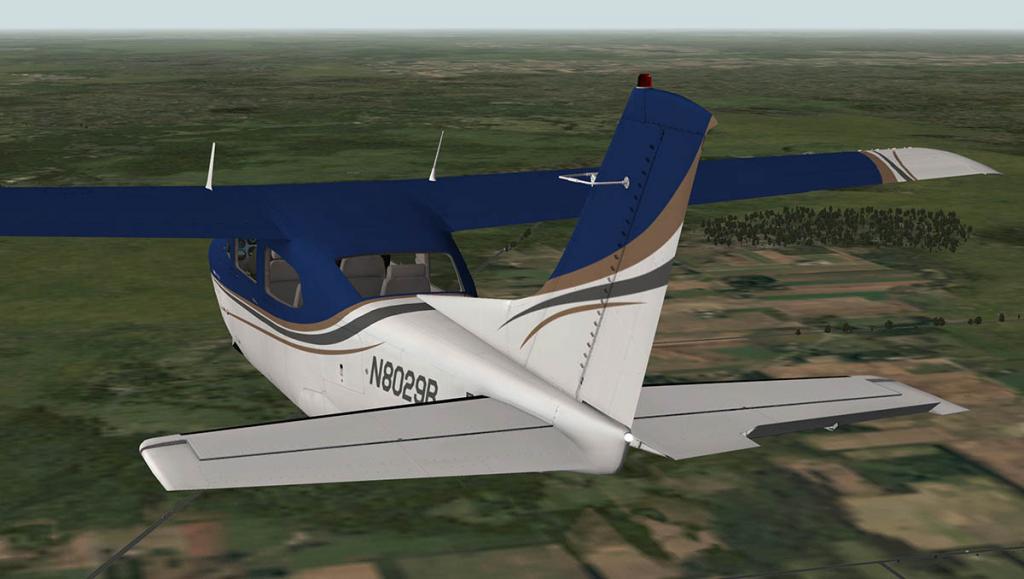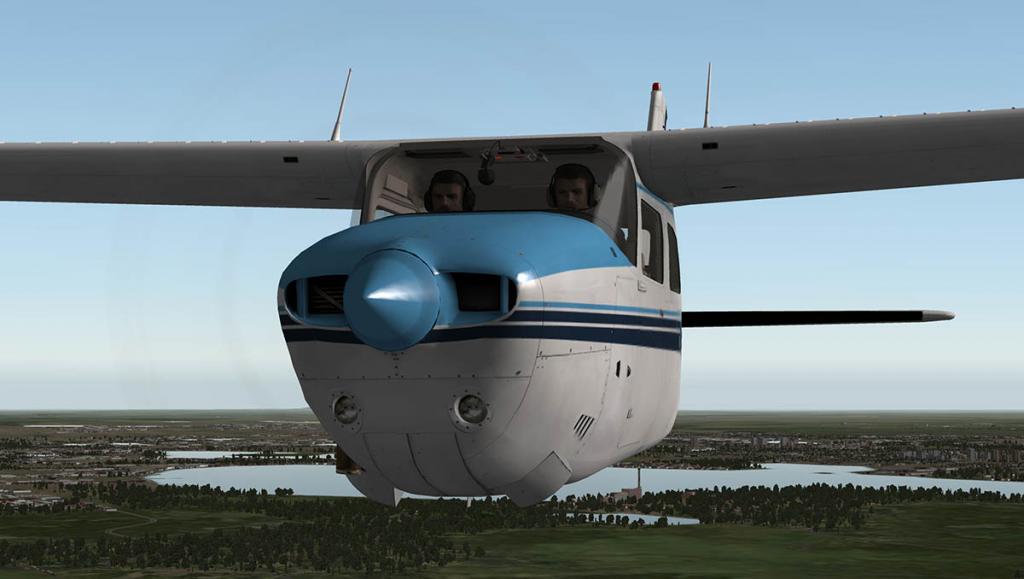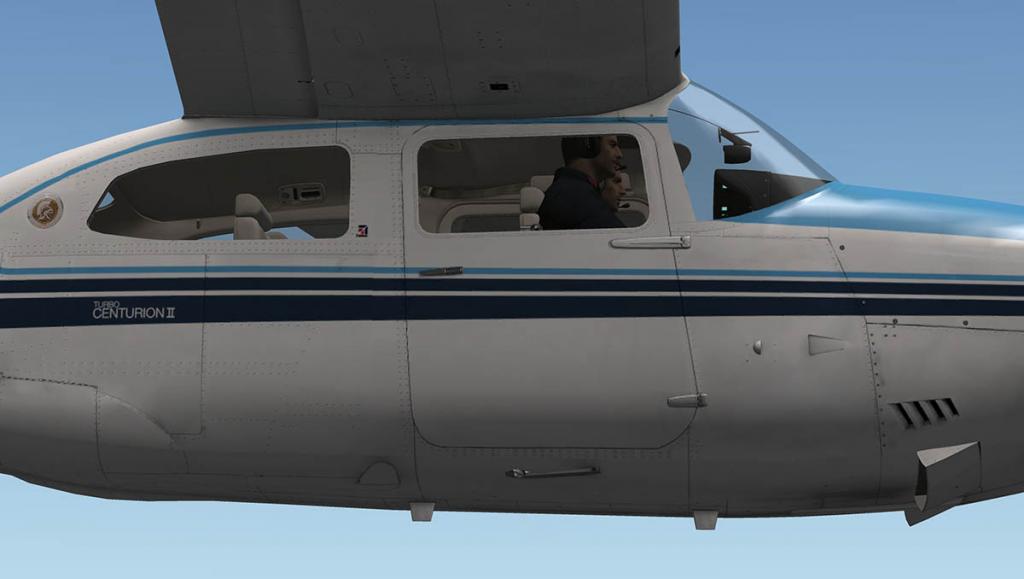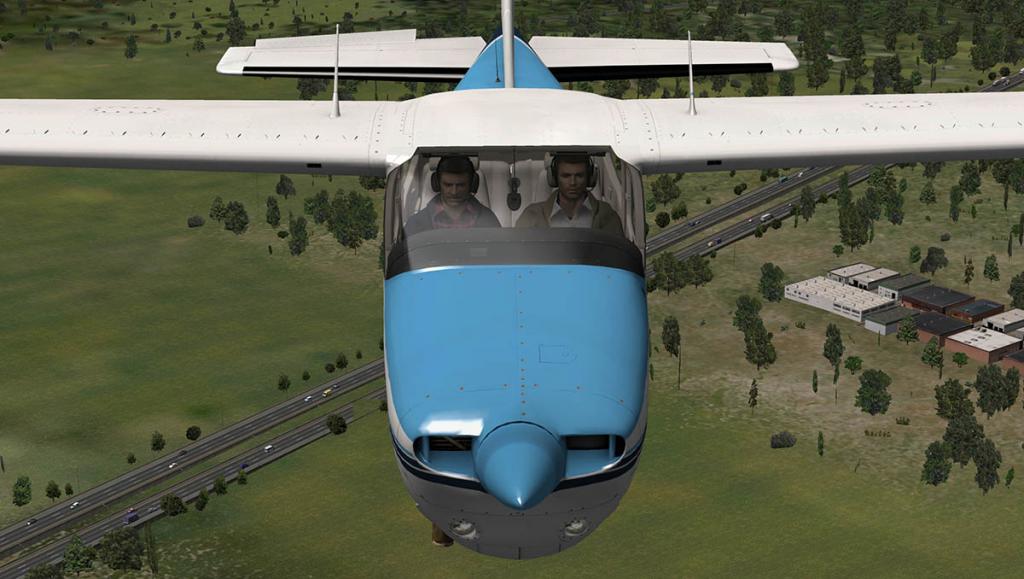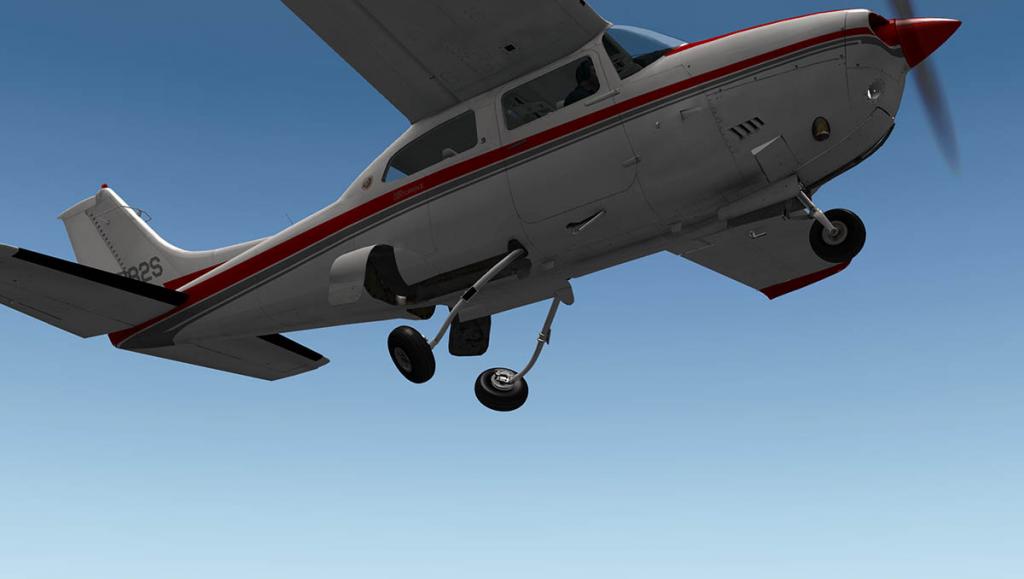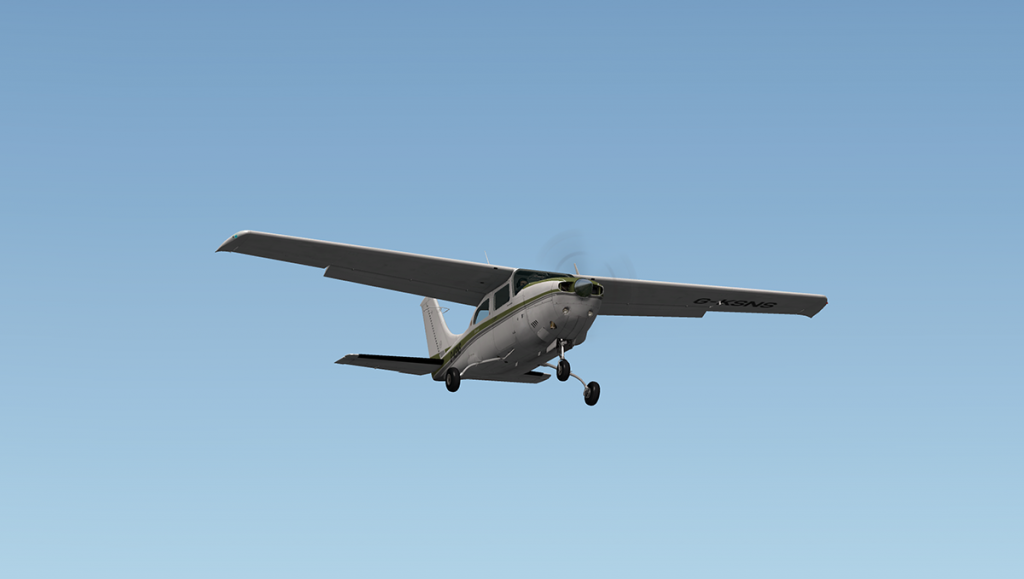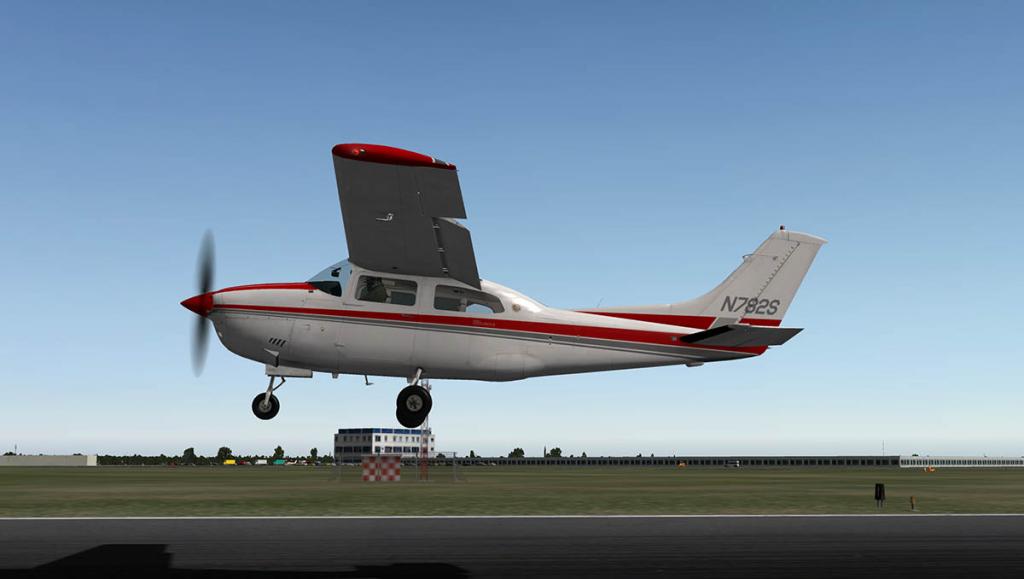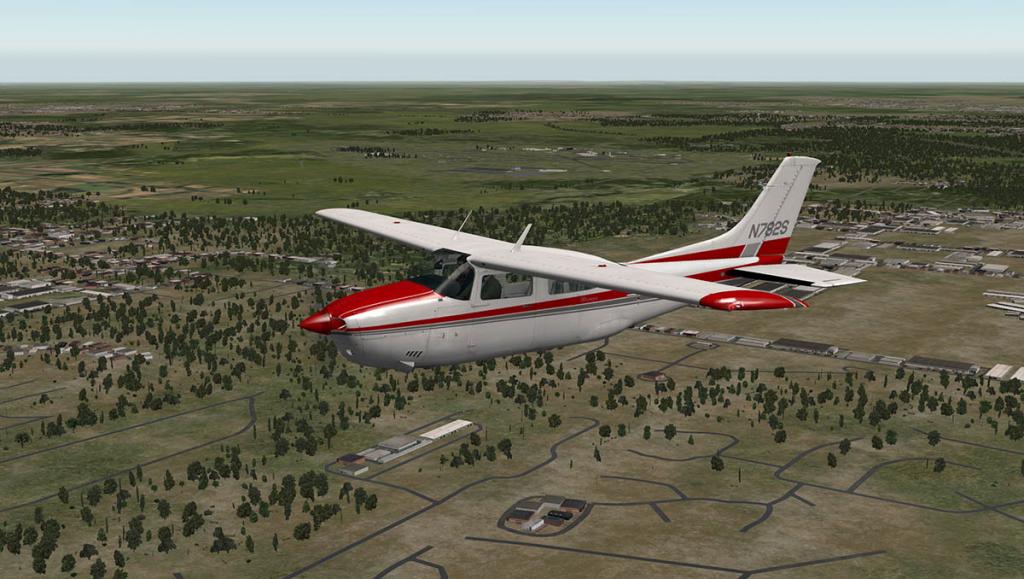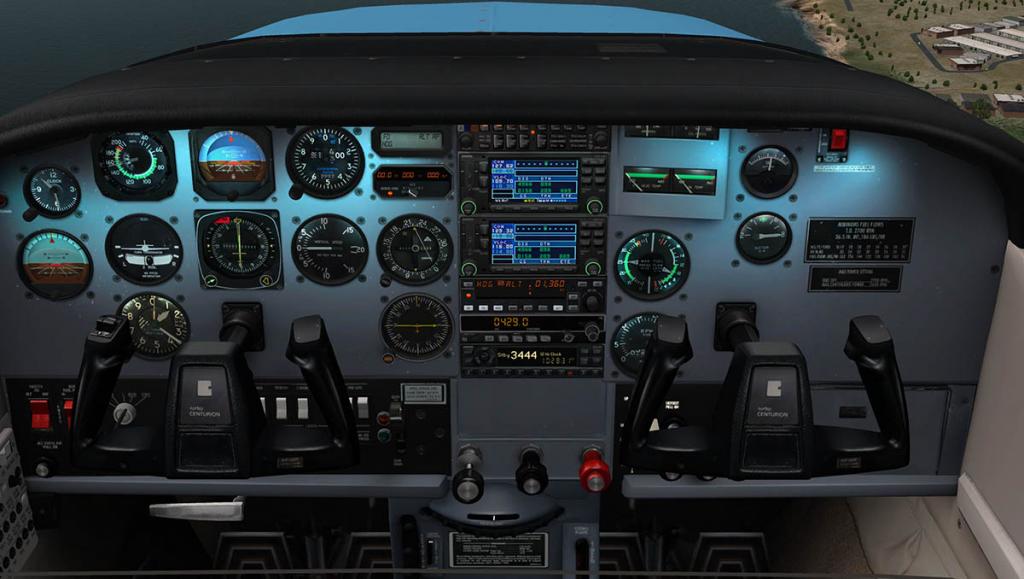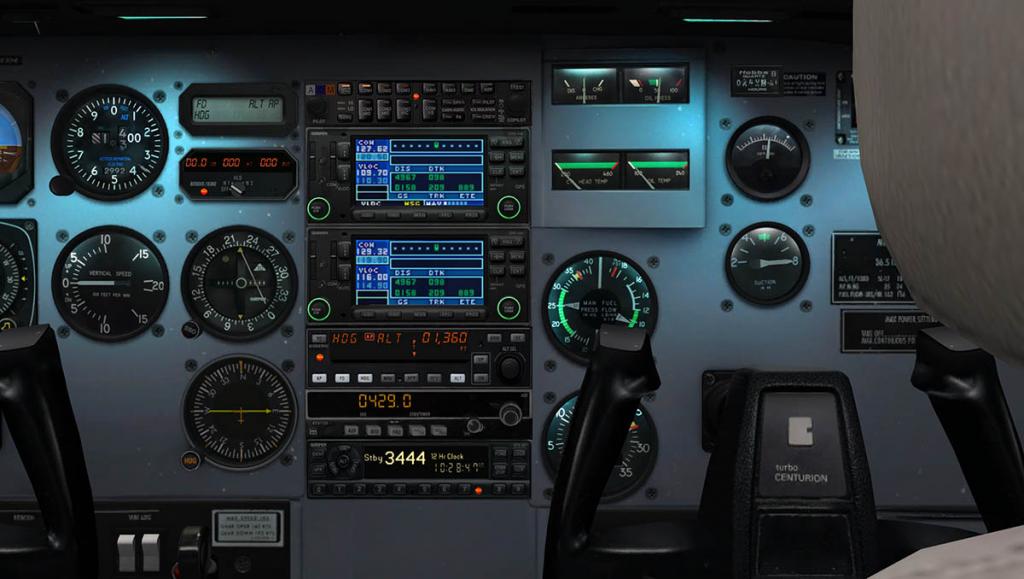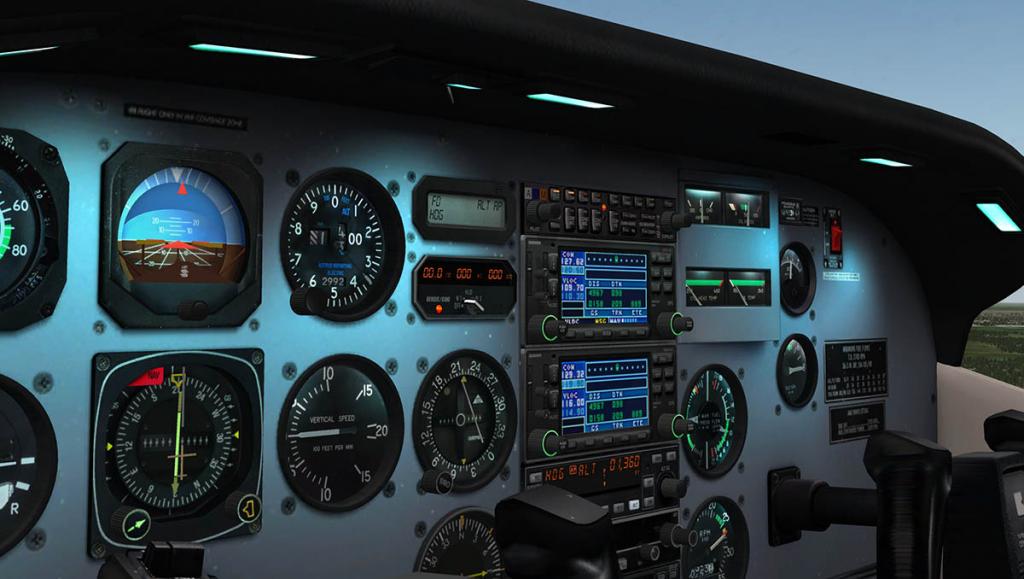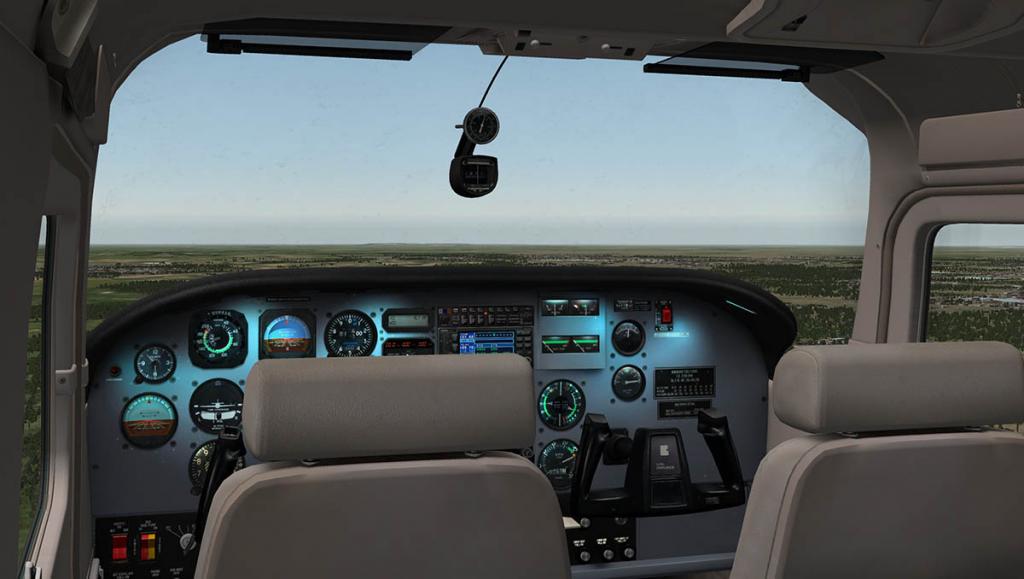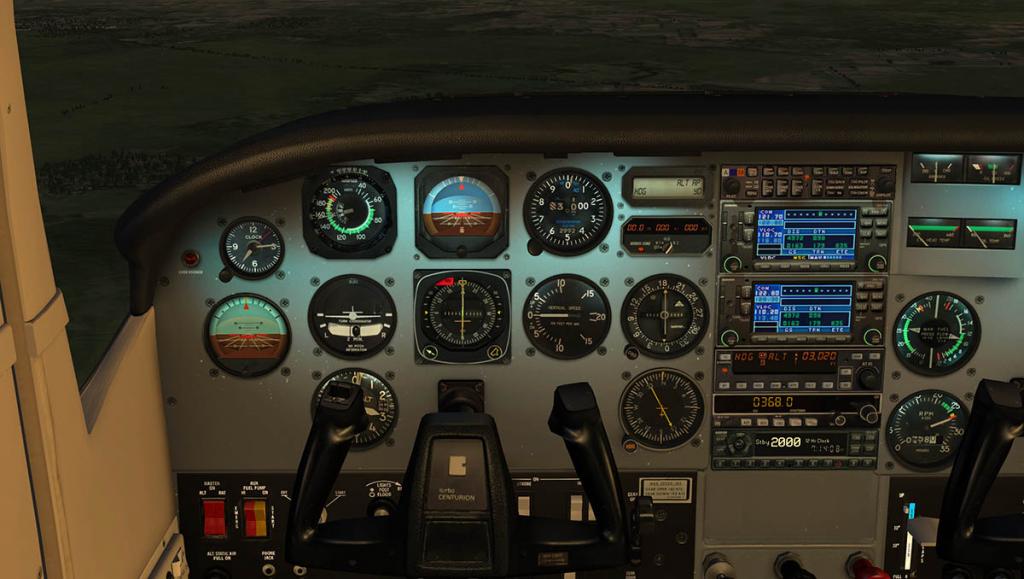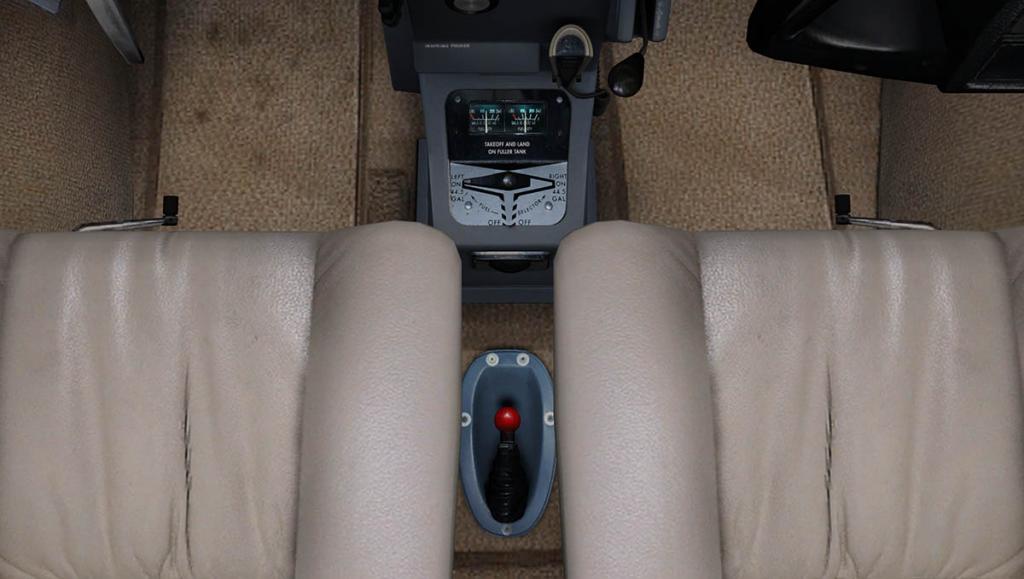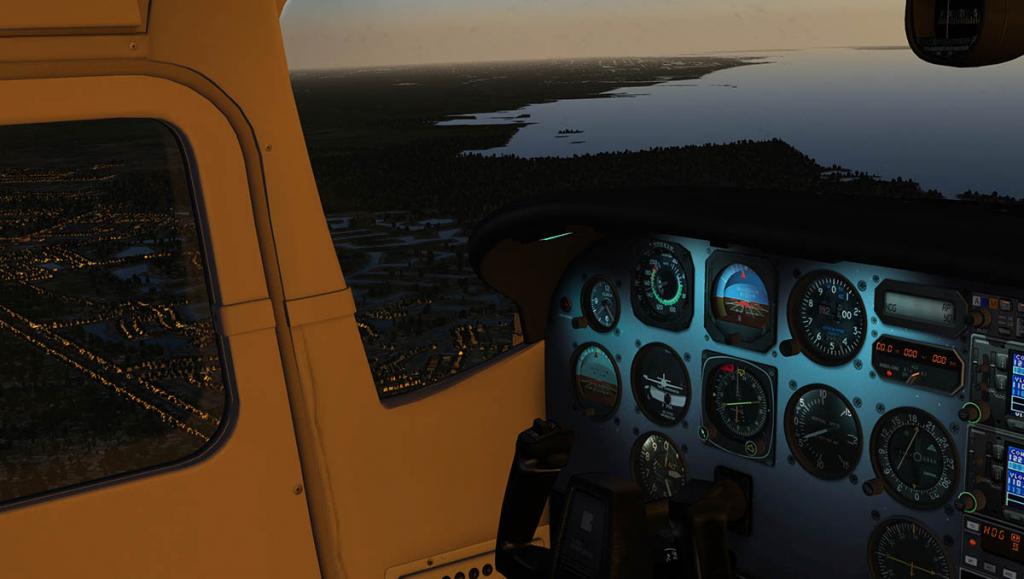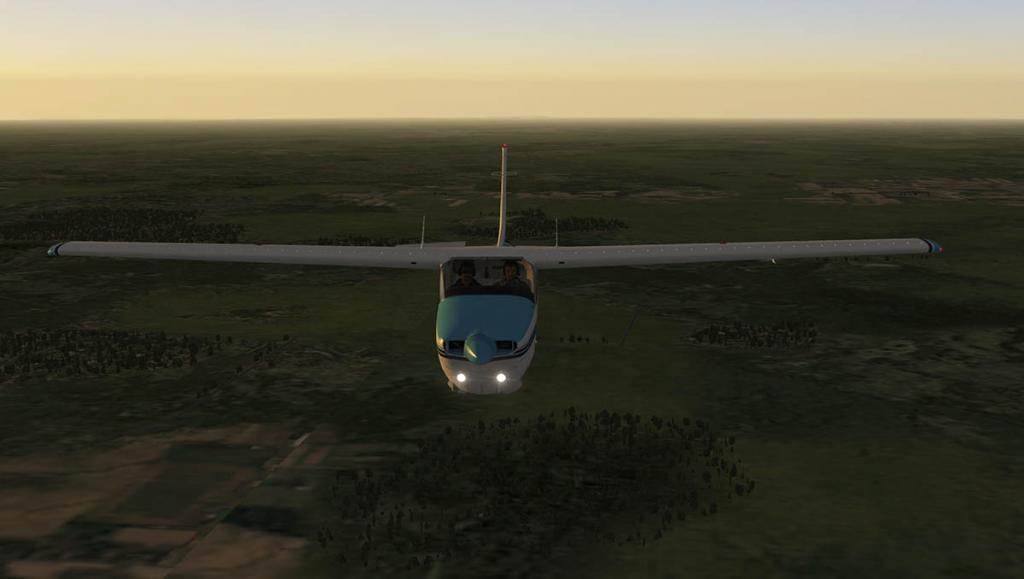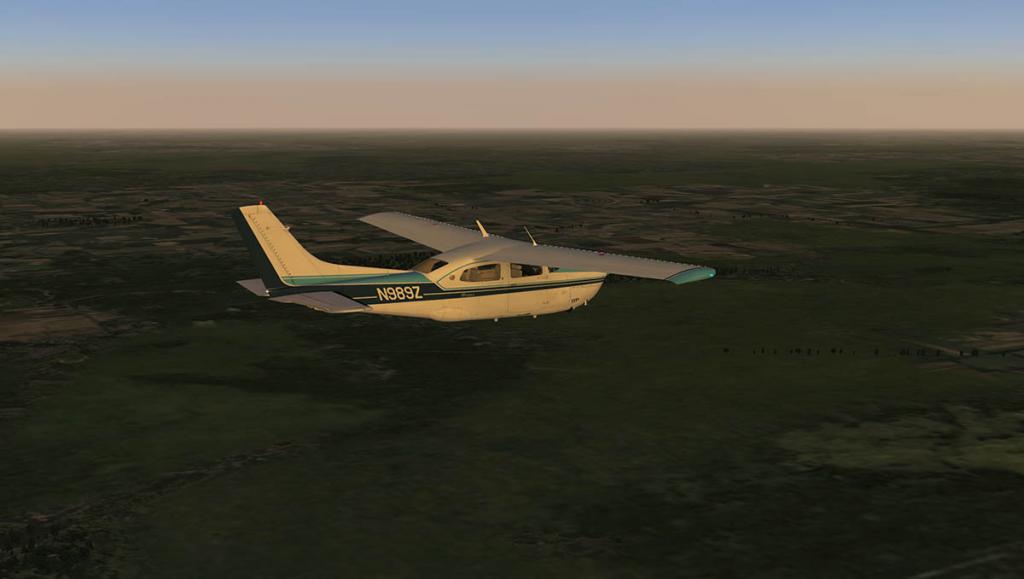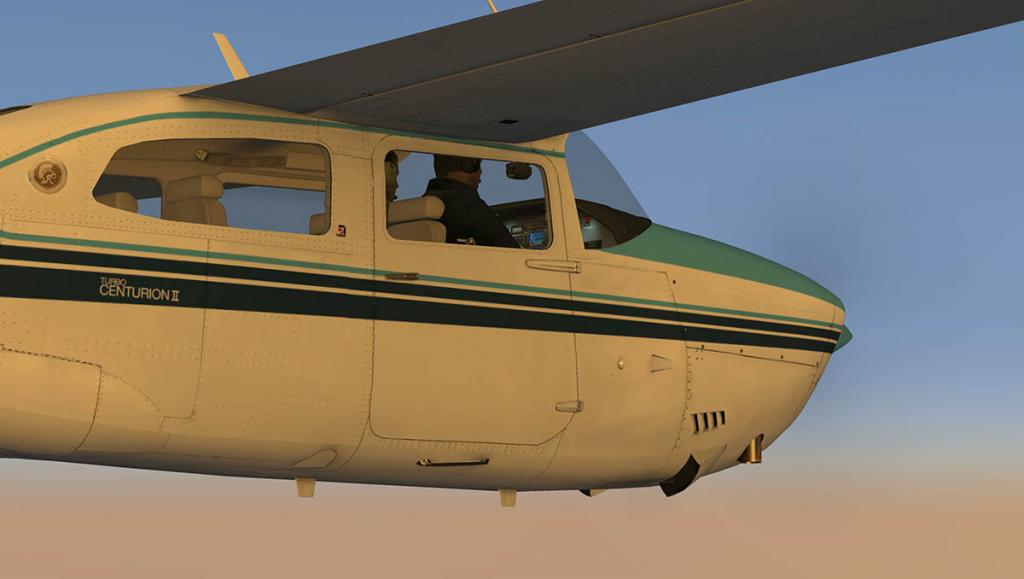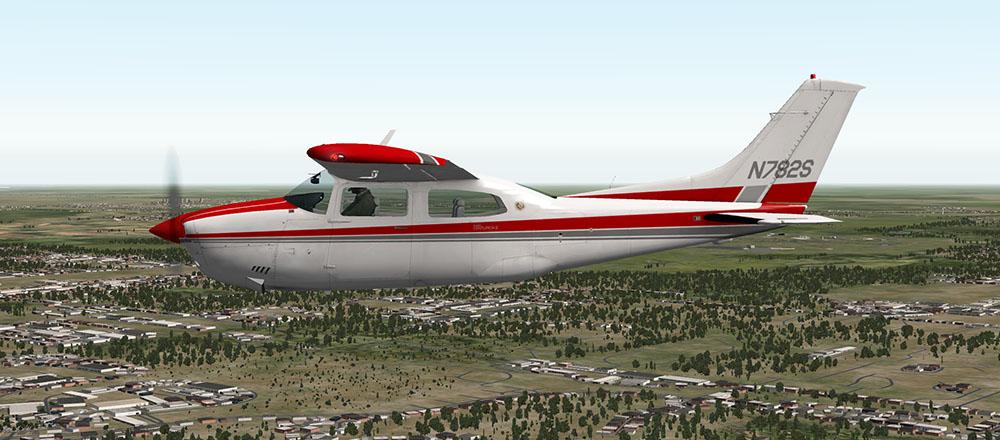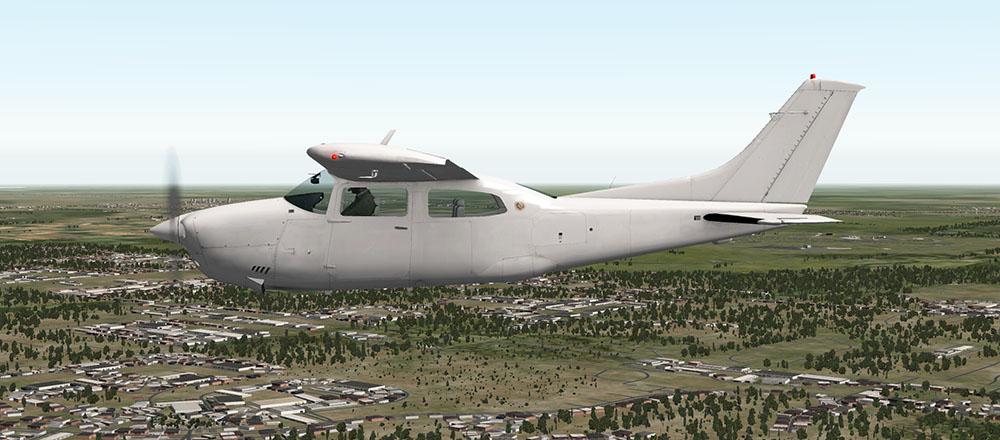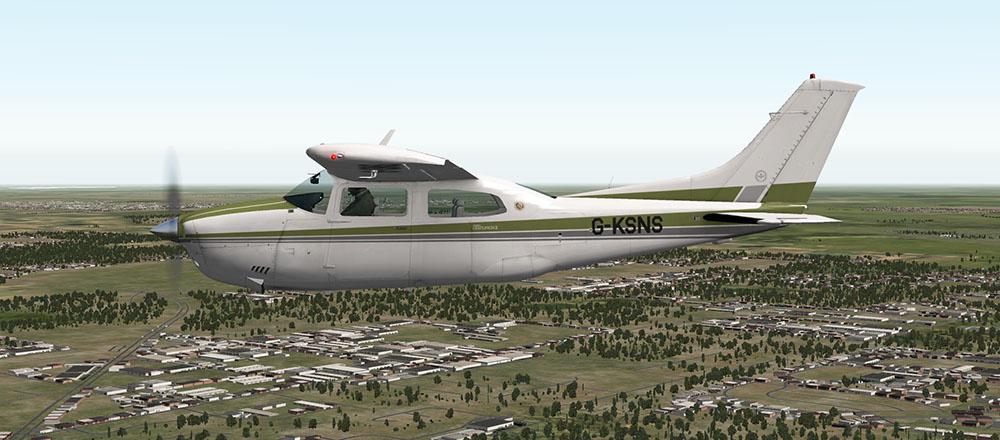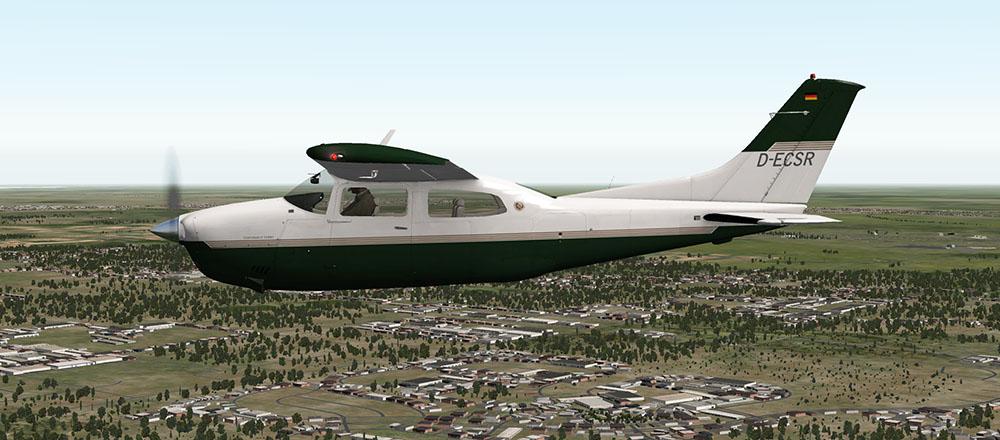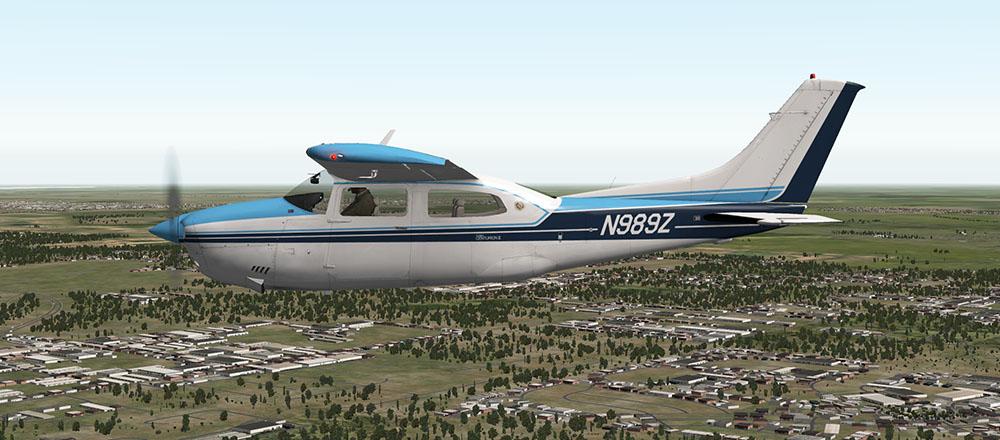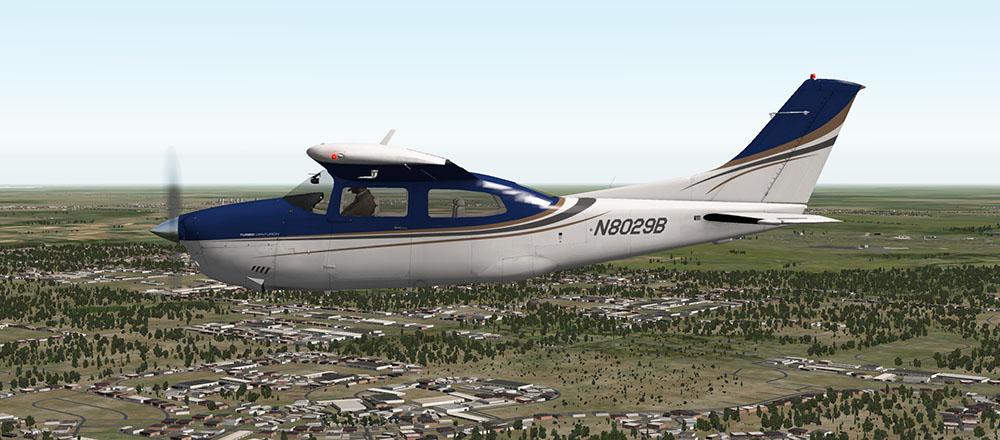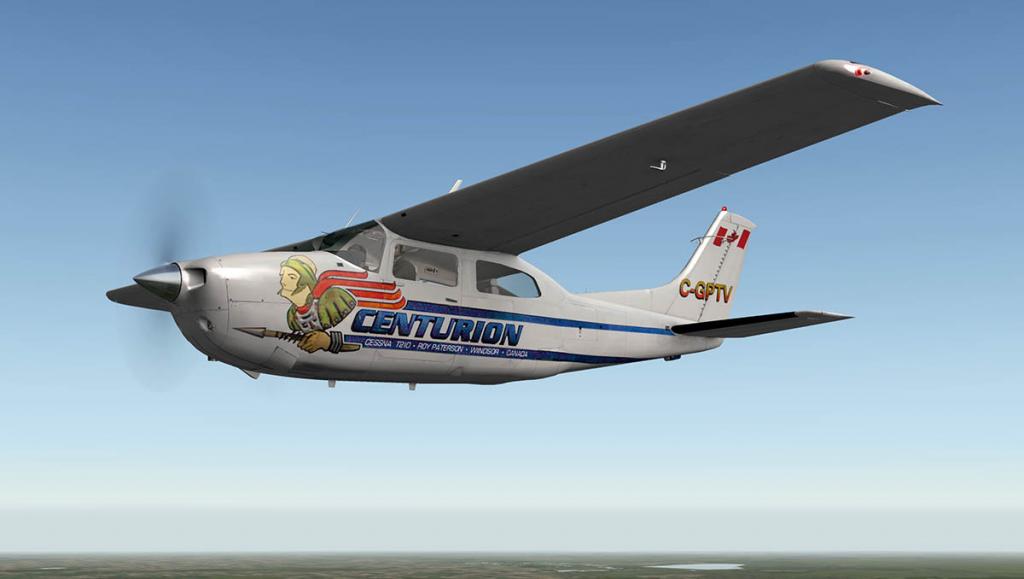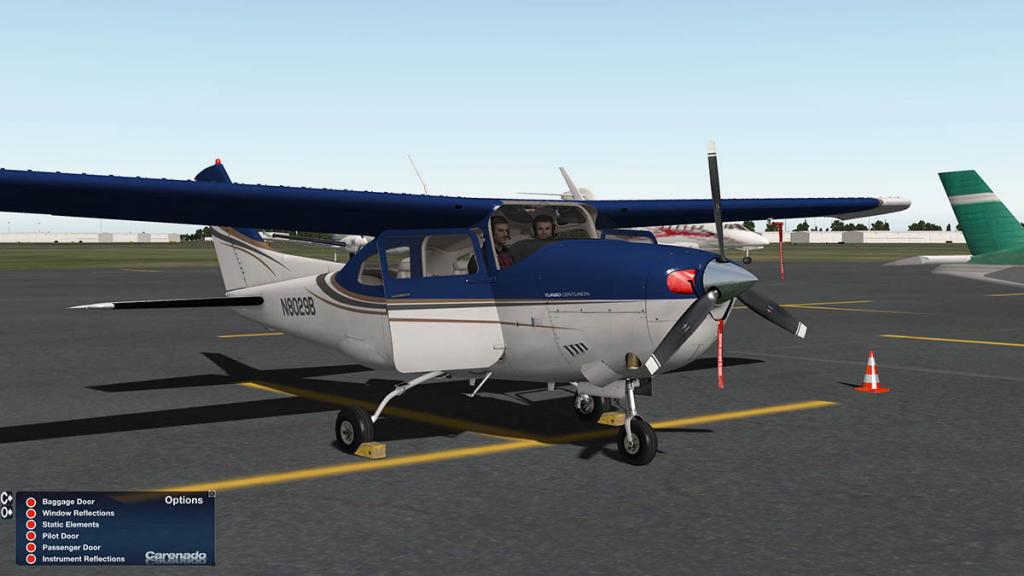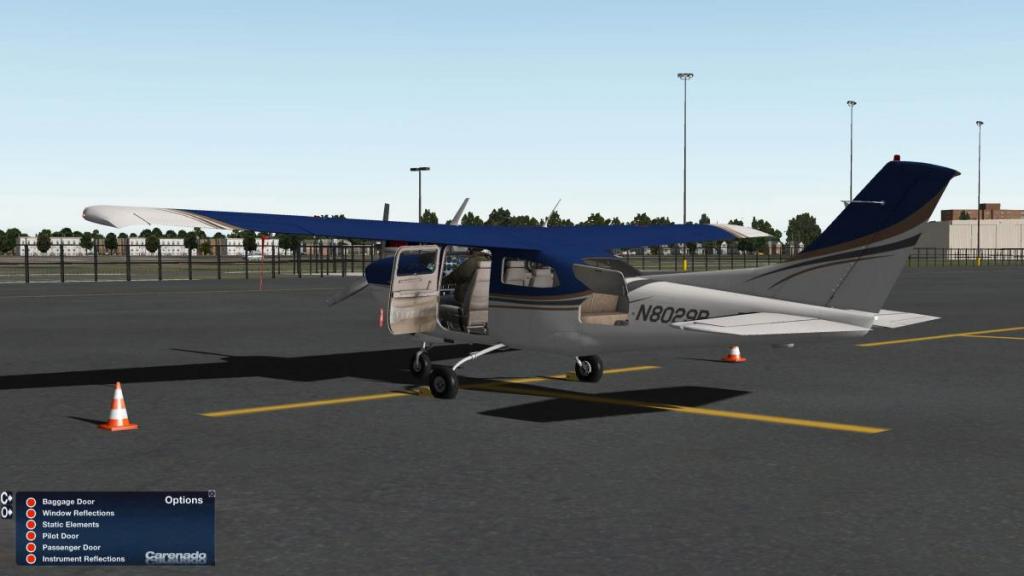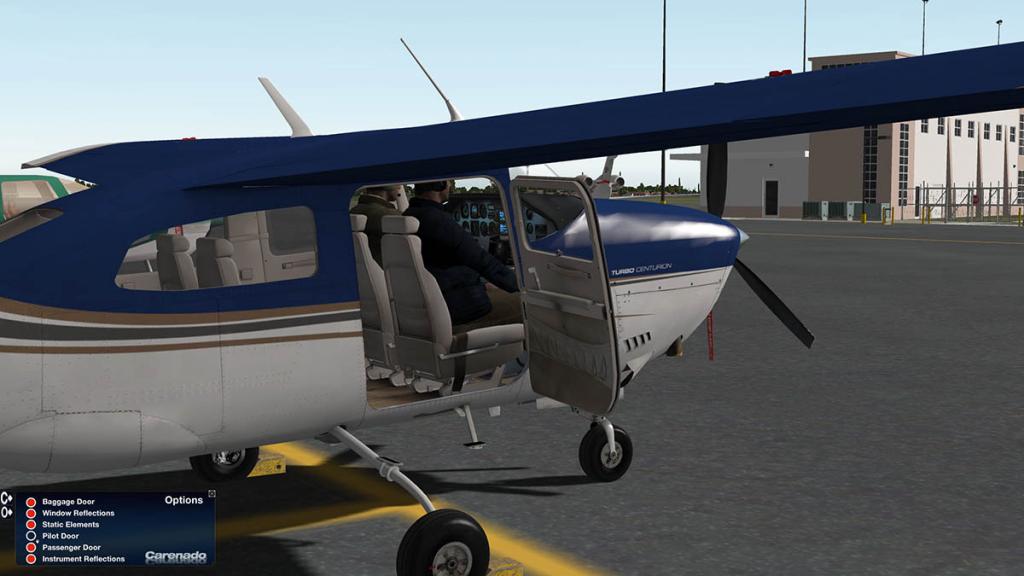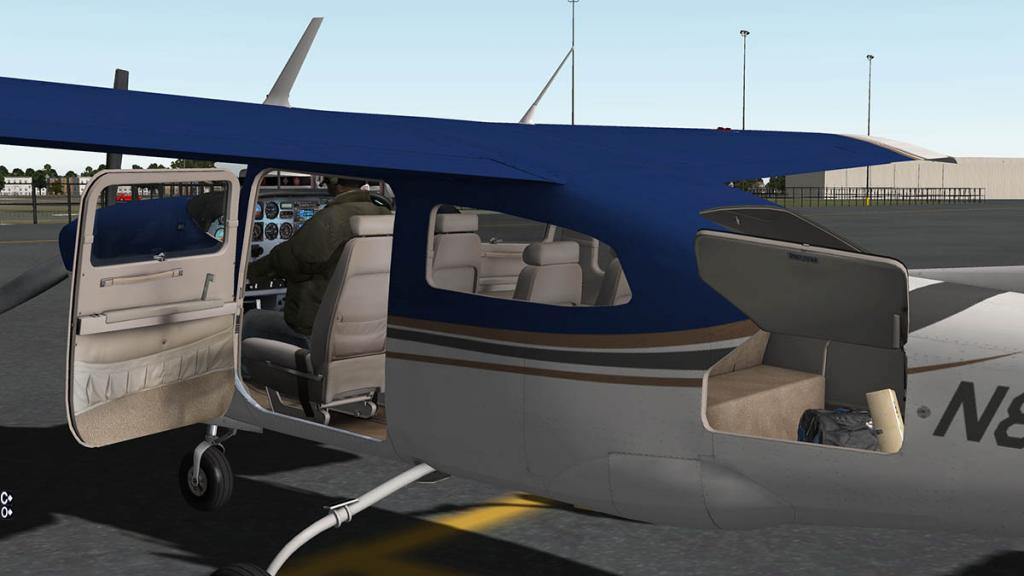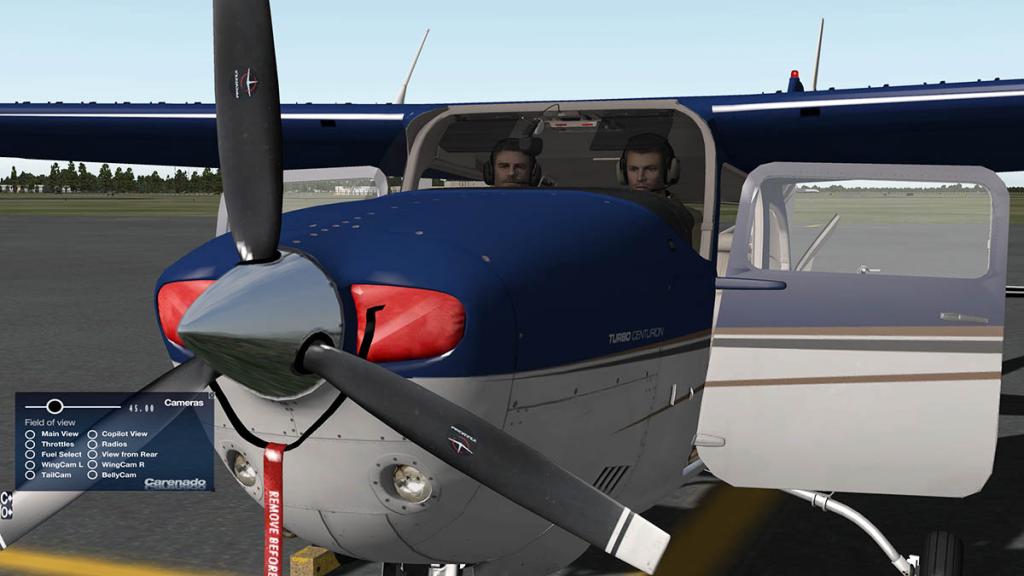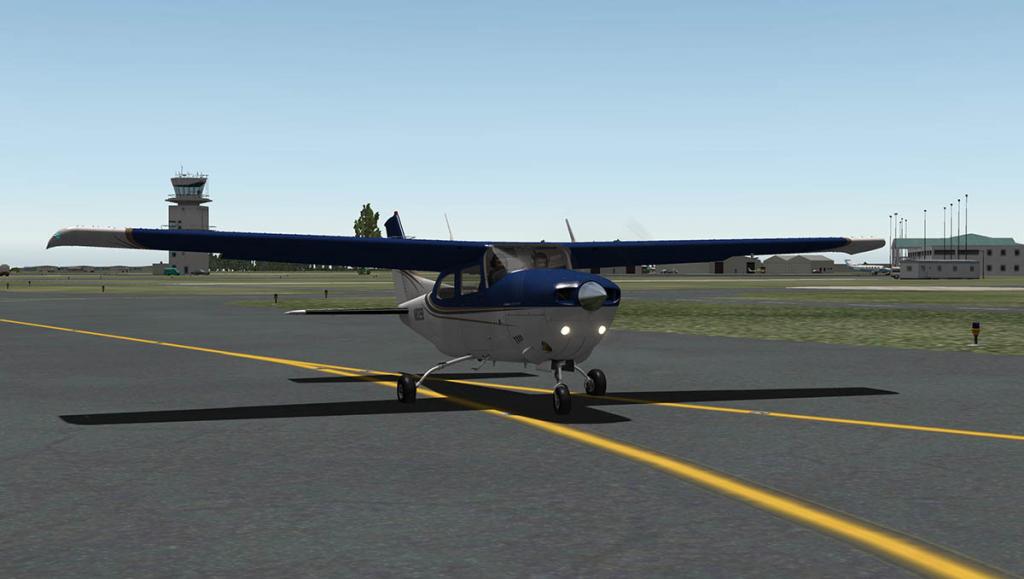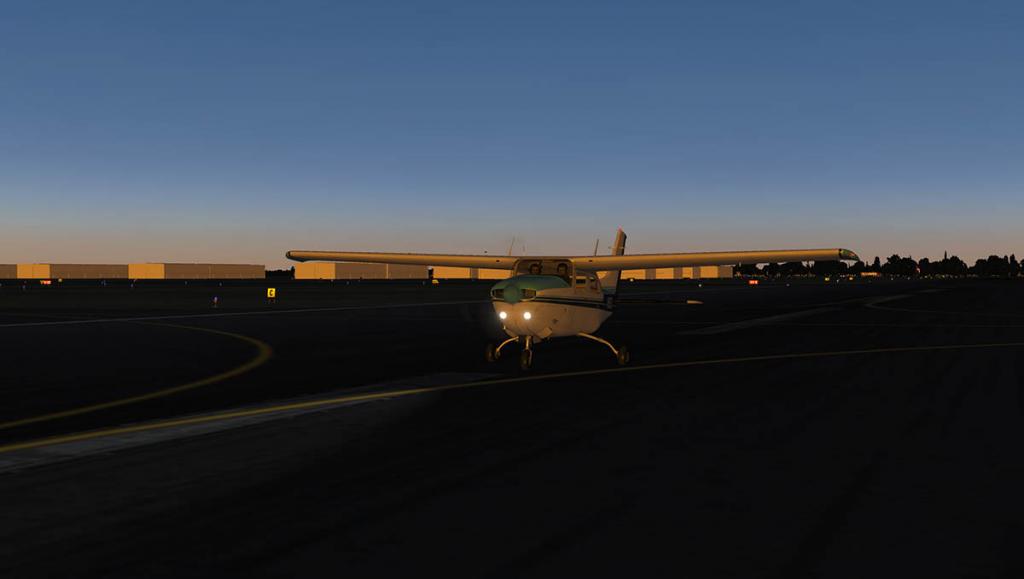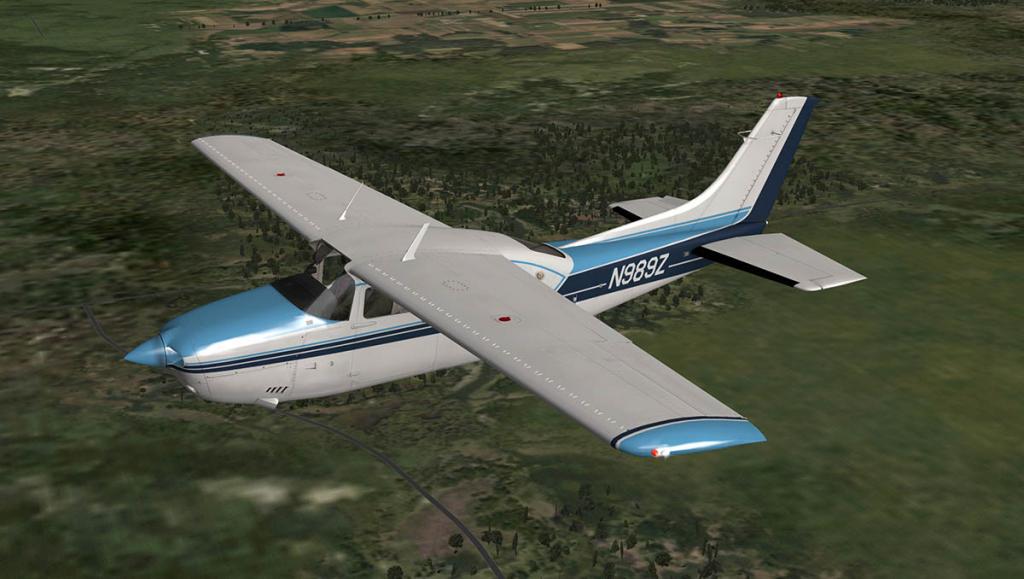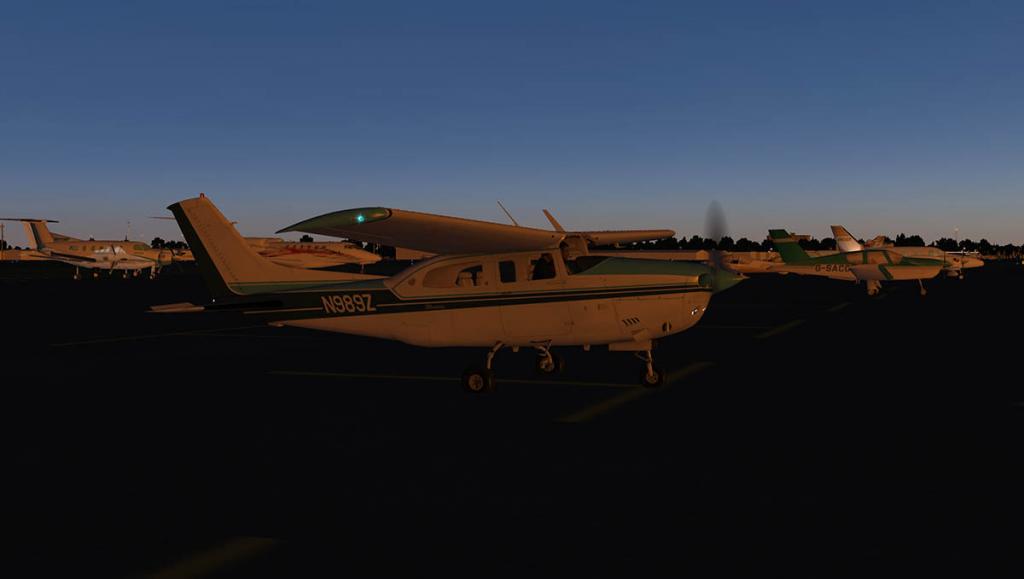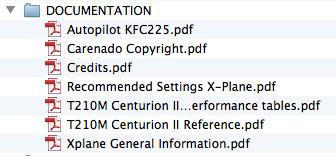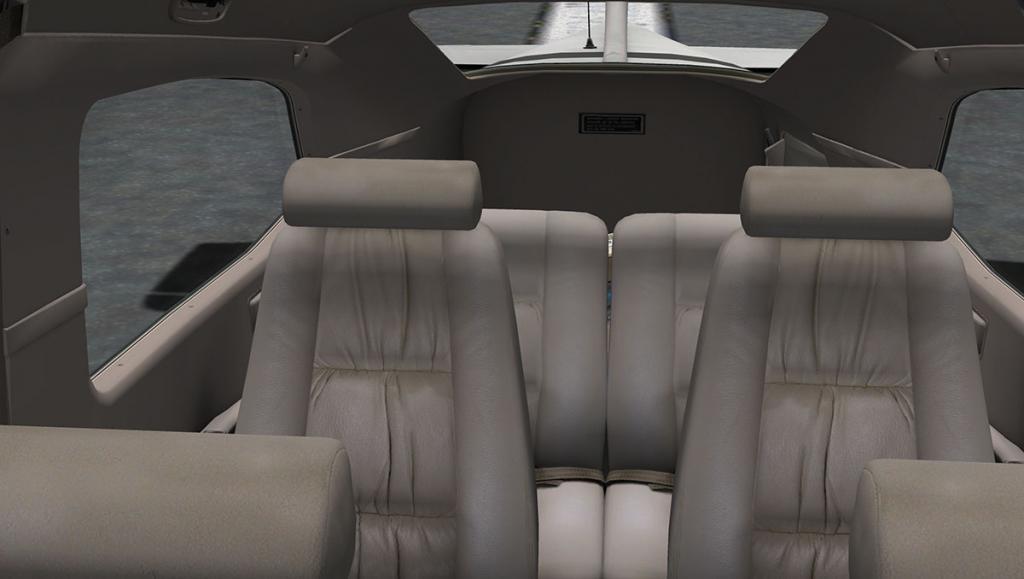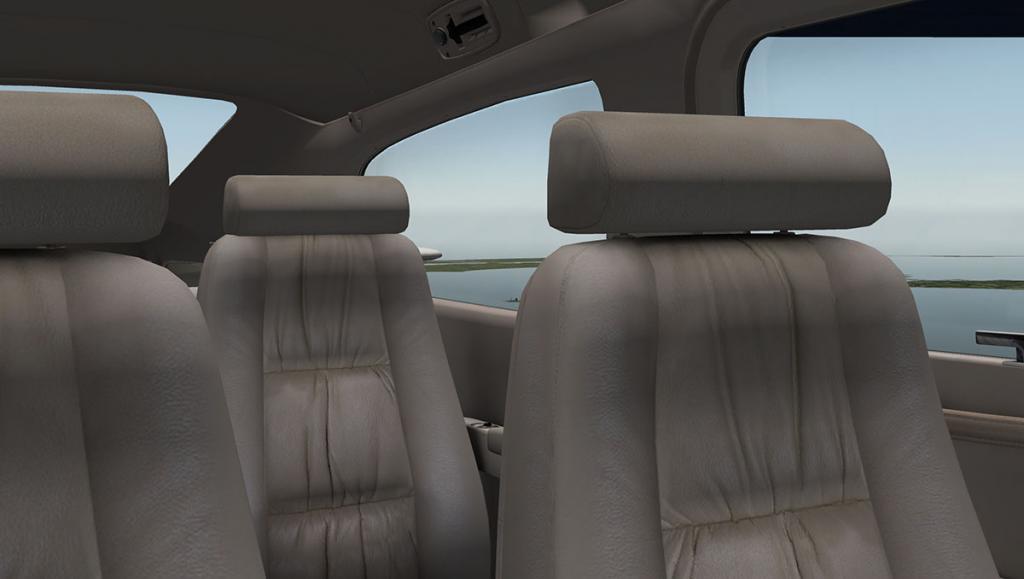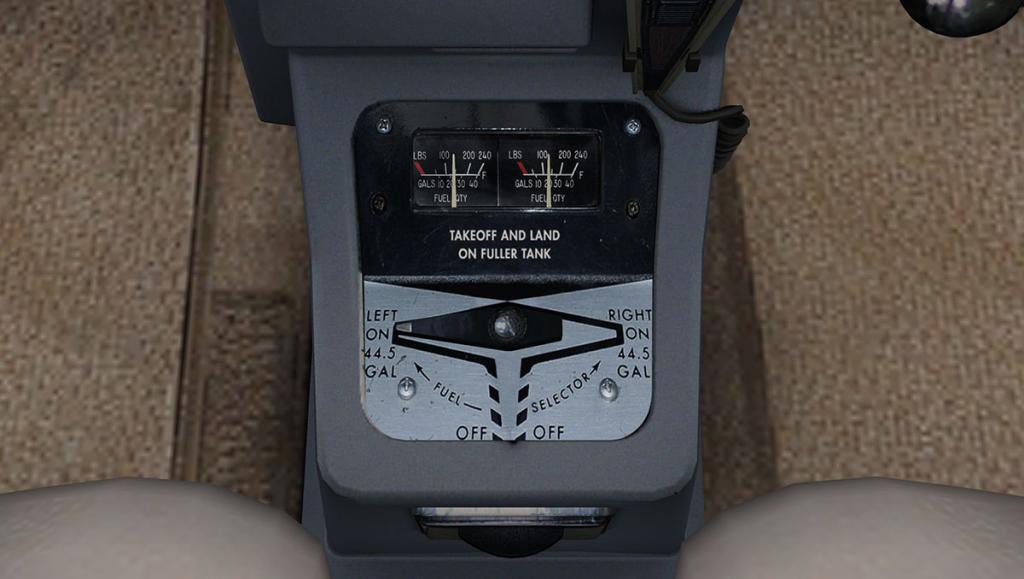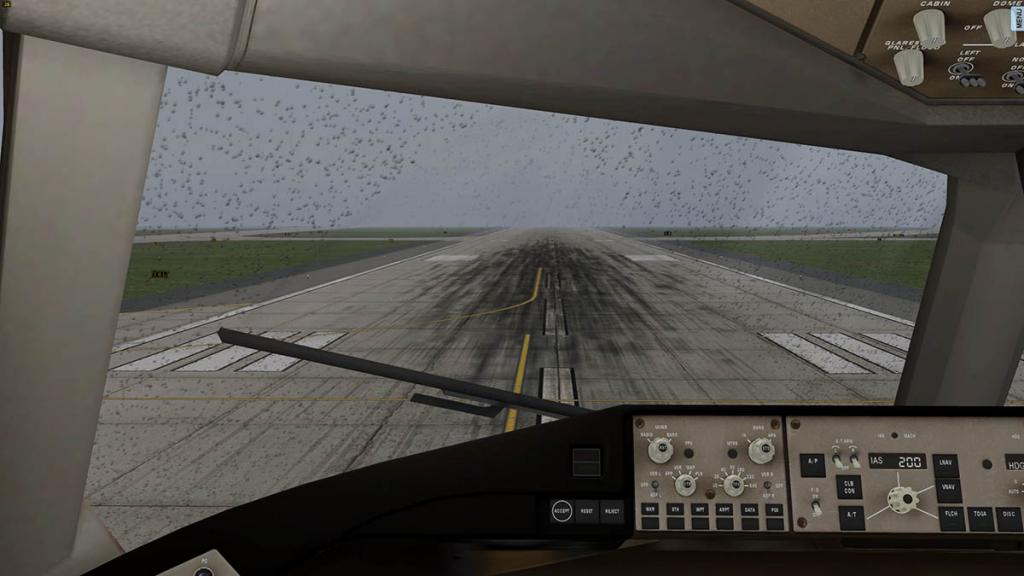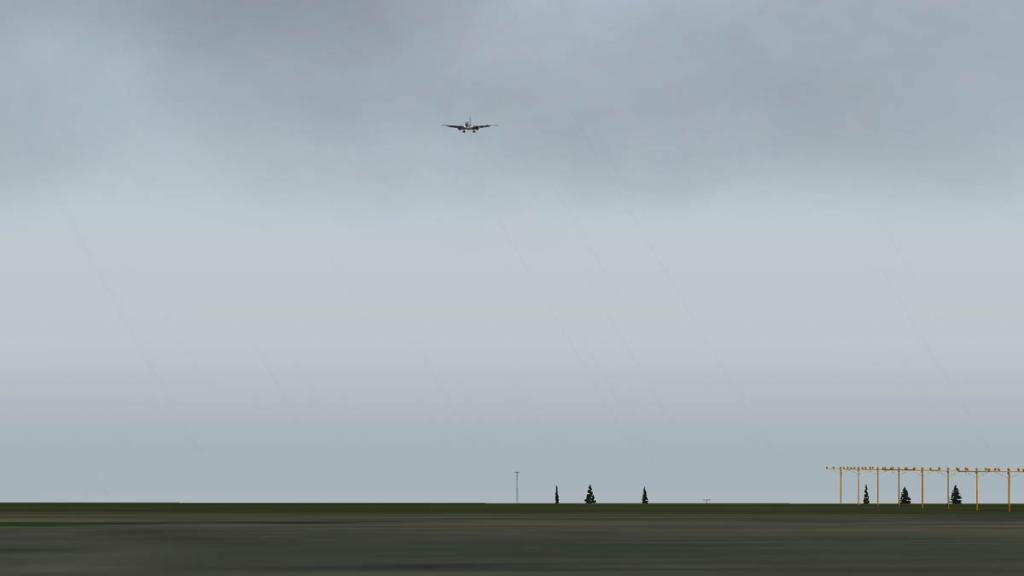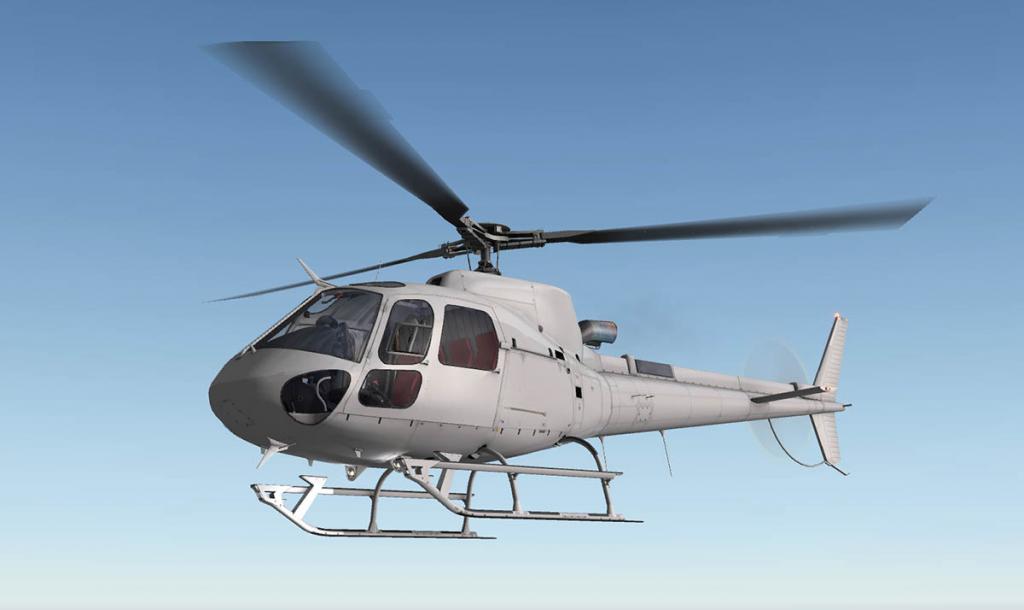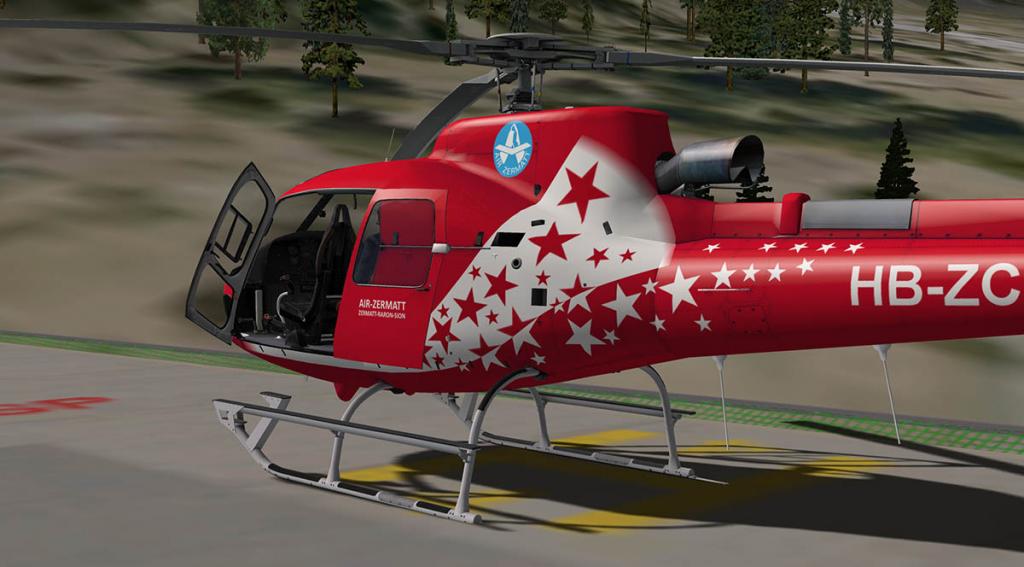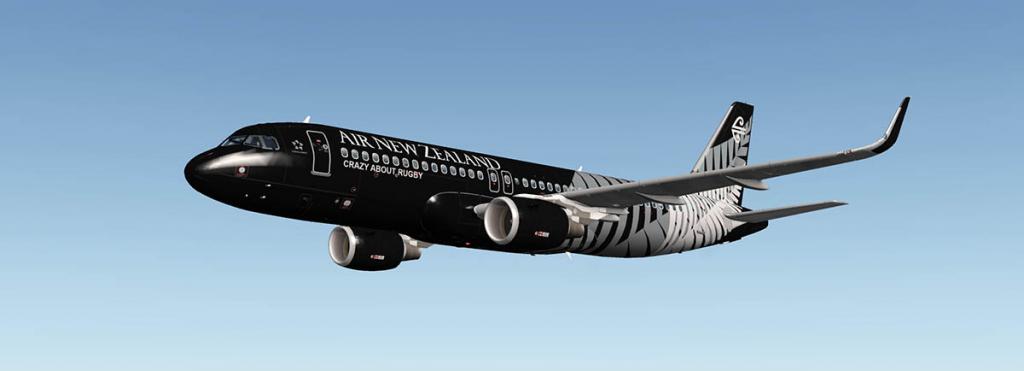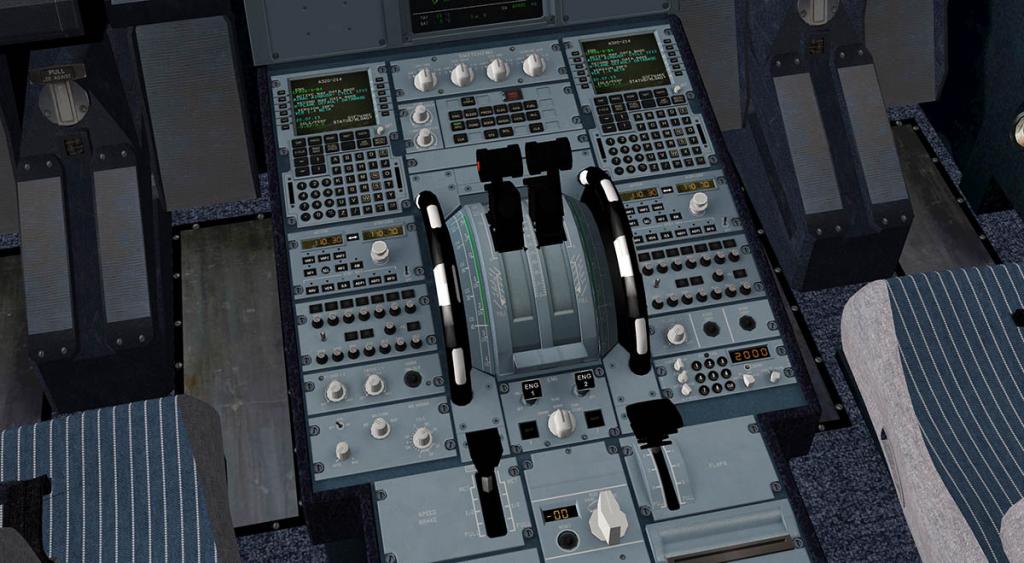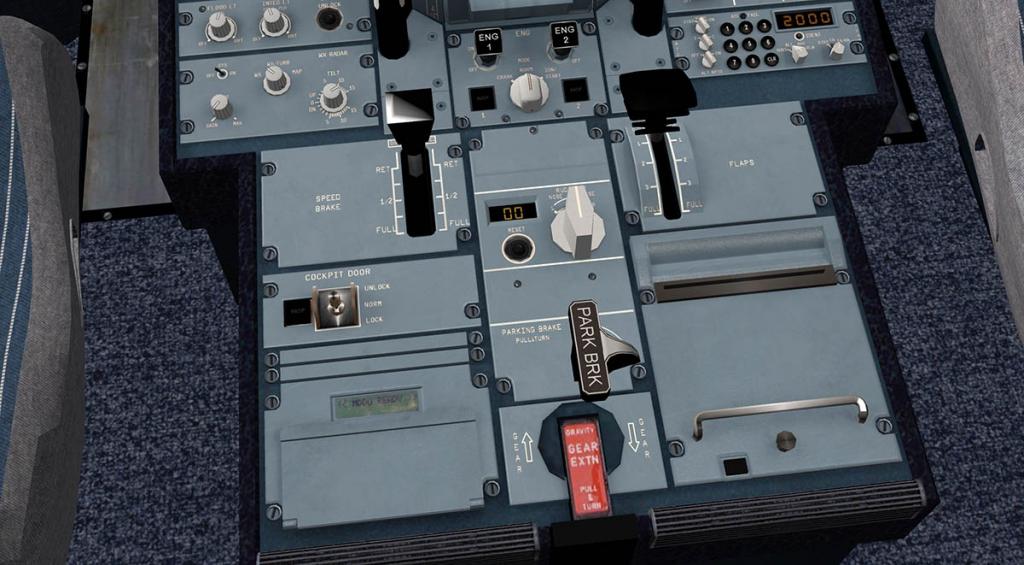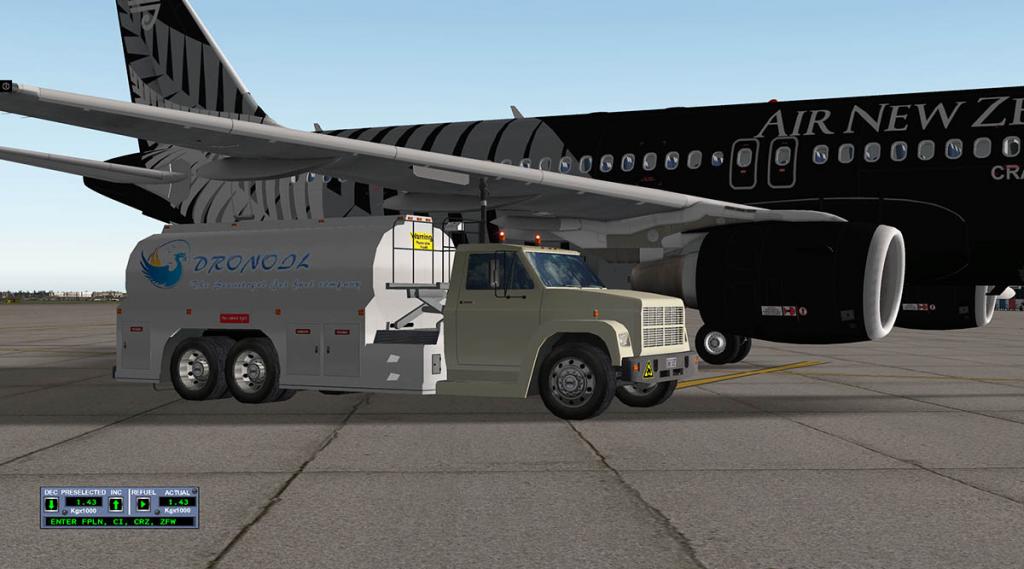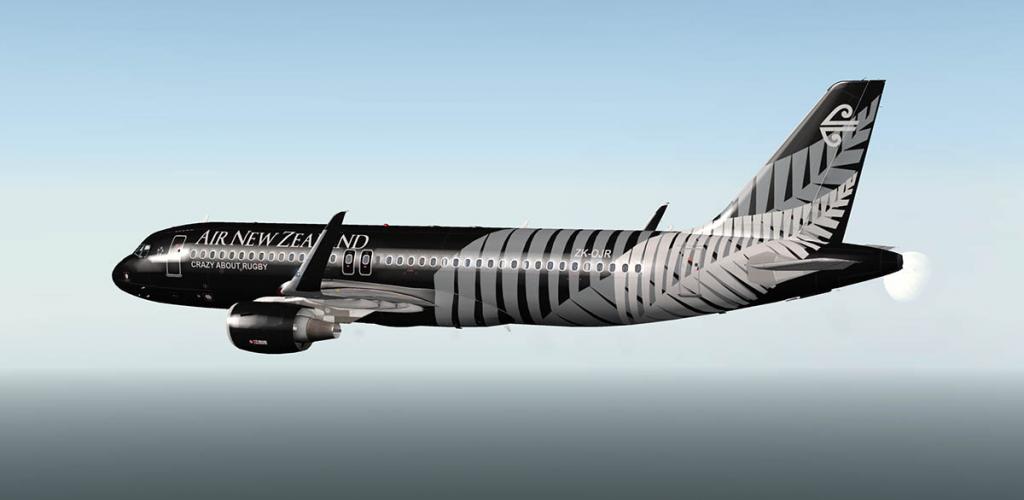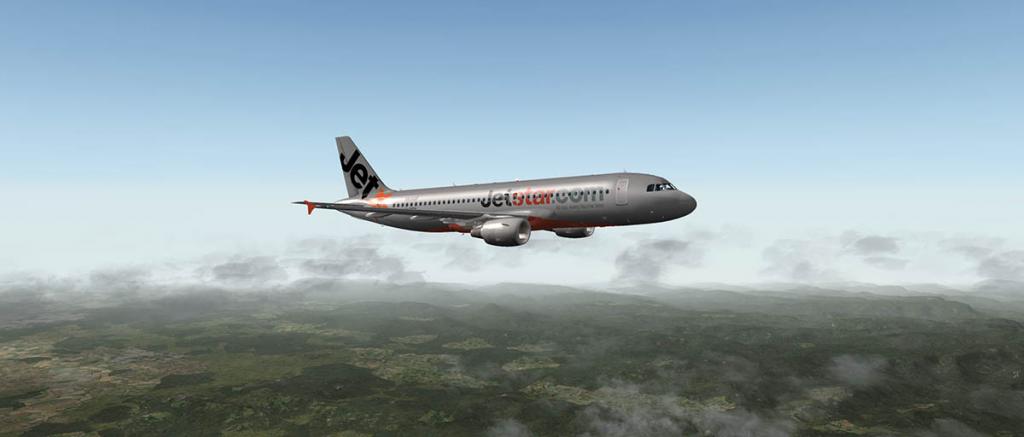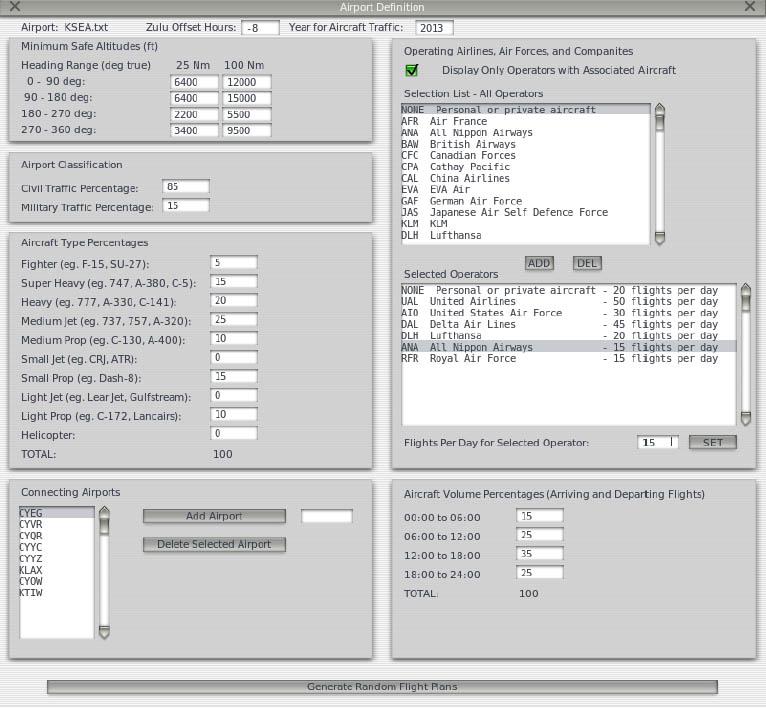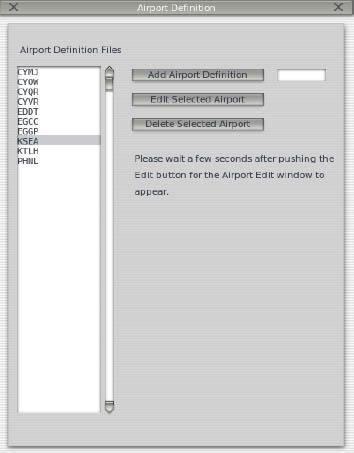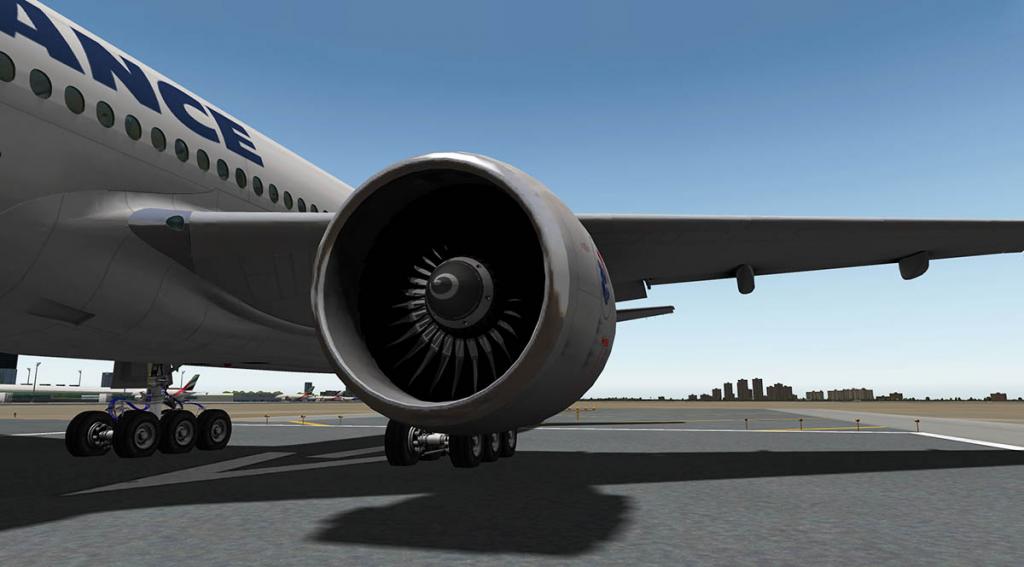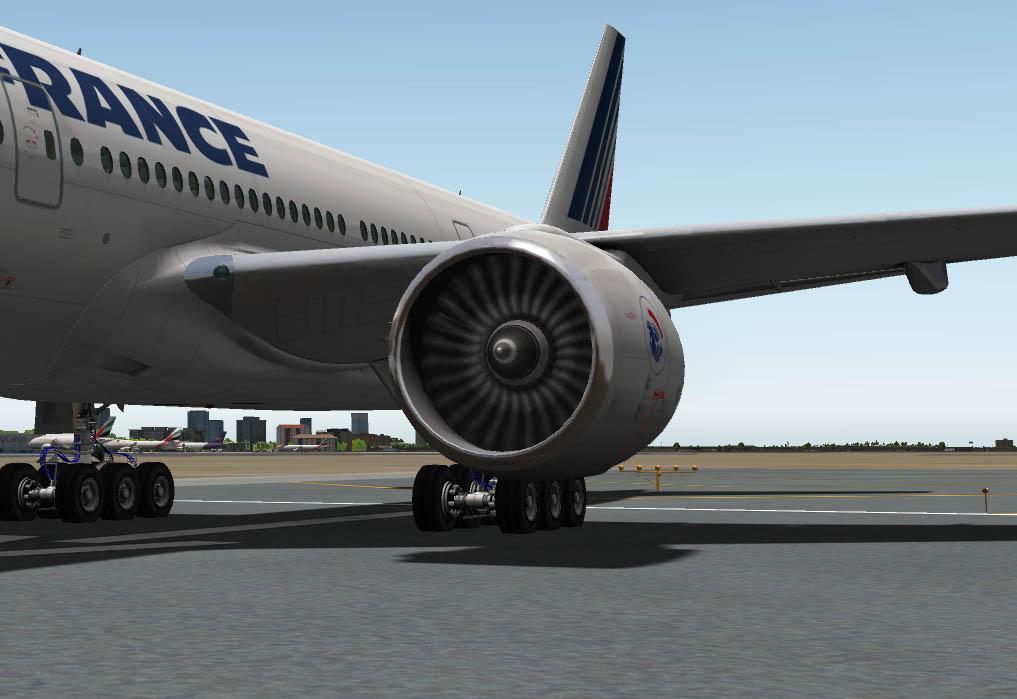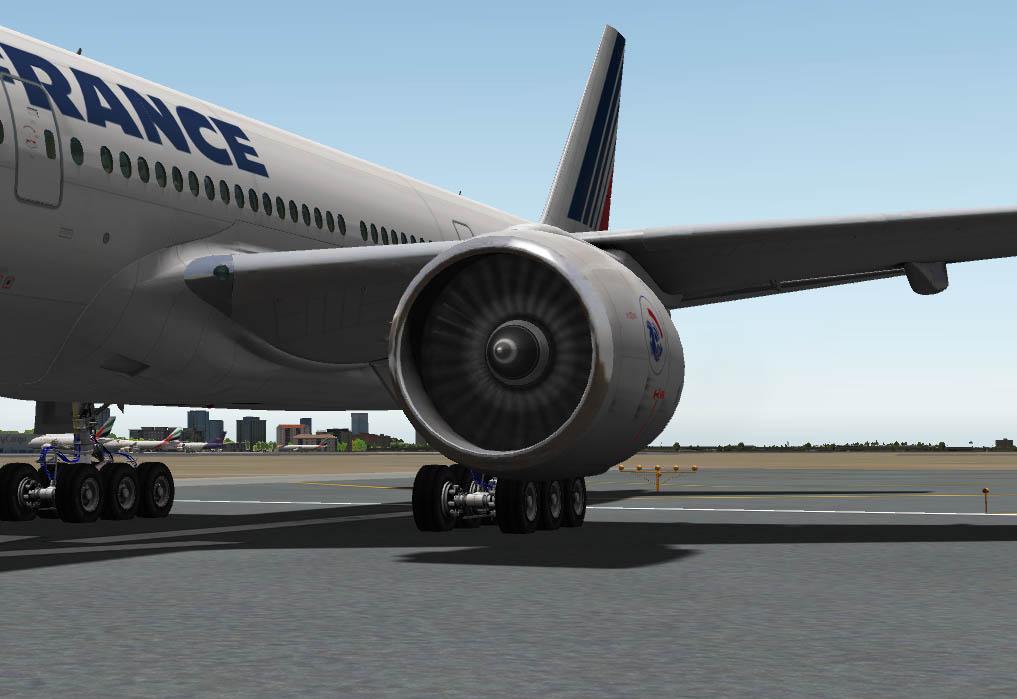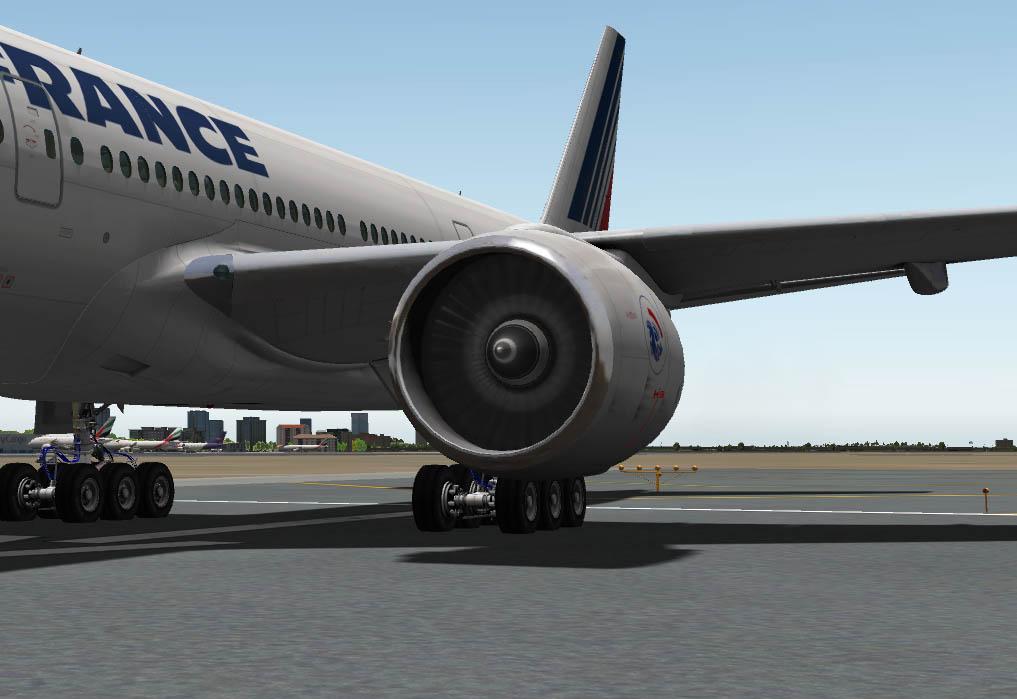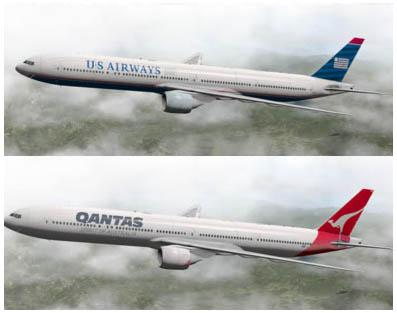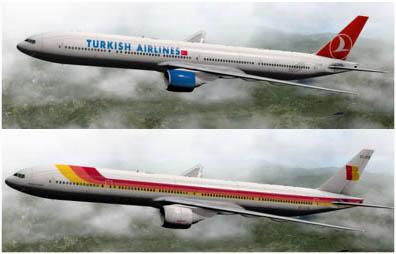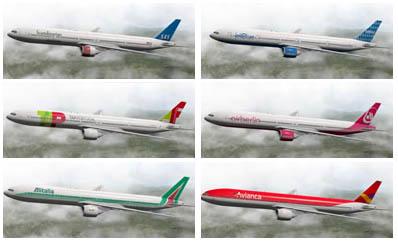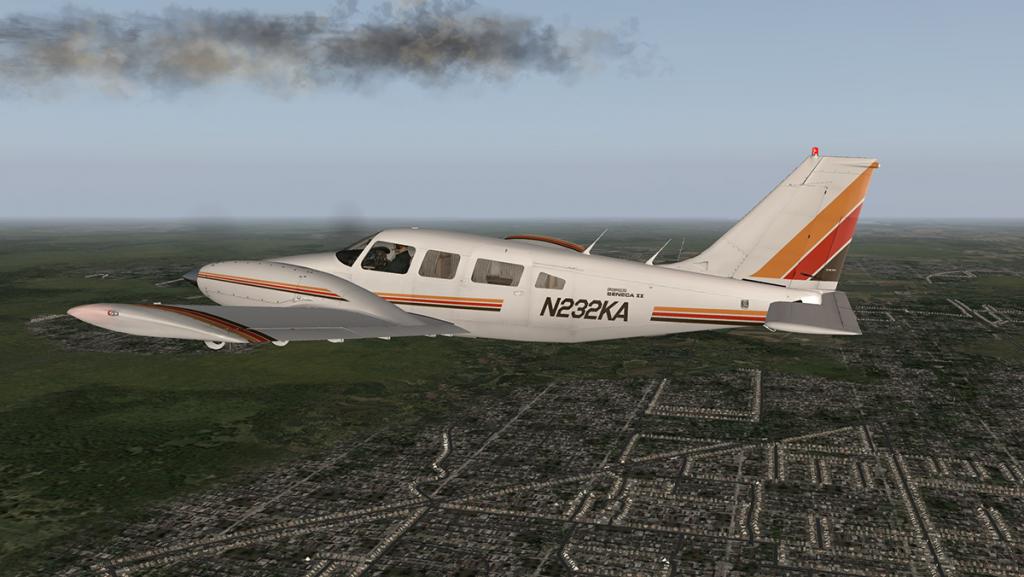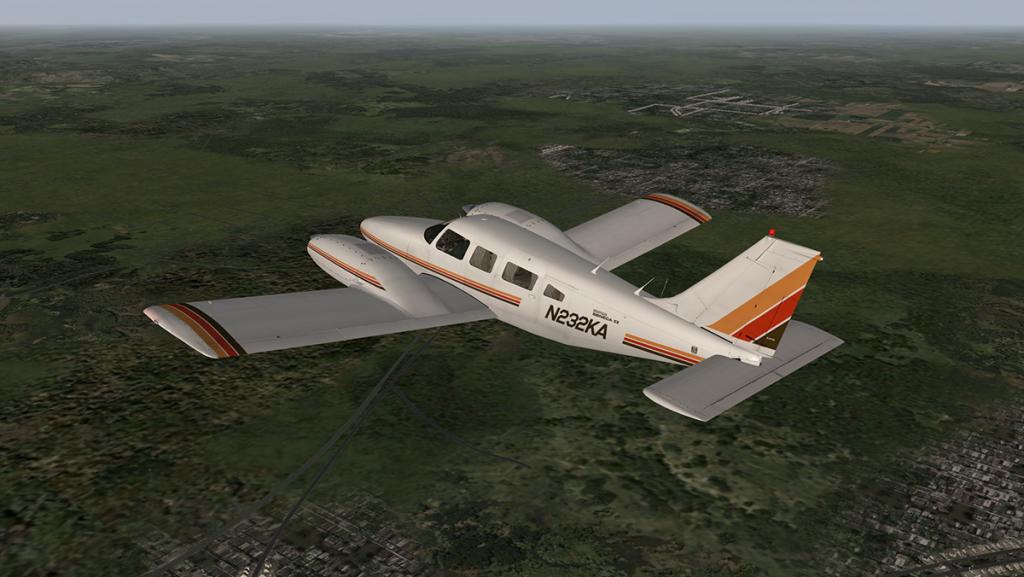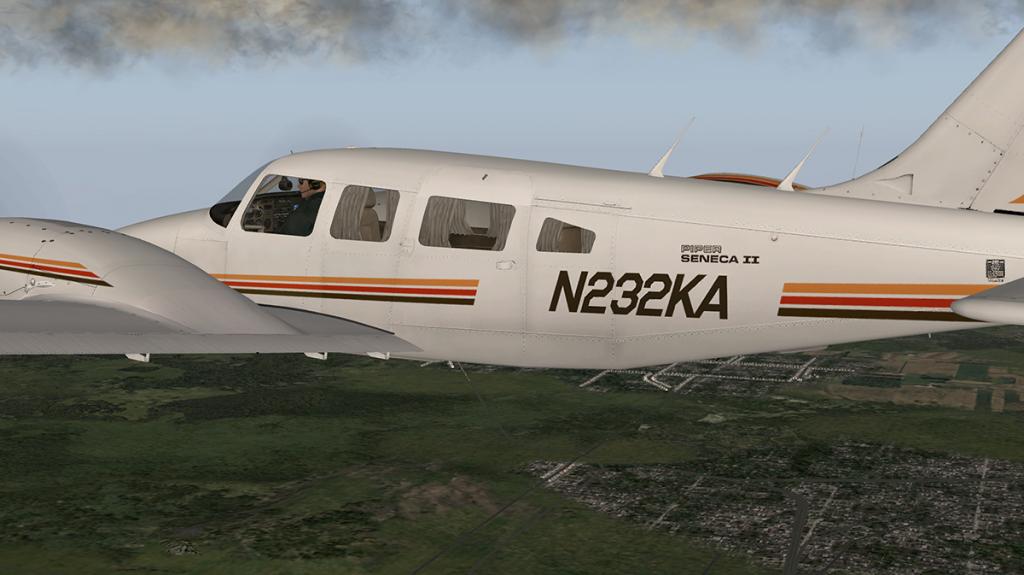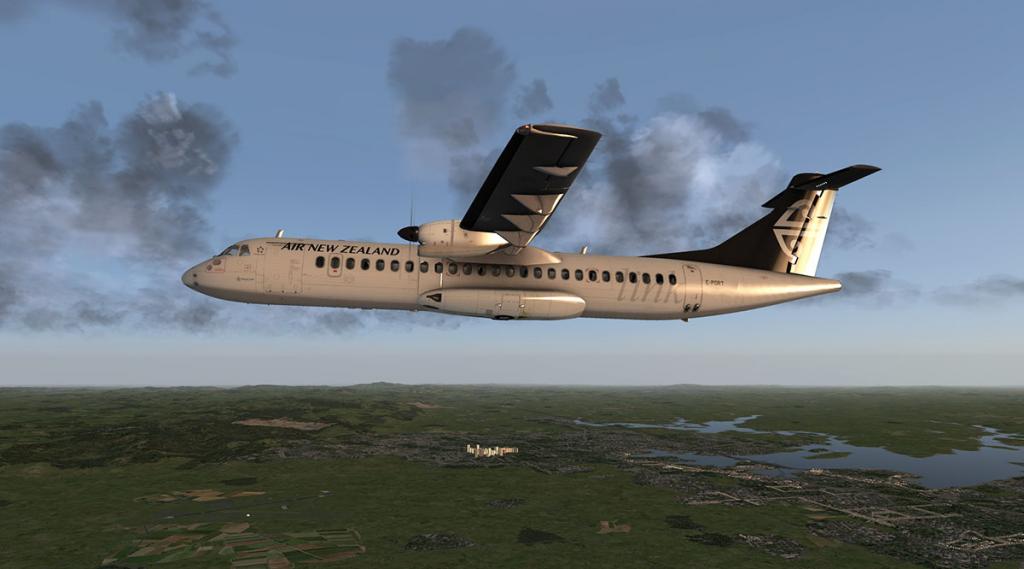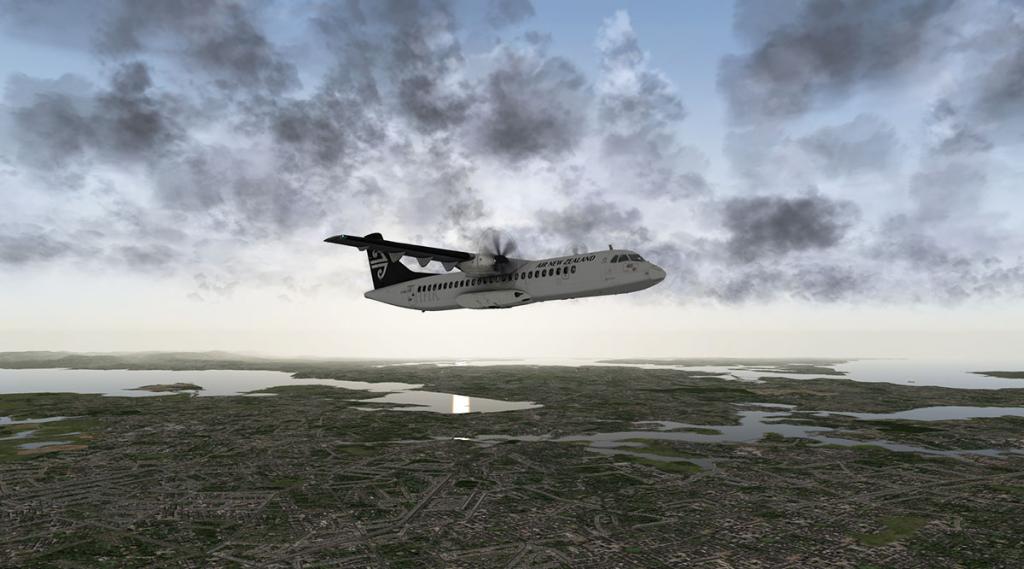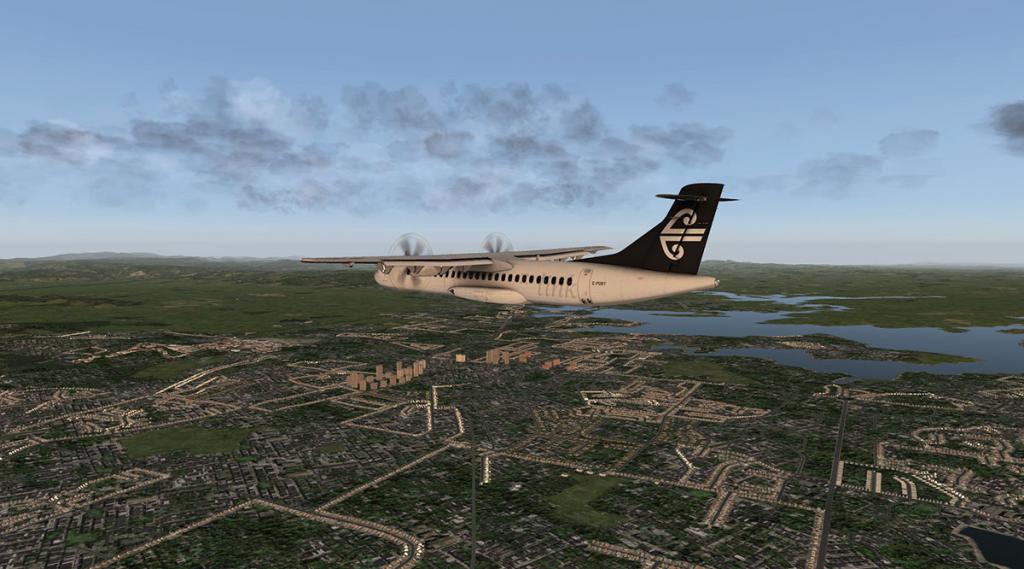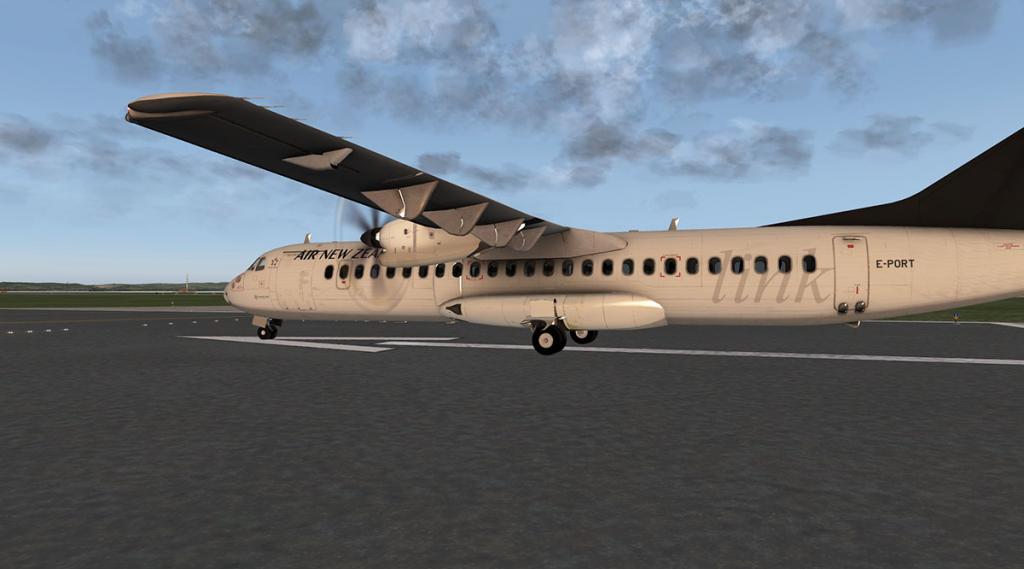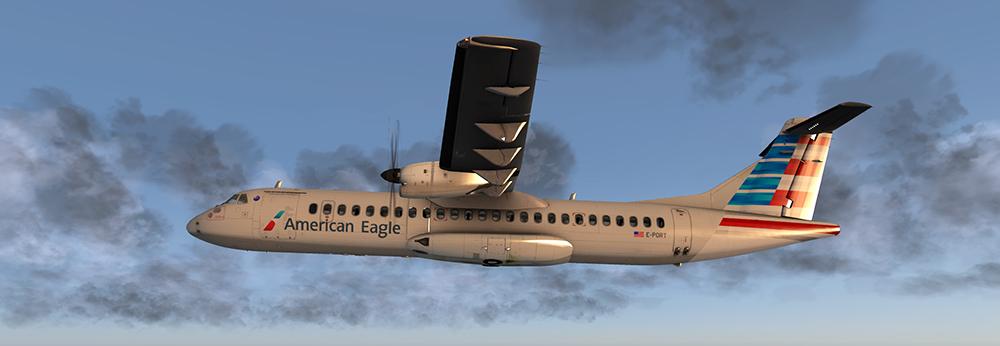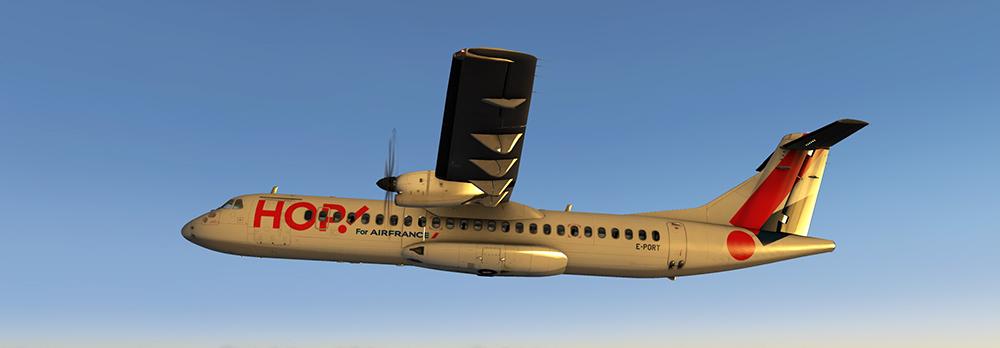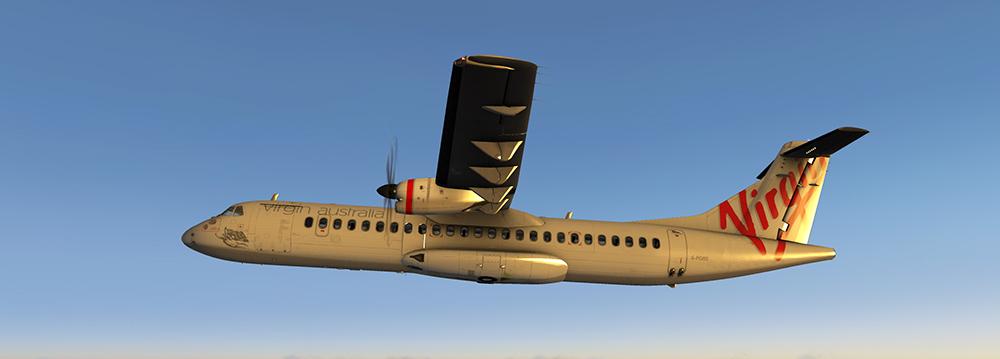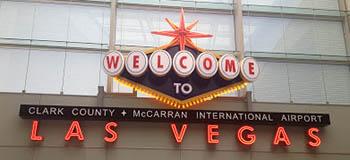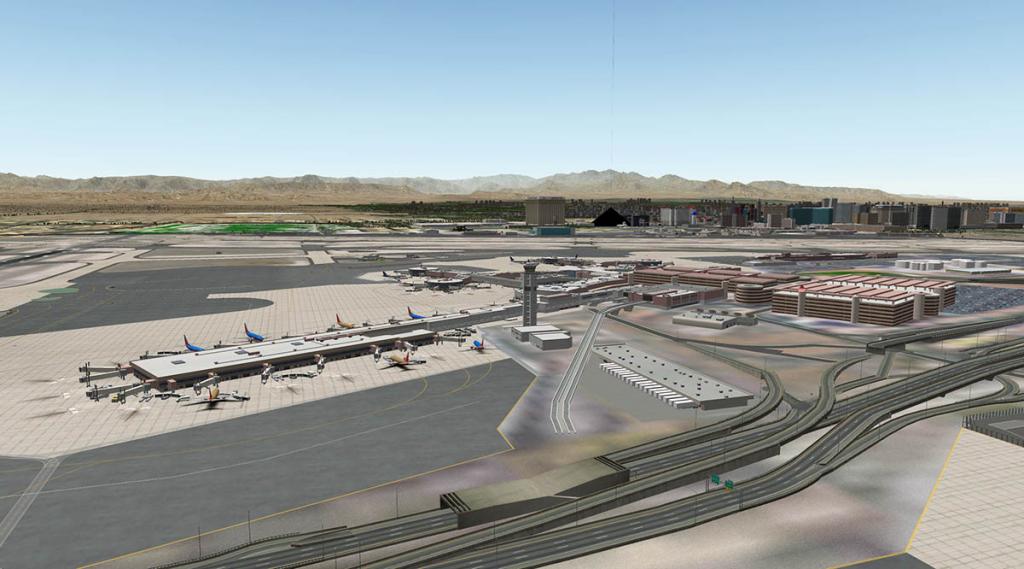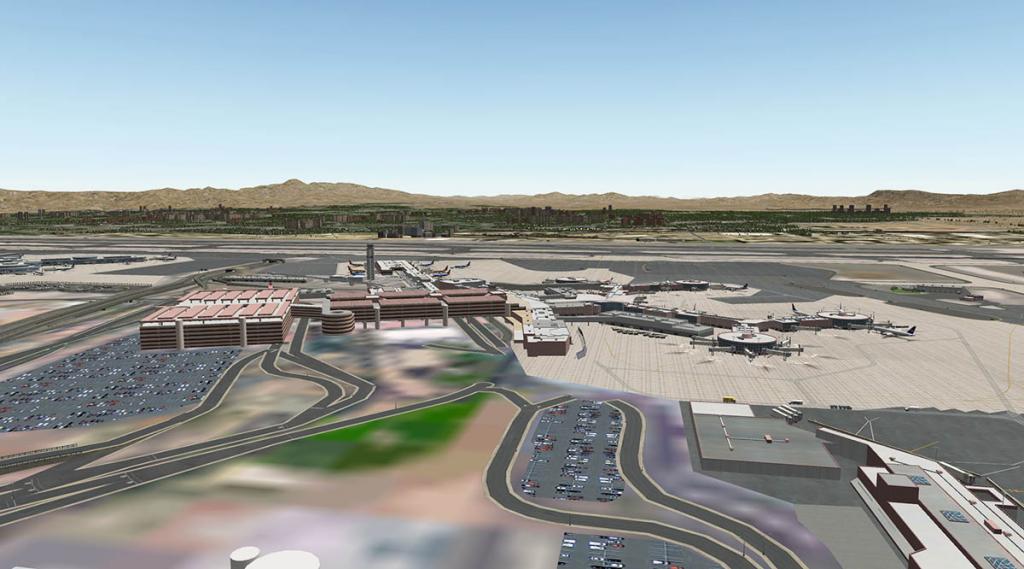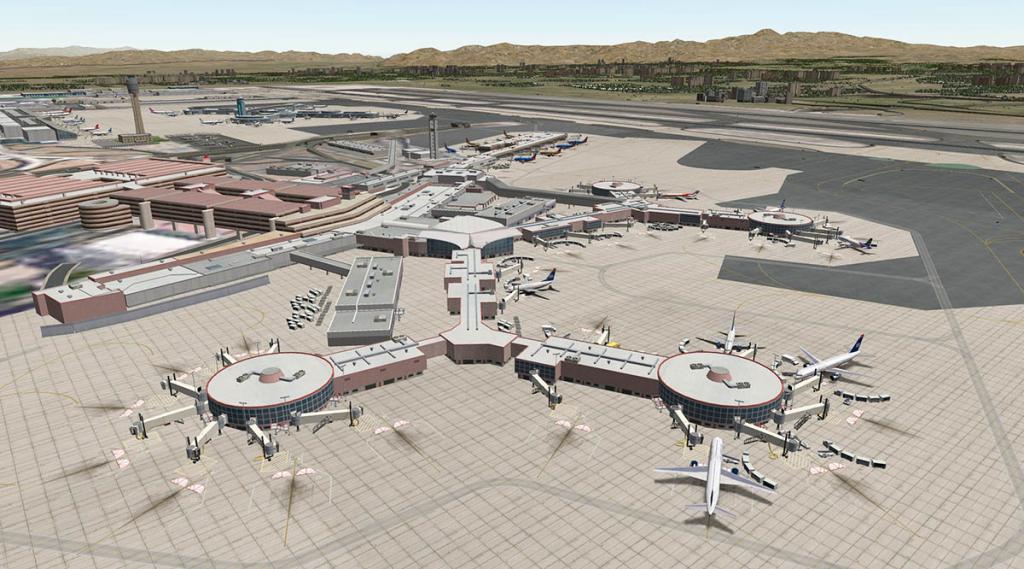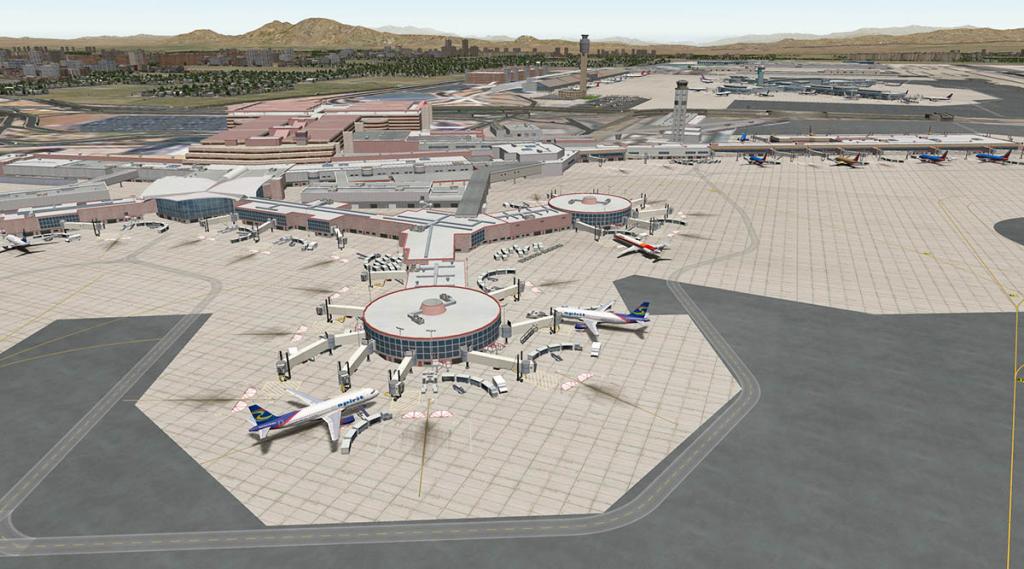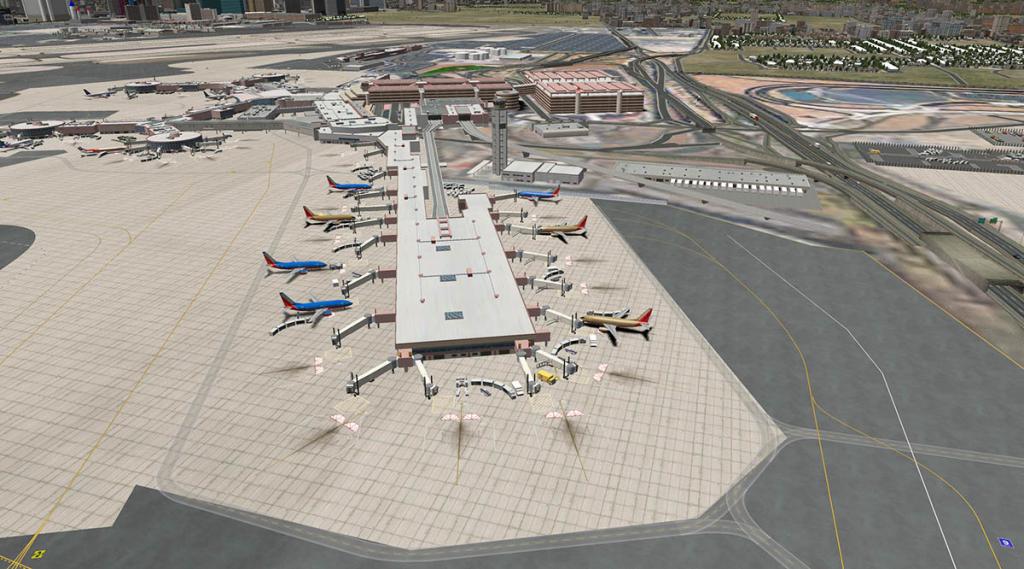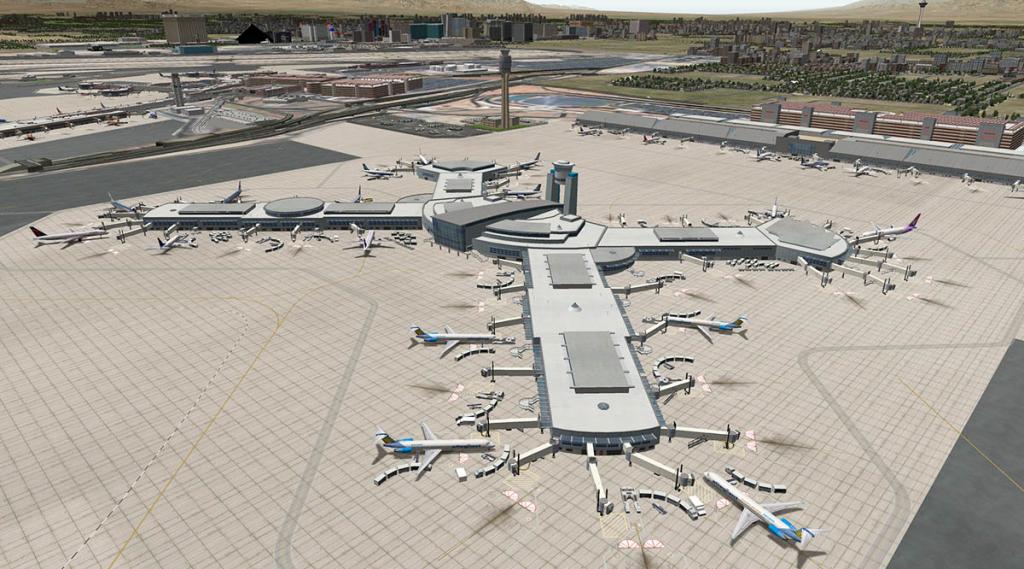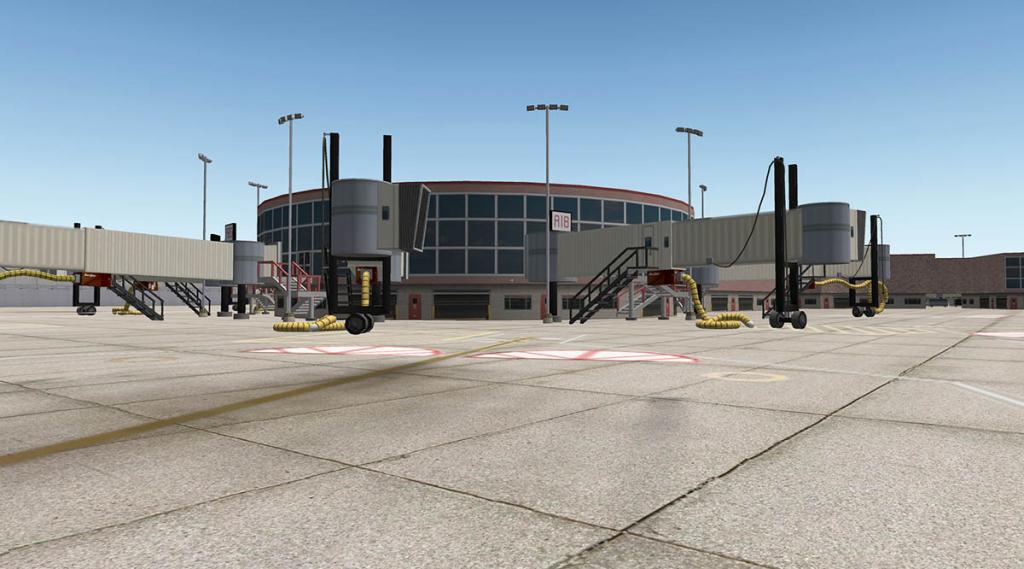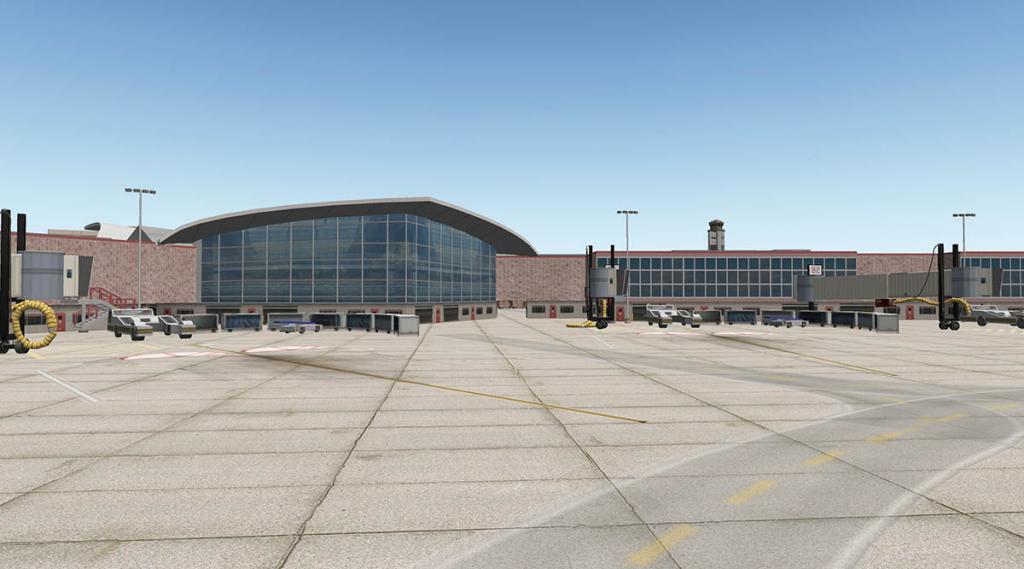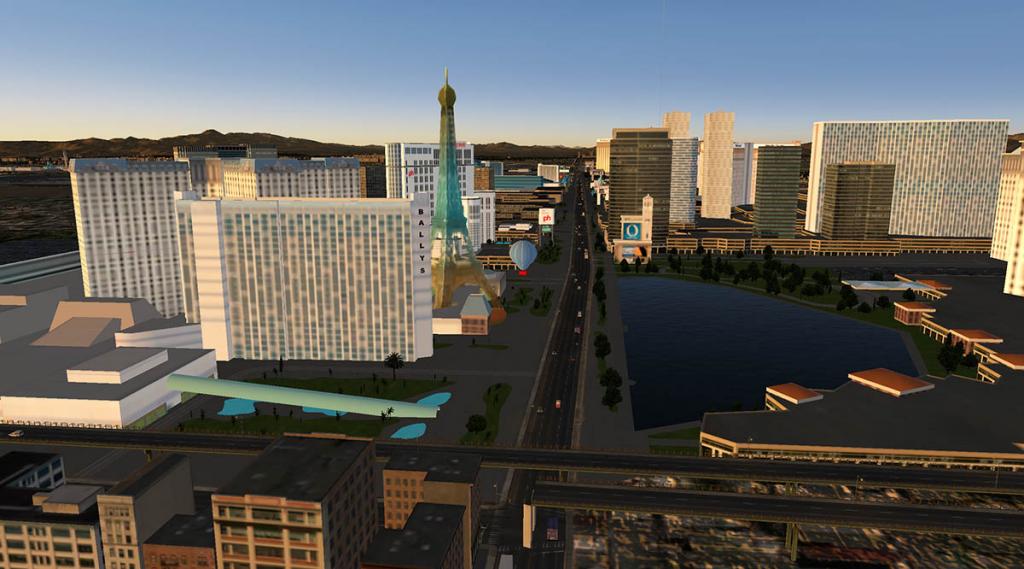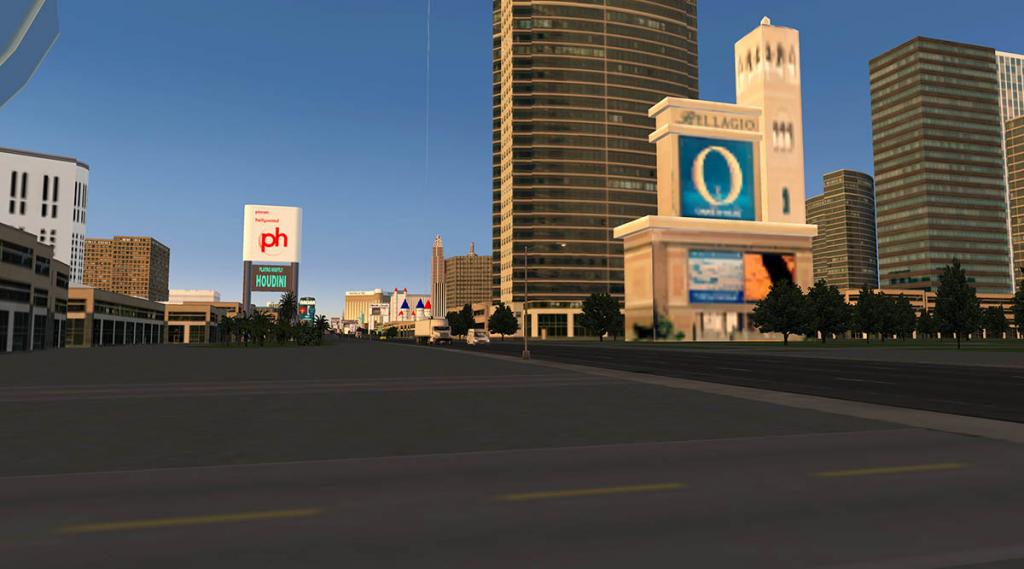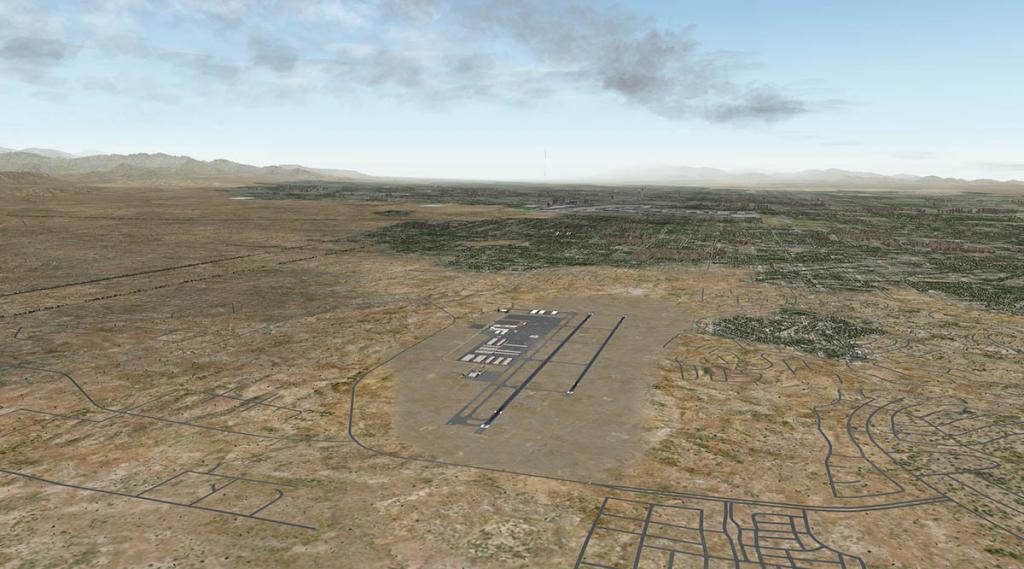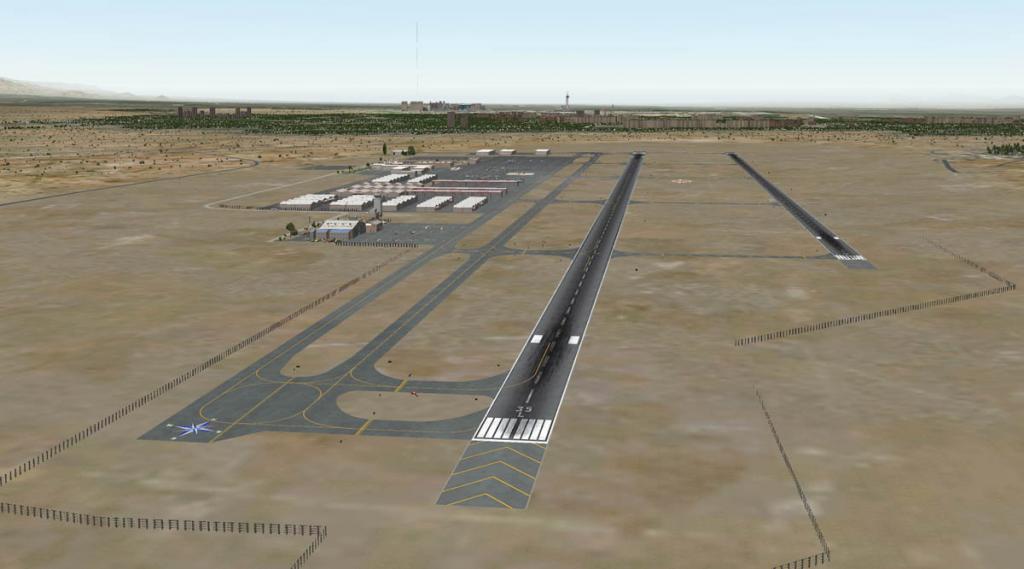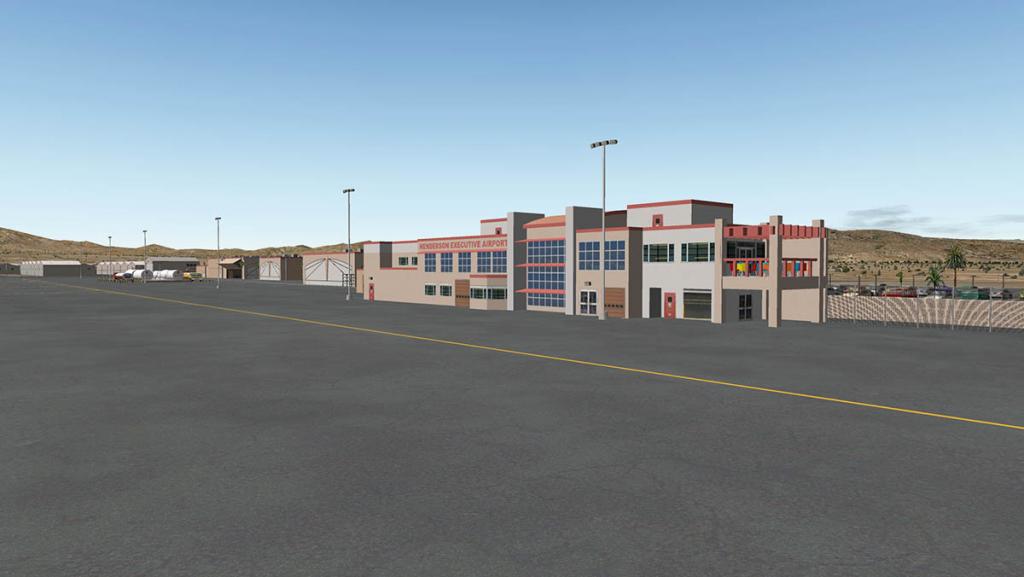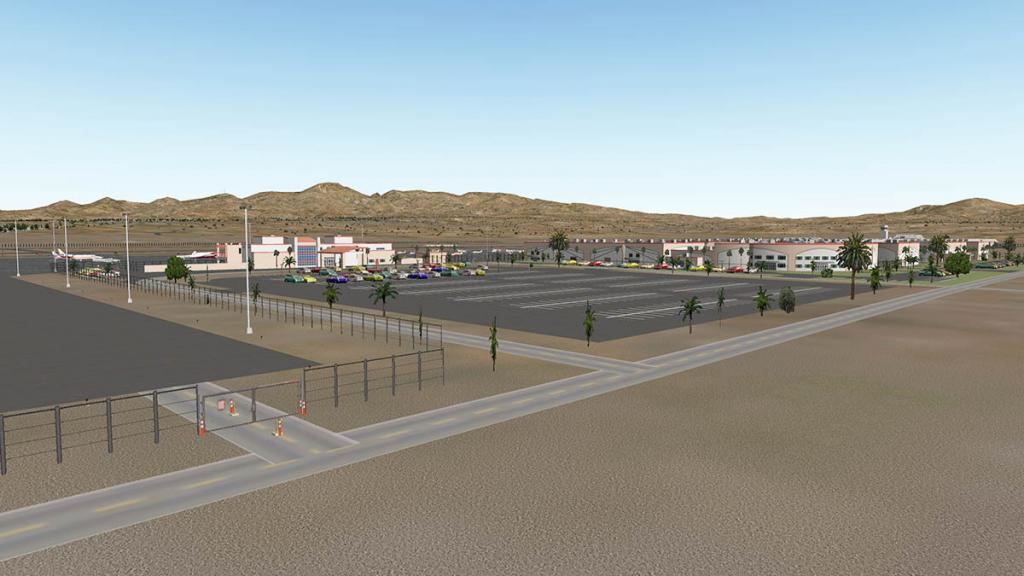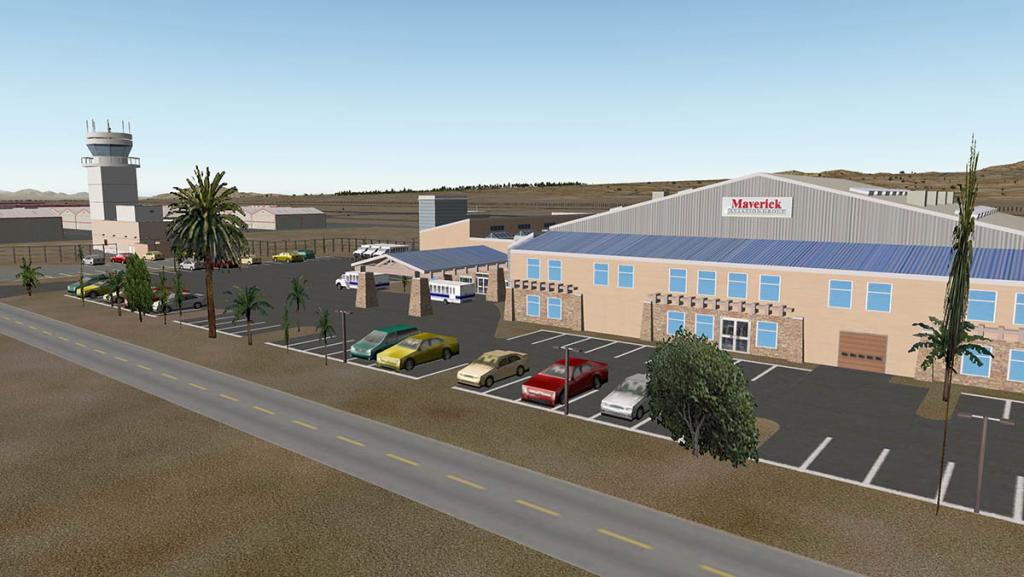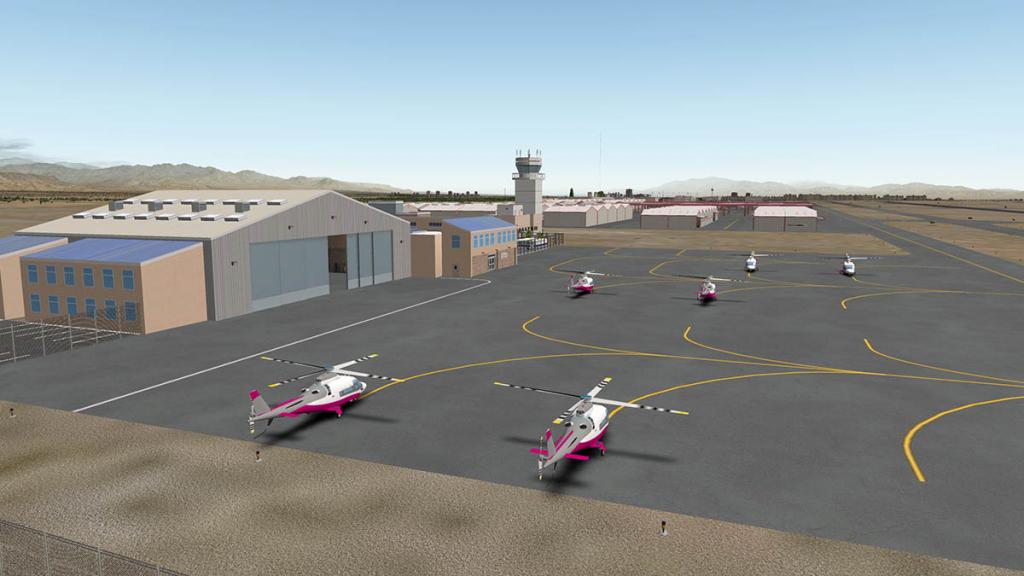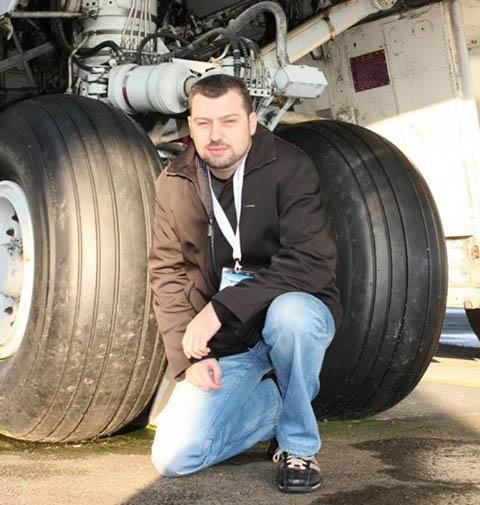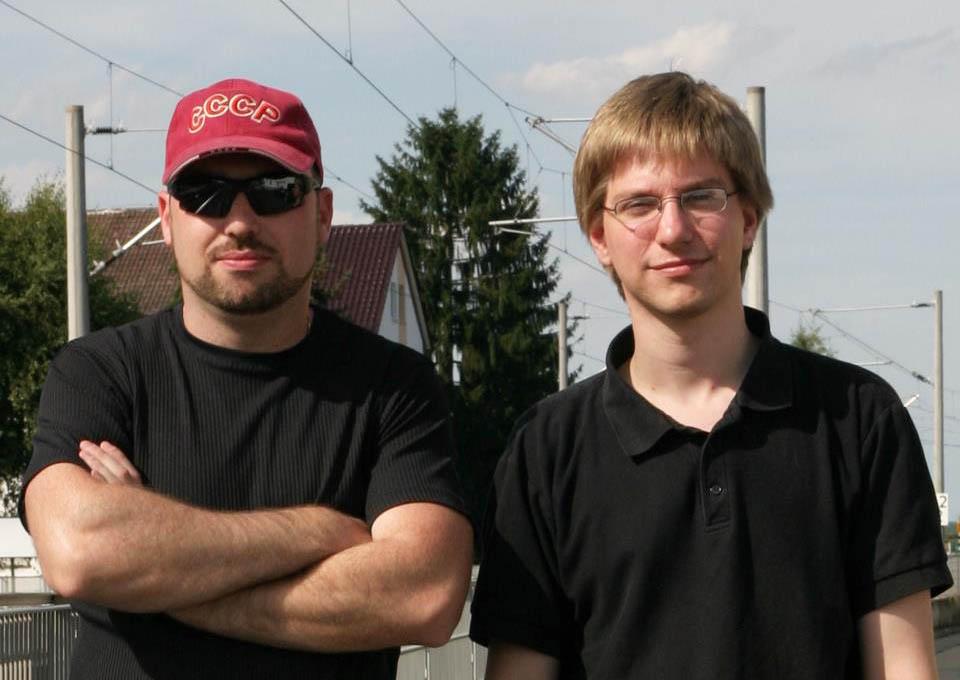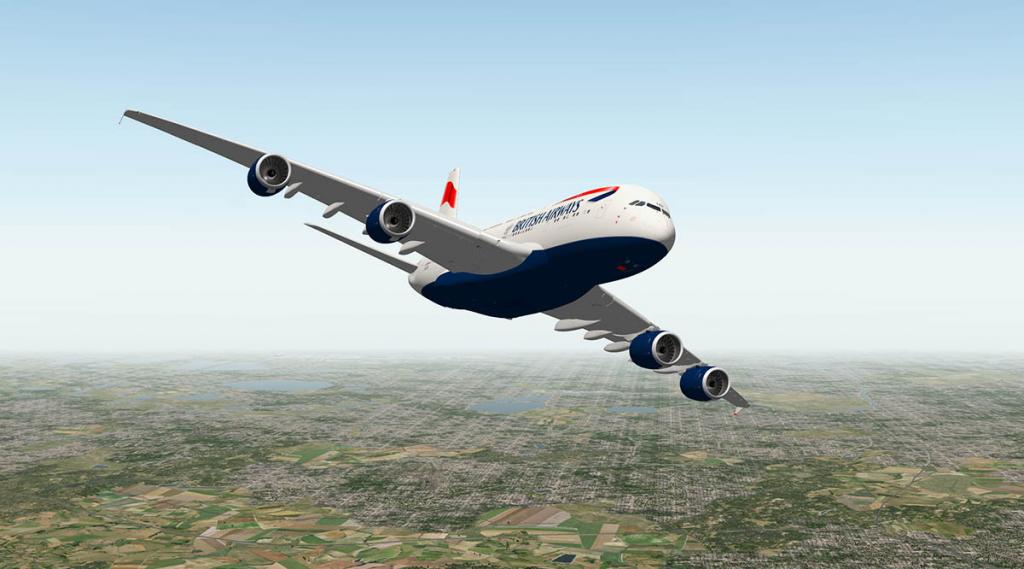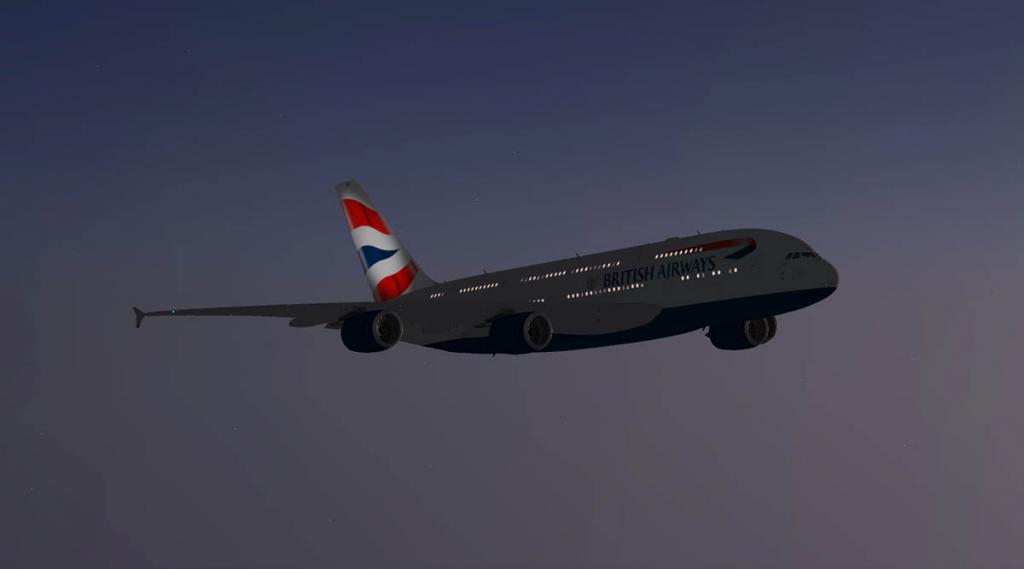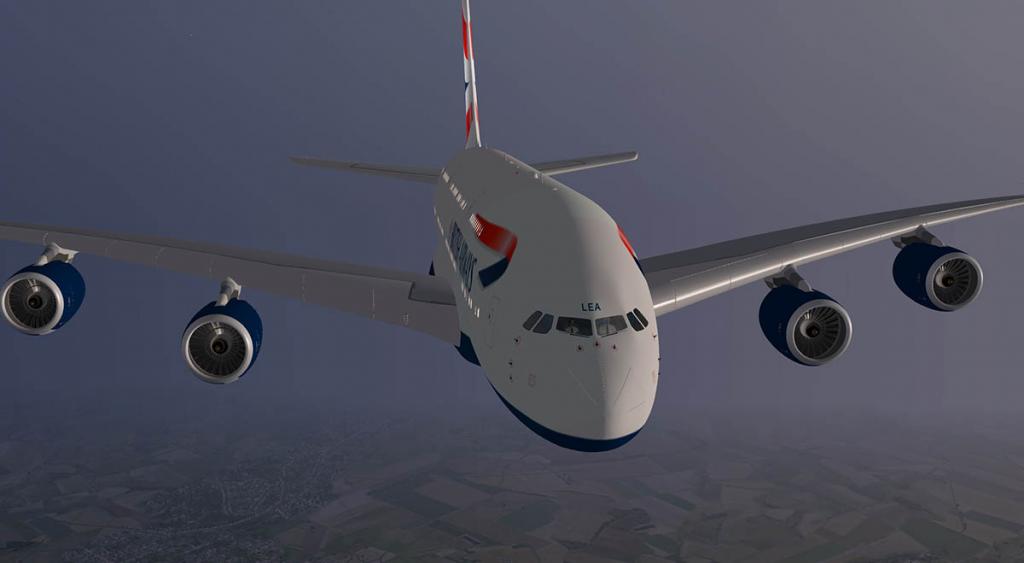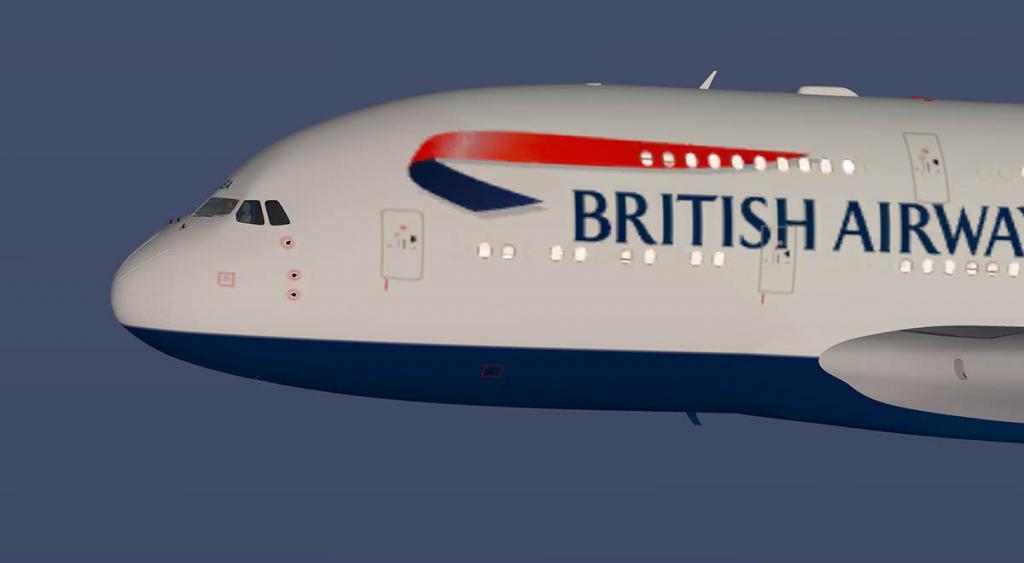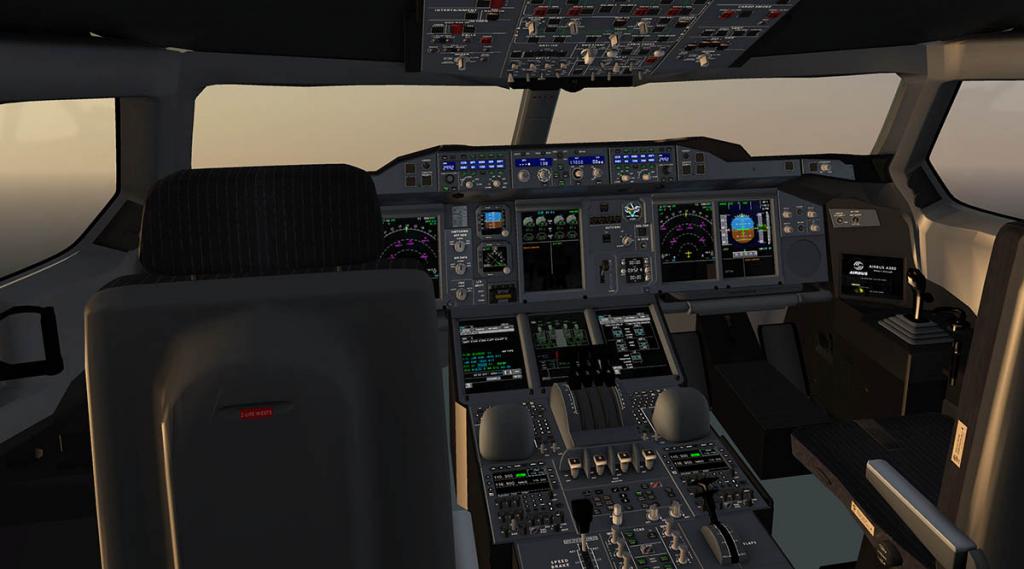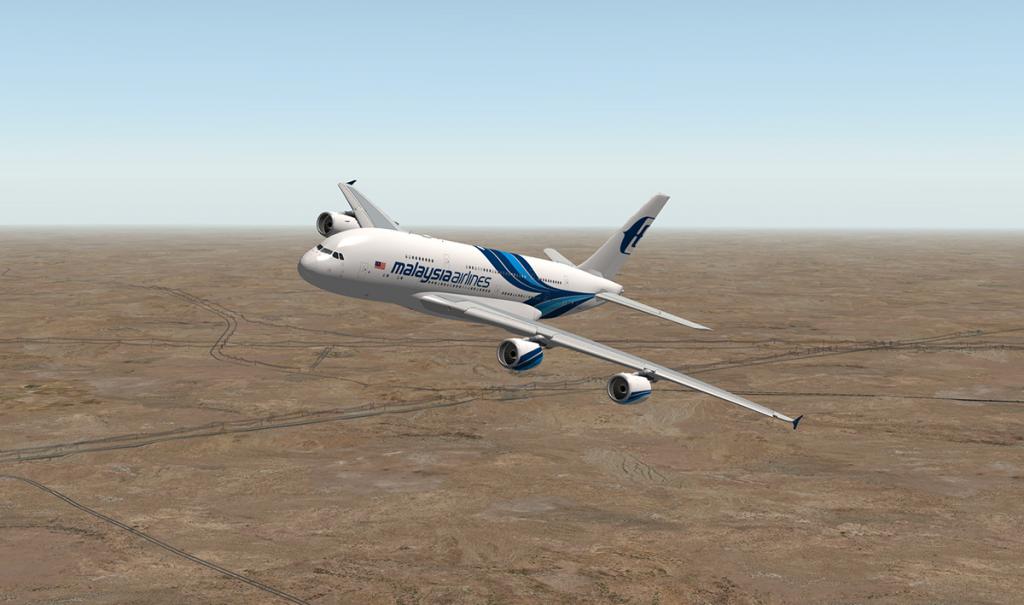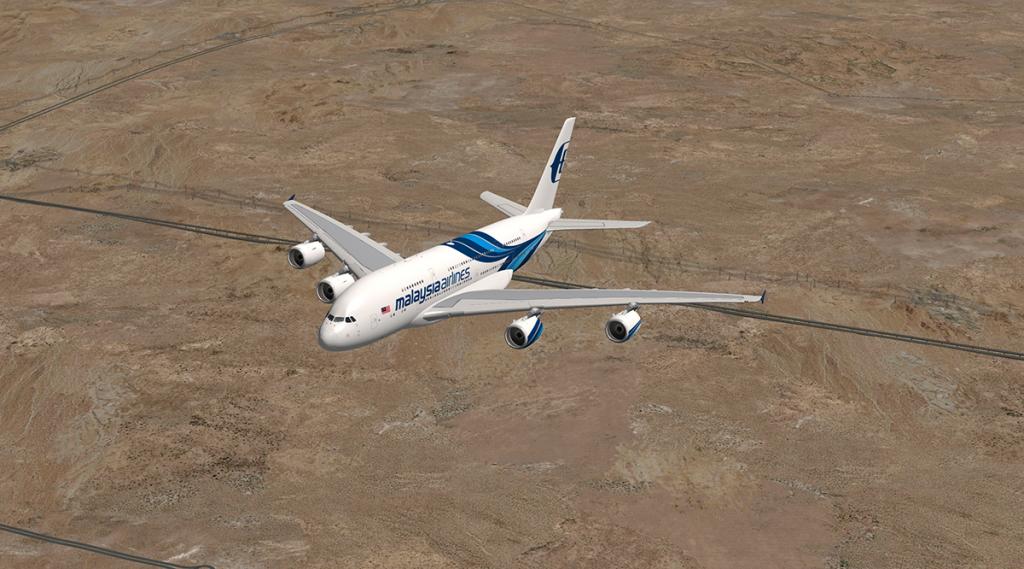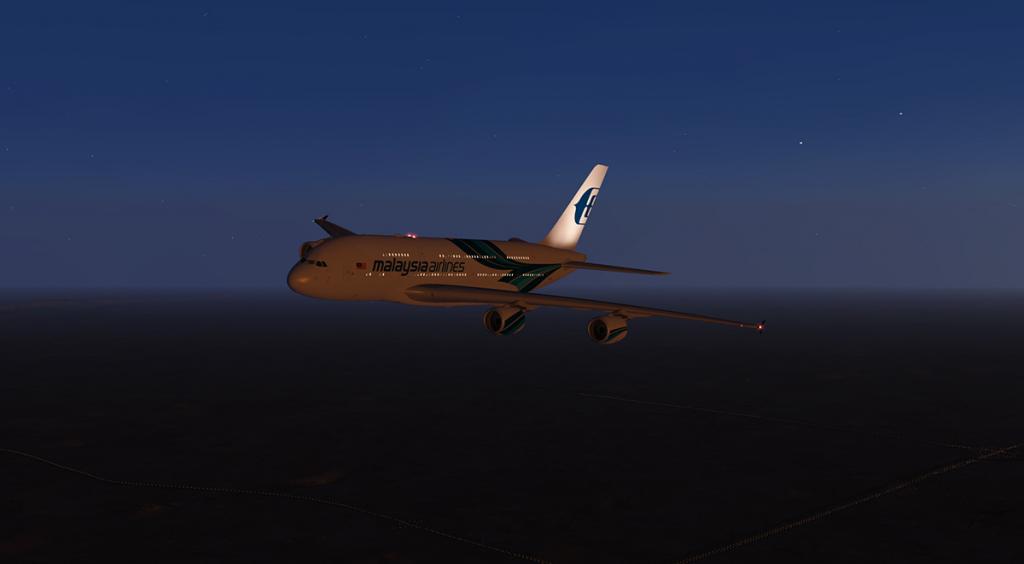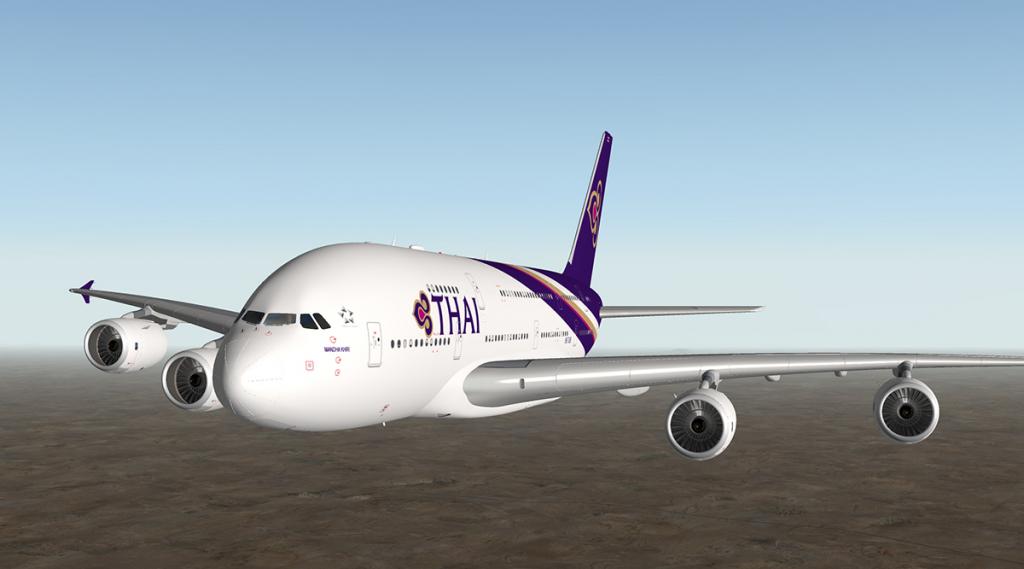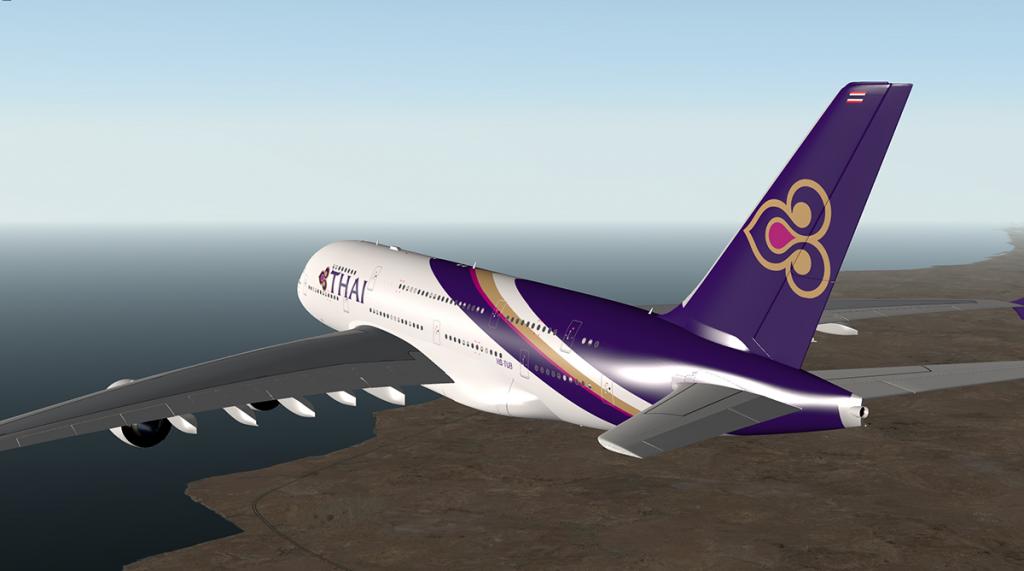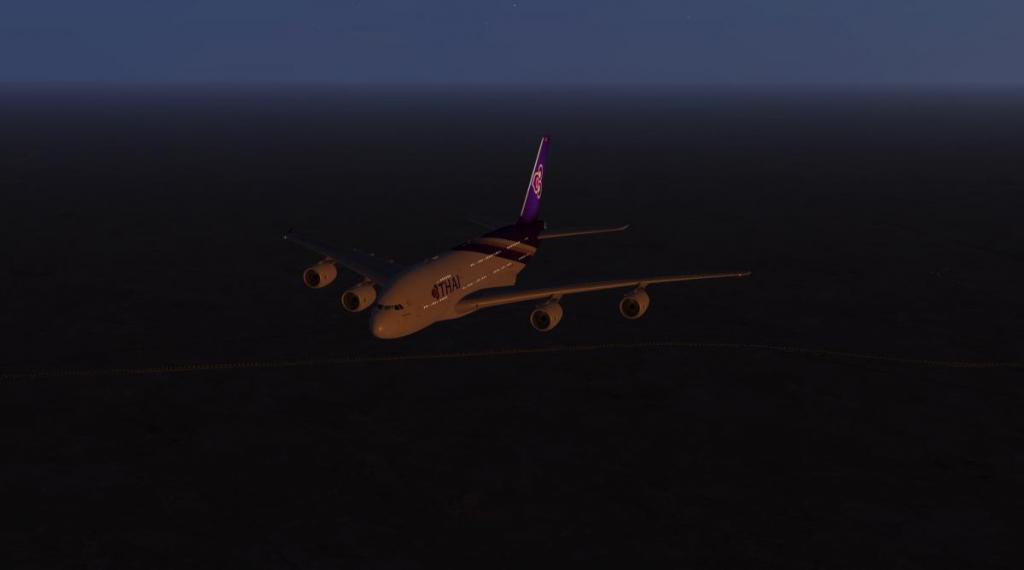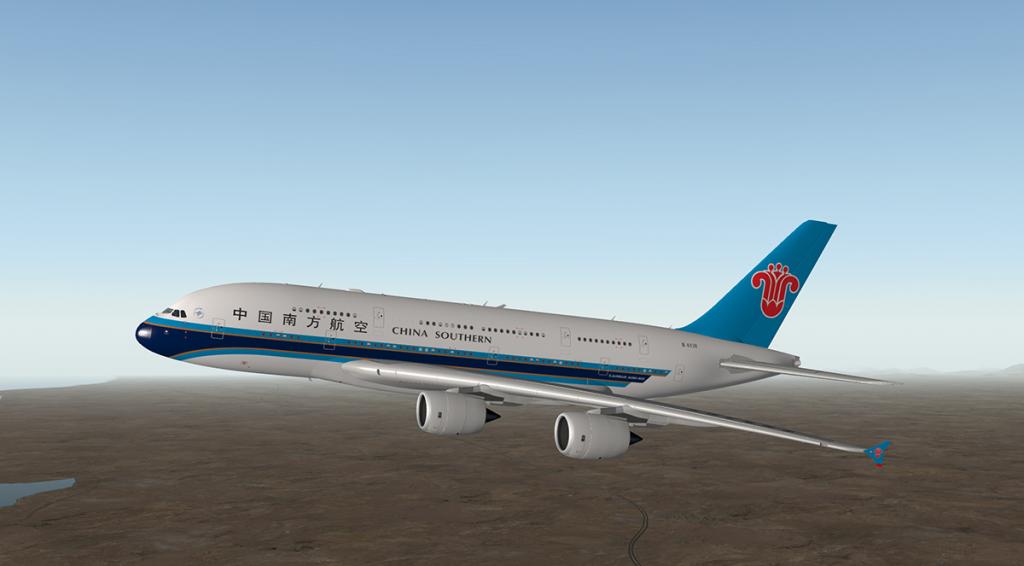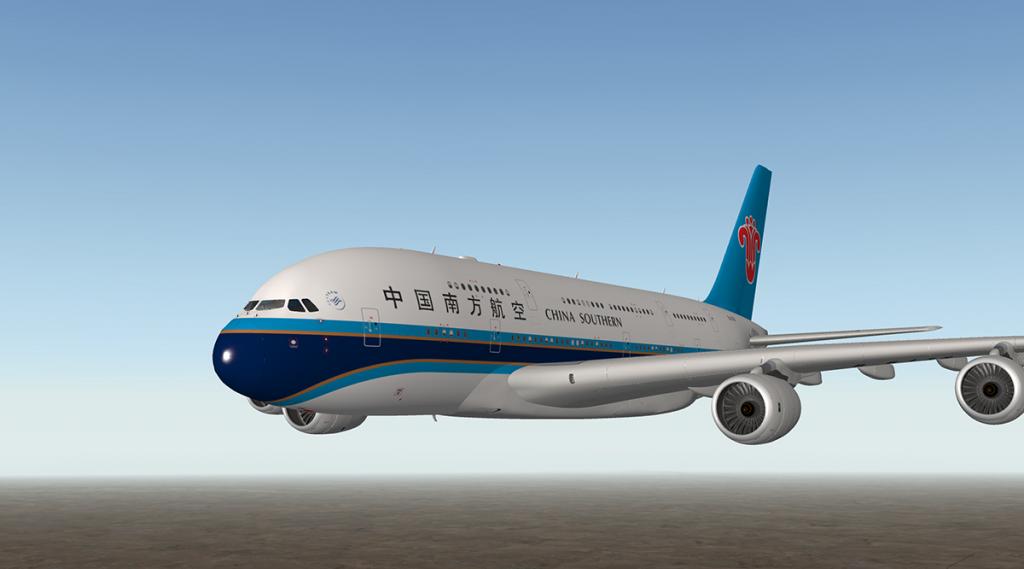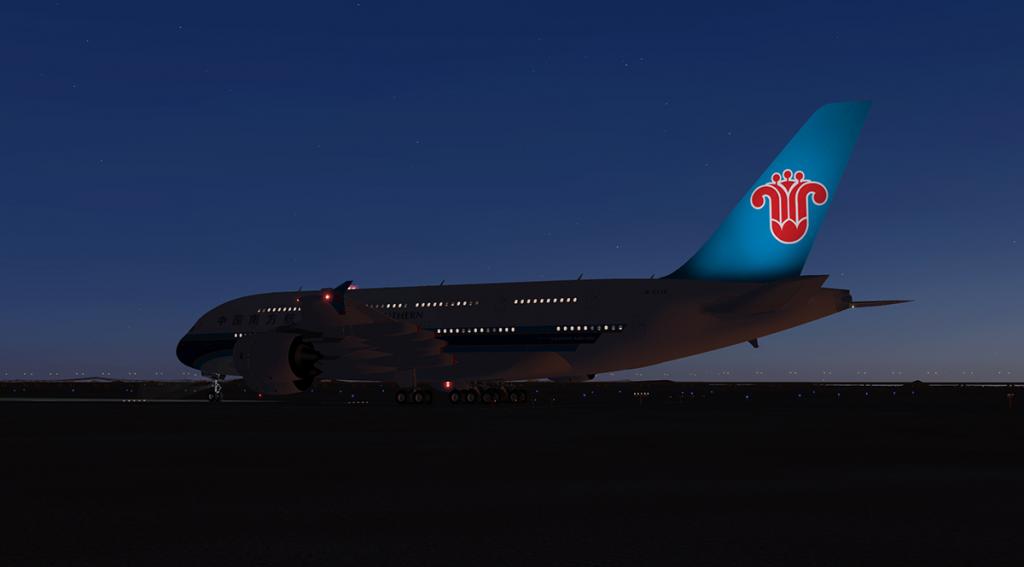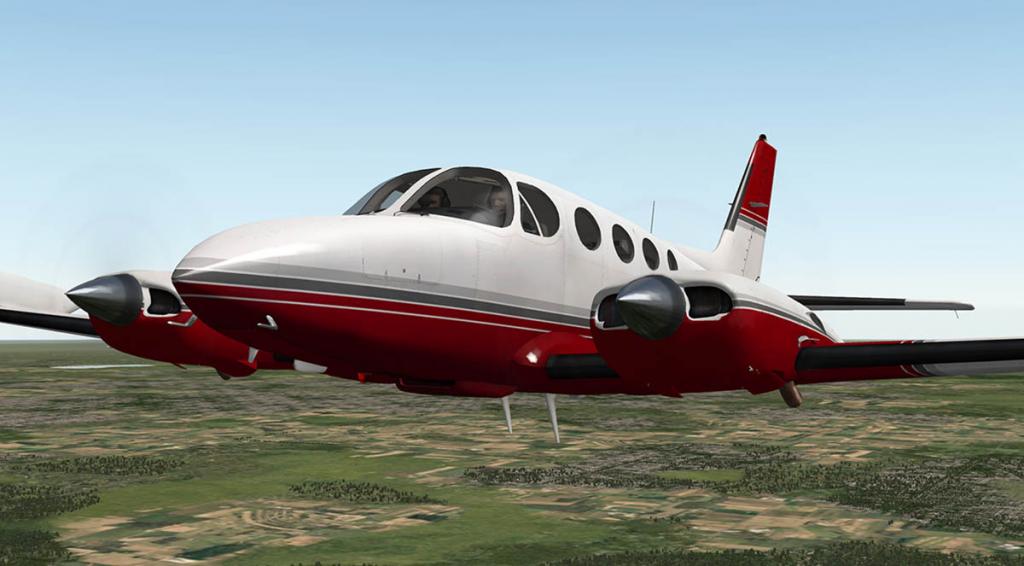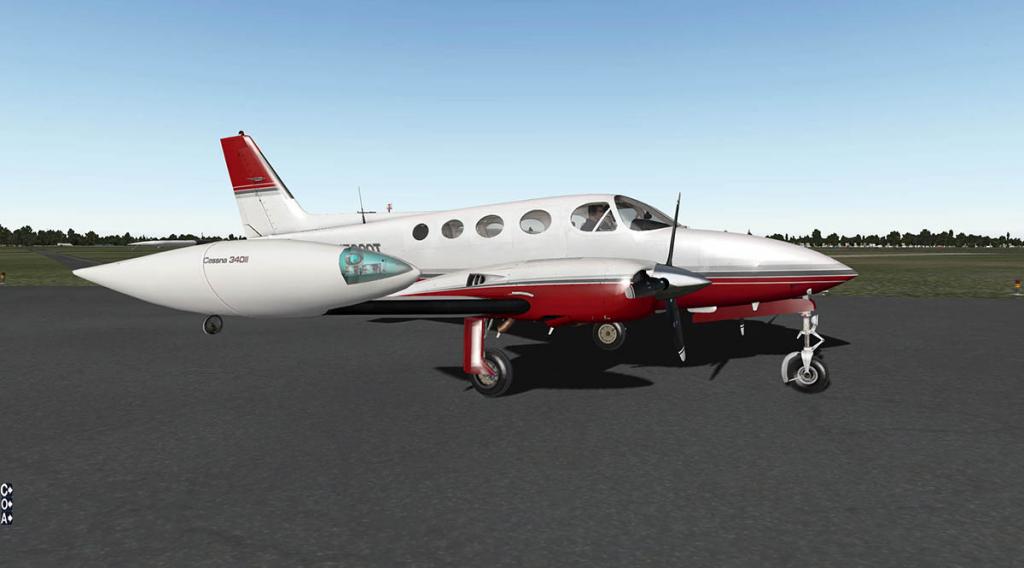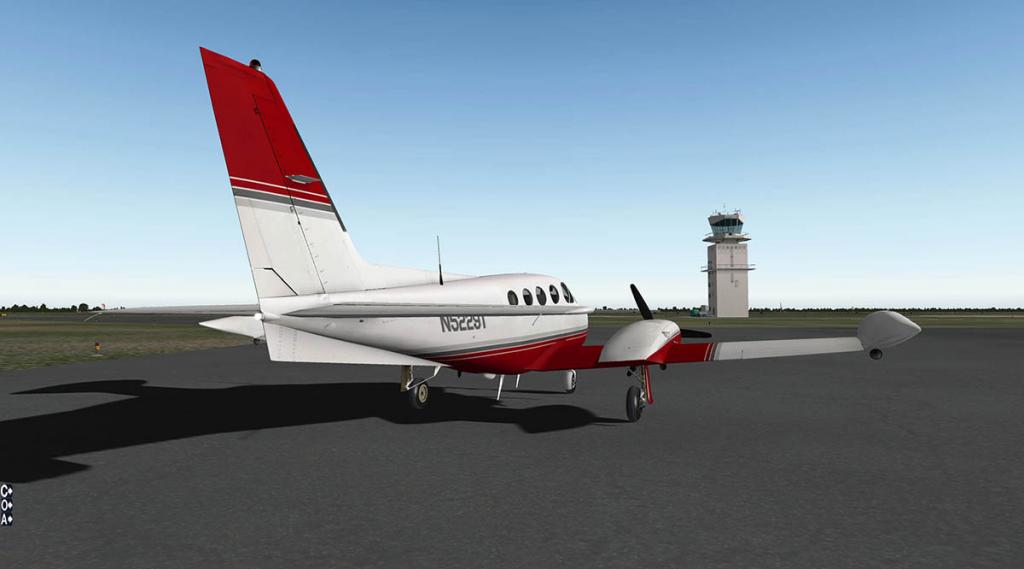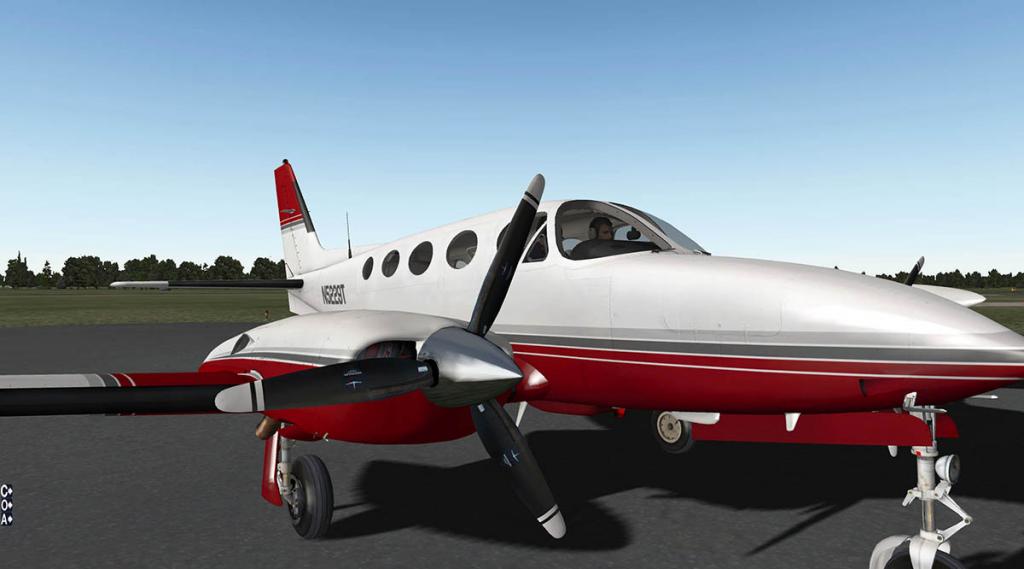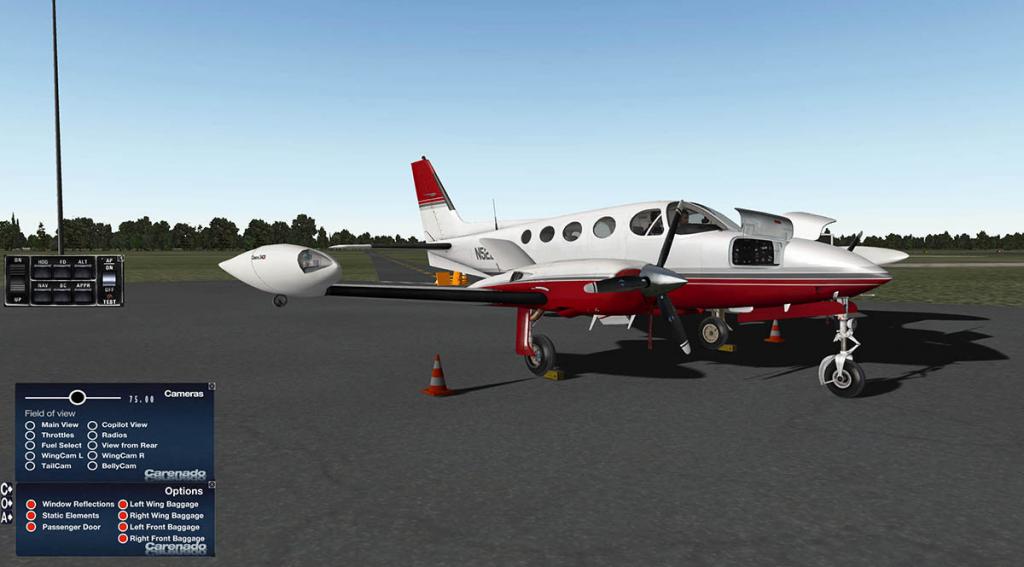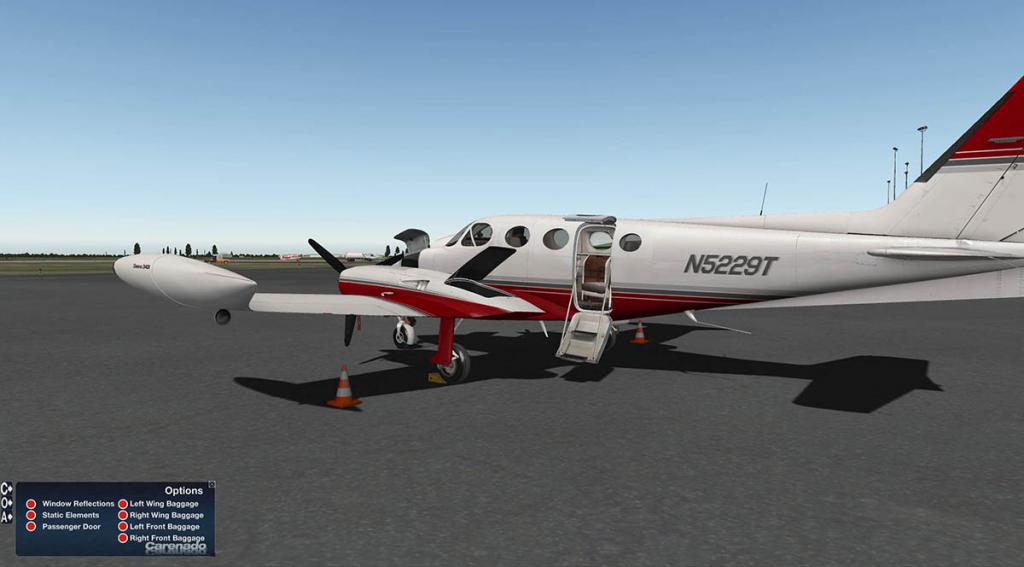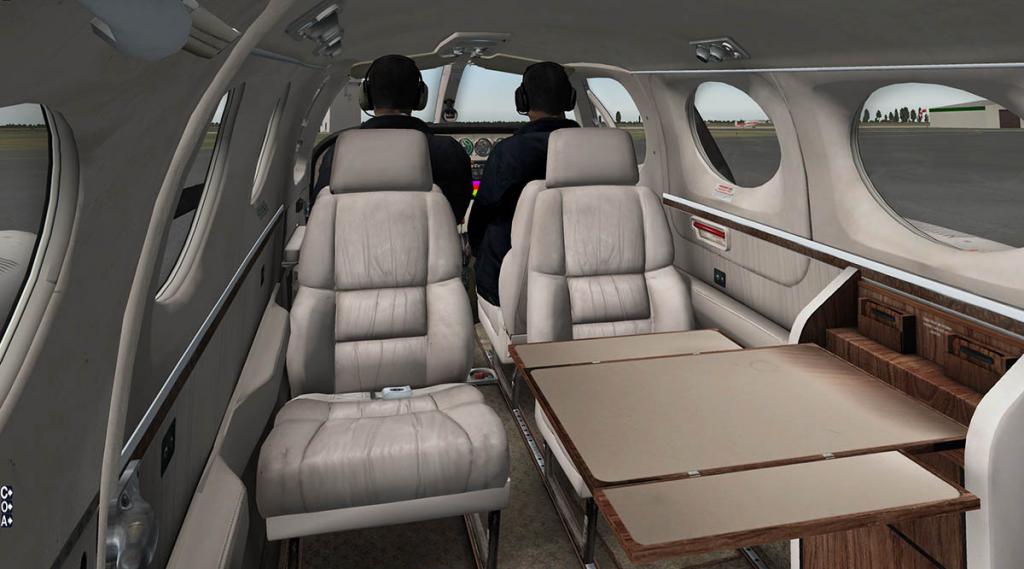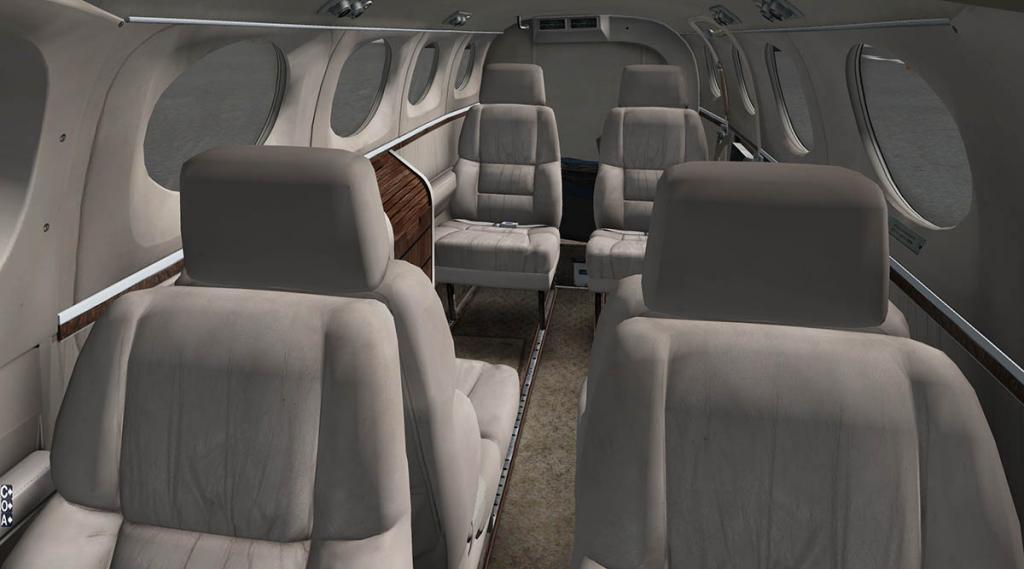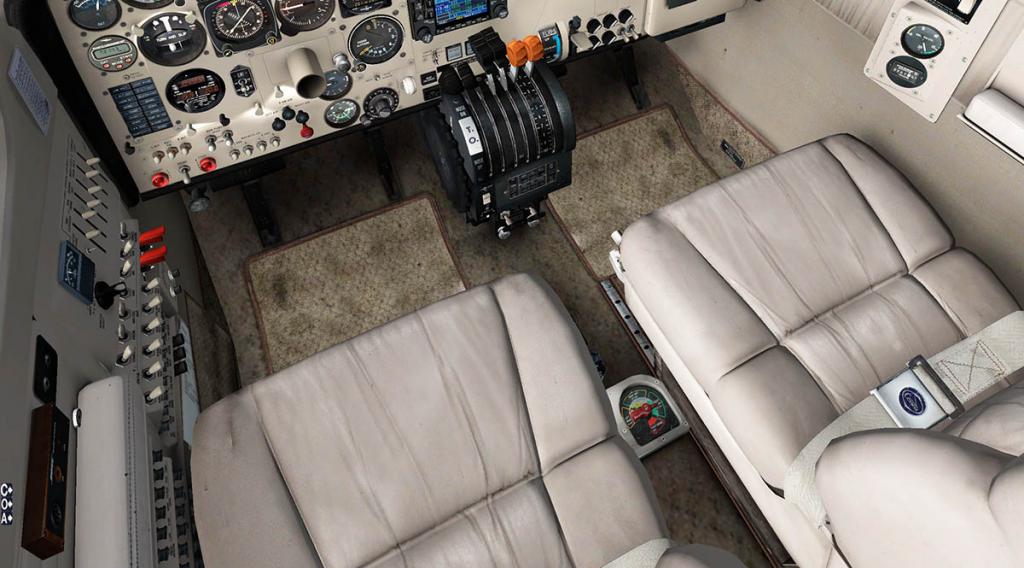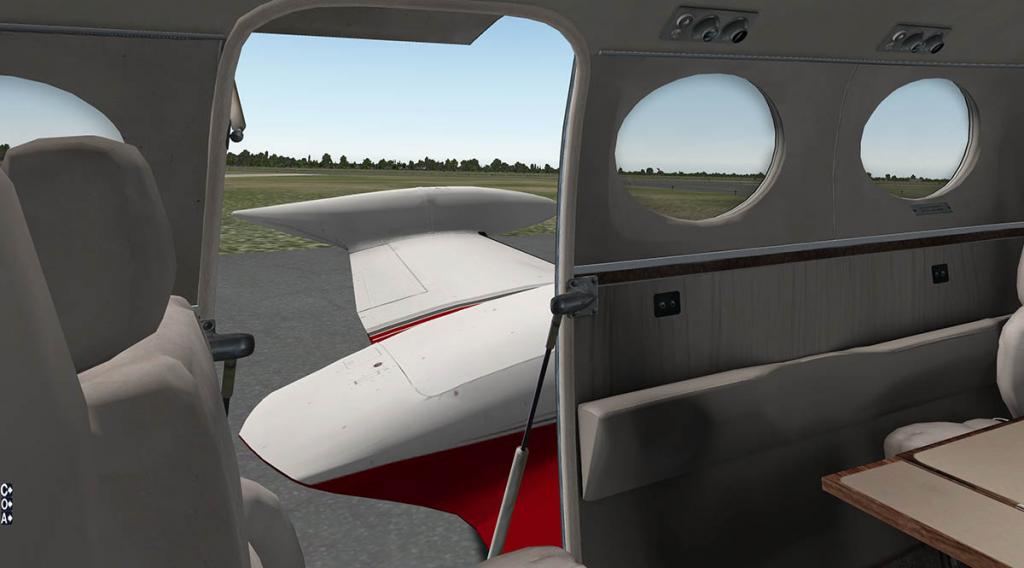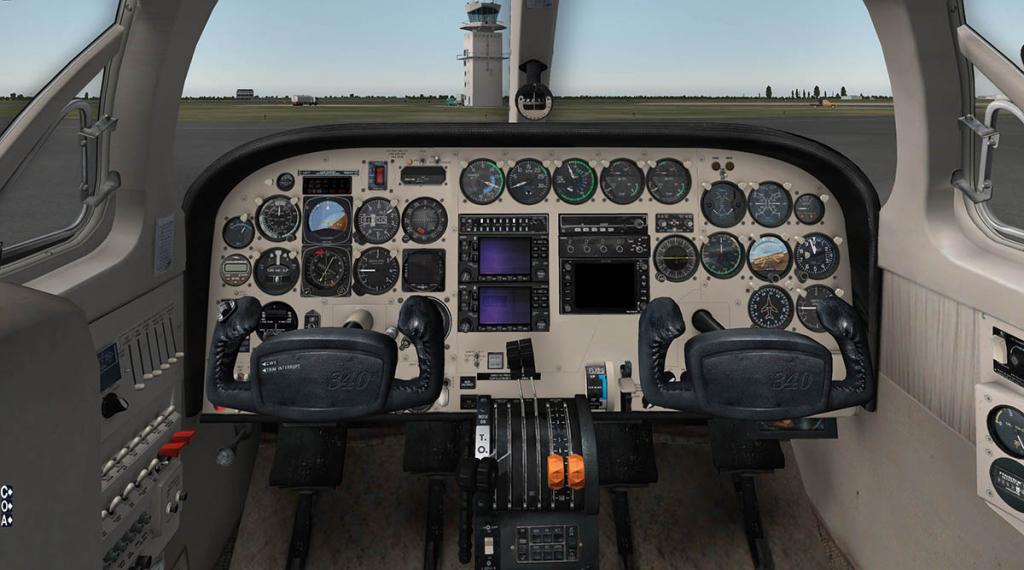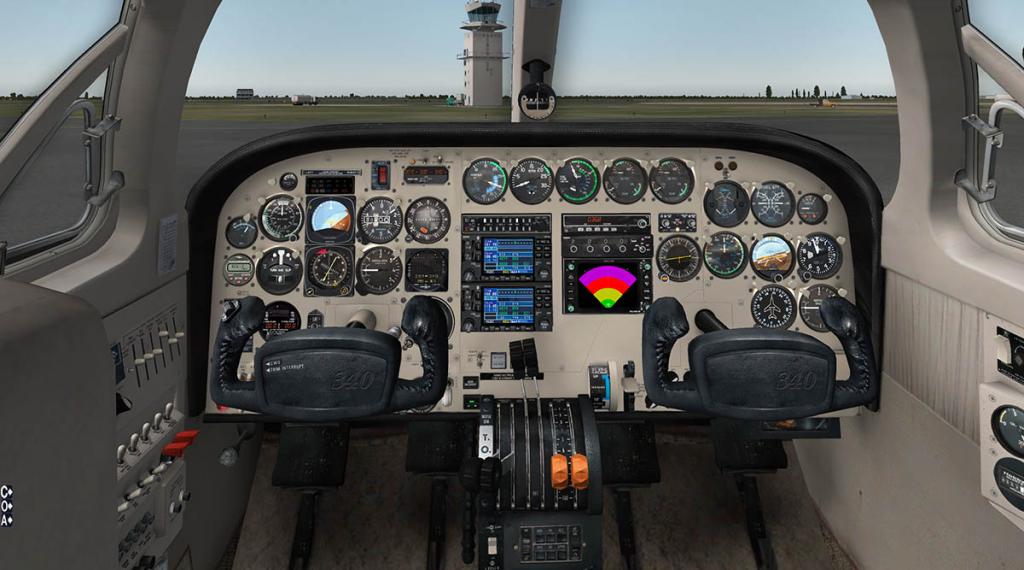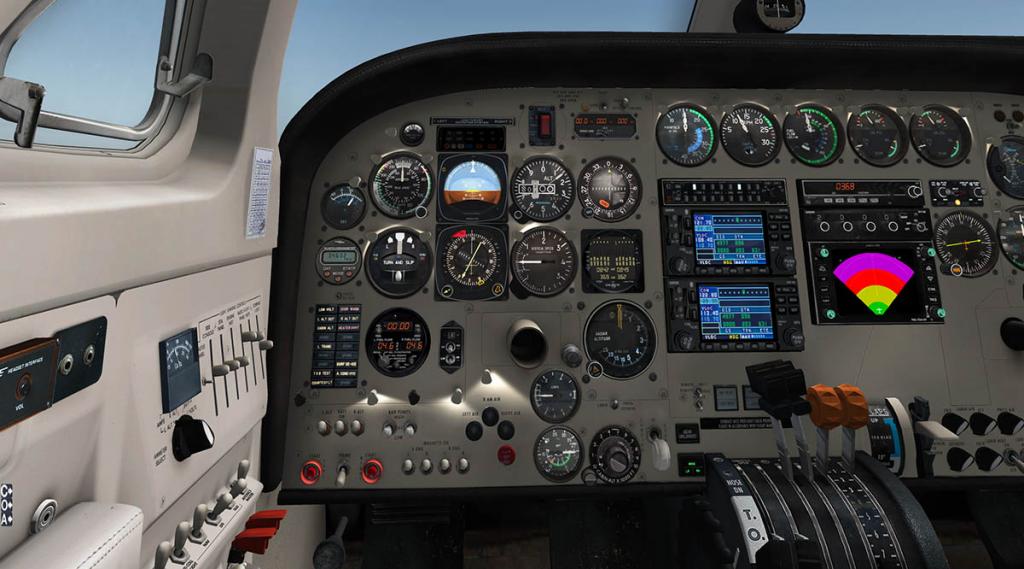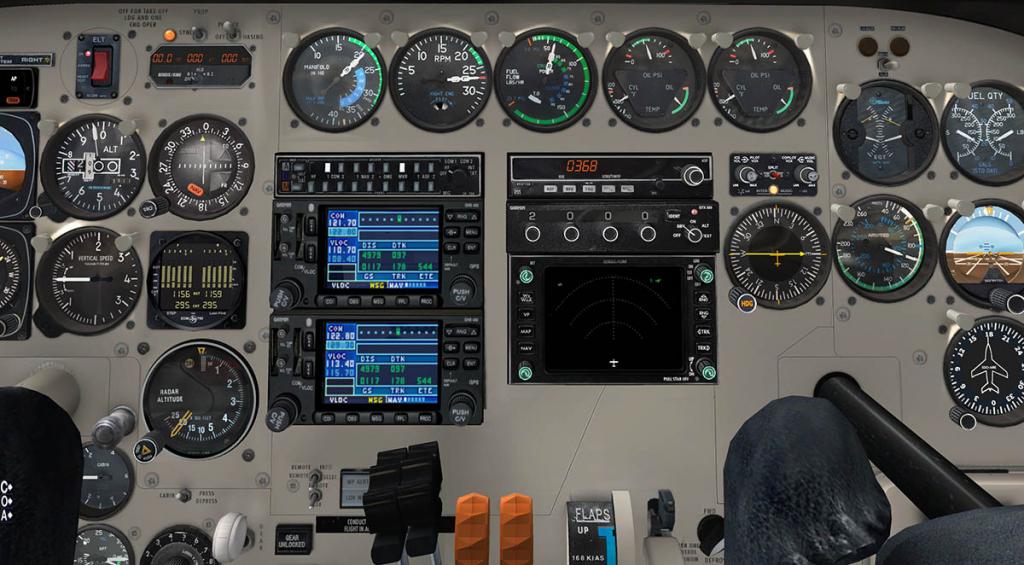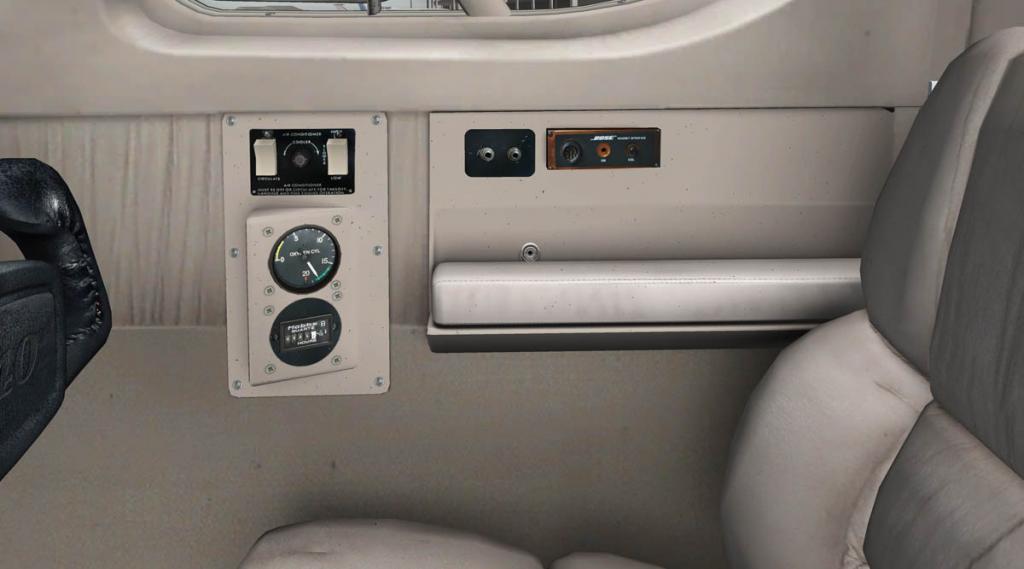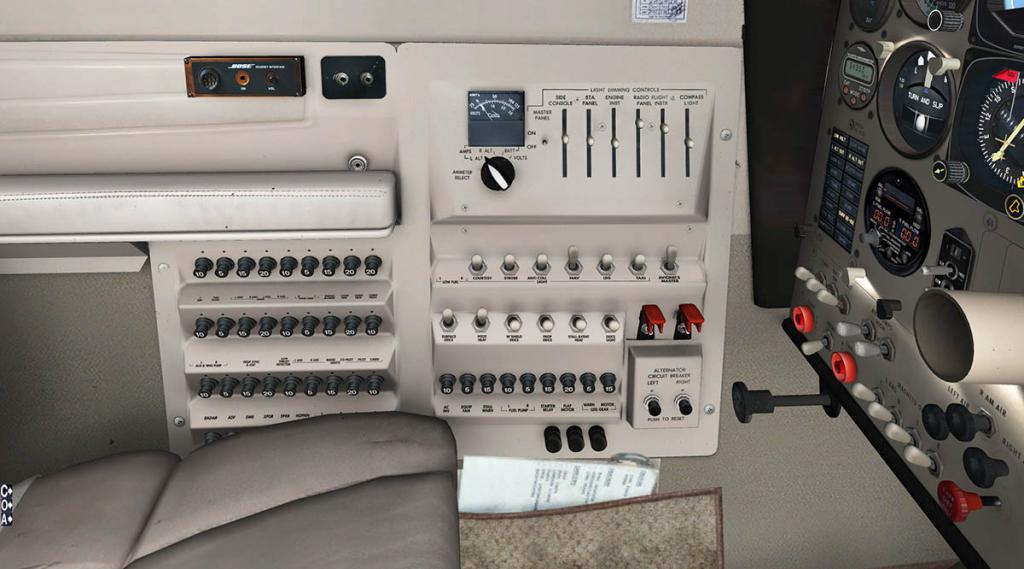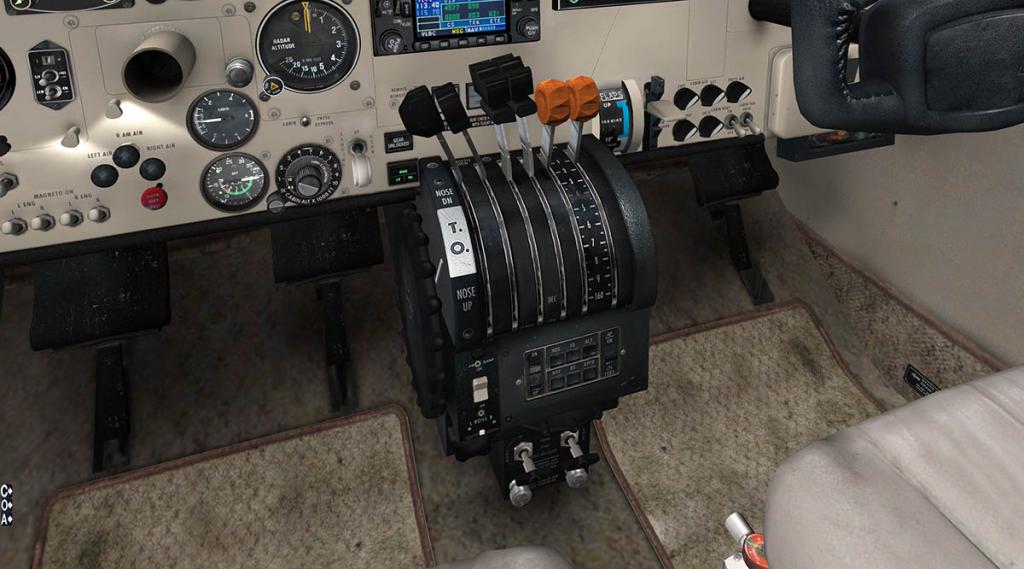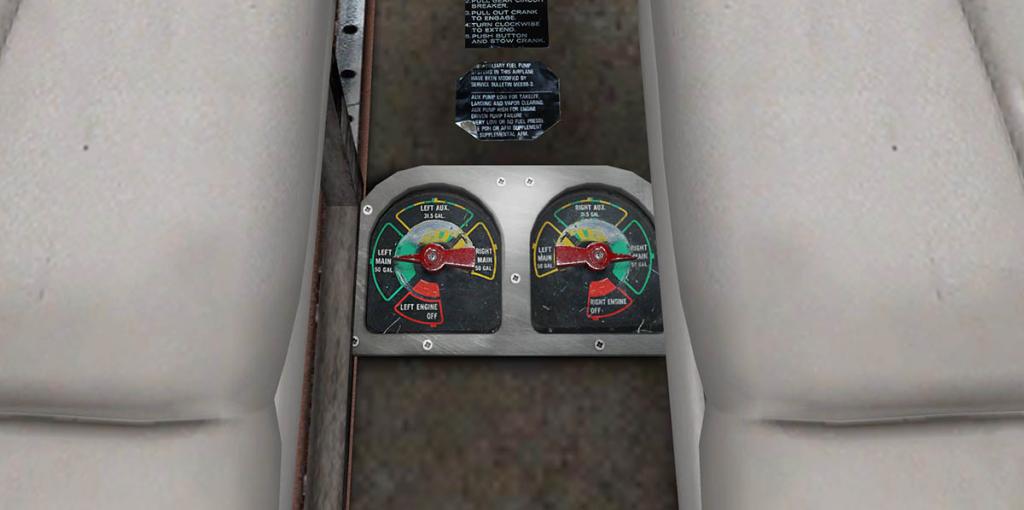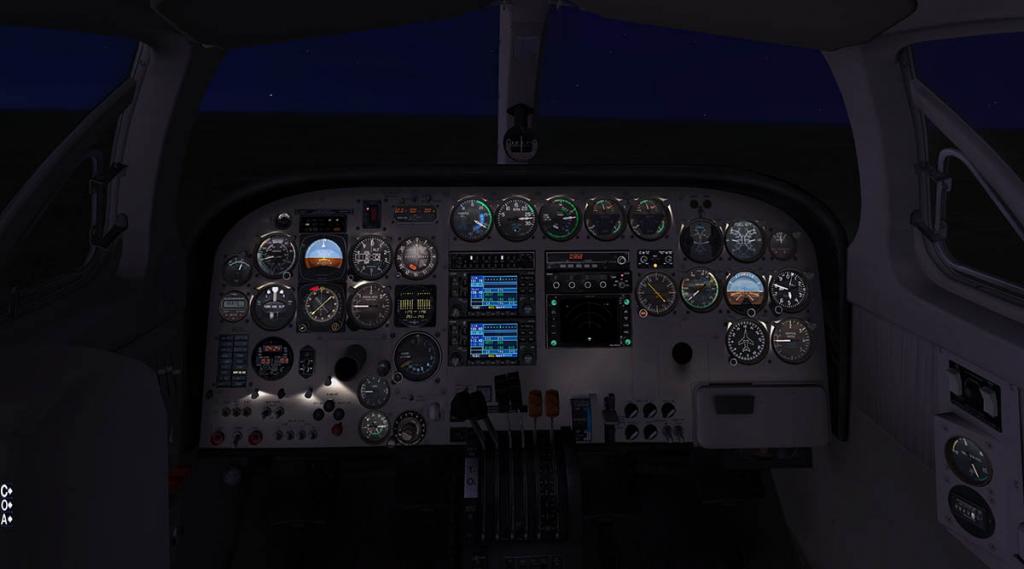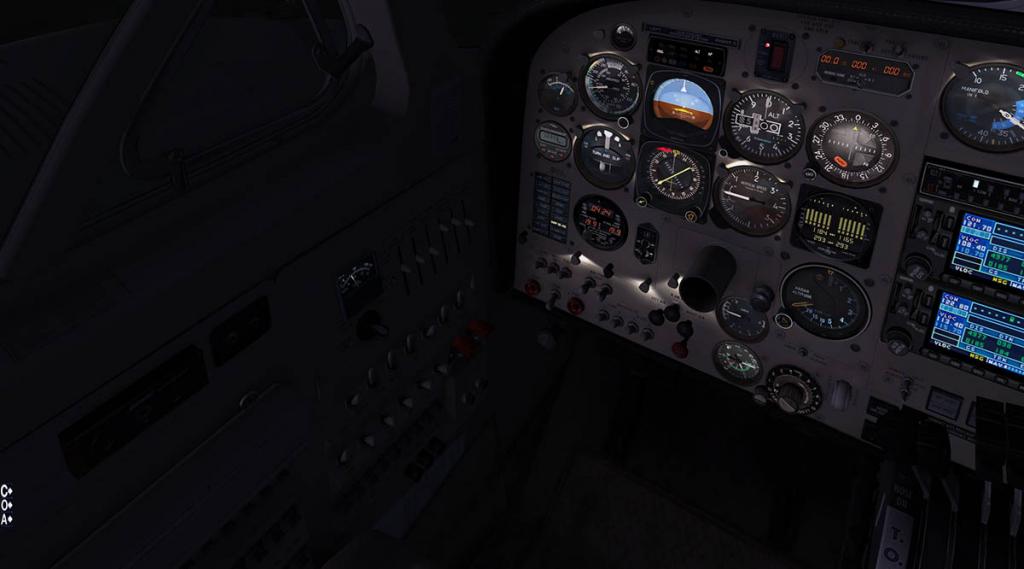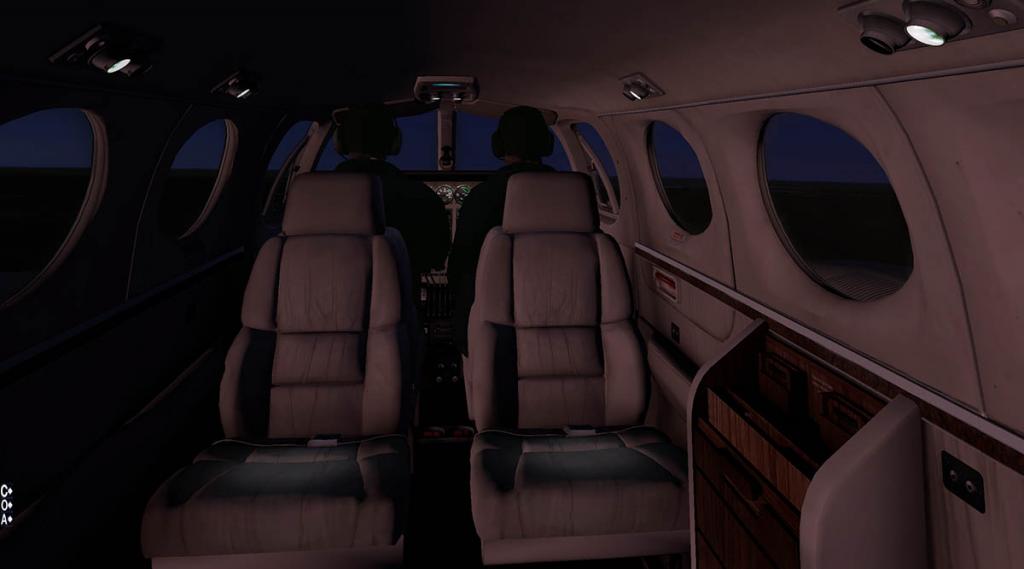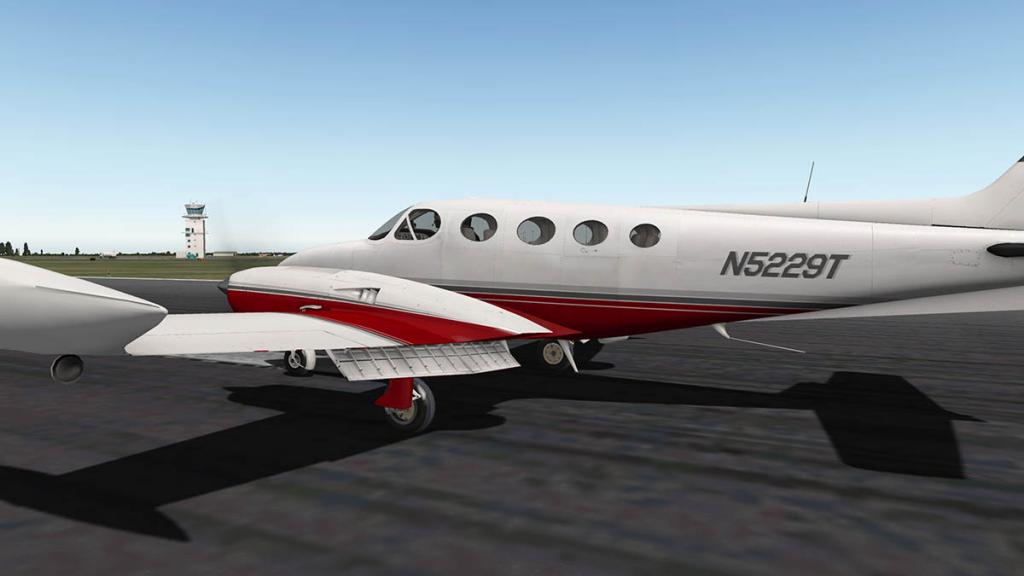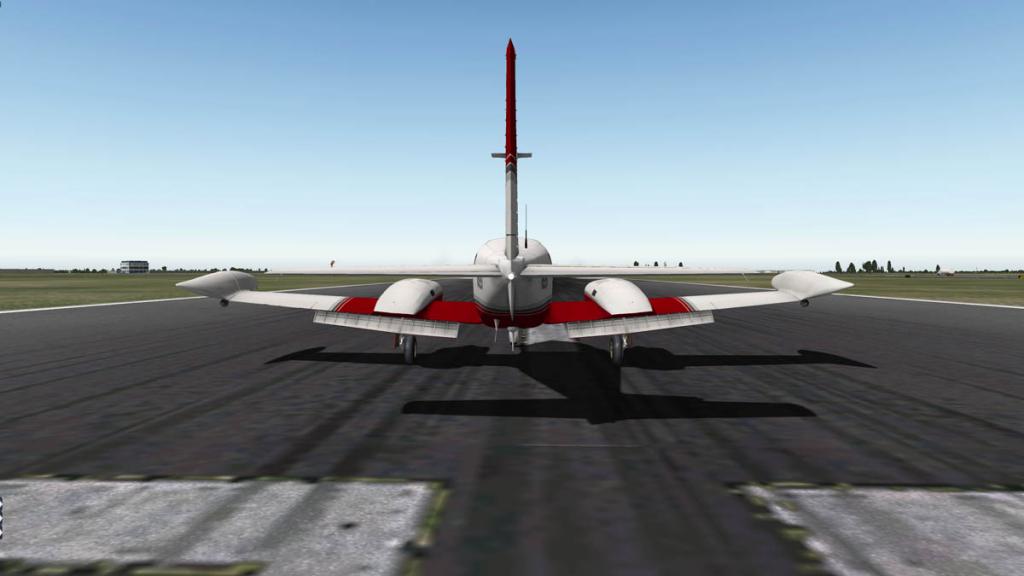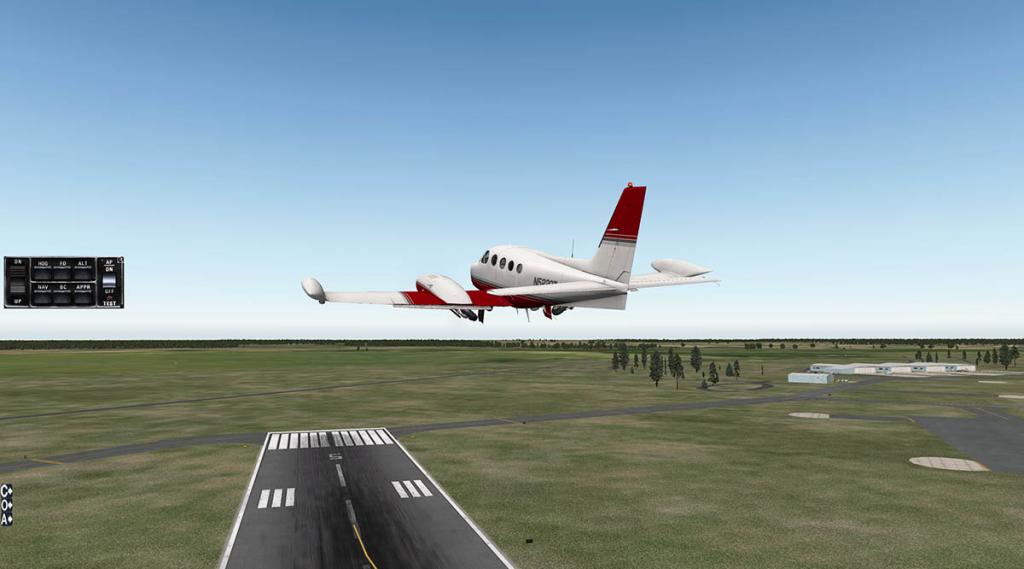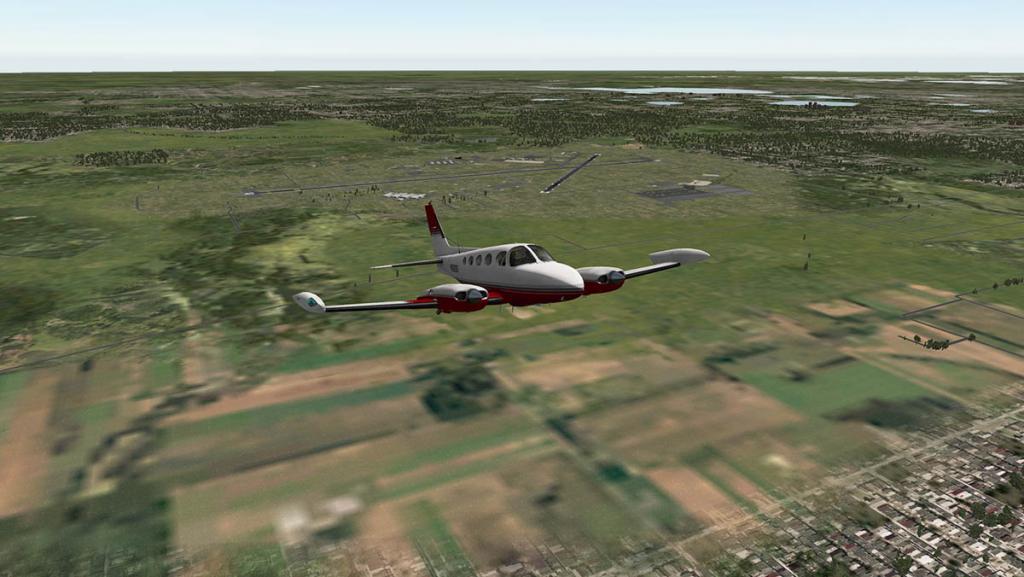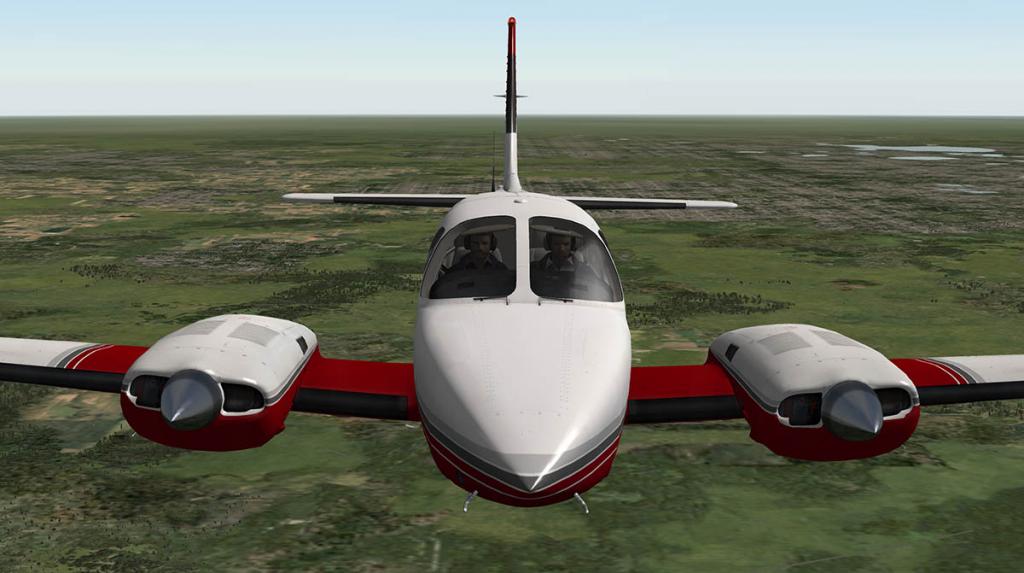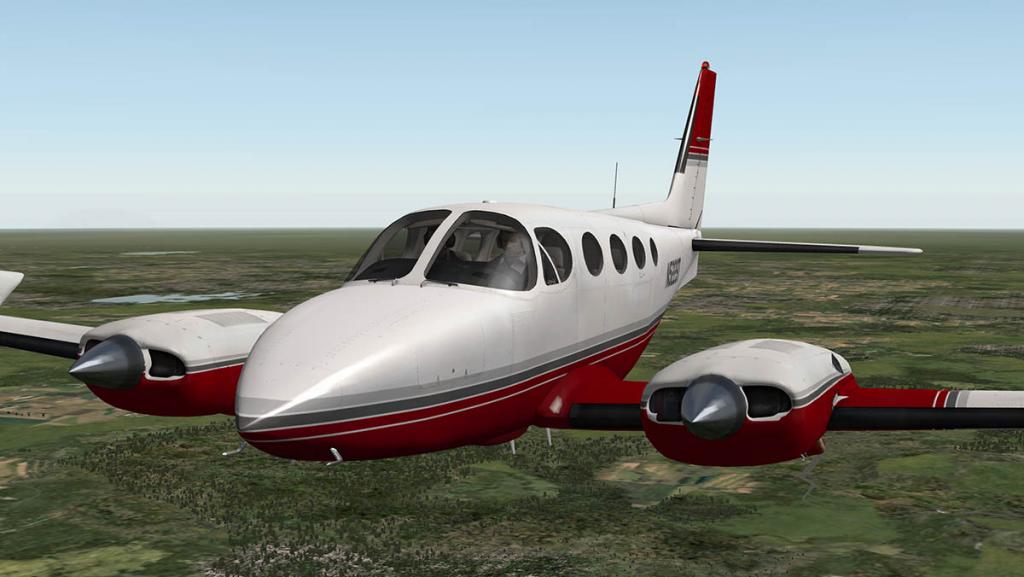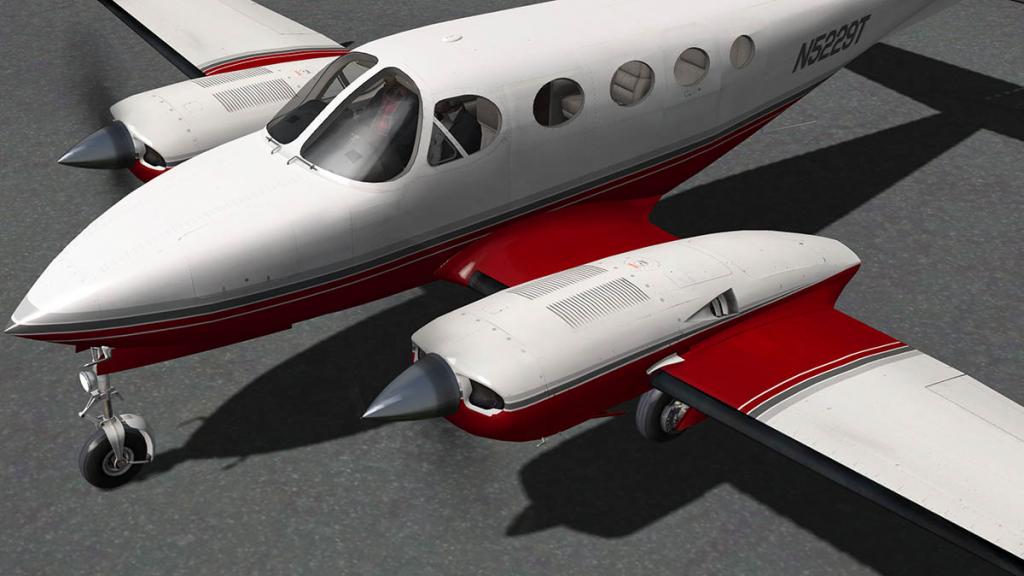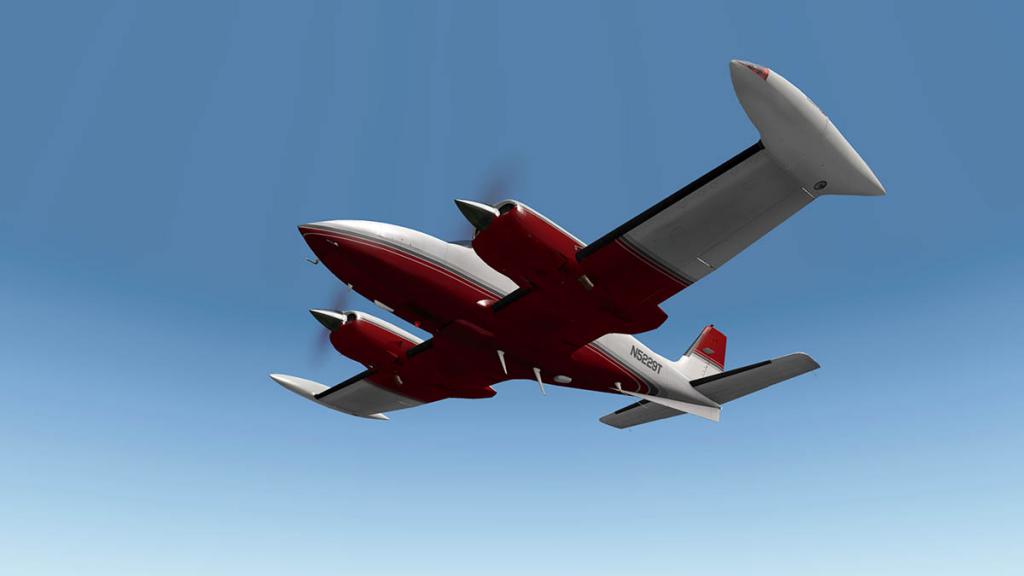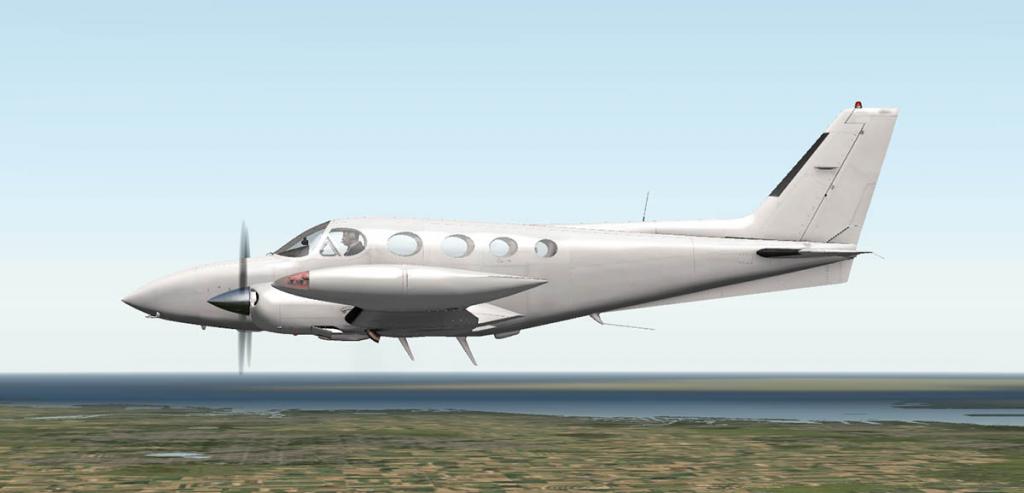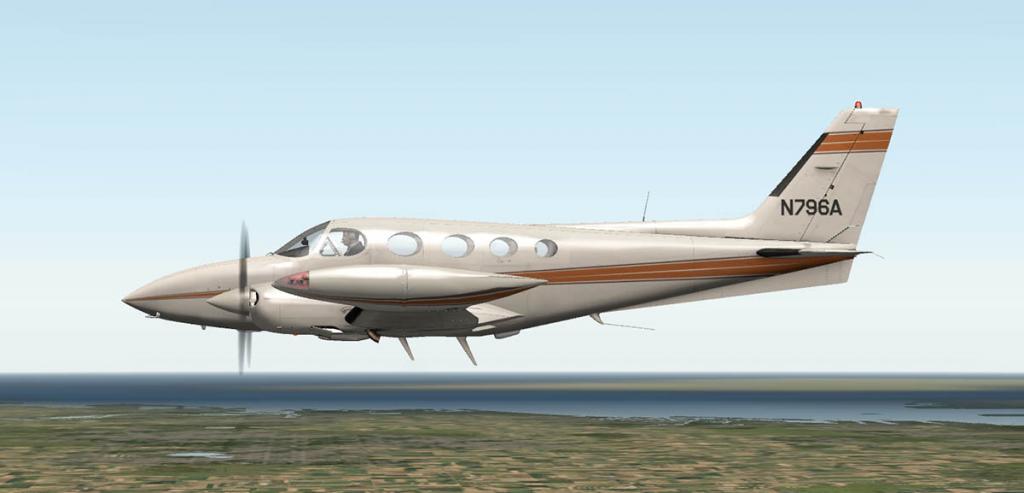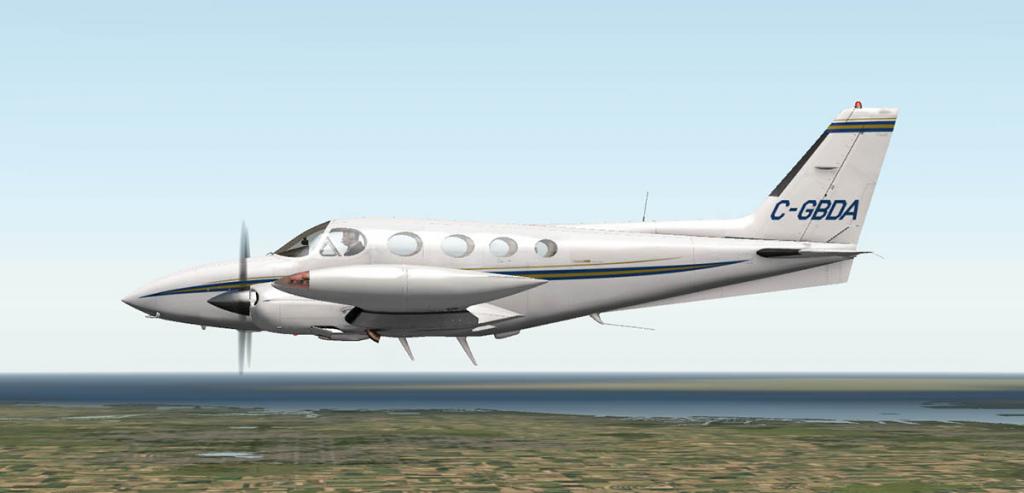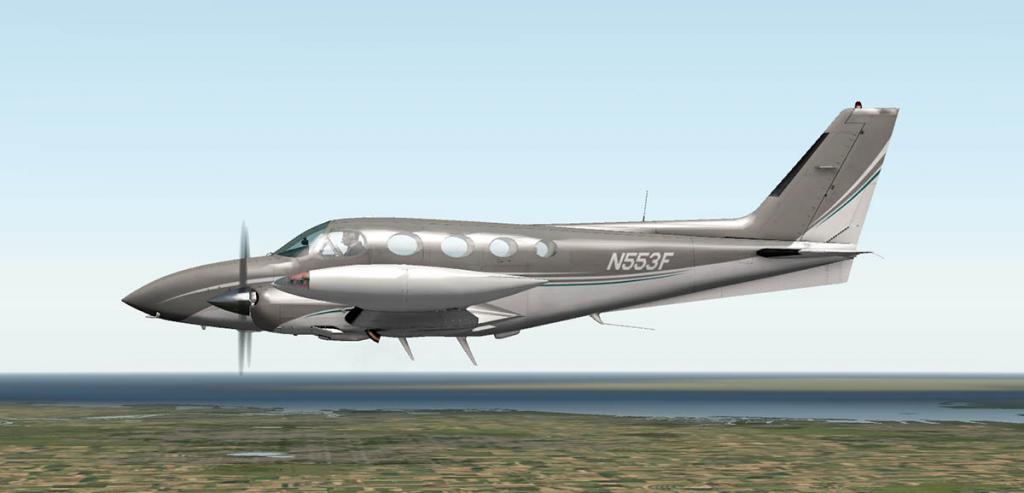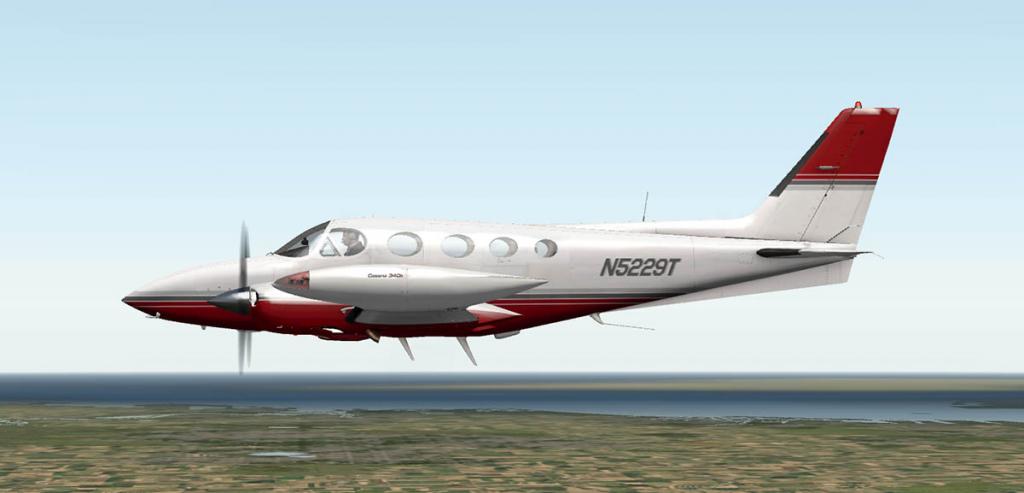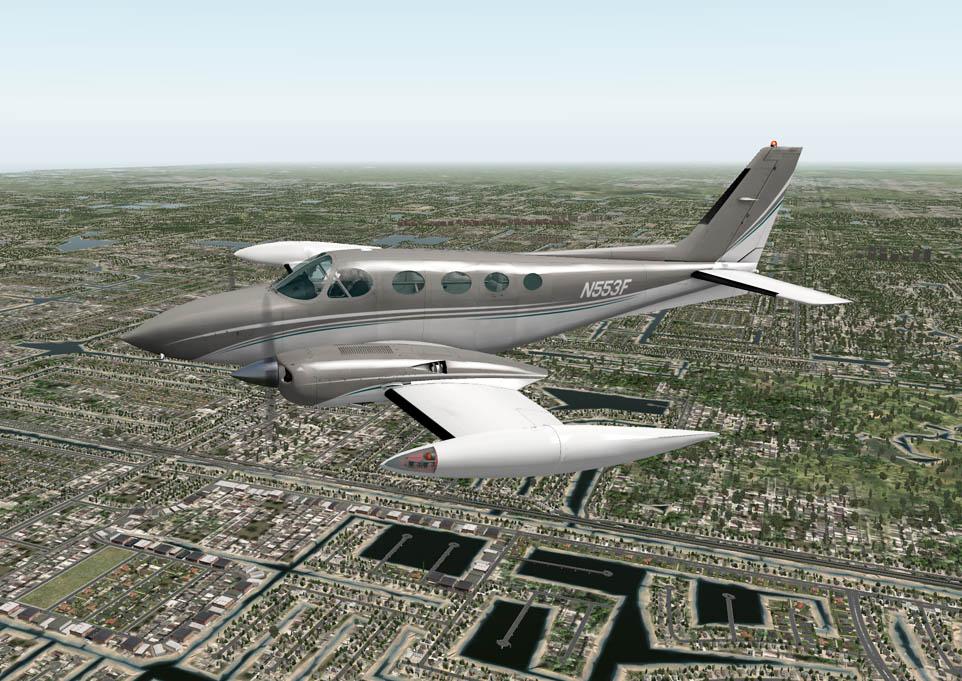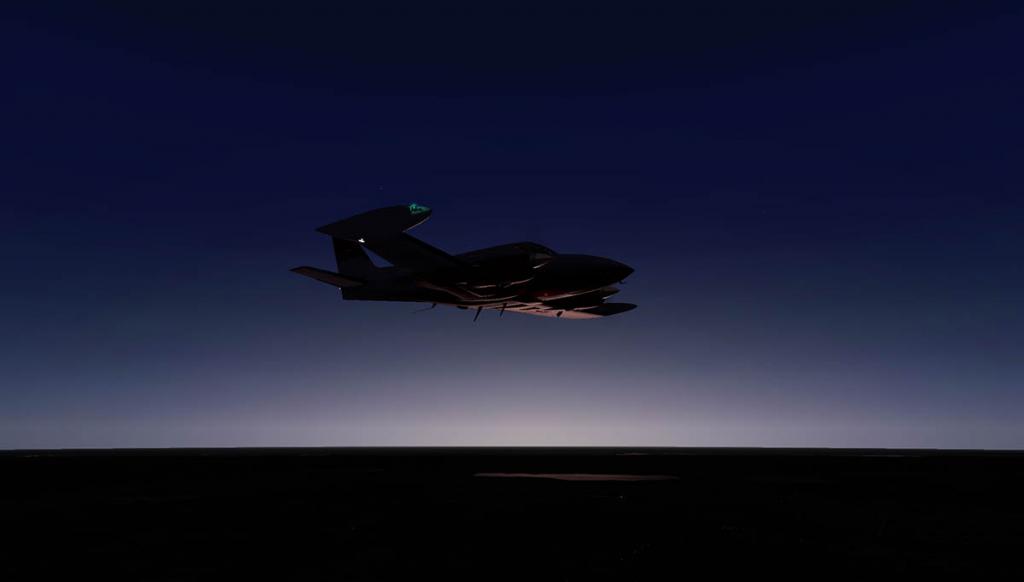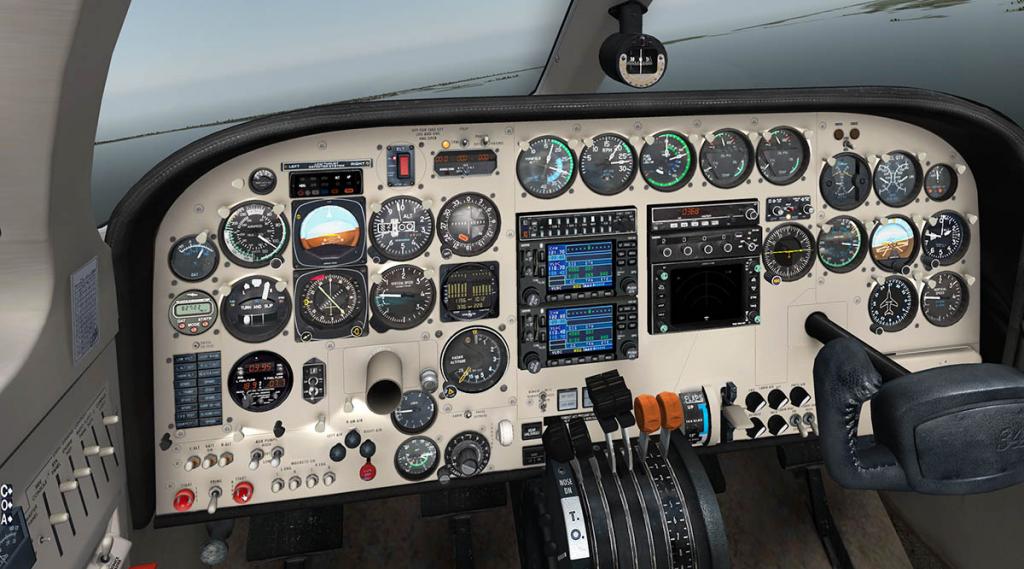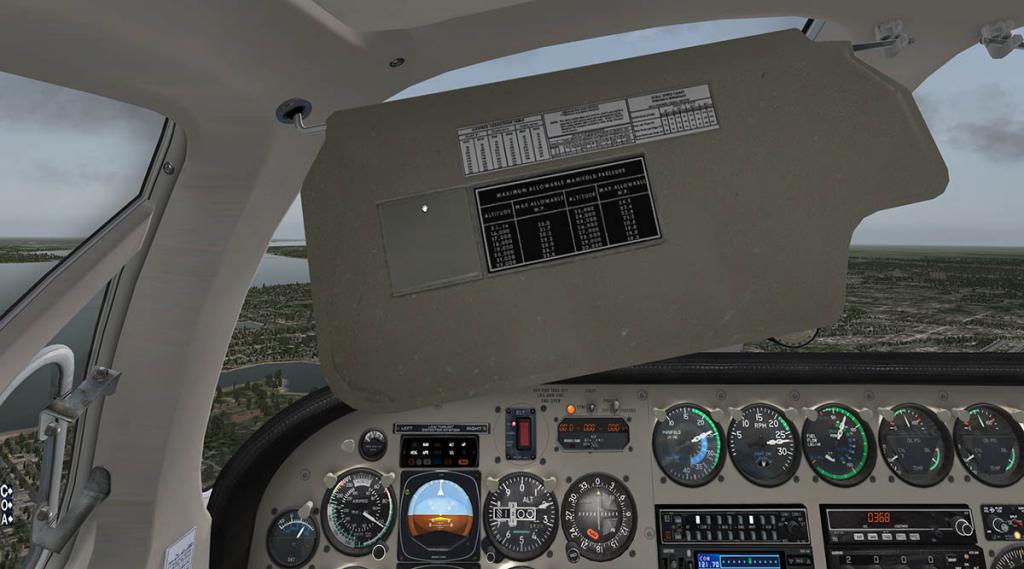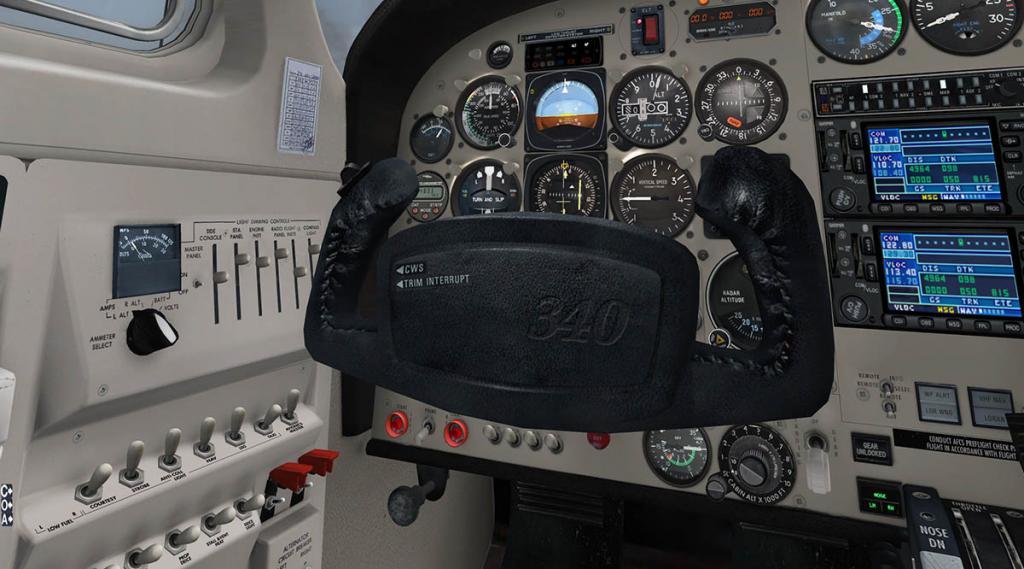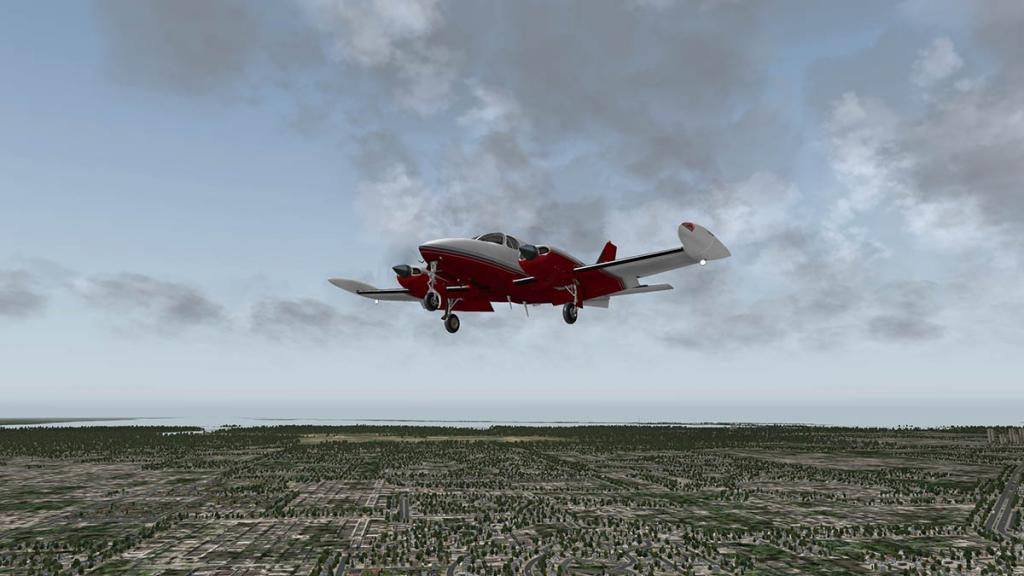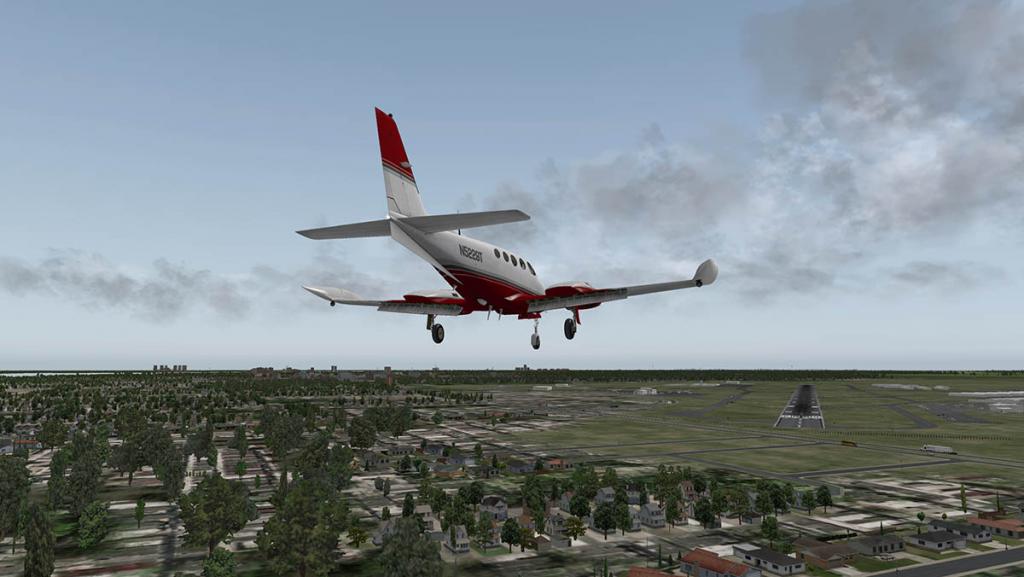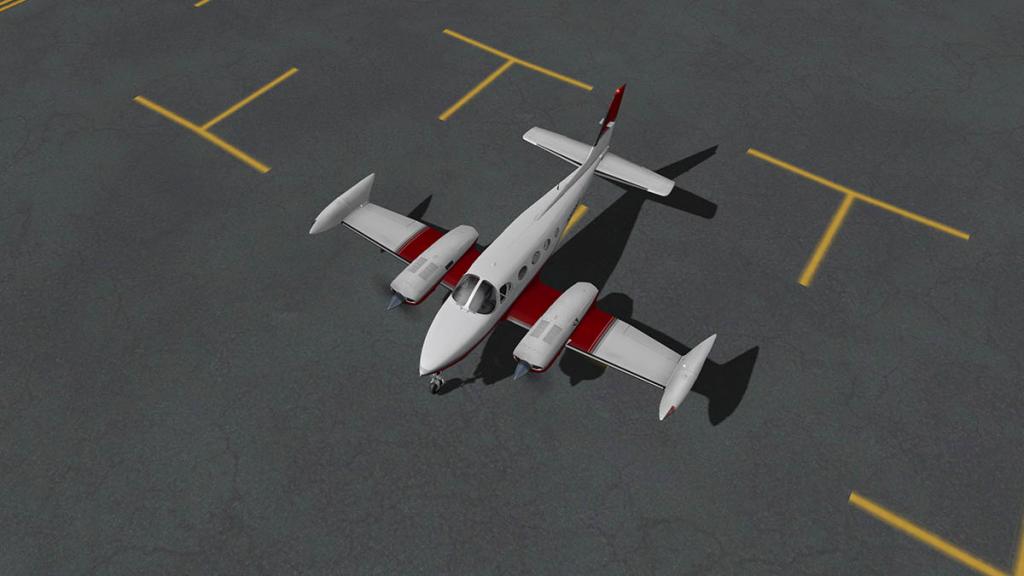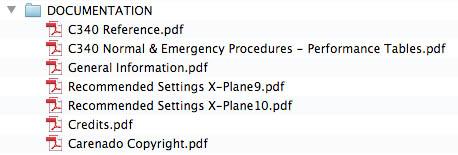-
Posts
2728 -
Joined
-
Last visited
-
Days Won
353
Content Type
Profiles
Forums
Articles
Everything posted by Stephen
-
There has been a lot of talk around the Garmin G1000 integration into X-Plane cockpits lately and the availability now of a Plane-Maker add-on is interesting. adventurer854 has created a Garmin G1000 twin screen set that can be added to your aircraft via Plane-maker. It is the basic set of components that adds the G1000 functionality to any aircraft that can accept the G1000 layout (From General Aviation to Light Jets). To see how it all works in practical terms you can download alexander316's version of where he has Integrated the G1000 screens into the default X-Plane Cessna 172SP. (since this item was posted alexander316 has updated the 127SP to v2.3. The link is to to the new version) And a great layout it is. It has to be noted that the functionality is directly related to the basic set of Plane-Maker commands and so not all the switches and buttons work. If you can accept that then the setup works very well. The basic Garmin G1000 installation contains two LCD displays (one acting as the primary flight display and the other as the multi-function display) as well as an integrated communications panel that fits in between the two screens. On the real unit you can use a third display unit, to act as a co-pilot PFD. The Primary Flight Display (PFD) shows the basic flight instruments, such as the airspeed indicator, the altimeter, the heading indicator, and course deviation indicator. A small map called the "inset map" can be enabled in the corner. The buttons on the PFD are used to set the squawk code on the transponder. The PFD can also be used for entering and activating flight plans. The Multi-Function Display (MFD) typically shows a moving map on the right side, and engine instrumentation on the left. Most of the other screens in the G1000 system are accessed by turning the knob on the lower right corner of the unit. Screens available from the MFD other than the map include the setup menus, information about nearest airports and NAVAIDs, Mode S traffic reports, terrain awareness, XM radio, flight plan programming, and GPS RAIM prediction. But because of the limitations not all functions as noted are available, certainly not the "Terrain Awareness" (it is replaced by the standard X-Plane MAP function)... The only payware aircraft at this point that uses the G1000 is Jim Gregory's Cessna Corvalis and that is quite basic. A quick flight in the 172SP shows it is a great set up, but it is still a better than nothing compromise at this point, so what would be a great set-up? If you go to the FSX catalogue of General Aviation Aircraft at Carenado and more importantly the CT206H Stationair G1000 EXTENSION PACK you can see the G1000 in all its glory. No doubt this is a great setup, but it does raise a few questions? For FSX this is a US$14.95 add-on to the price of the aircraft (usually US$29.95) . The set up with the CT206H Stationair is to have the standard clockwork gauges and the noted G1000 expansion pack as an extra cost. So would you pay such a higher price for just the G1000 functionality? No doubt the quality would be high from Carenado as it is in the A36 with the pop-out Aspen EFD1000. Of which I found to be an excellent package. But the problem is that to implement the G1000 for the X-Plane versions would be time consuming (meaning costly) which would hence the extra cost of the add-on package. That does of course give you either the option of the standard gauges or the glass G1000 panels if you are willing to pay for it... but here is the rub. If you look through the FSX Carenado catalogue you will note that after a few more releases for X-Plane almost all of the new aircraft coming on to the market including the CT182T Skylane G1000 HD Series are to be ported over from FSX to X-Plane use the G1000 functionality as a standard fit out?... So what would be your choice then? Standard gauges fitted in to replace the G1000 or the G1000 at a premium extra price? The point to remember here is that any premium add-on to any payware aircraft will have to deliver the full G1000 experience. Not just a default G1000 panel (using the default Plane-Maker settings) as supplied by adventurer854. Overall the question is that are we prepared to pay extra for these sort of more highly developed add-ons like the G1000 panel, If we want the quality and the functionality then that may be the only case. As you have to remember that many of the aircraft used for training today use only the G1000 set-up, For X-Plane not to have that functionality may drop the simulator down a notch or two if it isn't available to trainers and their trainees in the process of them learning to fly. For now give the 172SP a try, It is not perfect but it does show you the G1000 in a basic form. 21st August 2013
-
Till the end of the the month Ramzzess has bundled together three of his excellent Russian Aircraft into a "Russian SuperPack". A saving of 60% off! The three aircraft in the "SuperPack" are: Sukhoi Superjet SSJ-100 The SU100 is a modern Fly-By-Wire aircraft that uses the same avionics as the Airbus A320. The SSJ comes with a full Fly-by-Wire system and modern virtual cockpit. X-Plane 10.20 (or higher - 64 bit compatible) (not compatible with X-Plane 9) Tupolev TU-444 The Tu-444 is a concept Supersonic Business Jet from Tupolev. It will be the fastest business jet on the market, capable of carrying 10 people at Mach 2 over 4500 miles. X-Plane 10.20 (not compatible with X-Plane 9) Beriev BE-200RR The Beriev Be-200RR is a multipurpose amphibious aircraft designed by the Beriev Aircraft Company. Marketed as being designed for fire fighting, search and rescue, maritime patrol, cargo, and passenger transportation, it has a capacity of 12 tons of water, or up to 72 passengers. X-Plane 9 or 10. Windows - Mac and Linux Compatible (version 10 is distributed at the store. send an email to [email protected] after you place the order to get the version 9) (Just press the link to view) This 3 aircraft Package is available now for US29.95 (full list prices are US$74.95... this package is a saving of US44.90!) at the X-Plane .OrgStore: Russian SuperPack 20th August 2013
-
Carenado update & Mini Review : Beechcraft B58 Baron v2.0 HD Series Carenado have updated the B58 Baron to version 2.0. This twin engined General Aviation aircraft is one aircraft I found to be very smooth and powerful to fly. It was also the first of the HD Series with the higher quality textures and overall better quality. There is a significant thing to note in this release. Carenado have done an adjustment in the ability to control the amount of torque the engines produce. This especially affects planes such as the Baron, which don't have counter-rotating propellers. The adjustment is outside of the standard plane-maker settings in using the SASL plugin to do the effects, and the effect is not available on any of the Carenado FSX Aircraft series either as it only works on the X-Plane versions. You can use this effect and settings on any SASL based aircraft and it allows you to play with around with the torque settings. The full details and the thread is here : Engine Torque Tweaks now possible on all Carenado planes Mini Review When I first reviewed this aircraft on the 1st October 2012 it made a big impression on me as fast, smooth and easy to fly. It was also the first of Carenado's HD series of higher quality HD (High-Definition) large (2048×2048) textures for supreme and crisp detail. They have 9 night-time textures and 5 normal map textures for extremely detailed appearance of exterior components, such as rivets, panelling, air-intakes. Everyone thinks of the Beechcraft Baron as the Bonanza Twin, It is not as that aircraft is the model 95 Travel Air. The Baron is more of a distant cousin that an outright larger version of the popular single prop. The original Baron (55 Short Body) first flew on the 29th February 1960, the larger, more powerful Baron 58 (long body) was developed from the Baron 55 and introducing club seating, double aft baggage doors, and has a gross weight of 5,400lbs, in 1976, the turbocharged Baron 58TC and the pressurized Baron 58P were introduced – other versions are the G58 that was introduced in 2005 to the current day and the T-42A Cochise military version. VNO – Max Operating Speed 195 KIAS comes from two Continental IO-550 300-hp engines for a range of 942 nmi (1,746 km, 1,085 miles) 65% power at 10,500 ft (3,200 m), 45 min reserves with a service ceiling of 19,700 ft (6,000 m). Most Carenado releases in X-Plane now all the same HD Quality. But you can see the reason the aircraft made such a great impression back then as the textures are simply perfect in detail and still stand out with this updated release. As detailing goes you can't fault the B58, everything is so very well crafted right down to the individual engine parts in the nacelles, and the B58 Baron sprouts aerials like a Russian Spy Trawler and the numerous leading edge Static antennae are animated to vibrate in the airflow. All panel areas are well dirtied down and worn, where smoke or if the pipes protrude fuselage the dirt is there as well. Menus are situated in the usual Carenado fashion on the left lower side of the screen. O - Options includes opening the Front Baggage door (with luggage), Window Reflections (good), Static Elements (bollards, tags and the pilots disappear), Rear doors (You can open the Co-Pilots from inside the aircraft), Tinted windows). C- Cameras Includes the standard viewpoints, Main (pilot) view, Throttles, Fuel Select, Wing Cam L(eft), Tail Cam, CoPilot View, Radios, View from rear cabin, Wing Cam R(ight), Bellycam and the “Field of View” slider that can give you a tight or wide view of the cockpit. The cabin is fitted out like a mini-executive jet interior, all leather and a flip out table... bags in the rear as well behind the netting. Flying The Baron The v2 update has enhanced the Baron in a subtle but important way, the torque tweak has made the aircraft sublime, it was very good before... but now it is simply divine. Smmmooooth. The panel comes to life as you start either engine one or two.... The start up is sheer perfection with gauges and needles spinning everywhere, the starter lights flash and calm down... your smiling now! Sounds are also excellent, The 3d doppler effect is even better applied here than the earlier products as the low RPM sounds have their distinct sound, while the higher-RPM sounds then take over when the power is applied. This plane also has two in-between sounds for low-mid and high-mid engine RPMs. all is recorded with high quality 44.1 KHz stereo sounds from the real plane. Start-up splutter and turbine whine is also effective and any switch, It does however become a little droney in flight. Taxi out and that over powered pull that made the aircraft run to fast is gone, taxi speed is now right on the money.... sounds with the window flap open are glorious before you even leave the ground this aircraft feels so complete and perfect. The aircraft tracks true and climbs out from KLAL Lakeland with power and you easily attain your height. You can easily be misled by the B58 Baron as it is so natural to the touch, so easy to fly. It does what you want when you want it too... You could say it was too easy but that would be missing the point in that it so well balanced, so well powered it is just a nice aircraft to fly. you don't fret in here but fly it like a top grade very expensive fast sports car in that you know the limits are well within the aircraft's range and power. The panel is comprehensive, really well fitted out, every item and dial except mostly for the main flight instruments is duplicated because of the twin engines... Equipment stack is comprehensive with Radio.. original BENDIX KING KFC225 Autopilot, Two GARMAN GNS430's (VOR 1 and VOR 2), GARMAN GTX 327 Transponder and a Bendix King KR87 ADF unit. The flap lever adjustment is a bit of stretch however on the far side. The whole panel delivers in the best context... Highlights are the clock included with the elapsed time on the front of the beautiful yoke and is fully functional and the "Baron" door details. Nightlighting under HDR is sublime, the panel is lit in sort of drop down lighting with the dials lit also from behind is almost perfection, Cabin lighting is two big lights over the pilots and spot seat lighting in the rear. Outside the lighting is very good with the end wing reflectors (new strobe effects) a work of art. Main lighting is with a landing light on each engine and a taxi light on the front wheel strut. Version 2 includes a lot of lighting enhancements and tuning by Carenado to create better halos and better glare effects. Approaching Fort Lauderdale it was time to turn south at the sea line and then angle back inland towards Opa Locka Airport (KOPF), Florida. The ease in which the B58 Baron can climb, descend, change direction can be too easy and you soon are finding yourself doing things that in other aircraft you would hesitate to do... Here I came close to the Runway 27R line up and just simply turned into finals with ease and then set my descent and then ended it all with nice light touch down on the tarmac... This aircraft is so supple like that. Liveries The base (default) livery is White. Followed (clockwise) MetalBlue - KLM - RedClassic -GoldGreen Conclusions The B58 Beechcraft Baron was very good before. Now with this update to v2 it has lifted it even higher, in every area it is very hard to fault, but overall the ease of flying the machine is what is the best part of the Baron. But don't be fooled as you could say it was too easy in the fact it was just a joystick and throttle arcade game point of view, and that is not the approach here. It is at the opposite end of the scale in the fact the flying of this aircraft is so perfectly created it would be very easy to even to a none pilot to jump into a real life aircraft and not notice the difference... it is because it so close in the recreation that the thought going through my mind as I crossed Florida was how good this aircraft really was. In simulation the aim is to get that view and feel of flying a real aircraft, and so how close does this aircraft come to that simulation even with a X-Plane10 created environment? You certainly can't replace or totally reproduce the real B58 Baron as it sits in the real world as an aircraft, but as I peered around me and looked out towards the horizon... It was pretty close and it comes with a great view! Documention Included. Review By Stephen Dutton The B58 Baron v2. update is now available at the X-Plane .Org Store : Carenado B58 Baron The Beechcraft Baron is available for both X-Plane 9 and X-Plane10 (note some effects and features require X-Plane10) Price is US$27.95 Developer Site : Carenado Version 2.0 list of Changes: -32-bit and 64-bit Mac, Windows, and Linux support. -Updated SASL to official v2.0.1 release, which contains optimizations that benefit from Laminar's X-Plane 10.22 release. -Added tweak to get a grasp on excessive engine torque modelled in X-Plane. Check top of "Avionics.lua" file for values under "TorqueL" and "TorqueR" -Fixed flap on right wing, fixed some polygons in right wing root. -Interior lighting optimized for X-Plane v9 and v10. -Overhauled lighting system. Lighting halos for nav and strobe lights are now more visible under certain viewing angles. -Landing light features tightly-focused "glare" effect when viewed from the right angle, and got some overhaul in their logic -Nav lights have been improved for a more realistic appearance. -Improved ground handling -Improved pilot's head movements -tweaked pilot's window transparency -tweaked annunciator light appearance -Tweaked "camera presets" to work more reliably. -No longer has inverted fuel and oil systems. More realistic. -Optimized "options" menu, to use less memory. -Optimized "Cameras" menu to use less memory -Tweaked volume knob for engine sounds ("Vol" knob on Audio panel) -Tweaked turning radius on ground to compensate for new v10 no-toe-brake-with-rudder setting. -Adjusted elevator trim characteristics -Adjusted trim time from centre to max for v10, as this setting, left un-addressed, will cause the same plane to take twice as long to trim. -tweaked gauges, such as fuel and oil pressure, vacuum, etc. to conform to v10's new way of calculating "Nominal pressure/temperature" as opposed to "Max pressure/temperature". -Programmed default camera snap points for v10 (on top of existing ones via "Cameras" pop-up menu) 2 Different .acf files: one for v9 and one for v10. -v10 .acf features optimized objects. Interior/exterior shading is applied only where needed, saving resources. -v10 .acf has further optimizations to objects that don't need the background (clouds, skies) to be drawn through them, if they're not transparent, saving further resources. -v10 .acf also protects certain textures from resolution degradation at low rendering settings. This guarantees that the panel instruments and text are always crisp and clear, no matter what rendering settings are chosen for the sim. -v10 .acf is optimized to make use of HDR rendering, especially in terms of lighting. This includes spill lights, which illuminate the surroundings, coming from Nav and Strobe lights. -When HDR mode is turned off, care has been taken to optimize the appearance of the plane without the enhancement benefits of HDR. 17th August 2013 Review System Specifications: Computer System: - 2.66 Ghz Intel Core i5 iMac 27” - 6 Gb 1067 Mhz DDR3 - ATI Radeon HD 4850 512mb Software: - Mac OS MountainLion 10.8.2 - X-Plane 10 Global ver 10.22 (final) - ExtremeSceneryMAXX Addons - Saitek x52 Pro system Joystick and Throttle
-
Thanks Papamac... Will check out the HangarOps!... I had it installed but it was the old version.
- 4 replies
-
- Shade Tree Micro Aviation
- X-Plane10
-
(and 1 more)
Tagged with:
-
Review : STMA - Sherpa K650T Turbine Bush Plane Shade Tree Micro Aviation specialise in these bush utility type of aircraft and their latest release is the Sherpa K650T. The Sherpa 1415B from Sherpa Aircraft first appeared in 1994 at the EAA Oshkosh event and with the high reaction to the versatile design and orders for the aircraft built by Byron Root and Glen Gordon, It was soon put into production. It was noted at the time as "A Super Cub on steriods". And the nickname remains in effect to this date. At the 2008 EAA Oshkosh flyin Sherpa Aircraft then released another more powerful version and this time it was a Turbo aircraft in the turboprop K650T. This is a eight-seat variant is powered by a Garrett 331-5 840shp turbine engine turning a 110 inch 3 bladed propeller. This is certainly powerful aircraft that is relative to its frame construction and size. And is currently undergoing the arduous phases of certification. Shade Tree Micro Aviation's Crew is made up of painters, designers, real pilots, and technical experts. including Jim McNeill (known as Papa Mac), Kerry Cross, Bob Feaver, Mark Roberts, Todd Denning and Benjamin Whitehead and the team has been around in X-Plane for quite a while, so there is a lot of expertise going into their aircraft. Shade Tree usually provide a lot of variants to their aircraft and here with the Sherpa we have three... Wheeled (Tundra Tyres) Floats Ski The aim is not only to create a versatile aircraft, but to give you also various scenarios so that you can use the aircraft to its full advantages. The Aircraft comes with a set of Xadventures or Missions that you can follow to test your skills and you have in one test 15min or 2hours to complete the mission. The river mission is a test of skill and speed, But I would recommend getting a few hours on the aircraft before setting yourself up against the clock... But fun it all is. The Xadventures are loaded into your various X-Plane folders including all the relevant scenery from a separate installer (Mac & Windows with Linux coming), and also make sure you use the I.A. aircraft settings as well. Aircraft Profile The Sherpa is pipe-frame cage design that has panels attached to the frame. And Shade Tree has done a great job in reproducing the panel on frame design. It shows the cage and all the struts that connect to the wings and to the undercarriage to great effect. The Sherpa has an interesting flap system (0º - 40º) that runs on guides and that is well represented here. You can open doors and use other effects by using a menu situated on the left lower side of your screen. Noted as "STMA "Commands", you can open and close the Pilot's and Co-Pilots Doors (or windows) but you can't open them from inside the 3d cockpit but only via the menu, Set your cargo load between 0 kg - 600 kg, Ground operations : Check Chocks and Flags, Lock controls, Tie down and Remote and tug the aircraft (with movement controls). I found of these only the control lock worked?... even using the cold start I could not get the other ground effects to work. Other menu options included : having the Auto-Pilot installed (or not), GPS Installed (or not), display Pilots Yoke, display Co-Pilots yoke, and 3d mouse view (cockpit). Which can also select a HUD type display (below) Flying The Sherpa Taking off is going to test your skills. First of all this is a tail-dragger, and at the other end of the machine you have an engine that is immensely powerful. So your work is really cut out keeping the aircraft aligned and going straight down the runway, a lot of left rudder is required to counteract all that torque but it still can crab you sideways getting up into the air. Drop the flaps 20º and you don't really have a takeoff roll but a quick bounce into the air once the tail is off the ground. Those big balloon sized (Tundra) tyres don't help either as they bounce around at any moment you get any lift. Here normal wheels would have been a nice option to get a smoother takeoff. The large Tundra's also keep rotating for a long, long period after they should quieten down as well, which is slightly visually annoying. The bonus of all this lift is that when taking off from water or ice you are quickly off the sticky stuff, so in those conditions it really excels. Ditto is with the flap arrangement. Set the flaps to 40º and you are almost trailing at only 45knts - 55 knts and so the STOL (Short TakeOff and Landing) capability is excellent on the Sherpa and it allows you if you are going into a headwind to land the aircraft like a seagull lands on a railing at the beach, you just really float and drop it down where you want it. But it does have a very nasty personality that you need to be aware of. 45 knts is fine but drop a little too far and it stalls by simply going straight nose down with the engine pulling you very quickly ground-wards, so all you suddenly feel is the engine weight pulling you straight into the ground.... nasty it is. Going up is a different matter as the power is immense, climbing is no trouble if you are lightly loaded. The aircraft is jiggy and you have to learn fly it smoothly, but it is still very touchy on the controls, my feeling is that this is a utility machine and here the basics are all you have to work with. Climbing is an art and not a precision exercise, holding the right degree angle is working the stick to find the right point, any slightly hard movements create sharp changes in the Vertical Speed dial up or down. Settling in at an altitude by using the auto-pilot will mean using the stick to steady the aircraft till it settles down at the selected altitude and that is if you don't want to find yourself climbing and falling around for about 2 min or so. otherwise the aircraft is very fast and very noisy, Sounds are good, but the noise volume does not change with you opening either the doors or the windows, and as the doors open very wide it would have made a great wind rushing noise feature. Aircraft Panel The panel is basic, but very usable. The standard six instruments are all well represented, but it is the large colour screen that dominates the panel which is the JPI EDM 930T system. It has four different screen modes. (using the ^ buttons) The first is the "Digital" screen with all your required information on (engine) Torque, Oil, Fuel, Fuel Flow, Amps (electrical) and other details, The fuel management is also noted by, Endurance, Remaining (fuel), Required and your Fuel Reserve. The second screen is an "FMS" (Flight Management System) touch input screen of where you can create routes. It is extremely well done and you can also save or load routes from your X-Plane FMS folder. Third Screen is the standard "MAP" with zoom, and the final one is for "Procedures" (or a checklist). Equipment stack is a GARMIN GMA340 Radio, GARMIN GNS430, Bendix King KX165A, Bendix King Transponder and a Bendix King 62A DME unit that gives you your speed and distance to the Navigational Aid. The Auto-Pilot is basic (and you can choose via the menu if want to use it or not), you have altitude hold, heading select, wing leveler, and course following. There is no altitude change or target altitude settings which means you have to do that manually via the stick but otherwise it is useful in helping out with the workload. The Throttle lever is big and chunky, and vibrates realistically, and the aircraft has a reverse thrust but you have go and set that to use via the keyboard or your joystick. The idle lever is off or on in power. Panel lighting is that you will find many of the instruments are lit, but a few are not. A good idea was to dim the large screen that would have been bright and overwhelming in the dark of the cabin. The outside lighting is standard but works very well in HDR mode, the wing end strobes create a great flashing effect in HDR mode or not. The main landing lights are on a separate switch to drop them down and another to switch them on. But I found nothing dropped down but the shining lights? Variants Shade Tree Micro Aviation always provide more than one version of their aircraft. The standard is the "Tundra" wheeled version that we have just explored. The two other versions are the : Float... Float detail is excellent, this version is great fun to power in and out of the water because you have all that power to propel you to a good takeoff speed and easily overcome the usual drag. As a float plane the Sherpa is very well constructed, there are wheels built into the bottom of the floats and there is also rudders that flip up out of the water. To control both of these items the Float version has two levers on the panel to do the business. The rudders have to be up to takeoff. Steering the Float version is a little difficult as you need the power or thrust to turn in any direction, and then it is a going to be in a very wide arc, strangely on land it does the same thing with the wheels? Turn off the power and you lose control even if your rudders can or could or should steer you in a certain direction? Ski... The "Ski" version is a lot of fun and a great taste of skill to land (carefully) on the side of a mountain. You have to be aware of the Tail-Ski as there is a Lock Lever situated under the panel, "Unlock" and you are in big trouble, It is not connected to the usual "Nosewheel Steer Toggle" either. You can adjust the different loads into each variant... They come set up in this configuration. Tundra is an empty space Floats has 6 Passenger Seats (Pax) Ski has Cargo "Payload" To change the load to another variant you have to go to Plane Maker and the Misc Objects panel, and find the "Pax Seating.obj'. Or the "Payload.obj" on the variant you want to change and if you press the square next to the file it will take you to the folder to select the other version or delete it all together. The Tundra is different in the fact there is no file to add or change because it is an empty space. You are required to create a new object file and insert the object (.obj) of your choice, It is easy to do and you only have to remember to add "016.00" in the very left column. One last thing you need to do is move the file upwards (one step) in that it is "Inside" the aircraft. Conclusions You are always going to get great value with any aircraft from Shade Tree Micro Aviation and the Sherpa K650T is no exception. 3 configurable variants (Tundra, Floats and Skis) An Xadventure Pack and also their STMA Hangars package that you can use in your scenery with opening hangar doors. There is a Sherpa Checklist and Operators Manual as documentation. Niggles are few but need to be noted, STMA aircraft are always very clean, for a Bush aircraft I doubt they would stay in this condition for very long. The instrument panel is the same "blank" grey with no marks or weathering, but the dials and knobs are well done. There is only one Livery, the default Sherpa livery... STMA note that when the aircraft goes into service they will reproduce more to accommodate the owners, but i feel a few more and at least one for each variant would help the cause more here. The doors open and animate but you can't do it in 3d mode inside the cabin, no hands on experience there... all round the sounds are very good, but some more noisy wind-rush from an open door or window would help up the low flying wind in your hair fun. Frame-rate is not an issue as the aircraft is very light on graphics. usually it was around the 40fr mark and rarely went below 30fr. The Sherpa is tricky to fly. as all tail-draggers are... But the aircraft is very versatile in that you can use the power and its slow speed capabilities at each end of the spectrum, and STMA aircraft are all about value, fun and skill and the high standard of the Sherpa aircraft does not in that context disappoint here at all.... Review By Stephen Dutton Price US$24.95 For X-Plane 10.22 (X-Plane 9.7 version is available on request) The STMA - Sherpa K650T Turbine Bush Plane is now available now from the X-Plane .Orgstore Developer Site: Shade Tree Micro Aviation Published 15th August 2013 Review System Specifications: Computer System: - 2.66 Ghz Intel Core i5 iMac 27” - 6 Gb 1067 Mhz DDR3 - ATI Radeon HD 4850 512mb Software: - Mac OS MountainLion 10.8.2 - X-Plane 10 Global ver 10.22 (final) - ExtremeSceneryMAXX Addons - Saitek x52 Pro system Joystick and Throttle
- 4 replies
-
- Shade Tree Micro Aviation
- X-Plane10
-
(and 1 more)
Tagged with:
-
John Spahn from Maxx-XP has announced the SkyMaxx Pro of which is a new cloud engine for X-Plane10. The SkyMaxx pro is not an add-on that just over-rides the default X-Plane10 weather, but it is integrated into the actual weather component that you use everyday now including METAR settings. Also you will be able to use the system's own custom settings. The system allows for clouds to move and rise with the noted wind speed and temperatures and the dreaded grey blackout is also banished. Crepuscular Rays will also shine out behind from behind clouds and move with your point of view. All clouds are full 3d in effect - and is noted to be frame-rate friendly and the performance is configurable! Maxx-XP has released a promo-video of the system in its beta form... As the new SkyMaxx-Pro is interconnected within the main X-Plane programming it requires changes that will be part of the beta 10.30 cycle release and so the actual release of the SkyMaxx Pro will be sometime within the beta 10.30 program period. More Information can be found at the new SkyMAXX site : skymaxx-extreme Development thread is here : SkyMAXX Pro Stephen Dutton 14th August 2013
-
Uwespeed is putting some finishing touches to his coming freeware scenery Santorini X-Plane. If you don't know Santorini then you are missing out on something really spectacular as Santorini is one of the great (If not the greatest) Greek Island destinations in the world. The scenery is highly detailed... But I won't bore you with pictures first as there are two really good YouTube videos that show you the whole island in a better light. Got your attention.... Here is more and watch out for the animated cable cars. The airport will be highly detailed as well, as Uwespeed went to Santorini himself to get all the details perfectly (lucky chap!) This will certainly be a great scenery addition for X-Plane but at this point no release date is noted. However it will be released in X-Plane10 only. You can check out the Santorini X-Plane development thread here: Santorini X-Plane 12th August 2013
-
Back in June 2013, The Supercritical Simulations Group uploaded the 747-8 Series 2.0 version. This was a freeware aircraft and is well worthy of a download into your "Heavy Aircraft" folder. The quality of this aircraft is excellent, but only has the standard (although very well updated) cockpit. It was also SSG then noted is that from that point on the updates would only be payware only. My first initial reaction would be that the team would complete the 3d cockpit, add in a host of new systems and do a few nips and tucks here and there before putting the aircraft up on the sales shelves for sale. The main detail and quality of the aircraft looked fine... a little plain in places but overall fine. However that is not the case. The SSG team has gone back to the very basics to redefine the whole 3d model. The wing on the -8 Series has been completely remodeled by Boeing and SSG have recalibrated root of the wing chord and its supercritical elements. The wing now has that twist that highlights the laminiar flow over the wing. And the completed set of wings is very well done. The main fuselage has also been remodeled and with the updated wings you can see the difference in quality in the aircraft. The main cockpit windows have also been re-detailed and remodeled. This refinement is interesting stuff, because you don't think that the detailing is out or wrong until it is corrected, then the ball drops on the image "It just looks right", go back to the older version and you can see the overall effect is right, but also slightly wrong. The main reason is just time and detailing. to get that realistic perfectly realised reproduction requires more time and fine attention to detail... In buying payware that is where your money goes. The undercarriage has also been upgraded and detailed, and it was very well modeled before. The perfectly canted bogies will give you a great simulation and animation on touching down on the runways, always one detail to give the skills a work out in placing the bogies down correctly. The big feature will of course be the 3d Cockpit, and that is coming along nicely as well. Finally we will have a fully functional Boeing 747 panel, The inclusion of a realistic programmable FMS is going to keep us long-haulers happy for years and note the routing on the map display. Detail in knobs, switches and those great throttle levers is very good, and the aircraft systems will be very realistic. The autopilot and the overhead systems panel is comprehensive, I just hope SSG will weather the panel textures down a little. But remember anyway this B748 is still a work in progress. For more future information on this project then go to the developers site listed below. SSG and the whole team are creating really exciting aircraft for X-Plane users, they are relatively new on the developer block but are already turning out some excellent aircraft to add to your hangers. The addition of the Boeing 747-8 series is only going to add to the excitement of flying these heavy machines... and for now until the payware version is available you can still fly the freeware version and get to know the aircraft. Developer Site: Supercritical-Simulations Group 12th August 2013
-
Carenado have updated the Carenado CT210M Centurion II to Version 2.0. The CT210M was released in early April 2013 (March 28th), which is only a few months back. But the timing was not the best as the aircraft found itself between the changes of the X-Plane 10.20 plugin updates. Of all the releases from Carenado the Centurion caught the worse of changes and was prone to crash. (usually as it ran out of memory when loading heavy scenery). I must stress the point that the issue is not Carenado's fault in any possible way, It was just all in the timing. To my own frustration the aircraft has spent most of the time sitting in the hanger. I would give in and let it fly (No pun intended) and just accepted I would not get to my destination (usually I didn't) but I didn't care. Of all the releases from Carenado and I love them all. With including the multitask 208B Caravan, the Centurion II went very quickly to the top of my list of one of very best experiences you can have in X-Plane... I damn well love this aircraft! Carenado CT210M Centurion II HD Series - Ver 2.0 At first the aircraft looks a little plain. Without the undercarriage hanging down and being strapped up and locked away in the belly it makes the aircraft looks very minimal with just its clean fuselage, wings, tail and tailplane. But look closer and the detail is very well done, with rivets, vents and flapping aerials all contributing to the realism. The Cessna 210 (210 and 210A) first flew in 1957 and was even then essentially a Cessna 182B to which was added a retractable landing gear, swept tail, and a new wing.Built were 9,240 aircraft of which there as many variants as 26 and they were all built between 1957 and 1986. This version is the 210M Centurion or Turbo Centurion with the optional 310 hp (231 kW) TSIO-520-R engine and minor changes and was produced between 1977-80 and 1381were built. Clean the CT210M is under the fuselage with the undercarriage all folded away……. but the retracting undercarriage was very problematic – It is longer than the original 201 undercarriage to allow for the two extra seats in the cabin. Extended the gear looks as vulnerable as they are in real life. The rear seated passengers also got a shock or a bump in the lower extreme every time they were retracted and so many pilots just left them locked in the down position. Flying The Centurion II So why did this CT210M aircraft become so special?... because the “T” in the name is for “Turbo”, Turbo means power and a lots of it. It goes uphill like a steam-train with no carriages on the back, at 7° (noseup) you can hold 100knts all day. The Centurion will climb all day with you holding on to the glareshield for support, more than 7° and your speed starts to drop, drop the nose a little and you accelerate like no tomorrow, turn your head away from the instruments and your at 10,000ft in minutes. Maximum speed is 204 knots (235 mph, 378 km/h) at 17,000 ft (5,200 m) however the normal cruise speed is193 knots (222 mph, 358 km/h) at 20,000 ft (6,100 m) and the final ceiling is around 27,000ft, which is very high for a small aircraft like this. So it goes like hell for a small aircraft and climbs like hell and it goes very high as well because it is pressurised. With so much in ability you can cross distances in no time - the power is intoxicating. Another huge attraction is with the equipment provided. The radio stack is very well provided for with – two Garmin GARMEN GNS 430′s, a very modern new GARMEN GTX 327 transponder, GARMEN GMA 340 Audio Panel and that fabulous KFC225 Bendix King autopilot. Only issue I have with the KFC225 is the V/S (Vertical Speed) mode, you use it the same both ways when you set the altitude, so they can become a little mixed up – “are you setting the altitude” or are you “setting the V/S?” your watching the numbers not the mode… I just set the “up” and “down” buttons for the right angle and arm the target altitude and that works fine. You have all the tools here to do the job with and the panel is pure Cessna, it is not as over filled with gauges and gadgets as the Co-Pilot does not have the Standard Six instrument pack, but it is all the better for that, the fall down lighting is superb giving the metal panel a lovely (blue) glow. As the outside lighting fades away the panel shows off its wonderful detail. all the dials are superb, but the standout item is the Fuel Flow/Man Pressure gauge. It catches your eye when you power up or down, you use it effectively as well to regulate the power setting in cruise or for setting the power to climb or descend. The cabin is well appointed - but note the fuel tank switches between the seats. With all that power available you drain your tanks a lot quicker than with most General Aviation aircraft. Worse is that if you don't keep an eye on the gauges you can run a tank dry before switching over to the other side, and then you can then find yourself with an engine stuttering without any fuel - You watch those fuel gauges! The side windows are set very low and can be a problem when looking out to the side for an airport. You have to duck down to see out, but at low speed or on the ground the windows open with great Carenado detail. The outer lighting is very good, with the standard beacon, nav and the new v2 flashing strobes. There are two main lights in the nose for landing and taxi. Liveries There is one white (paint) default livery and five supplied liveries. Clockwise: White - Light Green - Electric Blue - Light Blue - (dark) Green - Red The Light Green is the livery I like the best, however there is a great add-on livery from Leen de Jager Menus Carenado supply two menu tabs on the lower left of your screen. Options (O menu) opens both the Pilot and Passenger doors and a “Baggage Door” on the left side of the Cessna. Other items on the options panel are: Instrument reflections, Window reflections and “Static” Elements. (chocks, engine covers and tags) Camera (C menu) is the standard Carenado viewpoints with adjustable zoom. Version 2 (v2.0) update This is the v2 aircraft and the main item to be noted is the updated SASL plugin - offical v2.0.1, it also covers 32-bit and 64-bit Mac, Windows, and Linux support. The Centurion II comes for both versions of X-Plane9 and X-Plane10, the lighting has been upgraded for both XP9 and XP10 in many areas like the lighting halos for nav and strobe lights which are now more visible under certain viewing angles. Landing lights now feature tightly-focused "glare" effect when viewed from the right angle and the Nav lights have been improved for a more realistic appearance. But more effects are available with the HDR XP10 version for spill lights, which illuminate the surroundings, coming from Nav and Strobe lights. And a lot of texture enhancements on liveries and panel instruments and text which will benefit people with low powered computers and low set texture settings. This gives you a high quality aircraft even if you don't own a very powerful machine. A lot of tweaking has gone on as well by Carenado, the v1 CT210M was hard to taxi as the power was on or off, mostly on. Now you have to apply the power to get the aircraft moving but you still have to find that sweet spot between the propeller biting the air and no pull at all, thankfully it is easy to do, and the taxiing is now very good. Sounds are very good in the full range and in 3d, but still inside the cabin they can be a bit monotonous over a long flight, the sounds do come from a real Centurion but they do still drone a little. The difference between v1 and v2 is significant. the aircraft is certainly a better machine on the ground, but the CT210M is excellent in the air. It does not hit your frame-rate with as much pain either. So this is a great upgrade. (a full upgrade list is noted below) Conclusions With the standards of aircraft quality rising, you are also given a huge amount of choice in what you buy and what you fly. Right from the moment the CT210M Centurion II was released it very quickly went to the top of my aircraft of choice to fly in General Aviation, I love this aircraft, the speed, the power and the quality. It gives back a feeling of a great aircraft that is packed with features. But overall it just great to fly and spend time with in the cockpit. The v2 upgrade fixes and also fine tunes this very good aircraft before - and turns it into this simply great aircraft now. Being a Carenado the quality is outstanding as you would expect in every area and the highlights are the panel lighting and livery details... but overall it doesn't get any better than this. Documentation Price US$29.95 For X-Plane 9.70 and X-Plane 10.22 (different versions are supplied for each simulator) The CT210M Centurion II is available now from the X-Plane .Org Store: Carenado CT210M Centurion II HD Series - v2.0 Developer Site: Carenado Review By Stephen Dutton Published 10th August 2013 Technical Requirements: Windows Vista or Windows 7 (32 or 64 bits) or MAC OS 10.6 (or higher) or Linux XPlane 9.6/9.7 or XPlane 10.11 (or higher – 64 bit compatible) Pentium 2 GHz – 4GB RAM/1GB VRAM 308mb available hard disk space/Download was 257mb Review System Specifications: Computer System: - 2.66 Ghz Intel Core i5 iMac 27” - 6 Gb 1067 Mhz DDR3 - ATI Radeon HD 4850 512mb Software: - Mac OS MountainLion 10.8.2 - X-Plane 10 Global ver 10.22 (final) - ExtremeSceneryMAXX Addons - Saitek x52 Pro system Joystick and Throttle v2.0 Update list of changes: -32-bit and 64-bit Mac, Windows, and Linux support. -Updated SASL to official v2.0.1 release, which contains optimizations that benefit from Laminar's X-Plane 10.22 release. -Interior lighting optimized for X-Plane v9 and v10. -Overhauled lighting system. Lighting halos for nav and strobe lights are now more visible under certain viewing angles. -Landing light features tightly-focused "glare" effect when viewed from the right angle. -Nav lights have been improved for a more realistic appearance. -Improved ground handling -No longer has inverted fuel and oil systems. More realistic. -Optimized "options" menu, to use less memory. -Optimized "Cameras" menu to use less memory -Tweaked volume knob for engine sounds (Left "Vol" knob on audio panel) -Tweaked turning radius on ground to compensate for new v10 no-toe-brake-with-rudder setting. -Adjusted elevator trim characteristics -Adjusted trim time from centre to max for v10, as this setting, left un-addressed, will cause the same plane to take twice as long to trim. -Tweaked pilot head moevments -tweaked gauges, such as fuel and oil pressure, vacuum, etc. to conform to v10's new way of calculating "Nominal pressure/temperature" as opposed to "Max pressure/temperature". -Programmed default camera snap points for v10 (on top of existing ones via "Cameras" pop-up menu) 2 Different .acf files: one for v9 and one for v10. -v10 .acf features optimized objects. Interior/exterior shading is applied only where needed, saving resources. -v10 .acf has further optimizations to objects that don't need the background (clouds, skies) to be drawn through them, if they're not transparent, saving further resources. -v10 .acf also protects certain textures from resolution degradation at low rendering settings. This guarantees that the panel instruments and text are always crisp and clear, no matter what rendering settings are chosen for the sim. -v10 .acf is optimized to make use of HDR rendering, especially in terms of lighting. This includes spill lights, which illuminate the surroundings, coming from Nav and Strobe lights. -When HDR mode is turned off, care has been taken to optimize the appearance of the plane without the enhancement benefits of HDR.
-
Flight Factor's upcoming Boeing 757 Series has had some more new special effects unveiled : Rain and active Window Shades. Rain isn't a new effect for X-Plane as it was introduced on Javier Rollon's CRJ-200, but it is in the application here that makes this effect outstanding. Roman Berezin has already experimented with this effect in his Boeing 777 Series. The rain is highly effective, And I can vouch for that, My approach to BIKF - in Keflavik, Iceland was from clear skies to poor light, low cloud and heavy rain, My work load was increased and the simulation was highly effective peering through the wet glass looking for the runway and safety. The newer rain effects now give you dropping water streaking down the window and the clearing of the water on windows as the speed builds, It is all very realistic... The Window Shade effect is clever as well. Turn the aircraft into the sun and the passengers close their shades on the light coming at the windows... Roman calls them "Active Blinds"... The Flightfactor Boeing 757 Series is coming to X-Plane soon, but the release date has not yet been set. Developer Site: Facebook / Flight Factor 9th August 2013
-
Dreamfoil Creations and Nemeth Designs Ecureuil AS350 B3+ There has been a Service Pack (1) released for the AS359 B3+. Mostly the pack contains fine tuning and performance updates with other items including the crew now adding weight and the Co-Pilot will disappear if you view from his seat. There are few changes are for the joystick with the reverse axis (you don't do this?... you should) and joystick functions and I agree it feels far better with movements under my Saitek x52pro setup. A full list of the changelog is at the end of this Mini Review: The Eurocopter AS350 B3 (Plus) Ecureuil (Squirrel) is a single-engined light-utility helicopter that was originally built by Aérospatiale but is now part of Eurocopter Group (Which will soon be again rebranded as Airbus Helicopters). This version is the High-performance version, is powered by an TURBOMECA-Arriel 2B1 engine equipped with a single channel (DECU) Digital Engine Control Unit with a mechanical backup system. The AS350 B3+ from Nemeth Design and DreamFoil Creations is an FSX (Nemeth Design) Helicopter that has been transfered into X-Plane10 (DreamFoil Creations). Some of the best and most successful aircraft that have come into X-Plane over the last few years have been crossover products that were created for FSX/P3D platform and are usually totally overhauled for the X-Plane10 platform. And here the AS350 B3+ is certainly the best blend of both platforms using FSX strengths are usually in the excellent 3d modeling and textures, and X-Plane's better flight dynamics and HDR features. It is best first however to explain how the AS350B3+ Helicopter is configured to understand what you are looking at. There are three standard aircraft: Basic- with no added equipment (default) Complete Medical Complete Police Both Medical and Police versions are the "complete" setup of each aircraft for its genre. This is setout in a "Equip.cfg" file that can be edited in a text editor. In this Equip.cfg file is a list of items which are: SearchLight, Hoist, WireCutters, Mirrors, LatTow, FLIR, Medical (equip) and a Basket on each side of the aircraft. Any of these items can be selected (0 = no, 1 = yes) to be put onto the aircraft, For the: Complete Medical version you have: Medical, Wirecutters, Mirrors. Complete Police version you have: Searchlight, Hoist, Wirecutters, Mirrors, LatTow, FLIR, Left/right Basket. The great thing about this Equip.cfg system is that you can change and set up the aircraft with just the equipment you want to use, and if creating a specific livery it also allows you to set out the equipment that is associated with that livery. A great feature is that you can carry a box under the helicopter swinging from the underside winch, just don't attach it up to to high winch... because it will pull the AS350 B3+ straight over? There is also a "smartmenu" that is accessed on the right-top of the glareshield of the instrument panel. This menu access makes the AS350B3+ highly equiped and detailed, walking around the aircraft in its different versions the quality and the detail is excellent. On the AS350B3+ the linkage 3d work is exceptional and intricate and all the movement animations are perfectly realistic, the main and tail rotor blades are also carbon copies of the original items. The Eurocopters fuselage and tail boom have also been very well crafted with excellent detail, The burnt crafted exhaust gives out a slight black smoke with HDR off and a heat blur with HDR on. It is very easy to set up the aircraft for a specific mission. Just selecting the Medical option will give you a full medical layout and you can select if you want a badly injured patient or not on the side stretcher by the (small) pop-up menu screen. (note: it cannot be adjusted outside the aircraft, you have to go into the 3d cockpit mode before selecting the patient). The AS350B3+ is a single pilot helicopter, and so the instrument panel is quite basic in its layout and functions. Instruments are mostly the basic set of altitude (with radio altitude), horizon, airspeed, compass, engine revolutions and clock. There is a VEMD (Vehicle Engine Monitoring Display) with Engine and Vehicle displays and both have selectable systems screens. The central equipment stack is the standard setup of a KX155A COMM (VHF/NAV2), a GTX 327 Transponder, GMA 340 Radio, standard Garmin GNS 430 and a ADF panel. Lower down is the central console with a very easy to navigate SCU panel with buttons for most of the main functions on the aircraft like lights, DCT/BAT, Avionics, winch (outside) a set of trim controls and a great test function If the FLIR attachment is operational then on the left side of the panel you get a Infrared screen that works in the day or night, it is highly adjustable as well in movement including zoom. Cyclic is beautifully made and adjustable for friction at its base. The Collective is functional as well with a lock - hydraulic isolation and Search-light (toggle) switch, all other cockpit items including the rudder pedals are worn and realistic. Overhead is a light, the rotor-brake and the fuel valve switches (on/off) and an optional headset.(a note is that you need to flick the grey switch on the rotor-brake to start the engine). Panel night lighting is selected by buttons on the SCU panel and you can adjust the brightness on the main panel. If FLIR is attached the the night-screen glows green in the cockpit and which is highly effective. Outside lighting consists of two underside lights (one taxi - one landing) and the usual, beacon, strobe and navigation lights... a major feature is the spot-light that is positioned just under the rear of the main cabin. You can select specific controls (In the "buttons Basic" menu) to turn the spotlight on/off (also on the collective) and set up a hat switch to rotate it around and up and down, with the HDR on it is highly effective. There are 9 liveries included. But the first three are the "Standard" versions in Basic, Complete Medical and Complete Police as noted above. The other six are: Medical 1 Medical 2 Police 1 Police 2 PP-EOY Transport 1 Sounds on the AS350 are excellent as Dreamfoil created the DreamEngine sound engine, so you expect the sounds on this Eurocopter to be good, and here it does not disappoint. You get 3D positional sound, 3D coning,here yo have layered sounds with the doppler effect and the DreamEngine can hold up 128 different sound sources. One of the best features with the AS350 from Nemeth Design and DreamFoil Creations is that you can select Arcade Mode... ... So simply put is that Arcade Mode will take out all the real aircraft reactions and replace them with more sedate versions. But I found the mode more realistic than that. In fact because it dumbs down the movements you can understand the way helicopters behave a little better. you do still have to fly the machine the same way even with the arcade mode switched off as with it on, but it makes it easier to anticipate the machine's movements in both modes, which means what you learn flying the helicopter in Arcade mode is then very easily translated into normal vertical fight flying, Arcade mode is really like having training wheels for helicopters as it sits between starting to fly and learning of how-to-control the helicopter - but with out the full agony of crash after crash after crash. Conclusions The Eurocopter AS350 B3+ was released in April 2013, and like many new Add-On's, some can take time to understand in depth. This aircraft is so multifaceted that it can take a while before you explore all of its talents and combinations. Flying the AS350B3+ is a learning curve as well, in the normal mode it is a tricky beast to learn, but that is the nature of the beast as well. Get it right and the rewards are outstanding and you keep wanting to go back for more. Helicopters are like that, they are highly addictive because they demand skill and precision to fly correctly. And you have to process that information and practise the skills to get to a high level. The creators of the AS350 B3+ have created a very highly tuned machine to fly with skill. But have still given you a get out clause with the Arcade Mode to learn without failing. In that it is possible for anyone to fly this aircraft even if you don't have the time to get perfection. For me, I can fly to Zermatt (Switzerland) and land on a platform that in real life looks impossible to achieve. I can do it in Normal mode, but Arcade Mode can make it possible for anyone to achieve the same results. The aim is not to be lazy and stay in Arcade Mode for life, but to go beyond its training limits and progress to the normal mode. And that sums up the aircraft, It is very highly crafted with incredible textures and modeling, If you want the detail and the perfect recreation of the Squirrel AS350 with a huge feature list, then you won't find a better Helicopter... But it is still very accessable to anyone and anyone can fly it.... For value it is outstanding. Documents: There are three manuals with the aircraft. AS350_Manual (22 Pages) AS350_Procedures (12 Pages) FAQ (2 Pages) Price is US$34.95 and is available from the .Org Store : Eurocopter AS350 B3 Plus Updated store# Mini-Review by Stephen Dutton Developer Site: Dreamfoil-Creations 8th August 2013 Service Pack 1 (changelog) - Fixed memory leak on DreamEngine, used to cause crash after few reloads. - Fixed issue with livery load for null paths, was causing CTD randomly at reload or aircraft change. - Improved DreamEngine camera transitions - Added RMI on ADF - ALT mode fixed on transponder - Improved Autorotations - Fixed incorrect pitch for tail rotor animation - Fixed GPS NAV1/VLOC frequency range - Fixed issue with reverse for axis on the joystick - Copilot and Patient now automatically add weight to CREW - Fixed 1 Blade out of tracking at low rpm caused by wrong plugin calcuations - Fixed Trim that caused rotor disc to tilt right - Improved cockpit vibrations - Replaced the joystick functions, works better and without jitter - Mouse work as control again - Improved cyclic 3d model (its now twisted as real one) - Fixed HSI Flags - Fixed LIT problem on OAT gauge - Improved Radar ALT night texture - Improved Governor Performance - Copilot disappear when you¥re with view on his position - Added Yaw String Review System Specifications: Computer System: - 2.66 Ghz Intel Core i5 iMac 27” - 6 Gb 1067 Mhz DDR3 - ATI Radeon HD 4850 512mb Software: - Mac OS MountainLion 10.8.2 - X-Plane 10 Global ver 10.22 (final) - ExtremeSceneryMAXX Addons - Saitek x52 Pro system Joystick and Throttle
-
On the 21st July JARDesign released a beta update to its A320neo, this is version v1.5b. As with all beta's you have to spend time on the machine to feel out if the upgrade is correct, with the A320neo that can take a little longer? It is debatable if the (very) cold start is a hindrance or a benefit, but even with a set of quick start procedures it can still take 10-12min to get the aircraft airborne (or moving). If X-Plane crashes then it starts all over again. for testing it can slow you down because you have to allow for the extra time. The point is that even real Airbus Aircraft don't switch off their inertial navigation's systems once they are aligned and they are only reset if the power is completely shut off. Don't get me wrong I love the whole idea as that is what simulation is about, but you don't think "I'll just go for a quick flight in the A320neo", as it is usually a planning to do all day thing to do. The updates since the release have been significant, this is a great aircraft now with features you could only dream of a few years ago, the fine tuning goes on and you see the difference with every update. v1.3 was a very big upgrade and the highlights are: It had the final SASL plugin 2.0 installed so the aircraft is now totally 64bit compatible. A lot of the sounds came in for attention. A "Follow Me" car add-on was inserted. And you could switch the winglets from the standard to the new NEO style from the FMC. v1.4 Was the new excellent Slava created cockpit textures. and a few minor tucks and tuning. But something was not right with the aircraft? Early on after the release of the A320neo I flew the sector BNE (Brisbane to CNS (Cairns). And once settled in at cruising speed I found the aircraft didn't look right in the air, The strange thing is that X-Plane's perspective can catch you out and I thought that was the issue, but it still bugged me. Every time I flew in the A320 from then on I became more and more convinced there was something wrong, and there was, as the aircraft IS flying pitch down. other users noted the same thing and v1.5b is the fix. It is amazing that you know that something is not right, instinct I suppose, but straight away after updating the aircraft to v1.5 it became right at 3º pitch up, perfect, everything then suddenly everything else also then fell into its right place. So a word I am using a lot lately is "mature" and this Aircraft from JARDesign is also now feeling the same way with many of the constant updates now sorting out the rough edges and to a point eliminating them. The "fly by wire" throttle is also coming along nicely, early on I found it didn't select the correct mode on detent selection (speed), but now it works as it should, unless you are very much on procedure then the height and speed can suddenly fluctuate quite quickly but otherwise the systems are now getting very good. A few niggles in this beta is first I can't adjust (with the mouse) the speed brakes or set the airbrakes to "auto" to land?... I can't adjust the flaps either... both settings I have set on my joystick so for me it is just an annoyance, but still the issue is there, at other periods I also have fights with the Park Brake?, It seems to be a setting with the pushback feature in that you can't release it. And finally don't turn off the park brake if you are still starting up the aircraft with no engines running because it will send you right back to a cold cockpit... On the beta there are now 2 x Smith-Thales FMS2 where as before there was one on the left and a standard default X-Plane FMS on the right? The Smiths-Thales FMS2 is not as easy to program as the Philipp Münzel's Avionics FMS in the CRJ or the Boeing 777, so you have to work your way through the provided extensive 703 page manual!... ... but it is very authentic and that is a certainly great feature of the aircraft. Last niggles is the pilot's seat headrest... It keeps getting in the way. find a way to put yourself in front of it and you are too now close to the panel. And it seems a shame the main front cockpit window shades don't drop down. (the side window shades are excellent) Another change in the updates to be aware of is with the fuel tanker (v1.2), or precisely loading the actual fuel into the aircraft. In wanting to do a quick test run I decided to fly from BNE (Brisbane) to SYD (Sydney). I powered up the aircraft and promptly took off and then somewhere above the New South Wales/Queensland border both my engines ran out of fuel?... I tried to do a Sullenberger and tried to glide the heavy machine out to Lismore about 40nm away, but I failed as I fell 10nm short. I can report the aircraft worked and flew very well in deploying flaps with the RAT (Ram Air Turbine) popping out, dropping the gear with gravity and the controls (laws) acted very authentic. Now when you call the tanker from the Menu options, you can set the fuel load which can be increased or decreased for the distance of the sector... Just remember to first before flying out somewhere to put the actual fuel in? And a tweak in the (v1.3) update is that any fuel remaining in the tanks will still be there when you come back next time to fly the aircraft. This is a beta update so don't expect these things to be as with the final version issue, but overall this JAR Design A320 is becoming a very good aircraft. It does demand your attention, and there is a lot to learn to fly the A320neo very well as it comes with a lot of settings and button pushing. I recommend if you use it, then use it for a certain period (a day or a few days) and really get under its various systems and procedures, It is very much like the FlightFactor B77W in that way. The accolades go out to JARDesign in the constant upgrades and fine tuning, that is not saying the A320 needed a lot of attention to make it right, but perfection requires adjustment and tuning in these complex systems... The aircraft is very rewarding and I recommend using the updated beta 1.5b, I case you don't want to use a beta - I feel the full 1.5 version update will not be far away from release anyway. You can get the 1.5b update here : A320neo update 1.5b The JAR Design A320neo is available from the X-Plane .org Store: For US$39.00 - Airbus A320 Neo Developer site: JARDesign A320neo 7th August 2013
-
Plugin - Update : World Traffic 1.1.4 Classic Jet Simulations have updated their World Traffic Add-On to version 1.1.4 Greg Hofer has completed some bug fixes and done some changes on World Traffic. But the real point of this version is the release of the "Random Traffic Generator". Now you can set up a flurry of fights between the different airports on your list. Set the main or host airport. And that will then bring up the main menu screen. Here on the main menu screen, you can set out the many different variables to create good automated traffic flows. Settings include: Minimum safe altitudes Airport Classification (%) to Military or Commercial Aircraft Type (%) Connecting airports (routes) A list of Operating Airlines, Air Forces and Aviation Companies and your selection. And the percentages (%) of flights departing and arriving over 6 hour periods during a full 24hour rotation. Once set your World Traffic plugin will then create random flights with three way points between the chosen airports with the selected airlines or aircraft. Another highlight is the "Flight Plan List" has been increased from 400 plans to 1500 Flightplans, that is the now the full limit of the application (An X-Plane limitation). The full update details: Fix problem with starting aircraft using same ground route starting location when taxiing to different departure runways. This resulted in departing planes appearing in the same parking spot. Fix list size of displayed flight plans... it was only showing 400 flights. The limit is now 1500 flights which seemed to be about the maximum size retrievable from the X-Plane getDirectoryContents function. Helicopter flights have been fixed as they weren't displaying in the last test version Make check dist longer for departing planes to decrease number of overshoots - increased from 1.5 to 2.5 miles With one known issue noted as: - The Random Traffic Generator may crash for some users when using the 64 bit version on the PC. The 32 bit version is apparently ok. The code crashing is in the stl:vector function so it may take a while to sort that one out. You can download the new World Traffic version here: World Traffic 1.1.3 I recommend reading the World Traffic .pdf And the support Forum is : World Traffic Aircraft - X-Plane To use World Traffic you have to buy a user key. $24.95 World Traffic(License Key sent by email by CJS) This is available from the X-Plane .Org Store : World Traffic All updates and support are free. 5th Aug 2013
-

Elanport : ATR72 - 500 Liveries
Stephen replied to Stephen's topic in Freeware Aircraft Reviews and Developments
Yeah, I don't like the Elanport registration Either... not realistic. -
Flightfactor has updated the Boeing 777 series to 1.5.1.1, Note the extra .1 and not 1.5.1, although only a small change in the "corrected engine limits for auto throttle". It is however important to make sure you have the correct version. The B777 some had some niggles. Nothing that would really spoil the simulation, but niggles they were. My main niggle was the park brake staying on when you set the auto brake (that was fixed in update 1.5.0) and it drove me senseless in the fact I did a complete perfect flight to be then dragging my squealing bogies of tyres down the runway trying to free them from their pain, It is now fixed and so is the issue on the rudder toe pedals as well. Most of the fixes are around the throttle settings and really the rest are mostly final fine tuning. One item that was noted and made the biggest noise on the forums was the fan blade animation, I joined in the chorus as it just didn't look right... and here is the fix. Power on up and the changes in the fan speed are significant. The childish glee turned to outright delight as I powered up those huge GE90-115's to full power and back down again, turn up your sound volume and fill the room with engine power and screeching brakes as the Worldliner drags itself down the runway! Power up and then down and you will certainly love this animation of changing speeds and the way the central core runs the opposite way and then starts to move in the correct rotational direction of the huge fan blades. The animation has moved from being one of only an average visual distraction, to one of the best in X-Plane. A new set of liveries for the -300 version has also been released. The Liveries : US Airways - SAS - JetBlue - Turkish Airlines -TAP - Air Berlin Qantas - Alitalia - Avianca - Iberia In Roman Berezin's I asked him on the status of the B777 Series, My feeling with this upgrade the series has reached nearly a year on from its release a point of maturity, Roman agrees with me there. There will always be somewhere to fine tune or fix as the list is never ending, but at this point the B777 series is at a point that it is now one of the best and mature simulations we have in X-Plane10. Update details: 1.5.1.1 change log (all XP10 models only) -corrected engine limits for auto throttle 1.5.1 changelog (all XP10 64bit only) -new gear model and animation for a more realistic appearance on the ground -new fanblade animation that looks nicer and is fps-independent -corrected reference point of the -300ER, correcting elevator effectiveness at slow speeds -fixed a bug in "Real Limits" option that could cause the wrong crash detection to trigger -corrected animation of the pushback truck -callouts added: V1, approaching minimums (thanks to Pierre Lavaux) -corrected callout logic for Baro decision altitude -added MCP altitude alert sounds -enhanced the thrust reverser sound -corrected some problems with playing PA sounds -corrected engine idle/engine out drag -enhanced autobrake behavior with pedals -enhanced remote CDU graphics and touch responsiveness (thanks to Bradley Fisherman) -stab trim indication on FCTL page fixed -decreased throttle limit for TO/GA selection on the ground -fixed a buffer overflow on the FMC FIX page that could lead to crashes on Windows -corrected thrust settings for flight idle descent -correct pagination for SIDs with more than 4 airway transitions -fixed some typos The Boeing Worldliner - (extended) Cargo (extended), - 300 version and all liveries are all available from the X-Plane .Org Store. Boeing Worldliner US$59.95 : Boeing Worldliner Professinal For the Extended (Cargo) and the -300 version you have to have the main "Professinal" package installed. The add-ons are then: - US$10 Extended (Cargo) - US$10 -300 Version All Livery Packs are US$10 per 10 liveries ($1 per livery) 4th Aug 2013
- 2 replies
-
- Flightfactor
- Boeing 777
-
(and 1 more)
Tagged with:
-

Aircraft Review : Carenado C340 II HD Series
Stephen replied to Stephen's topic in General Aviation Aircraft Reviews
Thanks pryoski... I really, really want those KingAir's, If they are as good as the C340 II which they will be, then I will be in heaven (or close to it). -
This is X-Plane Reviews! As X-Plane from Laminar Research expands and grows, Aircraft Simulation in all its different forms is now becoming a huge interest to many people in every part of the world... ... only of this July 2013 the X-Plane.Org then went past the record number of users registered of 250.000 users, that is a quarter of a million X-Plane users!... or Pilots. So It was only worthy and timely to have a site dedicated to reviewing and supplying you with the latest news of the ever expanding X-Plane universe. And so here is X-Plane Reviews, we will give you all the latest news and reviews with an insight into what is happening and what is worthy of your simulator interest. No doubt the last year has seen many exciting releases and changes outside and within the simulator, these announcements and releases will become even more prominent as the simulator moves ever forward and from this moment you will have another home to bookmark to access the right information of these great product releases and in-depth XPlane analysis. Items that will be covered by X-Plane Review will range from: News Add-on... Announcements - Development - Releases - Reviews and Updates Developer... Interviews Scenery... Free and Payware - Development - Reviews - Updates Laminar Research... Developments - Betas - Updates Comments and Columns from myself and many other commentators and X-Plane users. In fact anything that is connected to the X-Plane Simulator. Many will know myself from my news and reviews over on the X-Sim Reviews site (as Flightime56) and here you can join me with your own views and comments on the way you use and expand your simulator world. If you have anything newsworthy then contact me at : [email protected] If you are new to the X-Plane Simulator then you are in for a treat. Many new users to simulation are surprised on how deep the platform is, like a game it has many, many levels of involvement... but don't call simulation a game. The aim is of course to replicate and fly just like you do in the real aviation world and X-Plane recreates a whole virtual world for you to do so. The world you fly in is in real time and with real distances that covers the whole area of the earth. So first off, X-Plane can be very time consuming if you want to go long distances. But that does not mean you can not just hop in an aircraft and do a quick flight around your own backyard. Besides the huge variety of aircraft available from both purchase (payware) stores (like the .OrgStore), there are also hundreds of machines available for free(ware) downloads at many other sites to add to your hangar. But X-Plane does not stop there, you can download sceneries, plugins, new aircraft liveries and a huge variety of items that can fill out your own unique collection that makes up your own virtual aviation world. (a sort of minecraft for aviation), and it is addictive!... In fact X-Plane should have a sticker on the box that says (This product is extremely addictive!).... And X-Plane wants for you to be involved. You can create your own aircraft, sceneries and other items to add to the collection folders of other users, They will use your work in their virtual world and enjoy your contribution to the X-Plane experience. So, thanks for joining us here at X-Plane Reviews to expand your X-Plane experience. Stephen Dutton
-
Carenado has announced the update of the PA34 200T Seneca II to ver 2.0, including an update to the SASL plugin system to v2.0.1. This version is compatible with X-Plane 9.7, X-Plane 10.21 32-bit, and X-Plane 10.21 64-bit on Windows, Mac, and Linux platforms. Overhauled plugin-enhanced sound and lighting, enhanced user interface, X-Plane 10 optimizations, and many further improvements. (Full release notes are noted below). These packages run on either X-Plane 9.70 or X-Plane 10.22 so customers who bought them for X-Plane 9 could run them in X-Plane 10 without any problem. Existing customers can simply re-download the complete package from the online store they originally got it from to update to the latest version. The free update is highly recommended for all existing PA34 Seneca customers. PA34 200T SENECA II is available from the X-Plane .org Store for $27.95 - Carenado PA34 200T Seneca II Developer Site: Carenado Version v2.0 update notes: - 32-bit and 64-bit Mac, Windows, and Linux support. -Updated SASL to official v2.0.1 release, which contains optimizations that benefit from Laminar's X-Plane 10.22 release. -Fully re-programmed stereo 3D sound, with new dynamic effects and more efficient, cleaner sound. -Interior lighting optimized for X-Plane v9 and v10. -Overhauled lighting system. Lighting halos for nav and strobe lights are now more visible under certain viewing angles. -Landing light features tightly-focused "glare" effect when viewed from the right angle. -Nav lights have been improved for a more realistic appearance. -Improved ground handling -No longer has inverted fuel and oil systems. More realistic. -Optimized "options" menu, to use less memory. -Optimized "Cameras" menu to use less memory -Tweaked volume knob for engine sounds ("Sq" knob on Com radio) -Tweaked turning radius on ground to compensate for new v10 no-toe-brake-with-rudder setting. -Adjusted elevator trim characteristics -Adjusted trim time from centre to max for v10, as this setting, left un-addressed, will cause the same plane to take twice as long to trim. -Added wheel chocks and pitot cover for when engine is off and plane is on the ground. (Option available via "O" menu, and is only available under the mentioned conditions) -tweaked gauges, such as fuel and oil pressure, vacuum, etc. to conform to v10's new way of calculating "Nominal pressure/temperature" as opposed to "Max pressure/temperature". -Programmed default camera snap points for v10 (on top of existing ones via "Cameras" pop-up menu) -Provided 4k HD paint kit (in Liveries folder) (Suitable for v10 only). 2 Different .acf files: one for v9 and one for v10. -v10 .acf features optimized objects. Interior/exterior shading is applied only where needed, saving resources. -v10 .acf has further optimizations to objects that don't need the background (clouds, skies) to be drawn through them, if they're not transparent, saving further resources. -v10 .acf also protects certain textures from resolution degradation at low rendering settings. This guarantees that the panel instruments and text are always crisp and clear, no matter what rendering settings are chosen for the sim. -v10 .acf is optimized to make use of HDR rendering, especially in terms of lighting. This includes spill lights, which illuminate the surroundings, coming from Nav and Strobe lights. -When HDR mode is turned off, care has been taken to optimize the appearance of the plane without the enhancement benefits of HDR. 2nd August 2013
-
This is X-Plane Reviews! Since 2002 the X-Plane.Org and later the X-Plane.OrgStore has been the central part of the X-Plane simulator universe. And only this July 2013 the X-Plane.Org past the record number of users registered on the site of 250.000 users, a quarter of a million X-Plane users!... or Pilots. With such growth, and with the central focus of X-Plane being on these sites in information and sales, It was only worthy to have a site dedicated to reviewing and supplying you with the latest news of the ever expanding X-Plane universe. And so here is X-Plane Reviews, created by the same people that is the X-Plane.org, we will give you all the latest news and reviews with an insight into what is happening and what is worthy of your interest. No doubt the last year has seen many exciting releases and changes outside and within the simulator, these announcements and releases will become even more prominent as the simulator moves ever forward and from this moment you will have another home to bookmark to access the right information of these great product releases and in-depth XPlane analysis. Items that will be covered by X-Plane Review will range from: News Add-on... Announcements - Development - Releases - Reviews and Updates Developer... Interviews Scenery... Free and Payware - Development - Reviews - Updates Laminar Research... Developments - Betas - Updates Comments and Columns from myself and many other commentators and X-Plane users. In fact anything that is connected to the X-Plane Simulator. Many will know myself from my news and reviews over on the X-Sim Reviews site (as Flightime56) and here you can join me with your own views and comments on the way you use and expand your simulator world. If you have anything newsworthy then contact me at : [email protected] If you are new to the X-Plane Simulator then you are in for a treat. Many new users to simulation are surprised on how deep the platform is, like a game it has many, many levels of involvement... but don't call simulation a game. The aim is of course to replicate and fly just like you do in the real aviation world and X-Plane recreates a whole virtual world for you to do so. The world you fly in is in real time and with real distances that covers the whole area of the earth. So first off, X-Plane can be very time consuming if you want to go long distances. But that does not mean you can not just hop in an aircraft and do a quick flight around your own backyard. Besides the huge variety of aircraft available from both purchase (payware) stores (like the .OrgStore), there are also hundreds of machines available for free(ware) downloads at many other sites to add to your hangar. But X-Plane does not stop there, you can download sceneries, plugins, new aircraft liveries and a huge variety of items that can fill out your own unique collection that makes up your own virtual aviation world. (a sort of minecraft for aviation), and it is addictive!... In fact X-Plane should have a sticker on the box that says (This product is extremely addictive!).... And X-Plane wants for you to be involved. You can create your own aircraft, sceneries and other items to add to the collection folders of other users, They will use your work in their virtual world and enjoy your contribution to the X-Plane experience. So, thanks for joining us here at X-Plane Reviews to expand your X-Plane experience. Stephen Dutton
-

Elanport : ATR72 - 500 Liveries
Stephen posted a topic in Freeware Aircraft Reviews and Developments
Elanport : ATR72 - 500 Liveries Every friday my Email box dings! - with another great delivery from Elanport. His liveries usually come in a series and lately he has focused on the Aerosoft/McPhat ATR72-500 This week it is the Air New Zealand - "AIR NEW ZEALAND LINK" Does it get better than this?... I don’t think so. A craftmanship piece of beauty! Three other liveries for the ATR72-500 are also available for download - -- American Eagle -- HOP! - AirFrance -- Virgin Australia You have to join Elanport’s Email fan club to get all the updates - here: Eport Aviation Graphics Developer Site: http: eportaviation The ATR 72-500 is Available from the X-Plane .Org Shop for US$32.05 - Aerosoft ATR 72-500 (note: The Mcphat ATR72 -500 liveries can be large downloads) 1st August 2012 -
Scenery Review : KLAS - Glitter Gulch by Tom Curtis If planning a relaxing vacation then a city in the middle of the desert, satuated in extreme heat this would surely be the last place on your bucket list. But the title of Las Vegas is usually the first place on anyone's buccket list or any list for that matter in losing yourself to the world and all its problems. Las Vegas was created by mobsters to launder their ill gotten gains and to their surprise suddenly found out very quickly that Las Vegas would become their biggest cash cow of the century, if ever. History The first Las Vegas airport in this outpost area was the 1929 airfield (dirt runway, water well, and small operations shack) north of Las Vegas and was operated by the 1925 Western Air Express for Contract Air Mail (CAM) and was used by the Army Air Corps in the 1930s for training flights. This airport was named after Senator McCarren in McCarren Field, and this could cause some confusion in the fact that this is not the McCarren International (KLAS) of today, but it is in fact the current Nellis Airforce Base. KLAS was originally established by an American aviator called George Crockett, a descendant of frontiersman Davy Crockett, who established in Paradise another landing area called Alamo Airport in 1942 (which is a great name by the way) which became Clark County Public Airport, the title of McCarren Field from the old Las Vegas airport was then transferred in 1948. As Las Vegas opened up or the money rolled in a new terminal was opening on March 15, 1963, The terminal wasdesigned by Welton Becket and Associates and John Replogle who was inspired by the TWA terminal at JFK (Idelwild). Terminal 1 handles most flights and today consists of a total of 96 gates in four concourses: Concourse A (A3, A5, A7, A8, A10–A12, A14, A15, A17–A23). One wing of the Concourse A (Gates A17–A23) is closed because those gates are currently unused. Concourse B (gates B1–B2, B6, B9–B12, B14, B15, B17, B19–B25), Concourse C (gates C1–C4, C5, C7–C9, C11, C12, C14, C16, C19, C21–C25), and Concourse D (gates D1–D12, D14, D16–D26, D31–D43, D50–D59) and was finally completed in June 1998 . Terminal 2 was opened on December 18, 1991, as “The Chartier International Terminal” and was used for all international as well as most charter flights into Las Vegas. It contained eight gates (T2-1 through T2-8), four of which were equipped with facilities for international flights. However Terminal 2 closed on June 28, 2012, and has yet to be demolished. Terminal 3 was opened on June 27, 2012 at a cost of cost $2.4 billion, and is used for all international flights as well as some domestic airlines. The terminal contains 14 gates in Concourse E (E1–E12, E14–15), with the easternmost seven gates (gates E1–E7) being used for international flights. A people mover system connects Terminal 3 to Concourse D. Gates E1–E3 have two jetways to accommodate large aircraft. The top five routes are - 1) Los Angeles, California (1,075,000) - 2 ) Denver, Colorado (892,000) 3) San Francisco, California (872,000) 4) Phoenix, Arizona (730,000) 5) Atlanta, Georgia (722,000). Top International routes is - 1) WestJet (Canada) 2) Air Canada 3) Virgin Atlantic Airways (UK) 4) British Airways (UK) 5) Mexicana (no longer operating) 6) Aeromexico 7) Philippine Airlines 😎 Korean Air , Seoul-Incheon 9) Condor (Germany) 10) Sunwing Airlines (Canada). KLAS is a base for Allegiant Air, Southwest Airlines and lately (2012) Spirit Airlines. (US AIR will be pulling out soon with its American Airlines takeover) The airport has a very large fixed base operator precence, notable for Personal Jet use and tourism related activity, most notable is Signature Flight Support, owned by BBA Aviation Services Group, provides services for private aircraft using McCarran and the “The Las Vegas Executive Air Terminal”, owned by Eagle Aviation Resources. Glitter Gulch Scenery - Ver1.2 created by Tom Curtis (Scenery4XP) Download 40.40mb Installed 123.70mb For Version X-Plane10 Installation Installation is easy in just download the scenery and expand the folder to your “Custom Scenery Folder”. One item that is important, There is a read me to install or update the “CustomSBDatarefs004” in your plugins folder. This for the Flag effects to work correctly in the scenery. Introduction If you are a regular user of X-Plane then Tom Curtis and his sceneries will be of no stranger to you. His “Inside Passage” and companion pieces “Final Frontier” and “Canadian Rockies’ are classics of their genre. His follow up in KSFO (San Francisco) is also a major work worth purchasing for any collection. Tom was really the ideal person to take on McCarran International because the scenery requires something unique in that just creating a standard destination Airport. The problem is that unlike say LAX which is mostly surrounded with the normal high density and semi-urban cityscapes and could be easily be surrounded by the standard default X-Plane scenery engine, Las Vegas is well Las Vegas!. The buildings are all iconic in the extreme, and some are even beyond that (Like a fairytale Castle for example), so no developer is going to get away with just creating McCarran Inter in solitude, for one the airport is part and parcel of the city itself, If you want KLAS then the rest of Las Vegas is also going to have to be part and parcel of the package. And that is what we have here with “Glitter Gulch”. The scenery is really set out in three parts: 1) McCarran International Airport (IATA: LAS, ICAO: KLAS) 2) Las Vegas cityscape 3) Henderson Exeutive Airport (IATA: HSH, ICAO: KHND) Tom has noted that their will also be a follow up package consisting of: KVGT - North Las Vegas Airport KBVU - Boulder City Municipal Airport KLSV - Nellis AFB KINS - Creech AFB KTNX - Tonopah Test Airfield (Initial home of the F-117 Stealth Fighter) KXTA - Area 51 Groom Lake Test Facility That will go on and fill out the remaining surrounding areas around the Glitter Gulch scenery. First Impressions The first thing you note is not the scenery package itself but the area around Las Vegas. It is an amazing scenerio of flat basin, surrounding mountains and man-made lakes. Flying around this area or as an arrival is simply a joy to behold. In close proximity is also the Hoover Dam and the Grand Canyon which are excellent areas to explore either by Helicopter or a General Aviation aircraft. This them makes both KLAS and Henderson both very strategically important as a destination or departure point. This makes this scenery even more welcome to any collection because of its diversity and usability for any simulator user. Before getting directly to KLAS I want to note the default scenery. The area of Las Vegas is very visual and to get the very best from this package it is worth considering on how best it is to set it up in X-Plane10. The problem is that if you put the Glitter Gulch package directly in the standard X-Plane default settings you get a lot of empty green squares, of which doesn’t really work for the scenery (or any scenery for that matter). Pump up your render settings to cover “objects” of which you need to have set to at least “mega Tons” (for all those roads and traffic) but you will also need to push out your “World Distance Detail” as hard as you can as well. The problem with this area is that it is circular in the middle of the basin, so if it is broken into patches it shows up very badly here. There are two options that are helpful, The first is SimHeaven’s photo sceneries: SimHeaven Sceneries Simheaven has excellent Las Vegas coverage, but be warned as it is a big download for a slow connection at 2.6Gb, and then it all expands out to 4.28Gb. Over the city area the coverage is excellent, but ruins the mountains in the distance by making then bright and flat. The photo tiling also puts a hard line on the edge of the photo overlay at where it meets the default scenery. Most simulator users love these photo sceneries but I don’t like the large block patchwork look they create from the air. The option I used here is John Spahns “Urban Maxx Supreme” in that at least it keeps the photo areas under the actual city areas and so blends in very well with the default X-Plane10 world, It does however create a pattern from a distance, but up close it is very effective with the surrounding default autogen “plausable world” KLAS - McCarren International Both KLAS and Las Vegas are really one big scenery. Before adding in the texture special effects, you can see the scenery package in its basic form here.... McCarren is a large airport with four main runways: 1L/19R 8,985 2,739 Concrete (ILS 01L) 1R/19L 9,775 2,979 Concrete 7L/25R 14,510 4,423 Asphalt (ILS 25R) 7R/25L 10,526 3,208 Concrete (ILS 25L) The runway setup is interesting, with Two Main runways 7L/25R - 1R/19L with 7R/25L - 1L/19R as secondary (smaller) runways. The interesting part is that three converage all at one point (lower left) and when departing you can hold from both sides of the taxiways F and D with also taxiway E between the the two left runways. Approach is visually exciting, but you have to watch the mountainous areas surrounding the city with using Runways 25R/25L. Las Vegas!... the cityscape works well from the taxiways. Lineage is excellent if a little confusing at certain intersections as points converge, missing though is main to lead up lines up to each gate. Gates are well stocked, but there are no moving docking airbridges. KLAS looks very spread out but in reality it is only two terminals and terminal one is split into two very different sections of Concourses A, B, C and D which set futher apart. Terminal One - Concourse A Terminal One - Concourse B Concourse B is almost a mirrror image of A with round satellite gates Terminal One - Concourse C Terminal One - Concourse D Concourse C is a finger concourse with the control tower set behind. Concourse D is set in a cross shape of four finger concourses. Set behind Concourse D is Terminal 3 which is the International Terminal. Terminal 2 is the old “The Chartier International Terminal”, of which Tom has depicted as being partially dismantled. A Large fuel depot is to service the airport set out just behind the old buildings. Quality of the terminal buildings are excellent, and the expansive glass (alway a very hard one to get right) is also well created with clever detail is also first rate. There is quality in the brick work and steel work, but the important details are in there as well as air-conditioning units and systems abound. There are few items of animation as well with aircraft being towed over the ramp to certain gates. Although still modern in look the central terminal, designed by Welton Becket and Associates and John Replogle, was inspired by the TWA terminal at JFK and it is well represented here. The new KLAS (FAA) control tower is part of the package. and the modeling is first rate. It is easy to get confused between the ramp towers and the new version, but Tom has done a great job here. The Cargo area is also well produced with not just recieving buildings on the ramps but also warehouses behind. From the air the car parks look great, but they are flat on the ground which look slightly odd if you (like me) like to fuss over the aircraft before or after a flight. Western Boundary The western boundary is the main area that cover the fixed base operators and private jets. And they are all very well represented here. They are split into many areas, but the main are the Atlantic Terminal (Above right) Signature Executive Terminal (below Left)... Which is a really well laid out aircraft park. The JANET terminal (Above Right) "Which is all so very hush, hush and Military" Quail Aviation is very well represented, with many buidings and hangers.Gulfstream and the excellent Sands hangar. To note only a few as there is quite a few other hangars and ramps dedicated to helicopter tours and sightseeing and personal jet parking. Las Vegas The important backdrop of the Las Vegas skyline is very well represented, all your favorite hangouts are here and are all well recreated. I found that to get the maximum benefit I needed to have my “texture” render settings set to “very high” to bring out the excellent texture detail, with already pushing the framerate on the “objects” and “distance” This scenery will push a low powered computer to the limit. I found it still very usable for such a very large scenery and in context you will admit the package is very good, but this also in trying to get the maximum out of the whole package... and that has to come at a small cost somewhere. The “City of Sin” does look very good and you can pick out all the landmarks (The Convention Centre is behind the airport). Great signage certainly enhances the detail, but isn’t Houdini a bit.... well Dead!... But then again so is Elvis. The OSM (Open Street Map) networks in X-Plane10 are excellent and really make the city busy and flowing. Night Lighting Las Vegas is really a night bound destination and so the town only really comes totally alive after dark, and in this “Glitter Gulch” package it comes really alive here as well. The Strip buildings pop off the screen in bright colours as the city glows bright in the desert, It will certainly be interesting when Laminar Research update their nighting in the default autogen and introduce some medium buildings to compliment the iconic skyline set out here - I think then it will be a very good if not a great skyline, the laser out of the Luxor Hotel is good at night, but just a line in the sky in daytime... I’m not sure on that one? McCarren International is however sensational in the dark.... The HDR lighting is excellent, and when you get close up to the terminals the graphics and the texures are simply first rate. You can work around the ramps with ease in the dark, If you are coming to Las Vegas, then the Dusk, Night or early Dawn periods are certainly the best times to come. Henderson Exceutive Airport Henderson Executive Airport is a public airport located 11 nautical miles (20 km; 13 mi) south of the central business district of Las Vegas. It was originally known as Sky Harbor Airport, but was renamed in 1996 when it was purchased by Clark County to be used as a reliever airport for McCarran International Airport. Today it is primary a General Aviation and Private Jet (Executive) facility and storage. Henderson has two Runways: 17R/35L 6,501ft 1,982m Asphalt 17L/35R 5,001ft 1,524m Asphalt Part of the “Glitter Gulch” package is “Henderson Executive Airport”. If Henderson was a separate item than KLAS and Las Vegas then it would worth the purchase alone, It is an excellent scenery and more detail is allowed here because of its smaller footprint than the vast spread of KLAS. All buildings are as good a quality as anything that Tom Curtis has delivered in the past. Highlights are the central terminal buildings and offices. The buildings are very well constructed with great detail, carparks and cars are well executed and the scenery is just very well complete in every aspect. The only slight difference is the day glass is a bit flat and not dimensional like at KLAS. The Maverick Hangar and Control Tower are more highlights up at the Southern end of the airport, the flying American flag should work if you inserted correctly the new dataref plugin earlier. You will find the airport a large storage facility in most cases but the set out is excellent with a wide variety of hangars and aircraft shades. All the ramps are full of aircraft and helicopters to add to the visual appeal. Refueling areas are excellent (above) and to the North of the main ramp are more larger hangars (expensive?), offices and aircraft storage - and all air-conditioned for your comfort. Building construction and design is first rate and so is the smaller detailing. Fences, signage cars and nice tropical palm trees all to help fill in the desert location. Henderson Nightlighting The quality of the HDR night lighting is as good as KLAS, There full lighting on all over the ramps and in all areas it is well lit in abundance. The lighting detail here is excellent and very realistic, like KLAS, Henderson works very well in dark. Henderson Executive is top class scenery and a great addition to the package, if the other to coming add-ons are as good as this airport then this whole area is going to be very well represented. A note on departing using Henderson 17R and 17L, make sure you have a good high angle of departure. The ground rises up quite quickly from the end of the runway, it is quite a deceiving view from the cockpit as it doesn’t look as steep as it really is, a lazy departure will find you scraping the expensive underbelly of your precious GA along the ground or doing a wheels up landing on the rocks! Summary Any scenery from Tom Curtis is great value, and “KLAS - Glitter Gulch” is no exception. You have to understand that these big projects are not for the faint hearted, and for a single developer like Tom it is a major achievement to cover all the aspects delivered here. Because it is so widespread in its scope there will be small areas that are not covered, KLAS is a huge airport and alone and is a big project to cover, but Tom has been able to do an excellent job in doing so. As mentioned at the start of this review is that the city skyline of the iconic Las Vegas is as important as the airports themselves as here one cannot really exist without the other. The only real minor point with KLAS is that using photo underlays can create blank areas that look great from the air but look odd on the ground, These underlays can and do create slightly unattractive visuals like in this case the over bright green golf course. And because of the huge size of the airport you can’t cover all these areas with small details. In most cases Tom has certainly done great detail in the small stuff, but the flat carparks and other small airport infrastructure of small buildings and the really fine detail is missing. However it is to be noted in that where it counts like in the excellent western boundary fixed base area it is very well covered. The other consideration is to make the scenery really work is that you have to work your render settings to their X-Plane10 limits, you need the textures on “very high” at least and objects on “Too Much” to get the Las Vegas excitement working - and having the “distance” detail at the highest settings is needed to create the sprawl of the city. Anyone one with the headroom to do this is going to really get the most benefit from “KLAS - Glitter Gulch”. I am not saying it is framerate killer, because the actual scenery is excellent considering its breadth and scale. Tom Curtis is a really good quality 3d designer, his work is always first rate and he doesn’t disappoint here, KLAS is excellent in the the quality of the airport and its terminals, great detail and perfect renditions of the infrastructure, airport layouts of runways and lineage is also very good and detailed. Without doubt the nightlighting and night textures are highlights. The Las Vegas cityscape also delivers as every major icon is covered, it is a consideration on far you can go with hotels and motels or the “Chapel of Love” before you start wasting work time on excess, but a few more basic buildings (hotels) would really finish off the area to its perfection. The whole “KLAS - Glitter Gulch” package is already great value, and with the addition of Henderson Exec, it then becomes exceptional value. This airport is excellent in the GA/PersonalJet category and make a ideal base for exploring the area. This scenery will certainly fill in a big area in the X-Plane envionment, and it has to be part of your collection. It is great value as well and with that “KLAS - Gutter Gulch” does tick all the right boxes. ___________________________ Price US$24.95 and “KLAS - Glitter Gulch” is now available at the .orgStore : KLAS - Glitter Gulch Developer site: Scenery4XP Review By Stephen Dutton Copyright©2013:NewBluePublications Published 31st July 2013 Review System Specifications: Computer System: - 2.66 Ghz Intel Core i5 iMac 27” - 6 Gb 1067 Mhz DDR3 - ATI Radeon HD 4850 512mb Software: - Mac OS MountainLion 10.8.2 - X-Plane 10 Global ver 10.22 (final) - ExtremeSceneryMAXX Addons - Saitek x52 Pro system Joystick and Throttle
- 6 replies
-
- glitter gulch
- x-plane scenery
-
(and 1 more)
Tagged with:
-
Roman Berezin is one part with Phillipp Munzel that make up Flightfactor, the Designer house that has developed for X-Plane the Boeing 777 Worldliner series and the soon to be released Boeing 757 series. Roman joins us today to give X-Plane Reviews some insights into Flightfactor and his life in X-Plane. Hi Roman... XPR: First off I will note that congratulations are in order as you have just become a doctorate (Dr) of Mathematics. What is your story behind that and how that affects your future and ambitions? Yes, a long and tedious period is over. Don’t get me wrong, I enjoyed being in the university but 10 years are quite enough. For a few years I was teaching but decided I don’t want to continue with a post doc or teaching. So, I am now a Doctor of Mathematics, specializing in probability, I published two papers but will not be making that my career. XPR: It would have needed a lot of focus to do the doctorate and decide to build the Boeing projects in the B777, B757 and all at the same time? Yes, the last year was quite hectic with finishing the PhD and doing the 777 but it the end it all worked out. XPR: Was the B777 considered the number one project from the start or was it put to the front of the pack for other reasons than the big gap in the marketplace for the aircraft? Actually Nicolas has been bugging me to do the 777 for a long time, ever since the SSJ v5. But I wasn’t sure I could pull it off, finally when I decided to do it I met Philipp, we just clicked and that made the perfect team for the 777 and many future projects, we hope. XPR: The B777 has without doubt been one of the big releases for X-Plane in the last twelve months, how do you see the release now almost twelve months on and how it has evolved? Well, trying to be as modest as I can, I think we did a very good job on the model and now its almost perfect. There are a couple more things which I would like to add to the model, but I think it is generally very good now in terms of modeling, the flight model and the systems. Of course, the model will continue to evolve – we will try to keep it at the very best edge of Xp add-on technology. XPR: I found the just released 1.5.1.1 version of the Boeing 777 and what I would now call the aircraft now "mature", certainly the aircraft will still be developed but has it reached that mature stage from your point of view? Yes, as I said, I think that the plane is mature now and can certainly rival the best of them, not only for XP too. XPR: Although most developers have solid business plans, yours was a very interesting one in asking payment for liveries and other versions in the Cargo and -300 variants, I actually like the foundation of the idea as it gave payment to other people who contributed to the project and allows them and the team to share in the business... Do you see this sort business model being adopted more in the future? I think that out model is very good for several reasons. As for the different version of the models, its quite common in other sims and even in XP to have a small and an extended version. For the 757 we will actually have 6 planes available, 757-200/300/F and all with both RR and PW engine types. Of course we won’t ask the customer to pay for each but we will probably in the end have 2 or even 3 variants for the plane. As for the liveries its very simple really. For another models the producers are able to make 5-10 liveries. Here we wanted to give the customer the ability to get up to 100 liveries. Of course, for this we had to get 3rd party help. The price for the liveries is really symbolic of 1$ per livery. For the 757 we already have more than 100 liveries ready which will be sold for 1$ as with the 777. Also, the 757 livery packs are made for both 200 and 300 models. Our goal now is to bring the models as close to reality as possible. For that we get helped by several real life pilots, engineers and have a license from Boeing. XPR: The B757 is due soon as the next release, You then put off the release so you can work more on the different engine variants and so how is that going? Well, the original release date was in June, but we have decided to postpone because we could get the engines to work exactly like in reality. The 57s engines are EPR controlled, which, as far as I know, has never been truly realized in XP before. So we set ourselves to really simulate the internal workings of the engine and thus the delay. XPR: You have added a few special effects to this aircraft, haven't you? Yes, some effects which have already been tested on the 777 and the SSJ have now been significantly improved. Real reflections which employ several techniques at the same time, a sophisticated 3D sounds system is there as well as different lighting effects using the improved v10 lighting. Also, the rain simulation has been improved. The newest addition of course is the particle system. As you may already know, the 757 will have more than 250 custom failures, and now many of them are accompanied by special effects, like wheel well fires, APU overheat with smoke, brake overheat, and others. We also use the new particle system for moister effects in the engine nacelles and wing trails. XPR: How much more complex can we go in aircraft systems, and is it a moving point in the fact that is it worth spending a lot of programming time to simulate a minor function for the return? or is it best to enhance the programming we have now? Well, this is really a question of what we want to have in the end. I guess if the general goal is to have a training sim of the level which can be used by real pilots, then we have to keep on and improve the systems to the point of real simulators. On the other hand, many users prefer a simpler sim, here we can improve on the quality of 3D, graphics and effects. So there is quite a long way to go in either way. XPR: The main central feature in all of Flightfactor's aircraft is Philipp's FMS systems, It is a work of art, how did you both get together and produce this. Generally Philipp’s FMS system combined with the ever improving visual effects make up the unique quality of our products. As for me and Philipp, we “met” when I was working on the 777 and decided to cooperate on that project. As it turned out, we are very good together in terms of timing and common mind. Thus, we have quite a lot of plans for XP and hope that Flightfactors becomes the major player in XP add-on market. XPR: Can Philipp ski as good as you? Actually both me and Philipp ski quite well. The fact that I fell down on the last day of our skiing trip is accidental. The best skier of all is of course Nicolas, who fell down and hurt himself quite badly on the first day of the trip. XPR: Is putting the right team together as important as other goals in projects like these? Apparently so. Now when we have more than one project at the same time, finding the right people is important. Our core team is me and Philipp, but we have almost 10 people helping us on and off, with the flight model dynamics, liveries, graphics etc. XPR: Ultimately though the heavy workload to deliver a great product still falls down to you? In the end, it’s the team effort that gets the job done. Flightfactor doesn’t have CEOs or CTOs, we are all working together for a common goal, I merely act as a coordinator to help bring the projects together. XPR: What was the attraction to X-Plane as a simulator? Actually, as most, I started as a user flying on line in IVAO Ukrainian division and started getting interested in making models in 2009 after watching the first Dan Klaue’s tutorials. I think I never used any other sim, maybe MSFS in 1995. XPR: How do you feel of the current situation of the X-Plane10 simulator?... and for its future? I think that the sim is progressing nicely, finally v10 has become fully usable and its benefits over XP9 are pronounced. Of course I have some wishes for the path XP should take, but I will not mention this, as the designers will probably not listen to me anyway. XPR: How important do you think is the X-Plane community in part of developing your products and feedback? Oh very much. I always prefer to ask the community what they want before starting a new project as well as monitoring feedback to see what we have done wrong and what should be improved. This is the big benefit of a small community, the ability to actually talk to users. As you know, my skype is available online and people are welcome to share their thoughts directly. XPR: How do you feel in comparison of X-Plane Add-Ons are now in relative to say PMDG and other large development houses in the FSX/P3D market and is that a market to plan for in the future? (would you market in the FSX platform) I don’t want to compare ourselves to anyone, let users do that. I don’t think we will develop for FSX, but the thought of doing things for airlines is appealing. XPR: 64Bit was a big change to the X-Plane platform, and it affected Add-On developers like yourself more than in any other area, how did it overall affect your plans and releases? We did spend many hours cursing XP while the move to 64bit was made, but generally the schedule of XP releases was available and people like Ben Supnik were very helpful, so our planes didn’t change much. XPR: From a developers point of view is there anything that you would like from X-Plane that you feel would be either a step forward or greatly enhance your products? Oh yes, and Laminar is aware of my wishes J XPR: You use the .OrgStore to distribute and promote your products, why do you use the .orgstore and what are the benefits to developers in doing so? We did and indeed still use some other stores for product distribution, but generally I like the communal feel of the X-Plane .org and it is the biggest place for XP out there. Of course Nicolas is much fun skiing with. Next year we try skydiving, see what he does there. (laughs) XPR: Thank You Roman, and good luck with the latest release. Developer Website: Flightfactor/Facebook Interview 26th July 2013
-
- Roman Berezin
- Flightfactor
-
(and 1 more)
Tagged with:
-
Peter Hager has released 3 new A380 Series versions besides his “British Airways” G-ALEA aircraft in July 2013. Unlike the usual situation where as you purchase an aircraft type and then you have a selection of liveries to chose from, Peter’s aircraft are a single model or version of a certain aircraft. The version is correct to type, rating and engines of that registration. Here are the four new versions: First is G-ALEA, which was the first of 12 aircraft to be delivered to British Airways on 4th July 2013. (LEA is under going route trials now between London Heathrow and Frankfurt). This livery is exceptionally good with fine detail and very good LIT (night textures) Second is A380-841 version 9M-MNE of Malaysian Airlines and it is equipped with 4 Rolls Royce Trent 970B-84 engines. Third is a Thai Airlines A380-841 version HS-TUB and it is equipped with 4 Rolls Royce Trent 970B-84 engines. Fourth is a China Southern A380-841 version B-6138 is equipped with 4 Rolls Royce Trent 970B-84 engines. This is the first aircraft to be operated by a Chinese Airline. All these new versions come with a few updates to the A380 series, gone are those bland orange cockpit windows of which have now been replaced by a 3d clear view and now with two pilots of which are very realistic - Now flying late at night the glow from the 3d panels is very realistic. This change should be soon updated through out the rest of the A380 series as well. For X-Plane9 users there has been a Plugin update to configure the aircraft for the 9.70 version of X-Plane and a change over plugin folder is included with these versions. The issue seems to be the VC cockpit, so if you haven’t recieved the update from Peter then download the plugin here: http://petersaircraft.com The new additions are now Available. (all versions now come with the magnificent VC Cockpit installed (above) Airbus A380-841: British Airways - US$ 59.95 Airbus A380-841: Malaysian Airlines - US$ 59.95 Airbus A380-841: Thai Airlines - US$ 59.95 Airbus A380-841: China Southern - US$ 59.95 Or you can purchase the full A380 series (Collection Package): Airbus A380-861 House Color - First test aircraft - Bonus Plane Airbus A380-841 House Color (demonstration aircraft) - Bonus Plane Airbus A380-861 Air France (Alliance GP7200 engines) Airbus A380-961 Emirates (Alliance GP7200 engines) Airbus A380-961 Korean Air (Alliance GP7200 engines) Airbus A380-841 British Airways (Rolls Royce Trent 970B-84 engines) Airbus A380-861 Lufthansa (Rolls Royce Trent 970B-84 engines) Airbus A380-841 Malaysian Airlines (Rolls Royce Trent 970B-84 engines) Airbus A380-842 Qantas (Rolls Royce Trent 972B-84 engines) Airbus A380-841 China Southern (Rolls Royce Trent 970B-84 engines) Airbus A380-841 Singapore Airlines (Rolls Royce Trent 970B-84 engines) Airbus A380-841 Thai Airlines (Rolls Royce Trent 970B-84 engines) - US$ 69.95 (includes future all updates) both single purchases and the collection package are now available from the .Org Store: Peter's Aircraft A380 Series Developer Site: Peter's Aircraft X-Plane Reviews: 2nd August 2013
-
Carenado has released another big twin engined aircraft for X-Plane in the form of the Cessna C340 II HD Series. It is a size larger than the other twins from Carenado in the form of the B58 Baron and the PA 34 Seneca II and at a distance or a glance could be easily mistaken for the X-Plane default GA Beechcraft King Air C90B (The same livery does not help in the confusion) - Come in closer and it is in no doubt a Cessna. Carenado has the special ability to somehow make every one of their releases unique, every aircraft has a slightly different feel and layout that signifies the real aircraft, That is the aim of simulation of course, but how hard is that to reproduce on a computer screen, It is with only skill and the pure detail that Carenado can produce such reproductions that are almost micro versions of the real aircraft. History The C340 II is a larger-class size of the Cessna 310, seating is revised from 4 seats to 6 seats, and the wings were adapted from the C414, the aircraft was pressurized (The unpressureized version is the C335) and it was powered by two Continental TSIO-520-NB engines of 310hp (233 kW) each. Production on the 340 began in 1969 and the first aircraft was delivered in 1971, a crash during flight testing was a small setback to the program. Production was from 1971 to 1984 with 1351 deliveries. The original version was the C340A, The C340 II and the C340 III are only different in the types of avionics suites fitted in each aircraft. Carenado C340 II HD Series (Download and Installation) Download 260mb Installed 315mb Installation is very simple in that you download and unzip the file and then deposit the file in your General Aviation folder. There are two platform versions included for both X-Plane10 (With HDR lighting) and X-Plane9. The C340 is part of the HD Series that has the higher resolution textures (2048 x 2048), but are also refined to give the best performance even on lower performance computers, thoughout the textures are extremely clear and of very high quality. First Impressions and Outside Details The C340 is a very clean skin design, mainly because there is only one door on the left rear, the aircraft is dominated by those large wingtip fuel tanks, they are not just extra supplementary tanks but the main fuel tanks for the aircraft. Detailing is extraordinary good, all the landing gear (NLG) and (MLG) is perfectly realized, with a shin guard on the nose-wheel. Wear and tear is minimal but with weathering is so good it is hard to fault. The airframe is has all the required various vents, fins, pitot-tubes and aerials all over the aircraft, the aerials are rubbery excellent and move with any wind force. The De-Icing tubes are also well noticeable in the front of the main cockpit windows. Glass is well represented, you can in the options select if you want the reflective (dark green) or the clear clean window view, the winglighting (Nav, Strobe) is in-cased in a glass shell that shows the care and detail that goes into these aircraft. Carenado provides three types of popout Menus, that are located on the lower left of the screen. C - Camera: Is the standard set of Carenado views including a point of view slider. O - Options: which includes, Window reflections, Static Elements, Passenger Door (open and close), Left and Right Wing Baggage lockers (Storage), Left and Right Nose Baggage lockers (Storage). A - Autopilot: The Autopilot controls popout for ease of use, useable inside the cabin and external. All the Options are highly usable, and quite clever in detail, however I don’t know if I would want my Gucci Suitcases so close to those hot engines? Interior and Instrument panels The interior is first class and the aircraft has had the all leather interior option selected. There is a crafted wood pull-out animated table on the right side of the cabin, that compliments the four rear club seating arrangement, there are two packages sighted behind the rear seats as well. Every item is weathered and worn, the front seats need a really good clean, and are showing their age, the carpet is simply beautifully filthy and dirty ( I mean in real life would you buy an aircraft this dirty?) But for simulation it is simply the best of the best in detail The main panel is the best workplace available and fully functional in detail. Power off you can see the layout. Power on and dials and screens show depth and their 3d design, the weather map has a rainbow function to to note the instrument is on. Left and right flying controls and instrumentation. All standard six instruments are as detailed as the original items, and a warning and item activation panel is noteworthy on the lower left. Twin engine starter buttons and fuel primer is excellent (no fuel prime then no start!), but I couldn’t find the aircraft key? There is a radar height dial and a twin engine digital readout that is very accurate. There is a ELT (Distress radio beacon) that is very nice to turn on but does not really do anything but flash a red light (the same beacon is the one that recently went on fire in the Ethiopian Dreamliner at Heathrow?). You have a fully set of engine dials; Manifold, RPM, Fuel Flow that are duel engine instruments, if the needles are together then the engines are synced with each other (you can sync the propellers as well) Oil PSI is noted with each engine. The Equipment stack is quite average, with a Bendix KMA 24 radio, two x Garmin GNS430’s (Comm1,Nav1) - (Comm2, Nav2), King KR 87 ADF and Garmin GTX320 transponder. With no doors to open the side panels are very functional, on the pilots side there is a full set of two rows of switches, one (lower set of six switches) for De-Icing, Pitot heating, Stall & Vent Heat, and two main power (red covered) swiches. The upper set (seven switches) are lighting for external Strobe, Anti-Coll, Nav, Landing, Taxi and the main Avionics master switch, a single courtesy light switch is on there as well. Above is a full set of light dimming and adjustment sliders, no fudging under the panel here to set up the perfect lighting, these controls are excellent for day and night adjustments. Bose audio headset panels on each side is also great detail, and so is the working Ammeter voltage selector. On the right panel is the Air-conditioner adjustment, Oxygen supply and hour meter. The central throttle pedestal is like it was removed from a real aircraft and bolted straight in here, there three sets of duel levers for each engine. Each lever can be individually controlled or you can use the pairs in tandem. Left set is for duel throttles, center set is for engine RPM, and the right set are for mixture. Set down low is the autopilot controls that are thankfully on the popup menu. Fuel tank switches and guages are sited between the front seats... Nightlight Night lighting on the panel (with such large adjustments available) are excellent, the dials glow perfectly and have simply amazing depth of detail, unusually you don’t need the lighting on in the daytime in the C340 of which I usually do have in other Carenado aircraft, mostly this is to take away the flatness and give the panels more colour and depth. But at night in the cabin the quality is just so well realised. Above you is a blue night light and the rear cabin has (switchable) spotlights over each of the club seats, Using the X-Plane10 version you will need the HDR on to get this affect. Night or day because of the small sized sidewindows and only one door. It feels cozy in the pilots seat, tight or even cramped would be another point of reference for an aircraft of this size. Taxi, Takeoff and Cruise Prime the pumps and flick start the engines, the sounds are 3D and have been recorded from a real A340. move your position around the aircraft and they will tune to the angle, inside the aircraft the volume feels about right and realistic. Taxiing is tricky, because you have so much power, you give the aircraft a little throttle to get it moving and then pull the thottle back to zero and you are still powering along, braking is constant to keep the speed down and adjusting the mixure or RPM levers doesn’t seem to stop the speed either, pull the levers too far back and both engines will crank to a stop... Usually I can find a sweet spot, and it maybe it is there with a little tuning. I always like to get a good taxi speed, it is for me a big part of the overall experience, and I have been known to trundle for 30min or so to get to the right runway or gate, The Caravan 208B is like this as well but I found that sweet spot to stop that constant escalating runaway speed. The flap arrangement is very different here, the flaps are a duel purpose arrangement in that they do the both jobs of of being both flaps and air(speed)brakes of the same setting. All GA aircraft use flaps in this context to a point, but here it is well integrated into the wing. There are only three settings, Up, Flap 1 and Flap 2, but they are highly effective, once clear of the runway in Flap 1 setting and you will need to retract it and clean the aircraft up before it turns into an effective airbrake. Power up and the C340 will track cleanly down the centre of the runway, there is no fighting the rudder to keep it aligned with almost no asymmetrical thurst that you get from a powerful single engined machine. At rotation of 115 kts the aircraft is extremely stable and light in your hands and has plenty of power to climb easily. The feature of the Autopilot (A/P) settings as a popup is brillant in various ways, If you have flown the default Kingair C90B, you will find the A/P panel buried in the same place as the C340, many a time with scrolling around to set the A/P do you find yourself at a 30º degree angle on the artificial horizon, In a real aircraft it my be an easy hand down to the right and flick a switch, but in computer flying it means scrolling around to find the right panel. Yes you can set a “Quickview” but it still can take your eyes off the horizon even for a moment, all my departures in the C90B were wavy lines on the local map at the point of A/P activation. Here the popup eliminates that problem, and it also gives you the great option of setting the A/P if flying the aircraft externally (Just make sure your heading is correctly set), so as a feature it is a double winner. A small note on the ALT button, if you want to go up or down you must release the button before doing so, if not it will still hold the same altitude, just pressing the up button furiously (okay I admit it) then the aircraft will still not change its position. The wing gives the aircraft a very stable platform and it is very neutral, so flying by the stick is very calm, unless you could adjust for weight in the aircraft (of which you can’t) then any trim is rarely needed, turns are smooth but watch you don’t lose altitude, but otherwise it all very easy. Maximum speed is 244 kts (279 mph, 452km/h), and the stall speed is 82 knots (94 mph, 153 km/h), but recovering from a stall is easy as the power will quickly pull you out and the lift is so good. Range is an excellent 1,406 nm (1,606 mi, 2,603 km) at economy cruising speed, with a very high (It is Pressurized remember) 29.800ft. Losing an engine is always going to pull you in the direction of the failure, but you can easily adjust to the power loss and the aircraft is very stable in this formation. Trickier is turning the power back on. even with a gradual push of the lever the as aircraft becomes unsettled until you balance the thrust. On the ground with an engine out taxiiing is a problem if you want to turn away from the failed engine, it just won’t go in that direction? The C340 II is certainly a nice looking aircraft, and a great choice for Carenado, all aspects show a great design. Note the detail on the cooling grills on the engines. Two pilots are suppiled and have been re-textured to a higher quality, they are animated, but the movements are not as noticible as in the past Carenado pilots. Liveries There is one blank livery (default) and four choice liveries included (Clockwise) Blue Gold, Red, Grey and Beige. All liveries are Hi-Def in quality and all look good. Of them all one didn’t stand out above the others here as something special, the Grey is different, but it is still well... Very Grey. But it is a very good livery. External night lighting is very good, but with just all the basic required items. The landing lights however shine down when retracted? Overall Flying the C340 is a very pleasurable experience, this is a nice aircraft, Carenado do all their aircraft very well, but the larger ones just seem to stand out just that little more. The standard set overall here is just so high, every detail shows and everything works, like here in the tables set out on the moving sunvisor and the folds and feel of the Yoke. Landing and Documentation Although those flaps are large you don’t get those big lifts on a selected flap drop, still there but easily controlled - but you have to watch you don’t rub off too much speed and go into a stall, again the thing that comes back to you in the controls is stable, stable not as in boring, but as in easy to fly. In this review I did a ILS landing and the capture was very good with a direct centering to the runway center line from a 30º offset to the beam, I found 90-95 knts was a good approach speed and the flare was good but fast, again it hard to pull back enough of the power to idle to wind off the speed, The Caravan 208B can be like that as well. You get a full set of documents covering performance and tables but no real manual, two documents are for X-Plane9 and 10 render settings. Frame rate wise it is no worse or better than any other Carenado aircraft even with those HD liveries, I usually run with HDR off unless at night, and that keeps me well in the sweet spot of 25-30fr in most conditions, so not at anytime did I have check my framerate or worry about it (Computer specs below). Summary Carenado is all about quality, and here the C340 II does not disappoint. It is also interesting how Carenado can make these aircraft so different in feel and features that by now you expect a sort of sameness to creep into their products, but that never happens. The aircraft is very neutral in all aspects of flight, and that may come across as bland on paper but not through the joystick, too say it is a sweet but powerful flying aircraft would be closer to the mark, but the C340 is certainly a very good choice to add to your crowded hanger and a real bonus to have in X-Plane as an investment of pleasure. ____________________________________________ Price US$29.95 For X-Plane 9.70 and X-Plane 10.22 (different versions are supplied for each simulator) The Cessna C340 II is available now from the .Orgstore Developer Site: Carenado.com (Note the C340 II is updated to the latest v2 requirments) Review By Stephen Dutton Published 30th July 2013 Review System Specifications: Computer System: - 2.66 Ghz Intel Core i5 iMac 27” - 6 Gb 1067 Mhz DDR3 - ATI Radeon HD 4850 512mb Software: - Mac OS MountainLion 10.8.2 - X-Plane 10 Global ver 10.22 (final) - ExtremeSceneryMAXX Addons - Saitek x52 Pro system Joystick and Throttle



